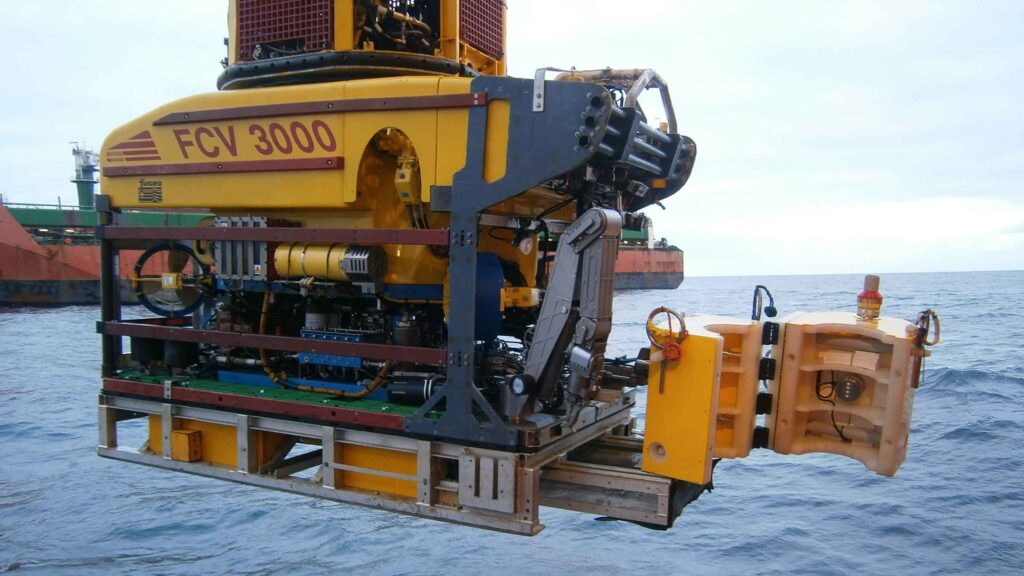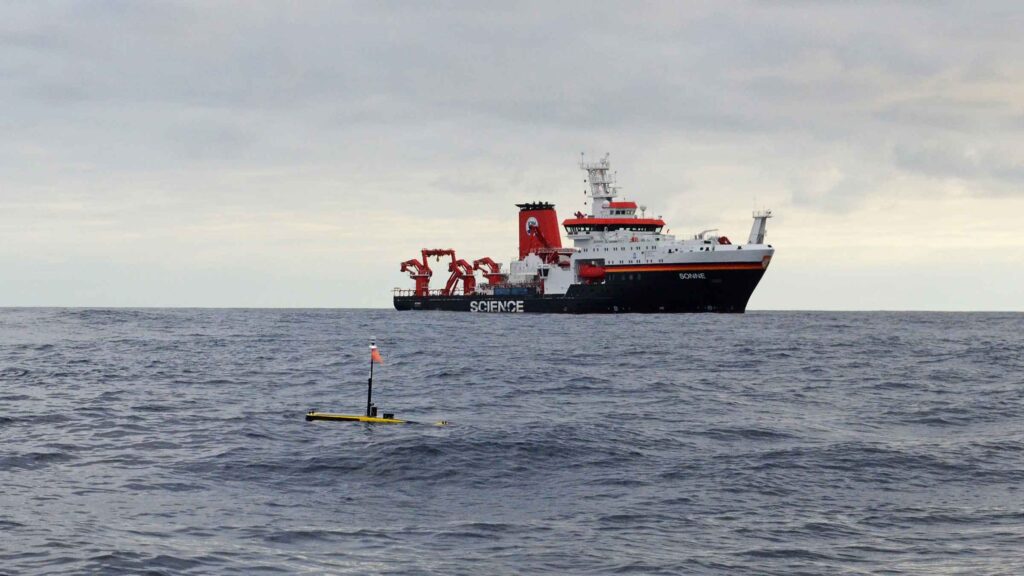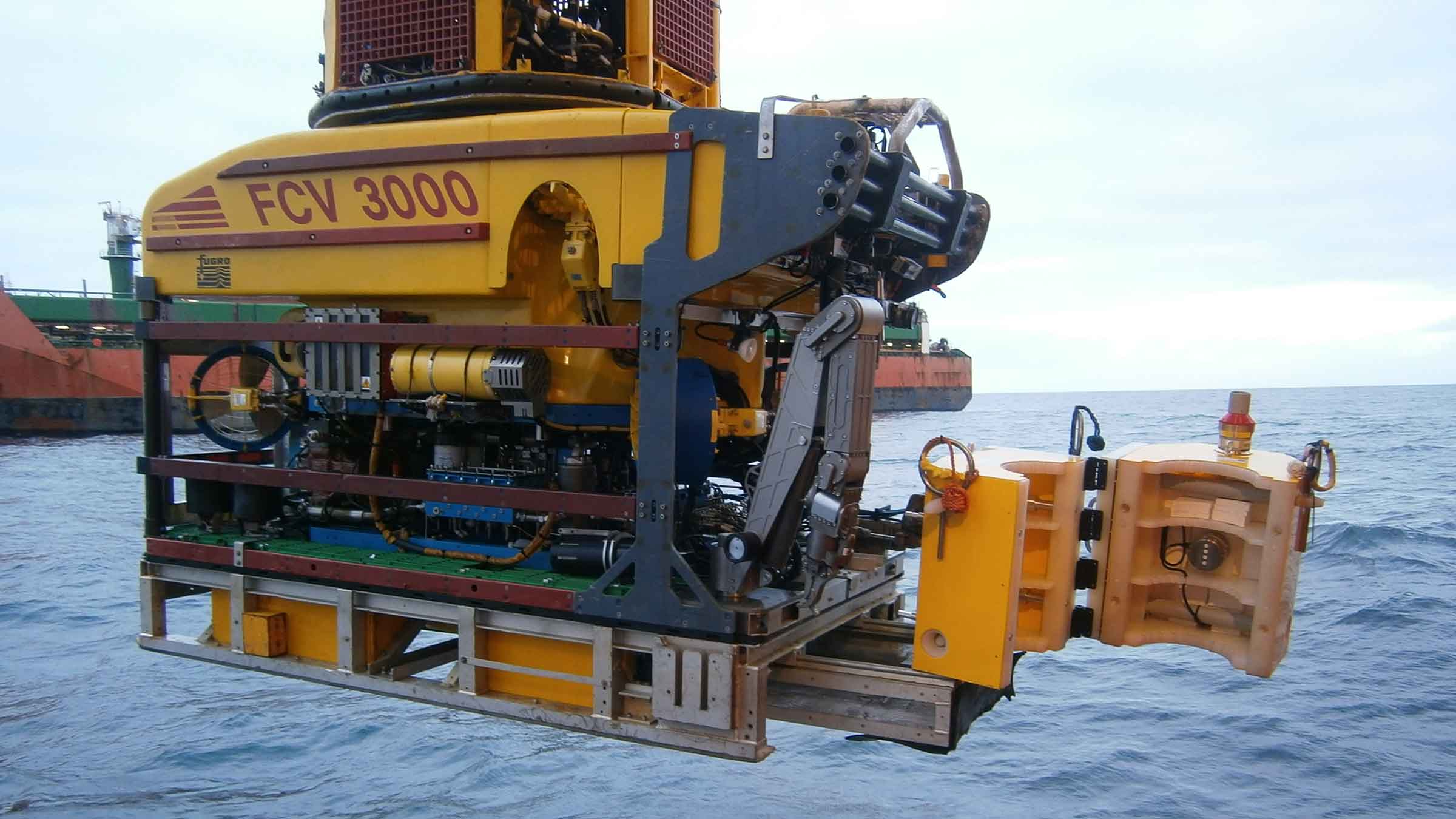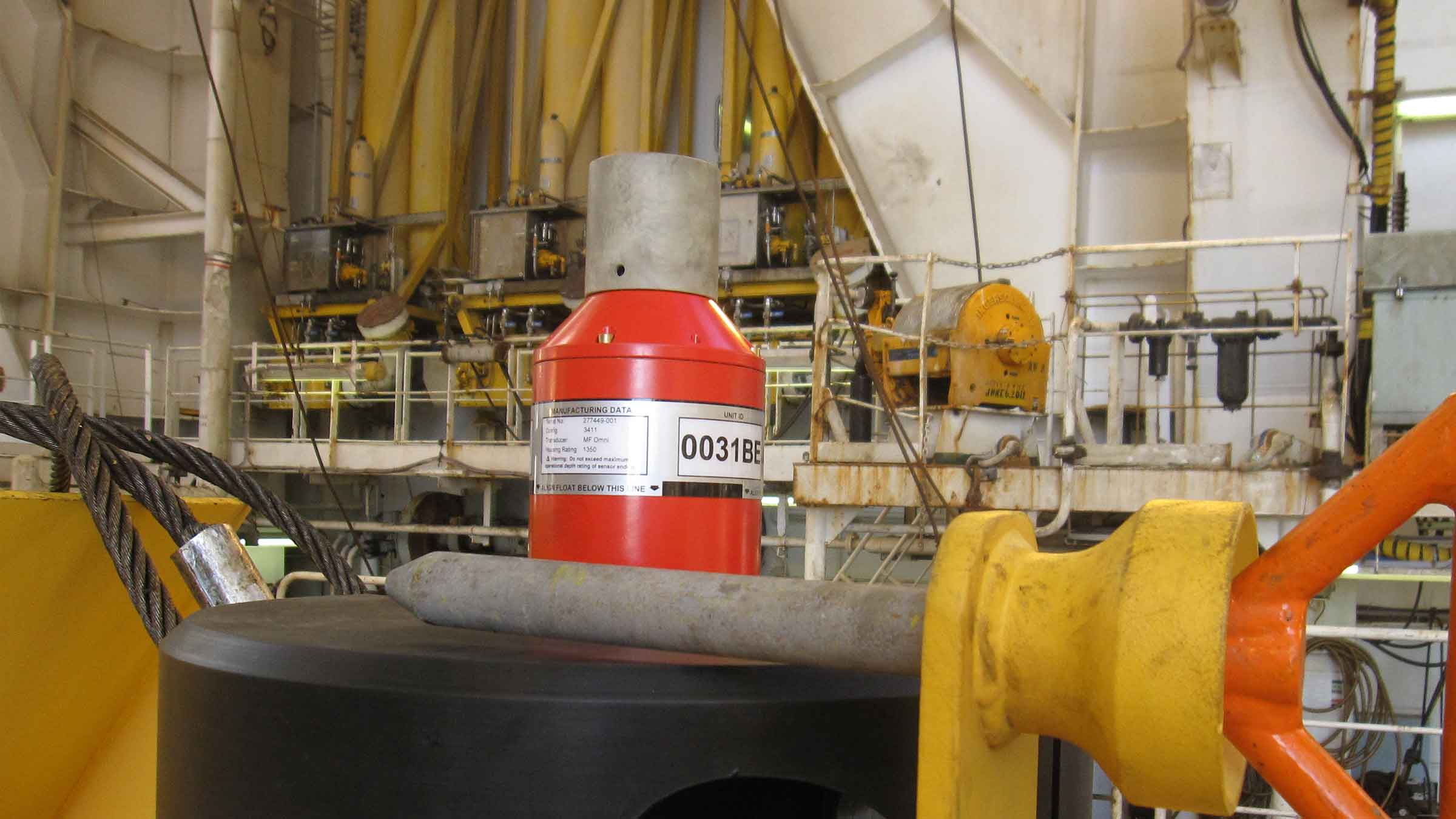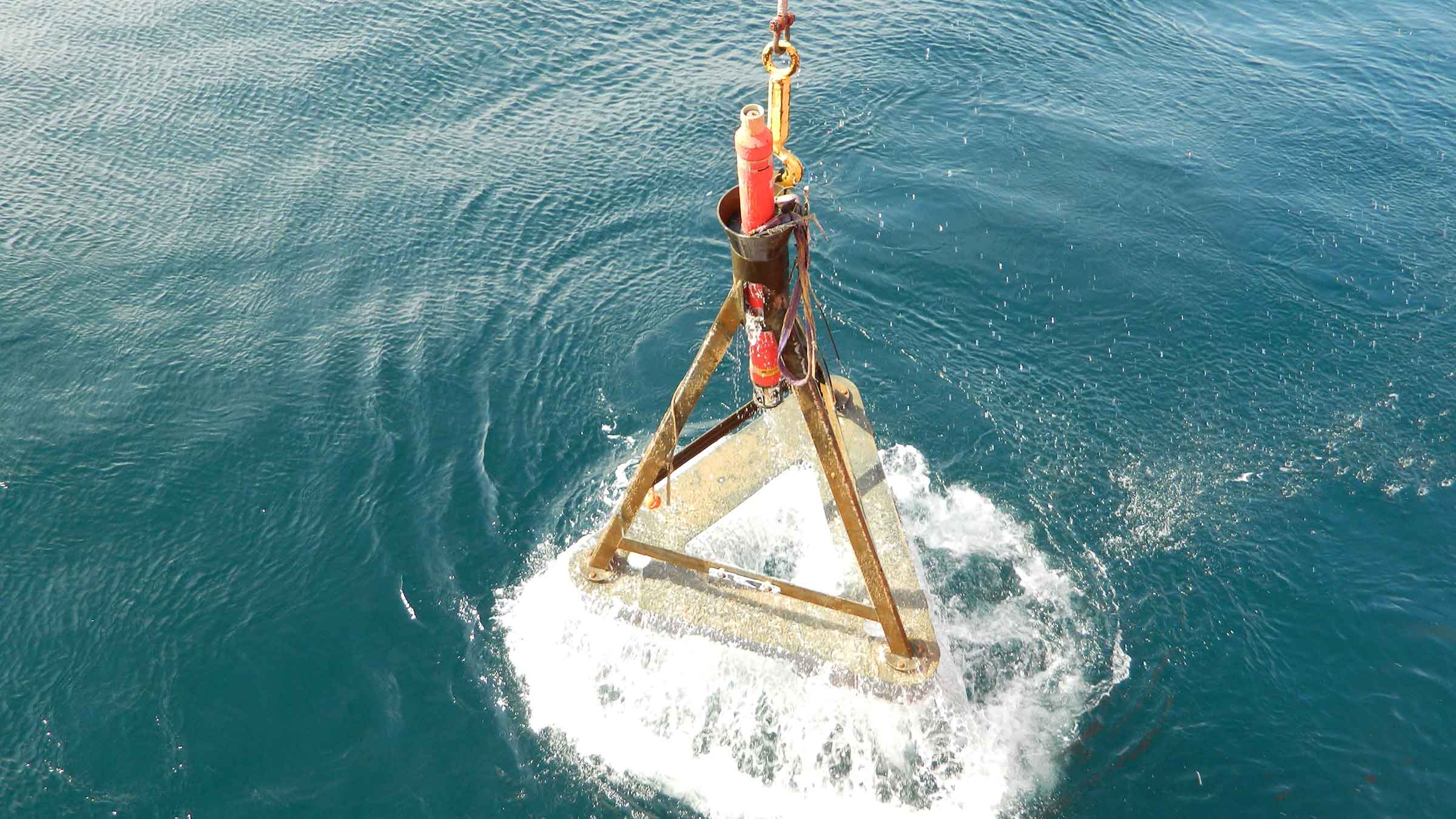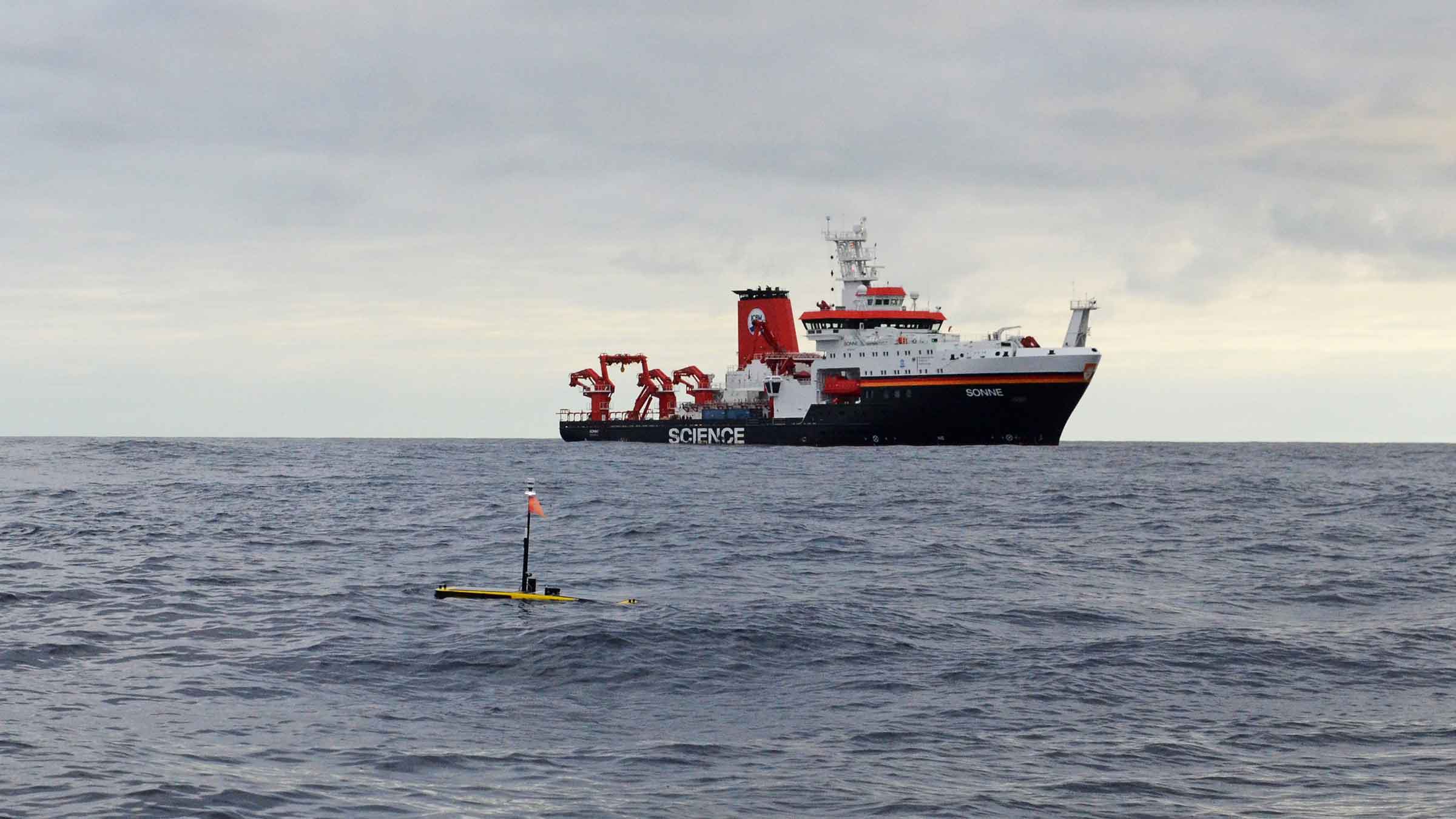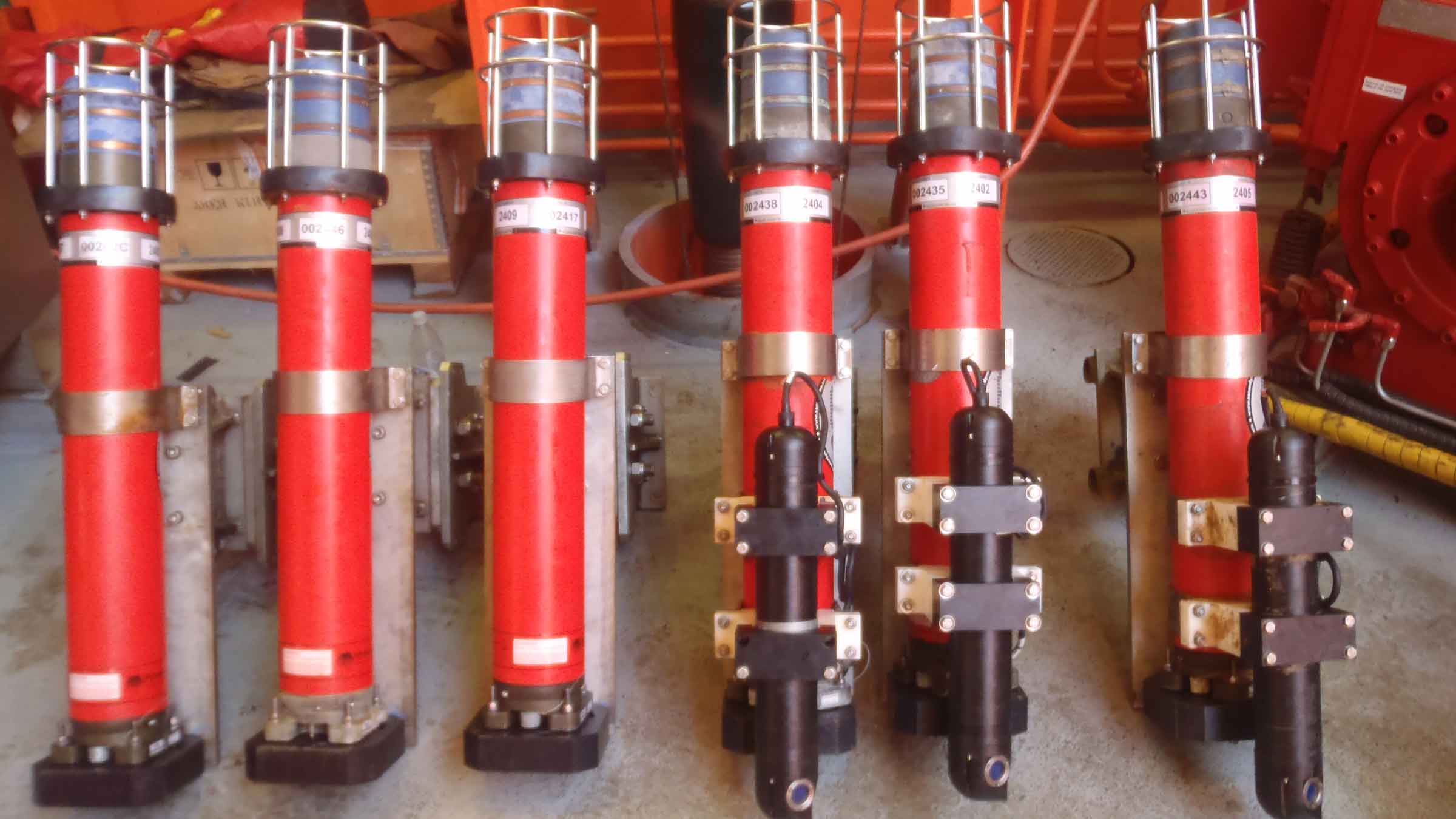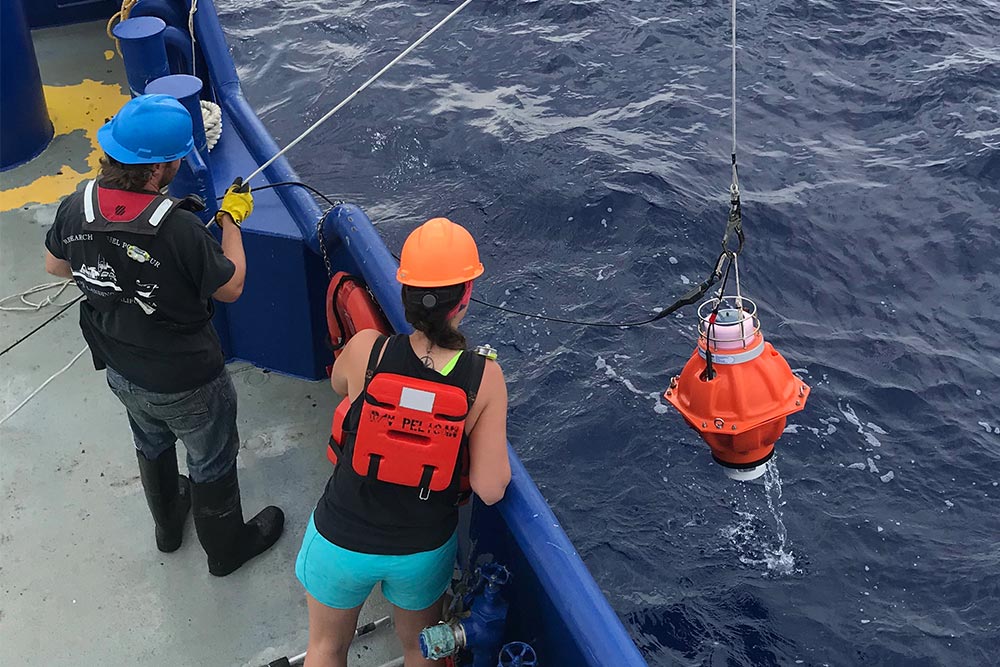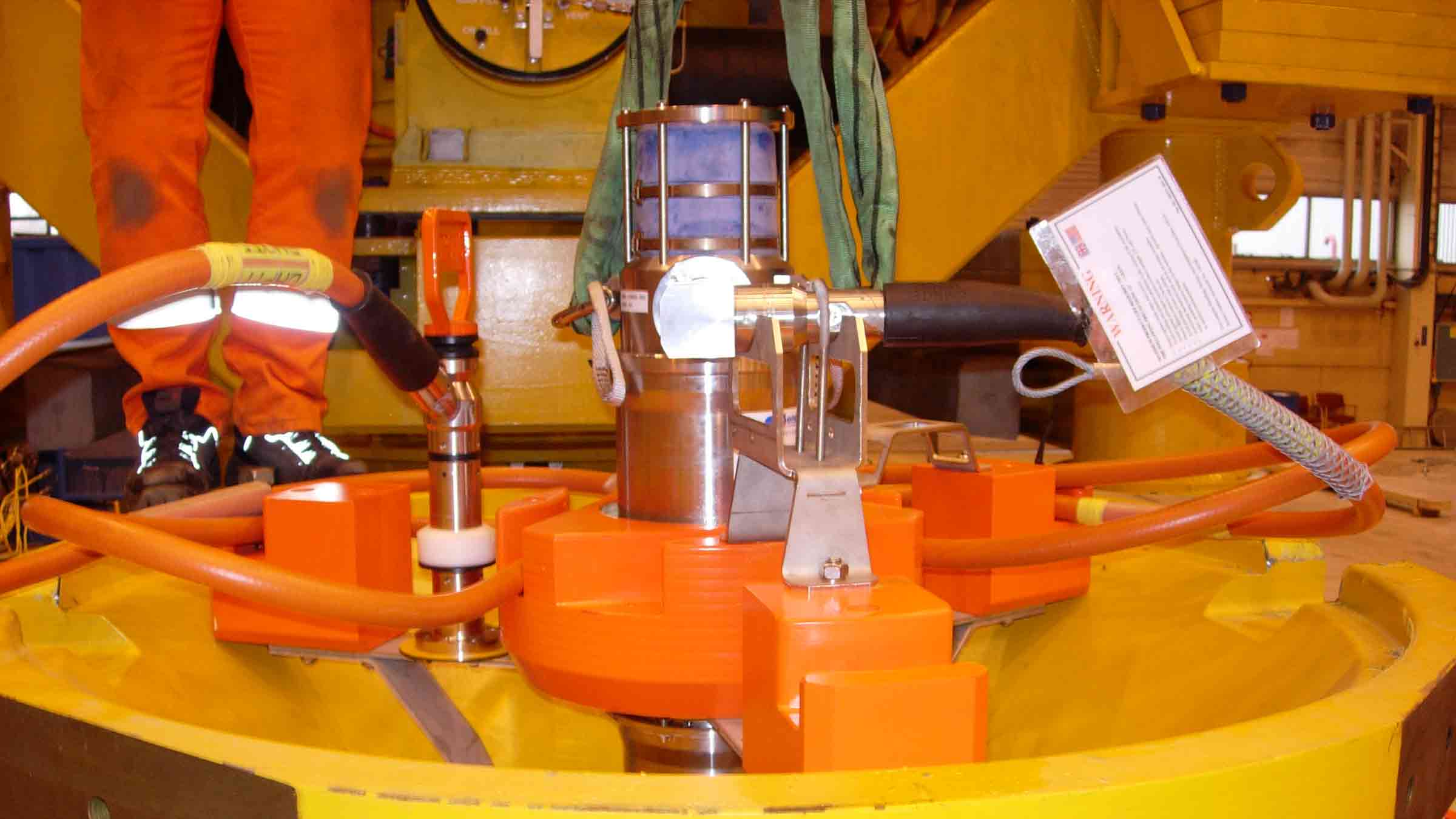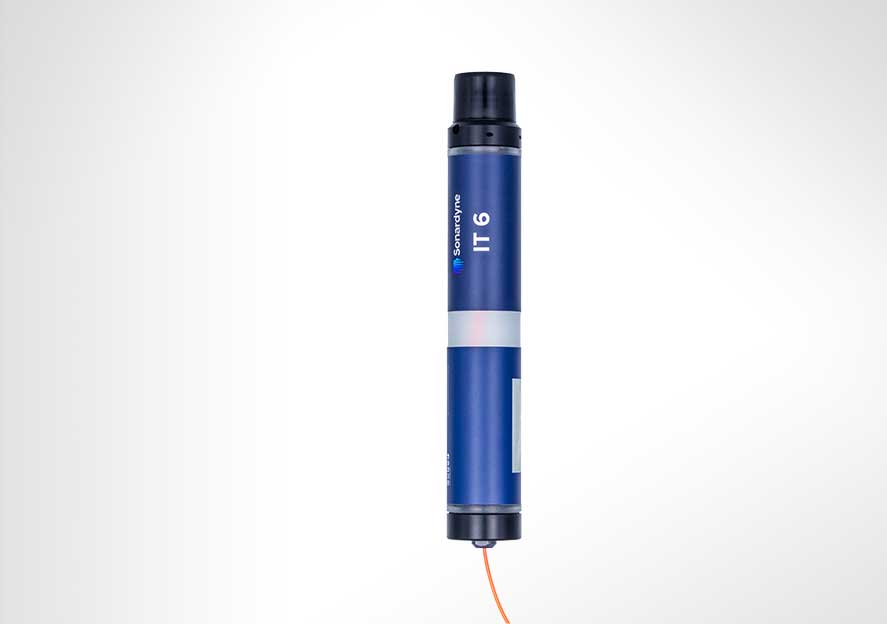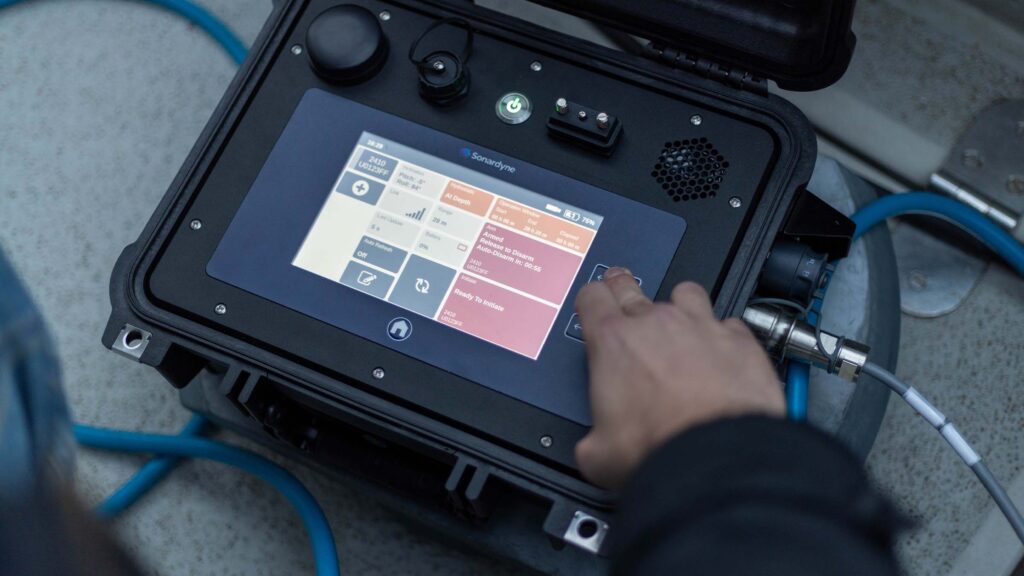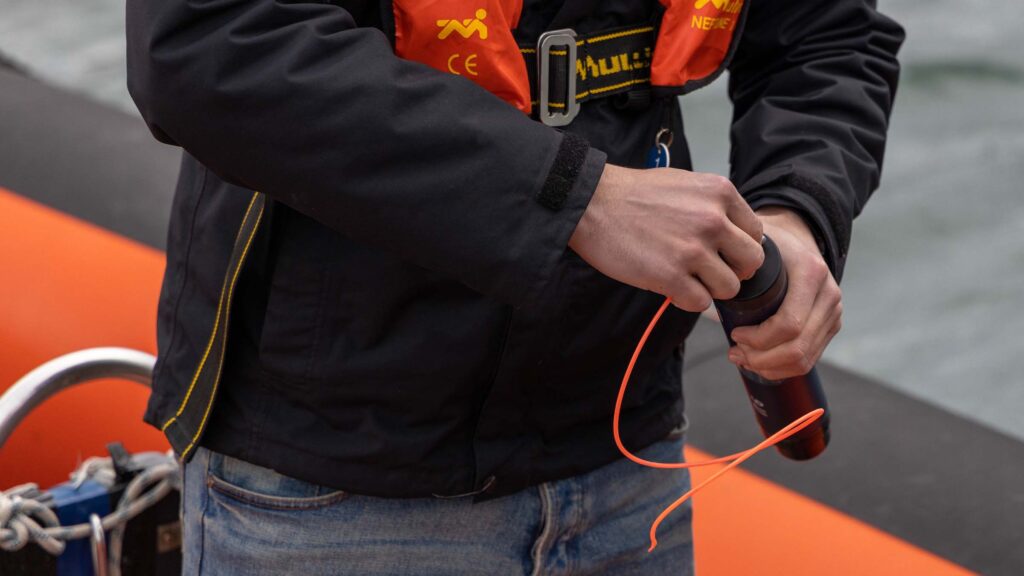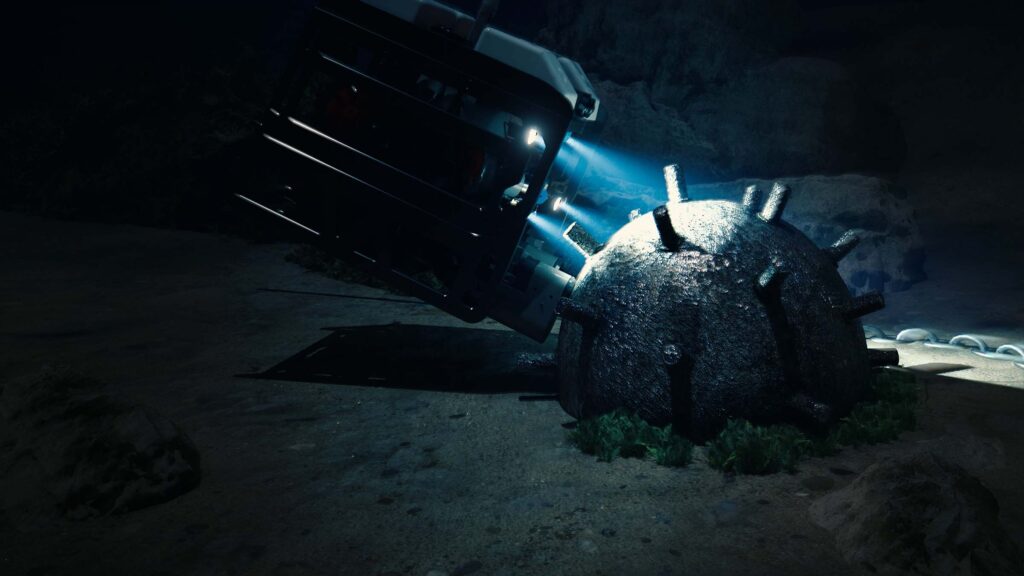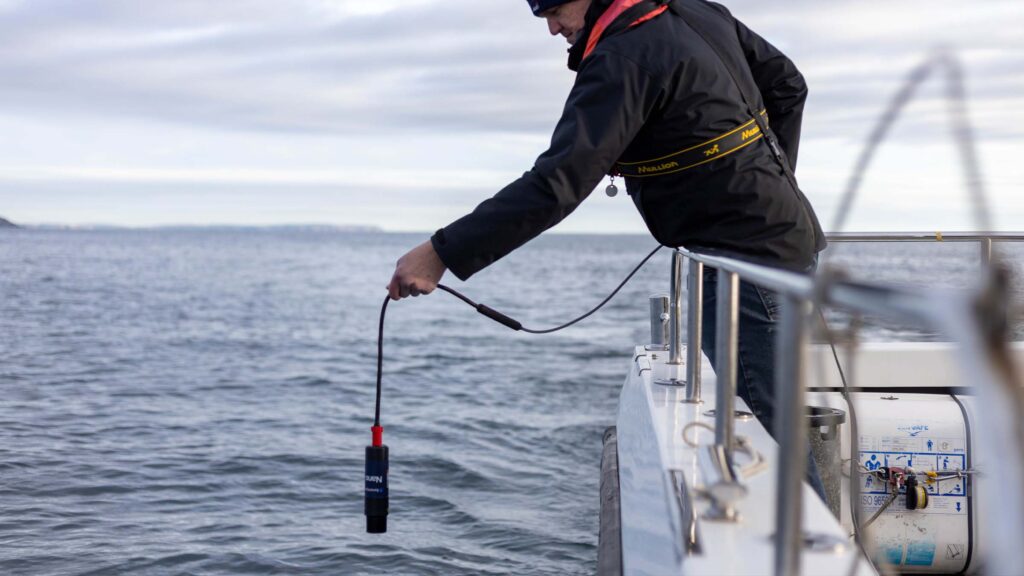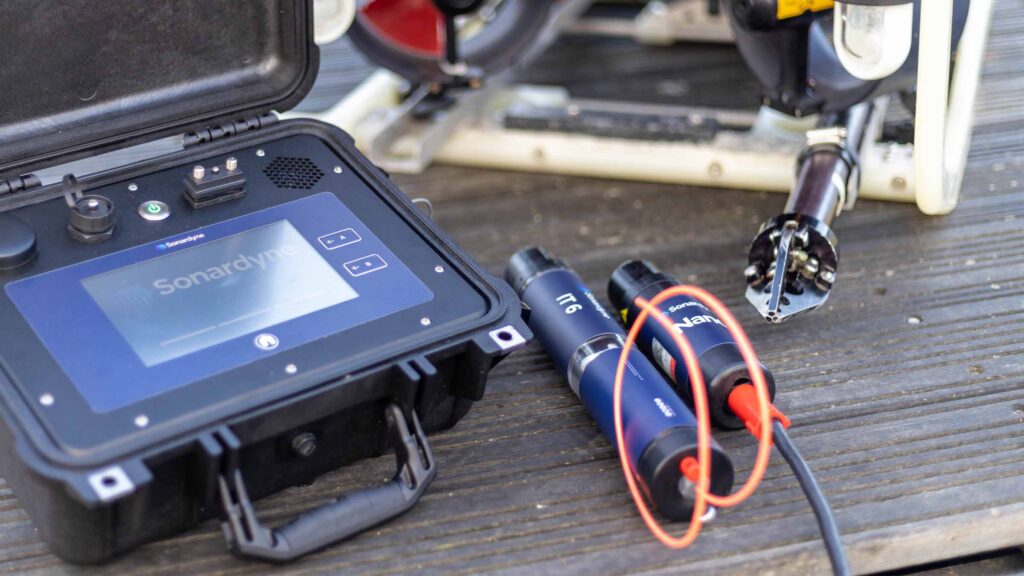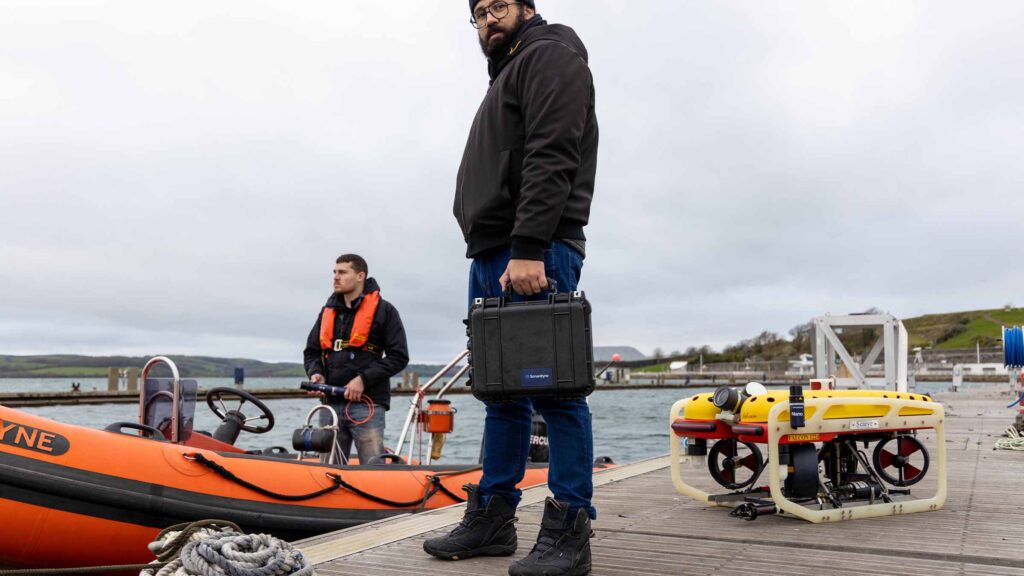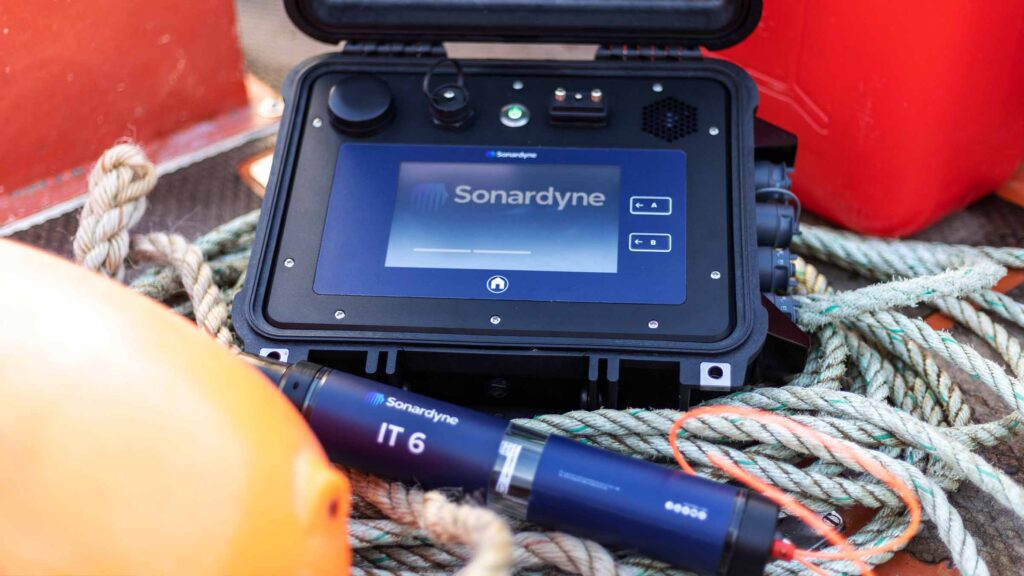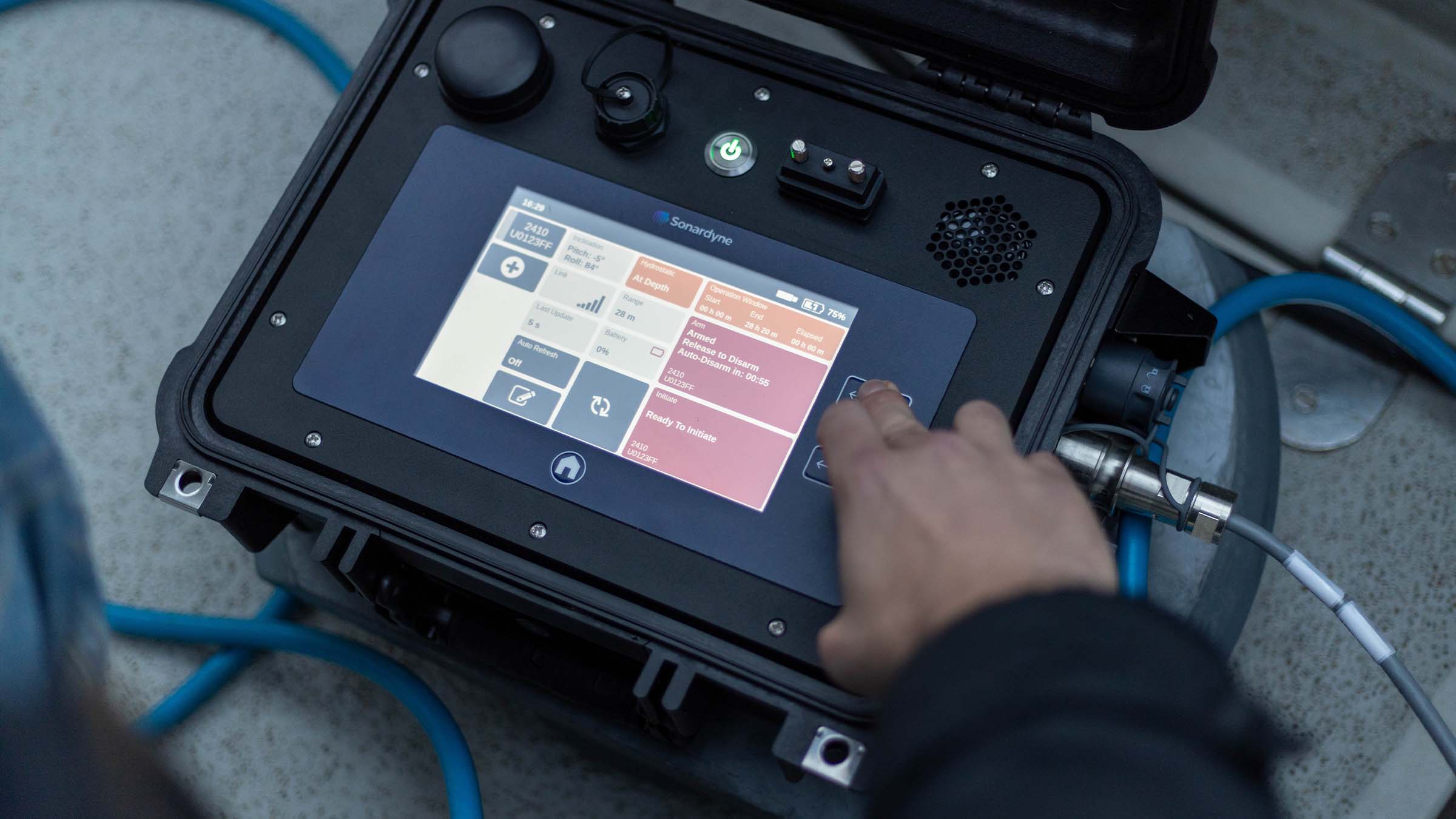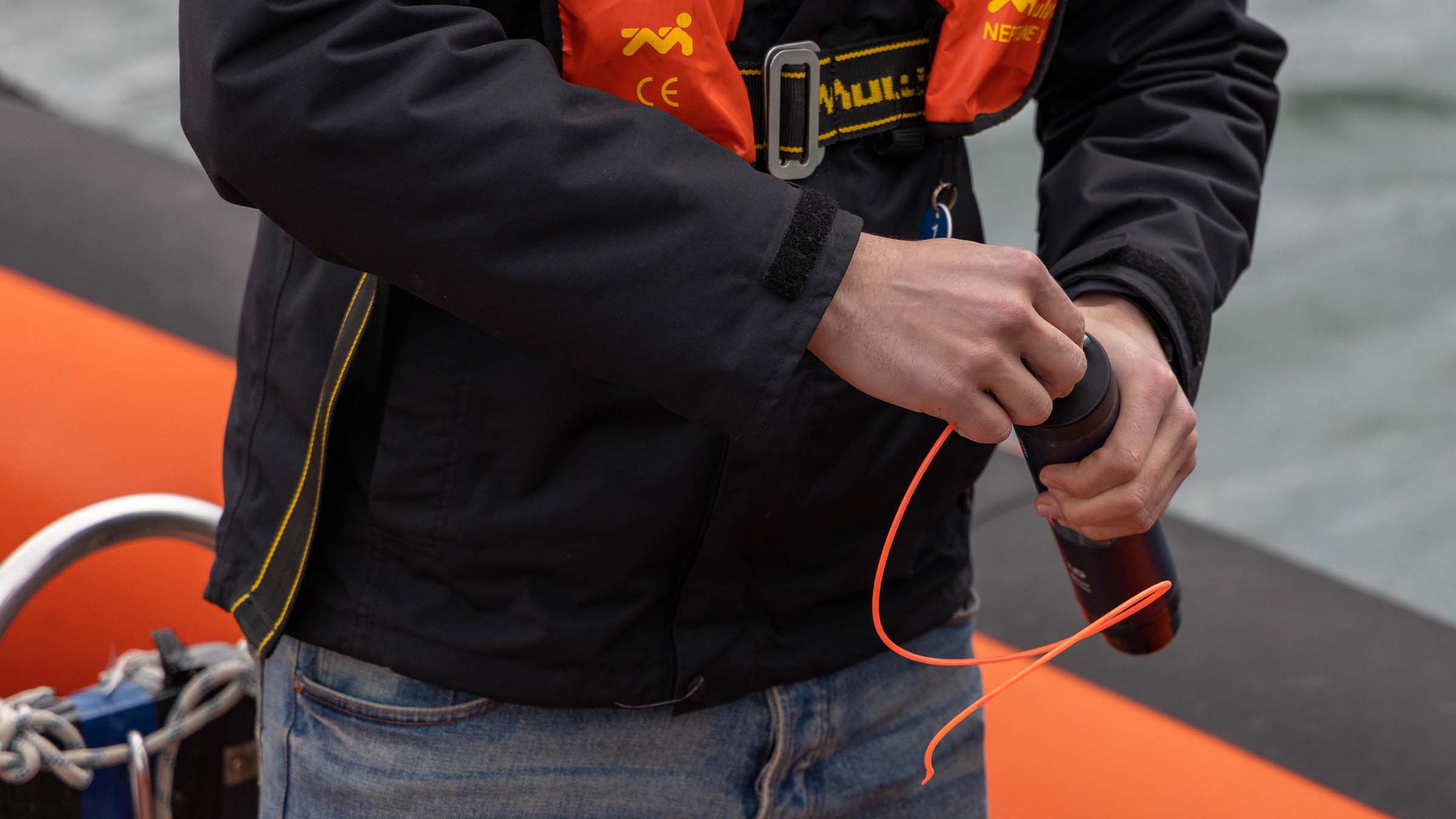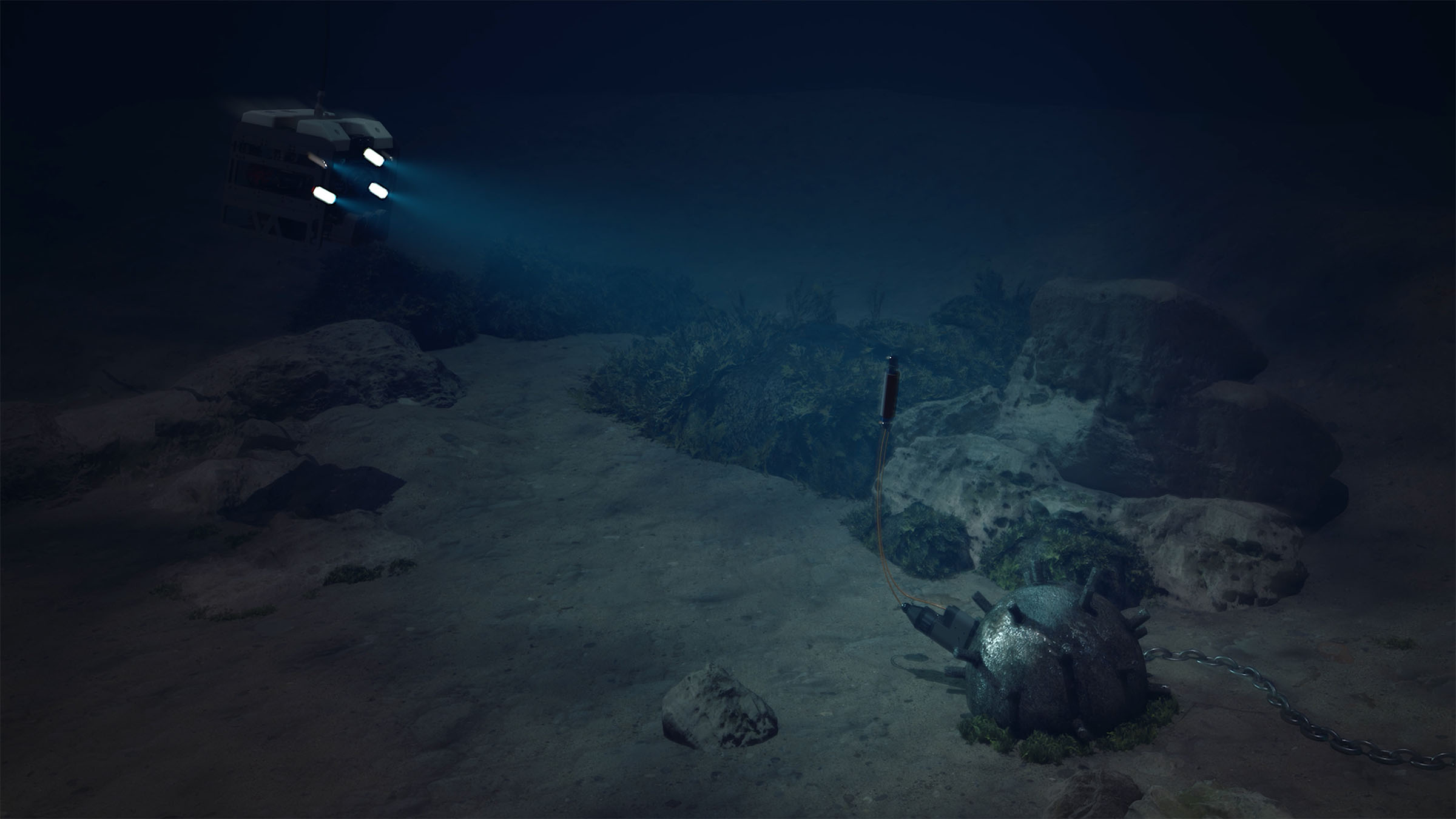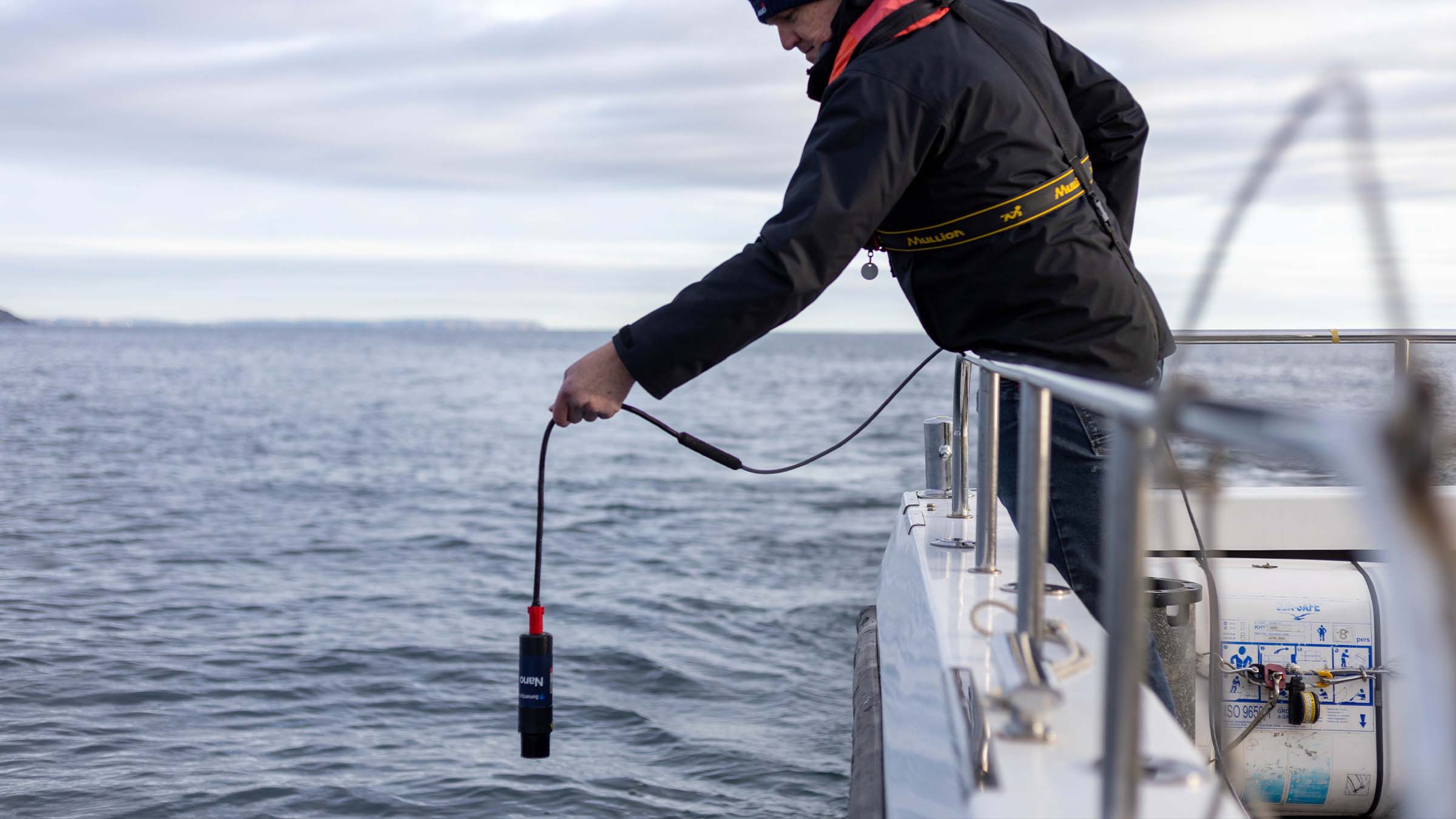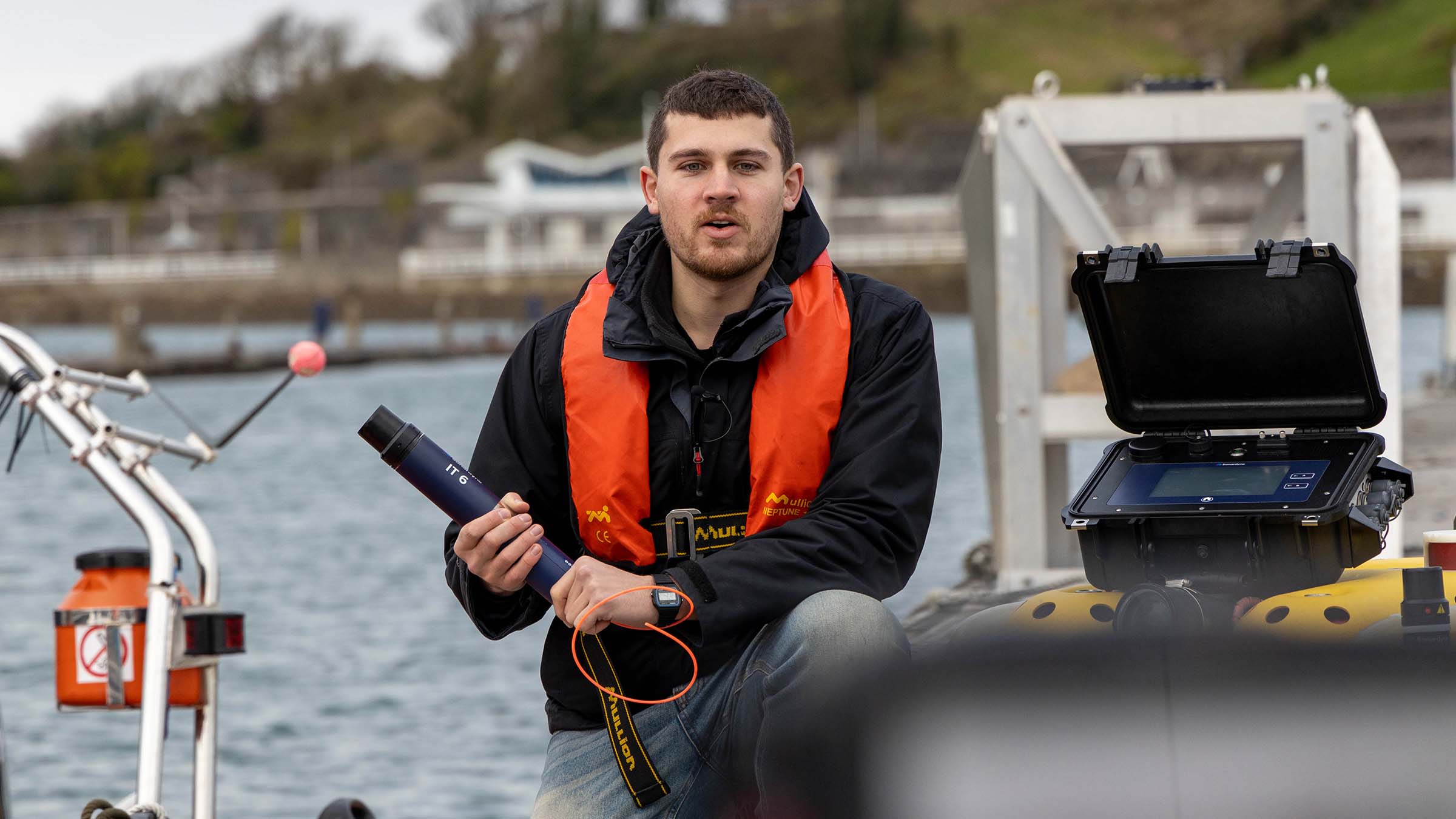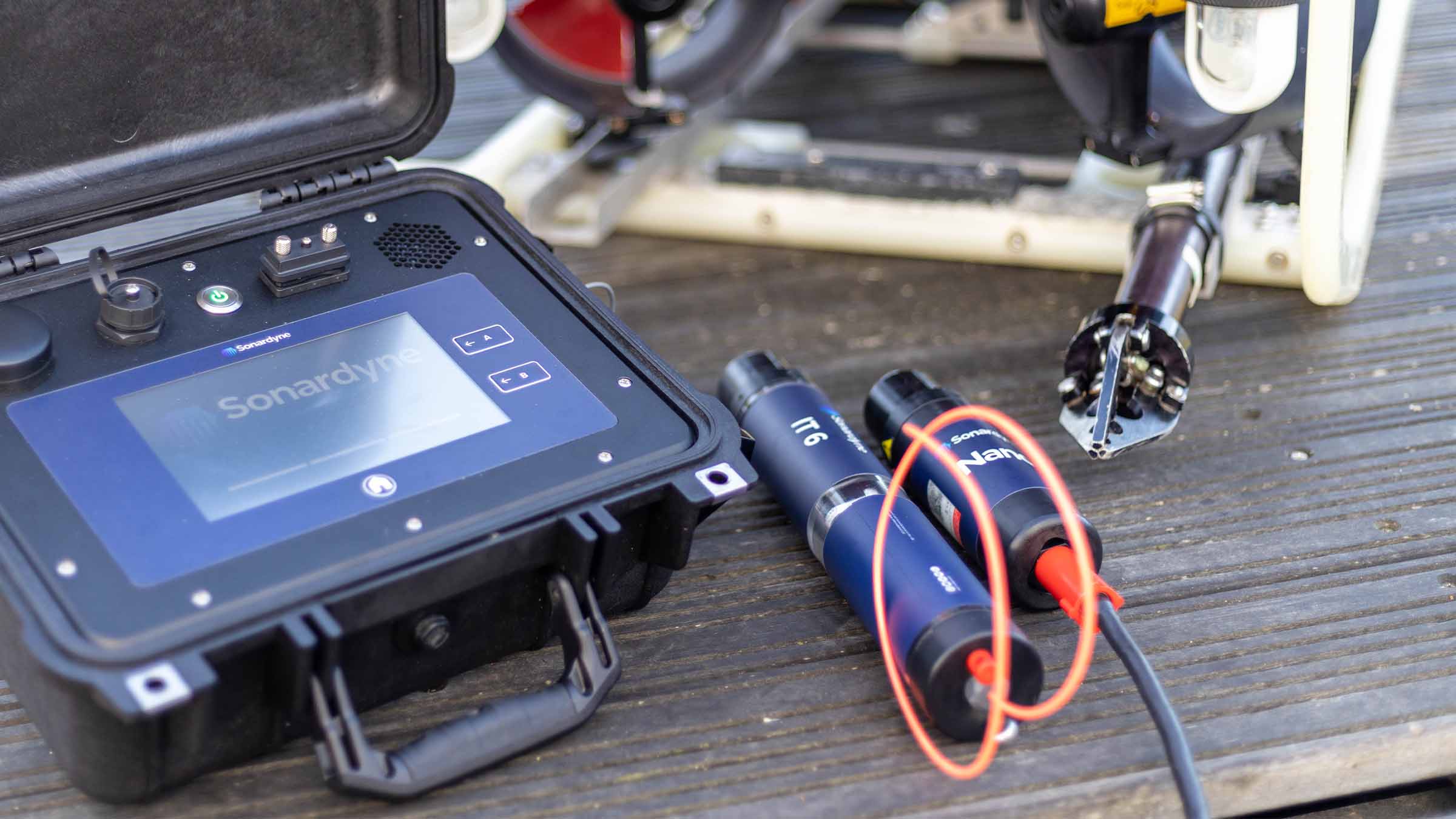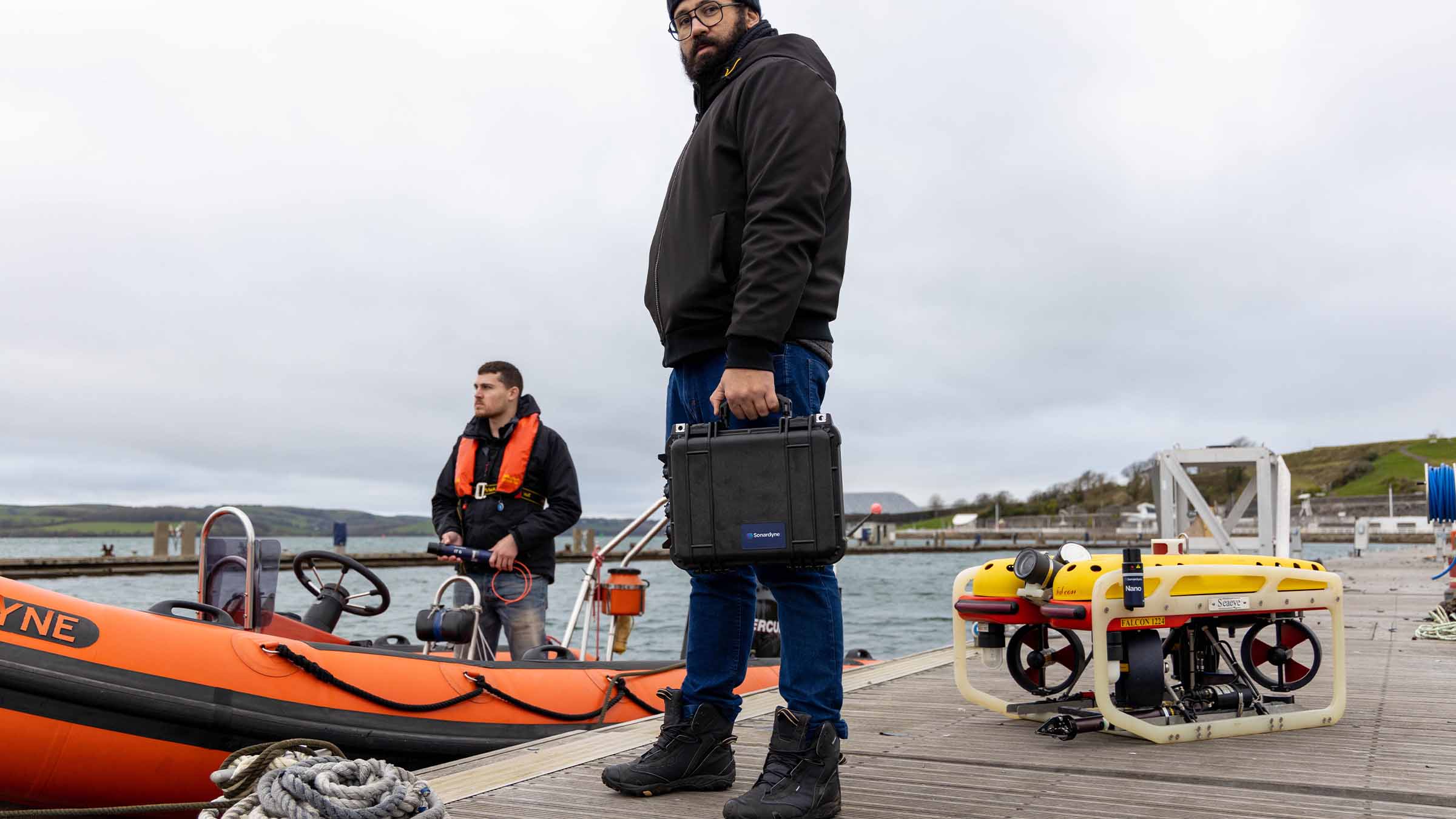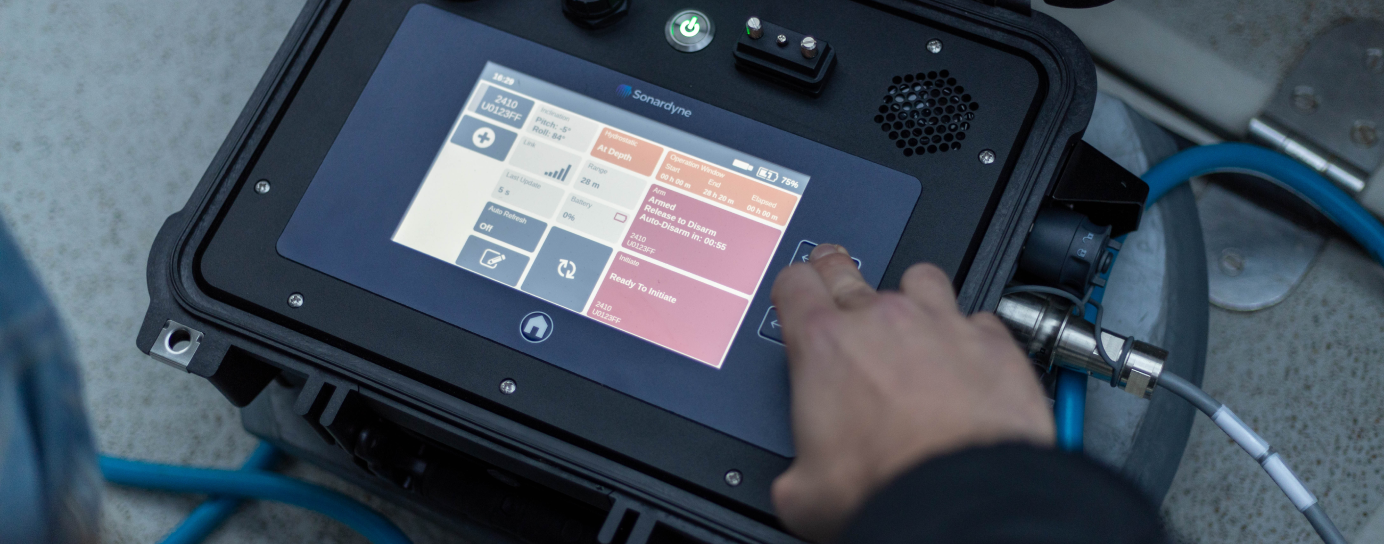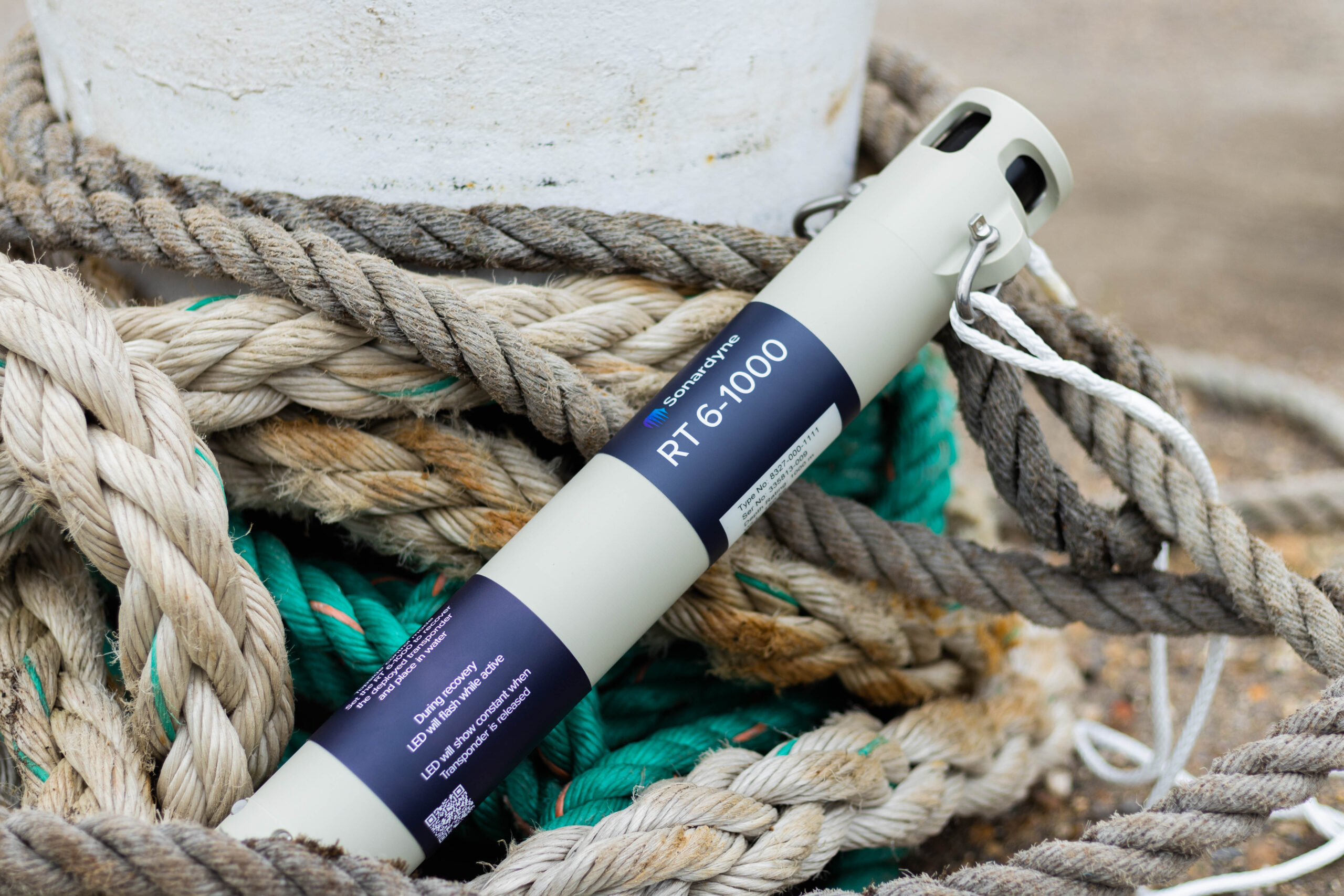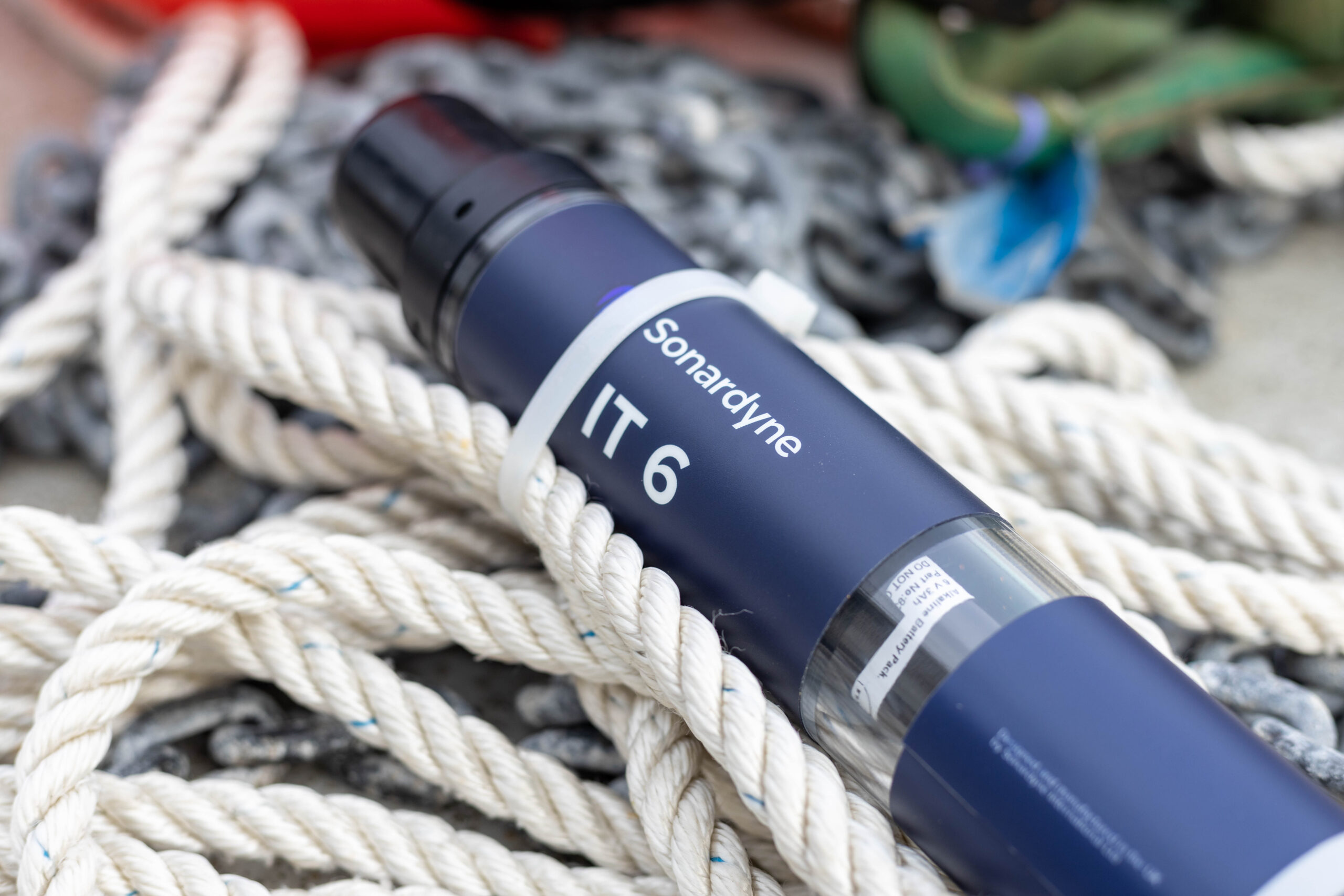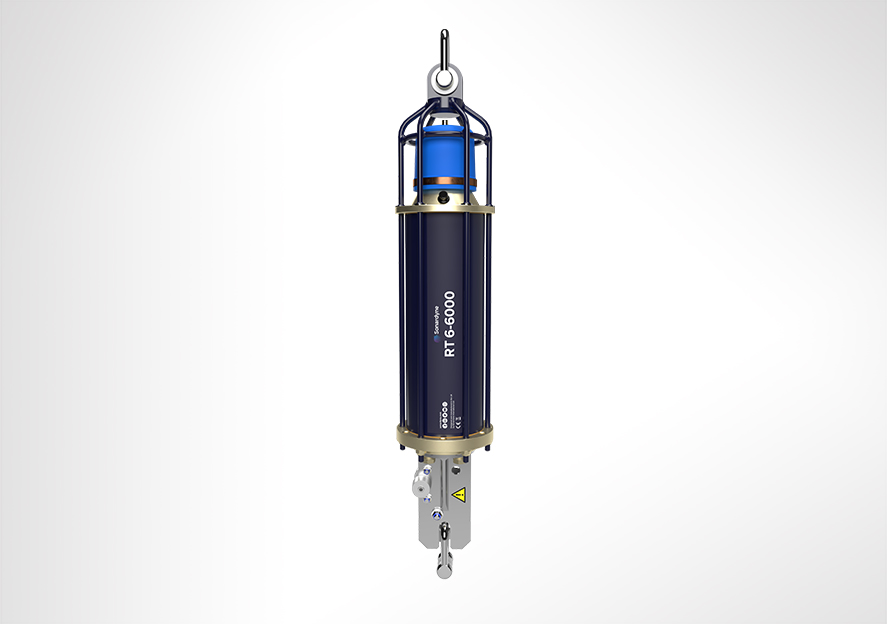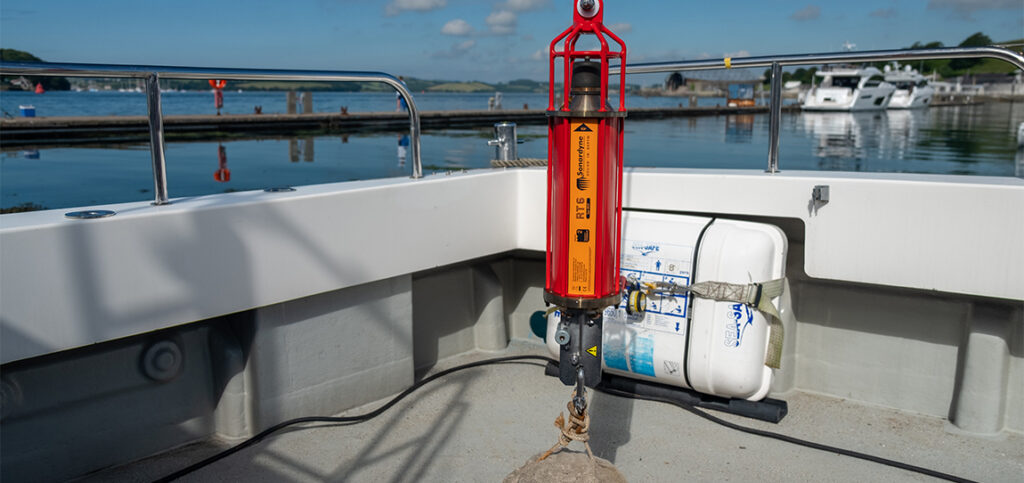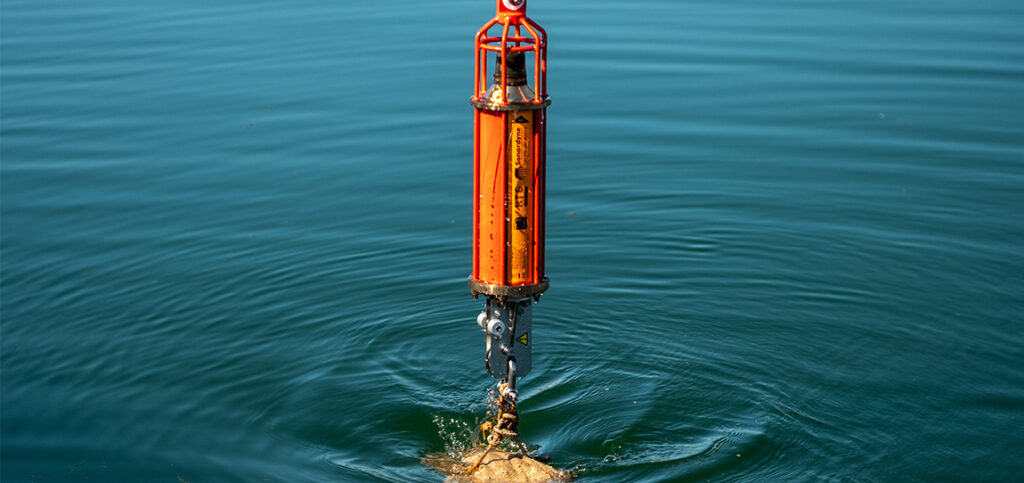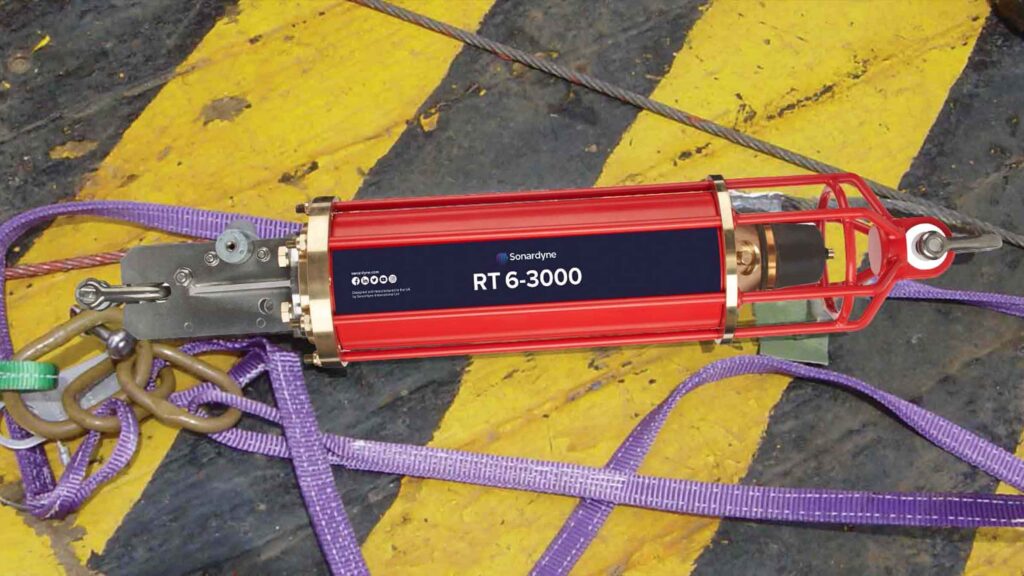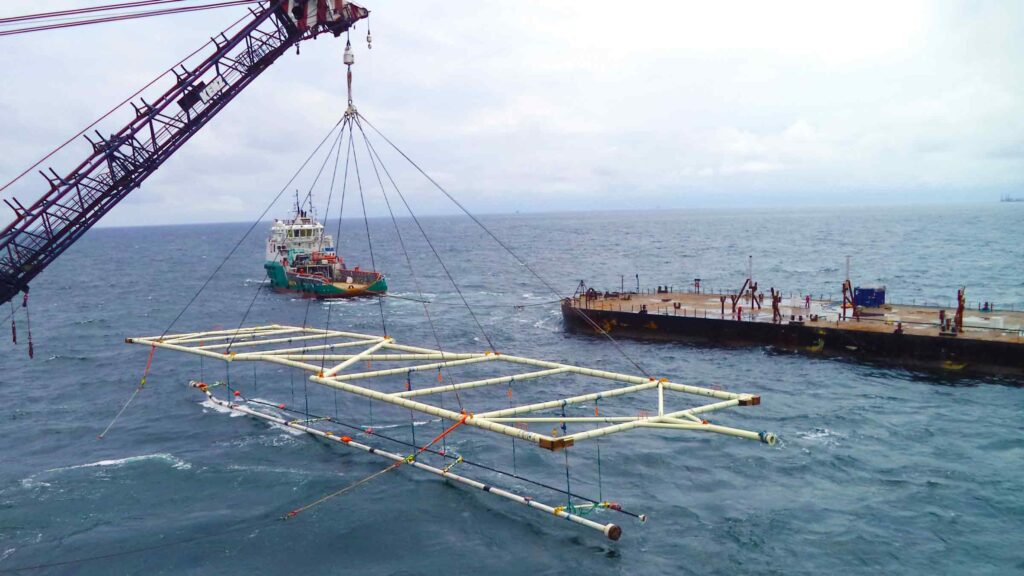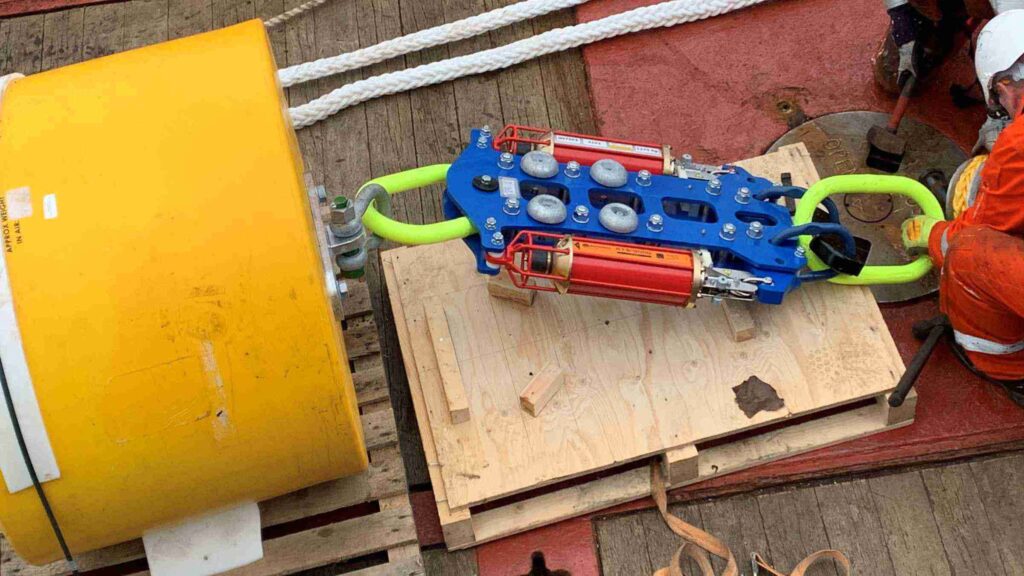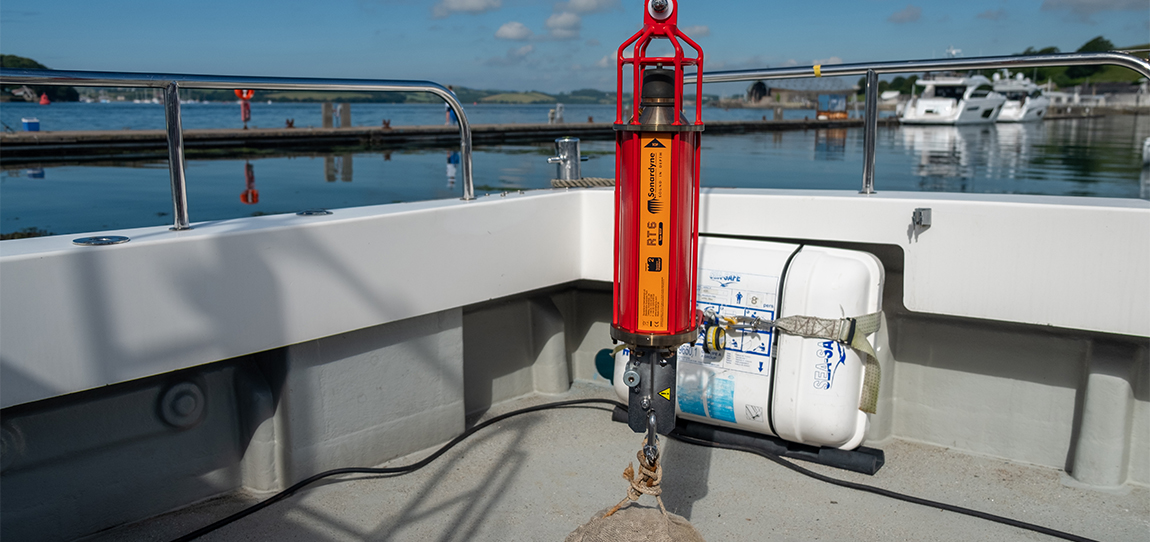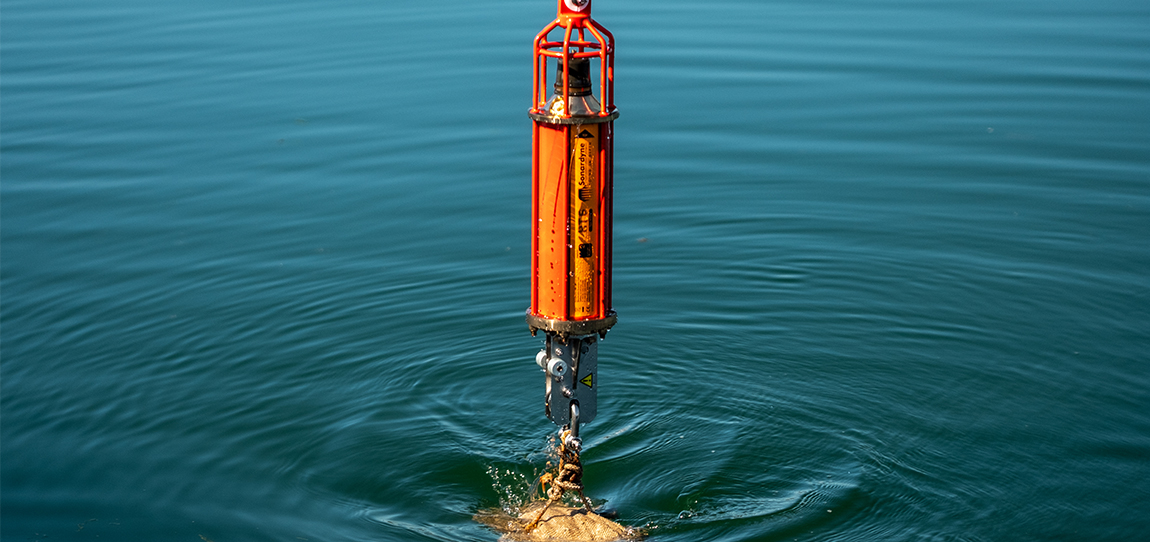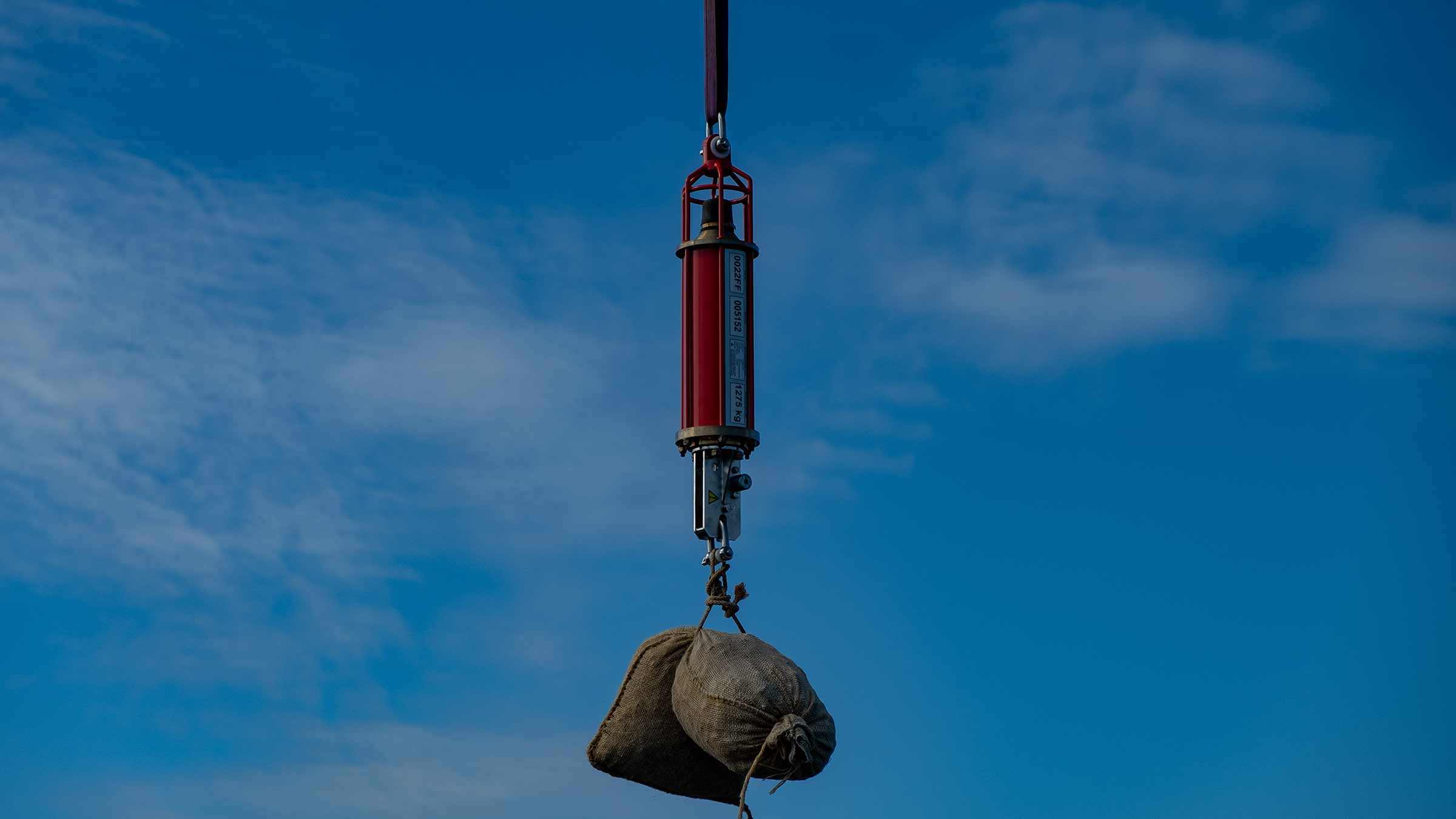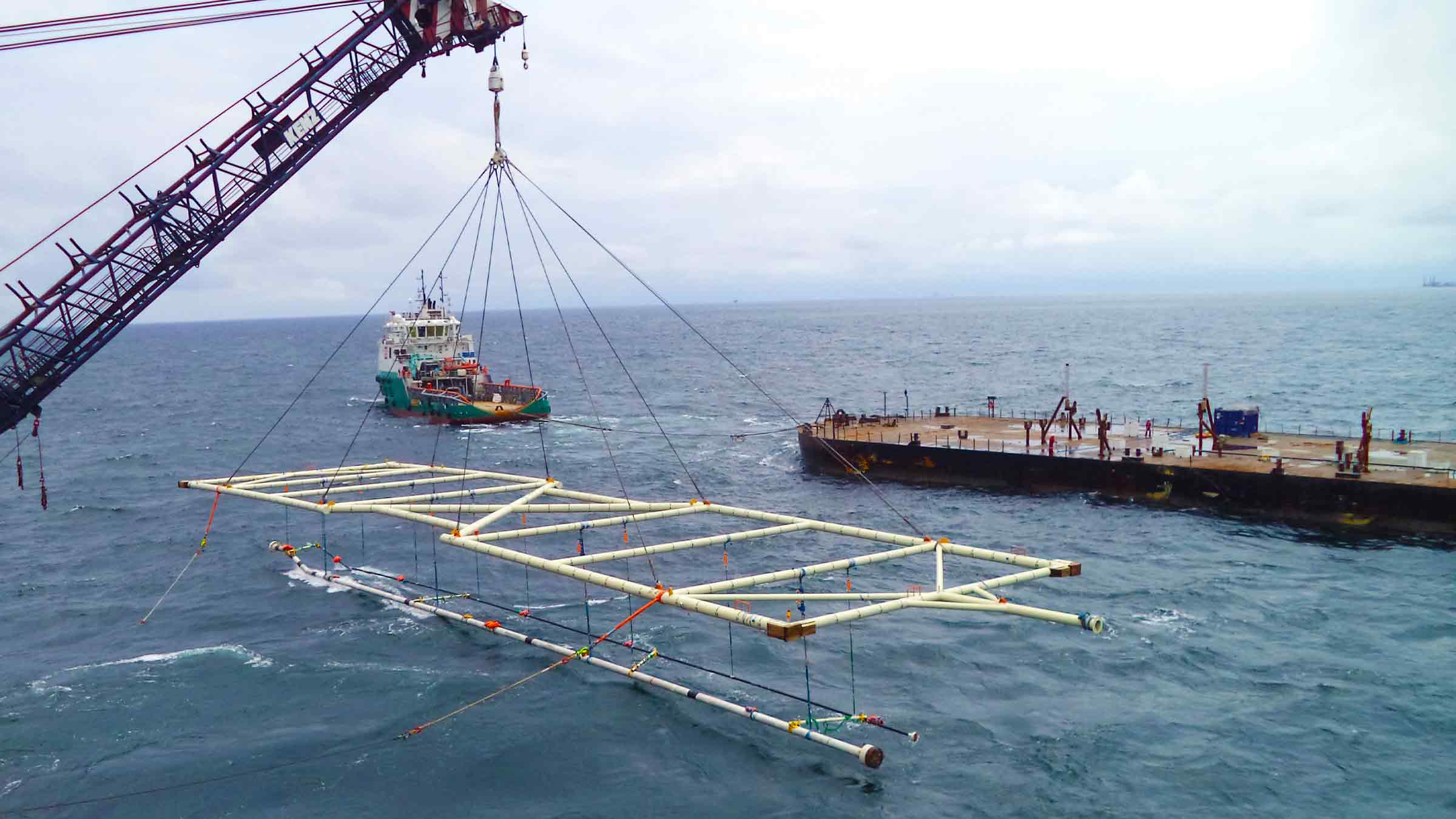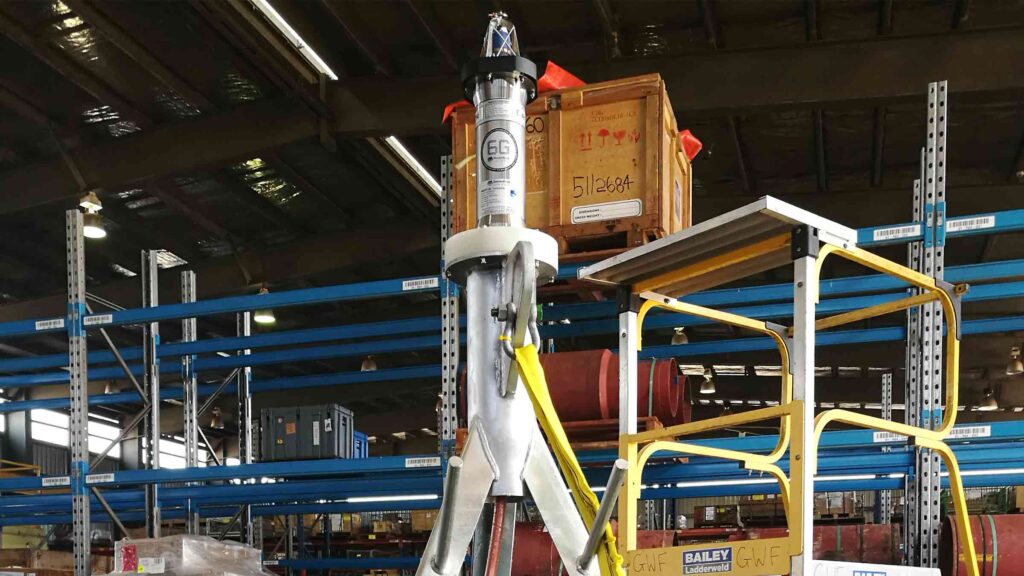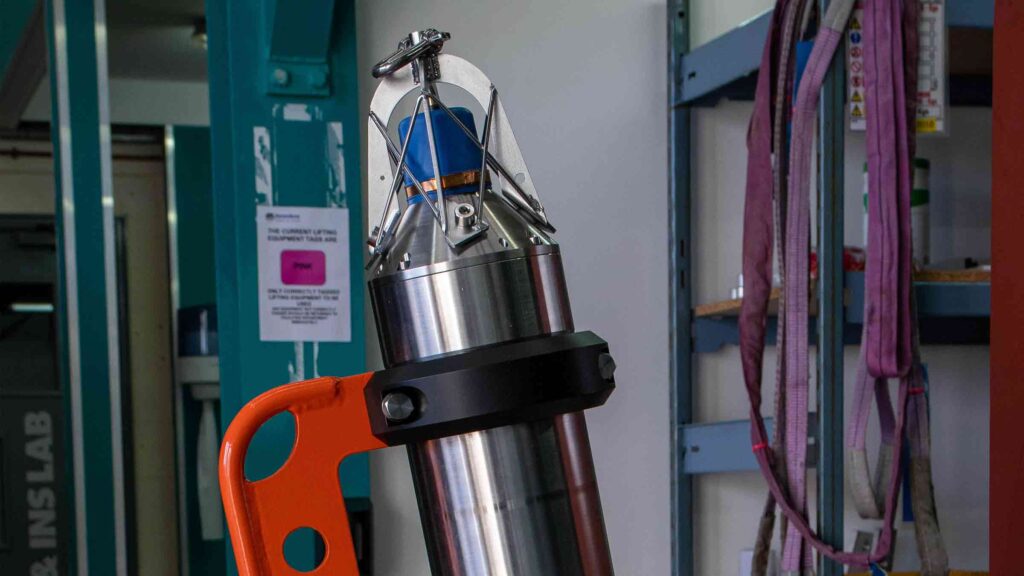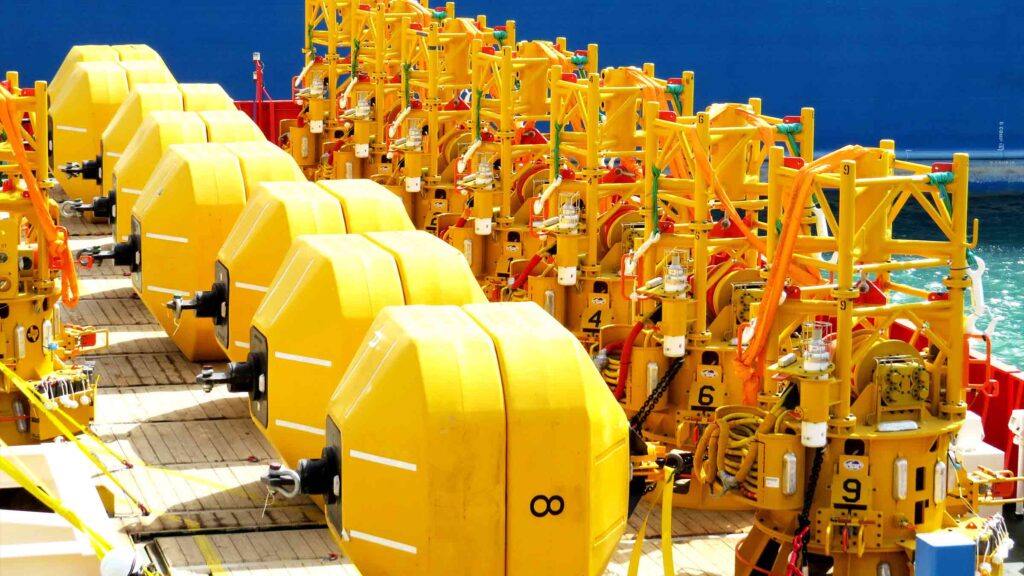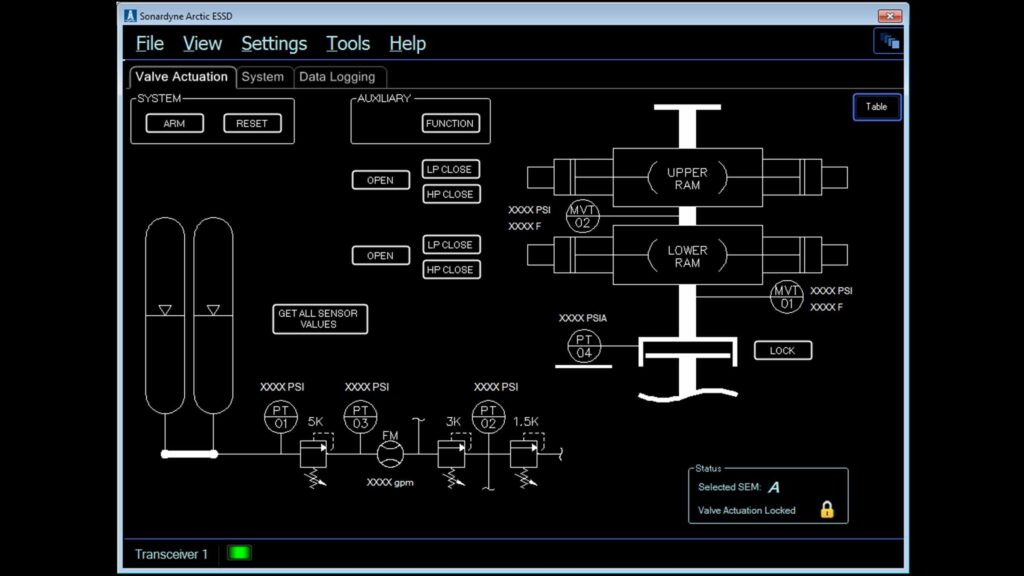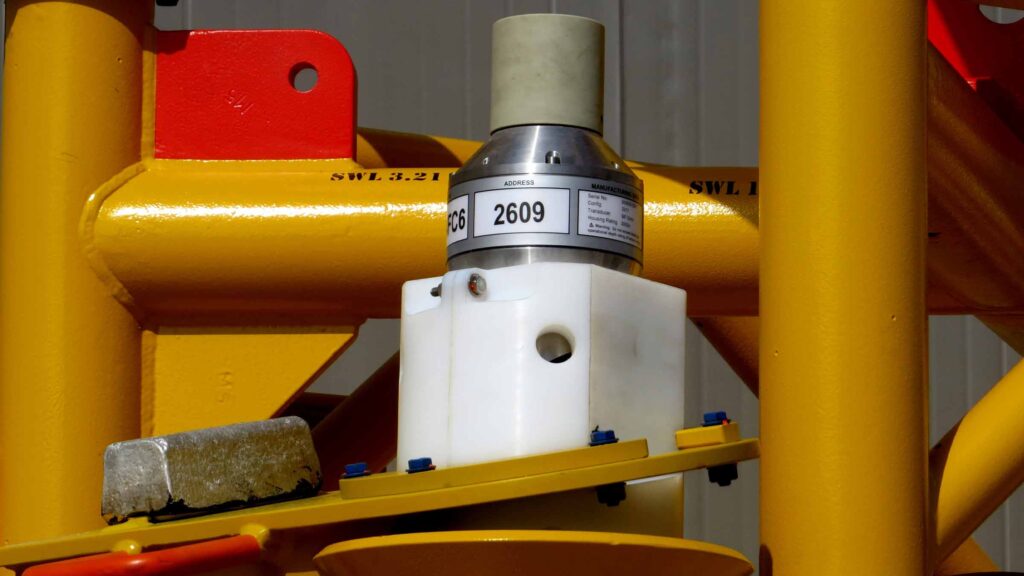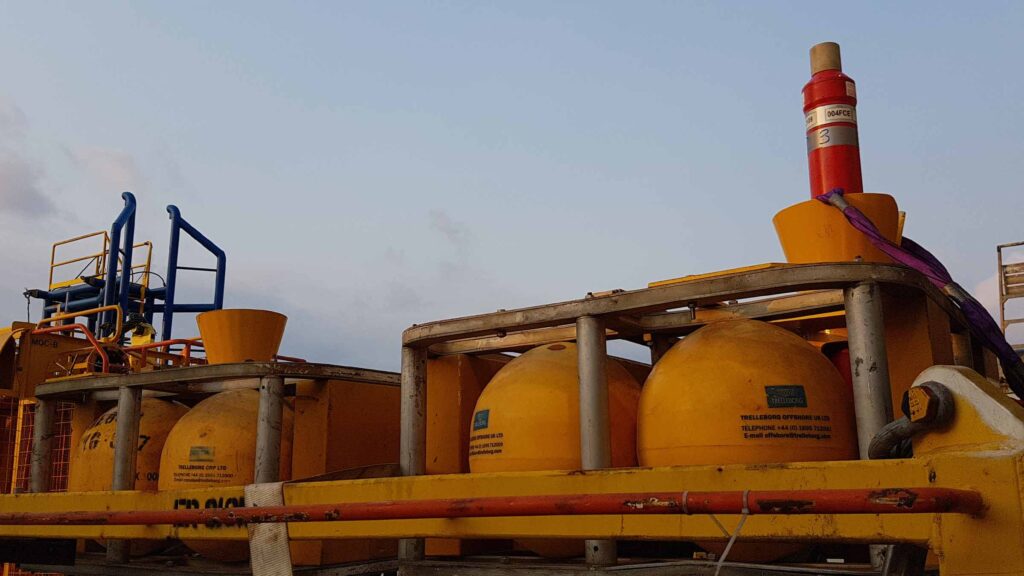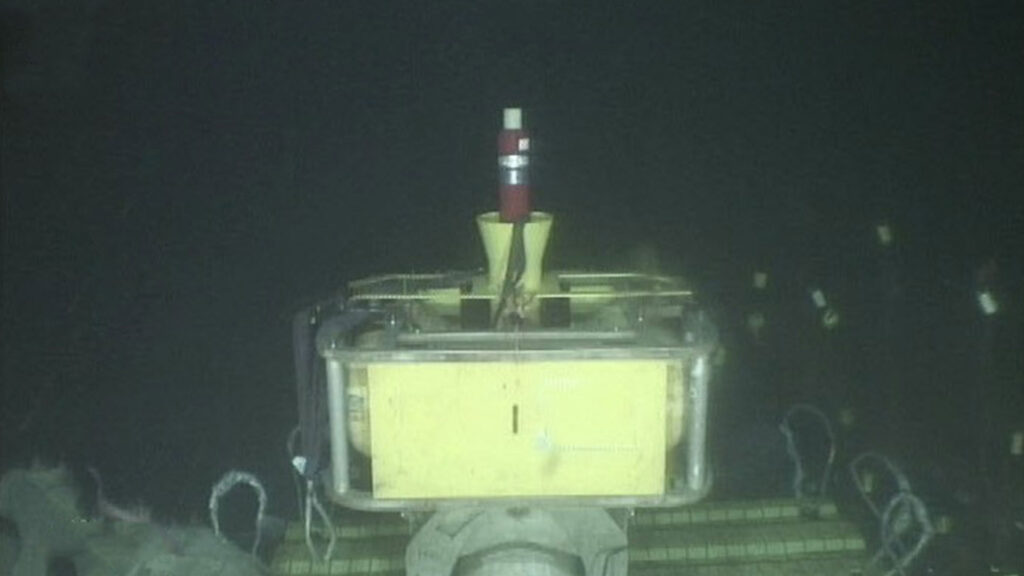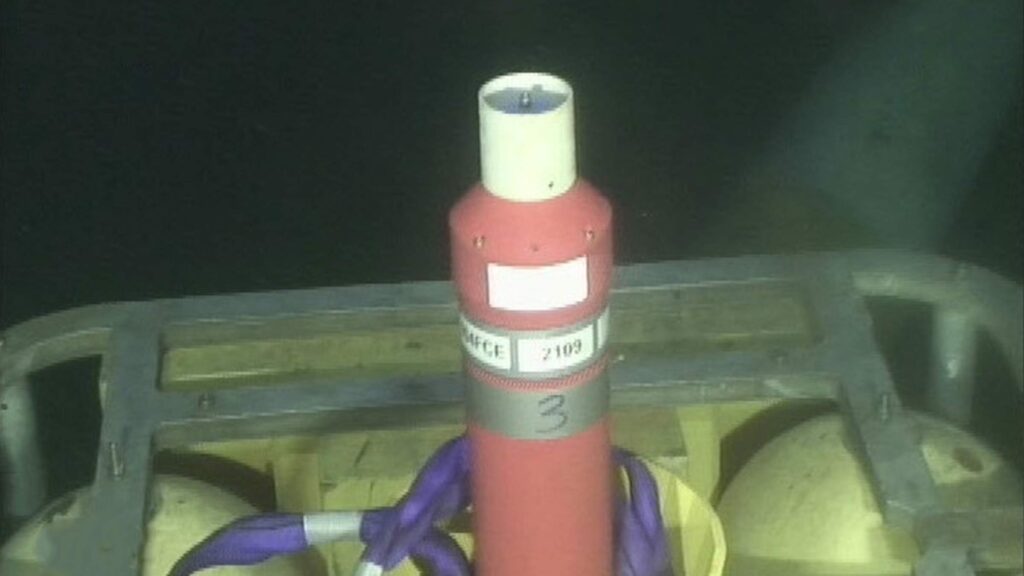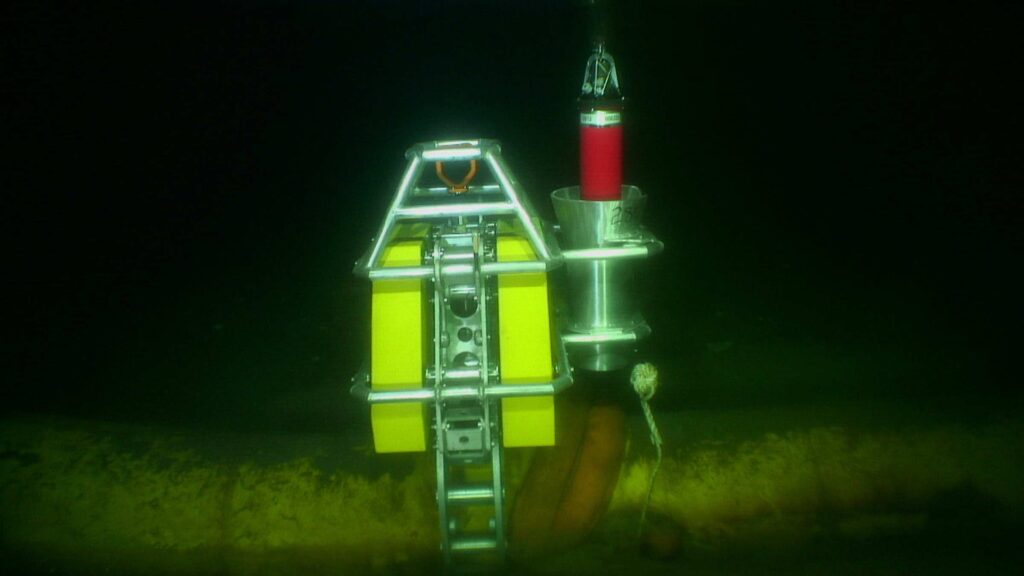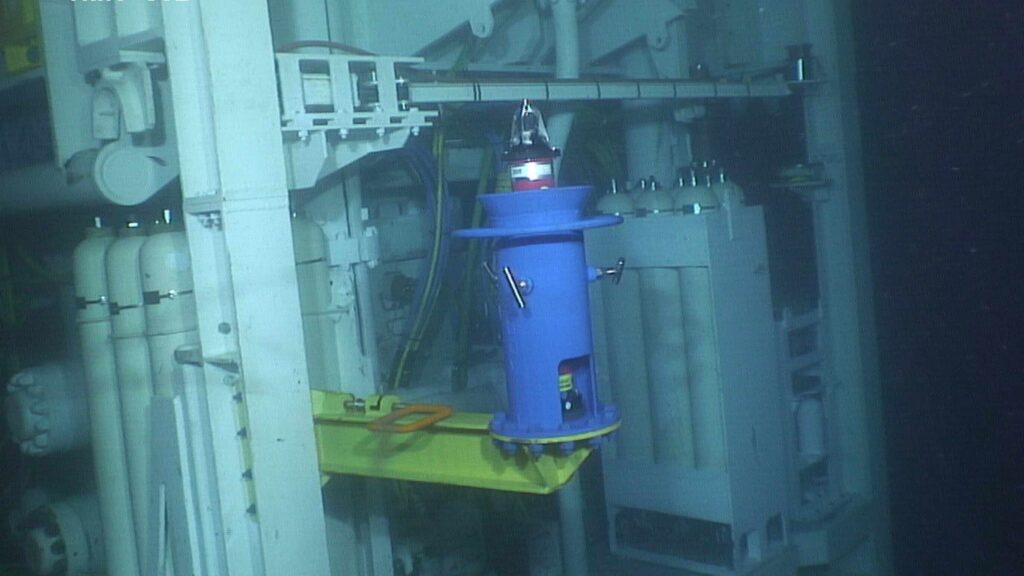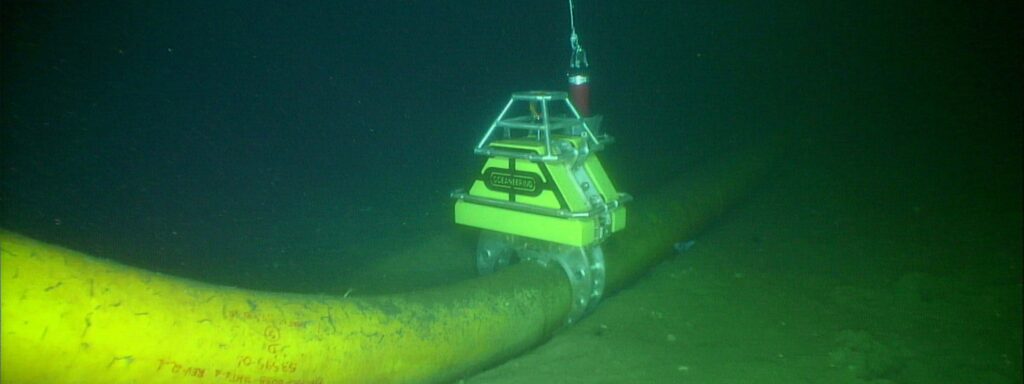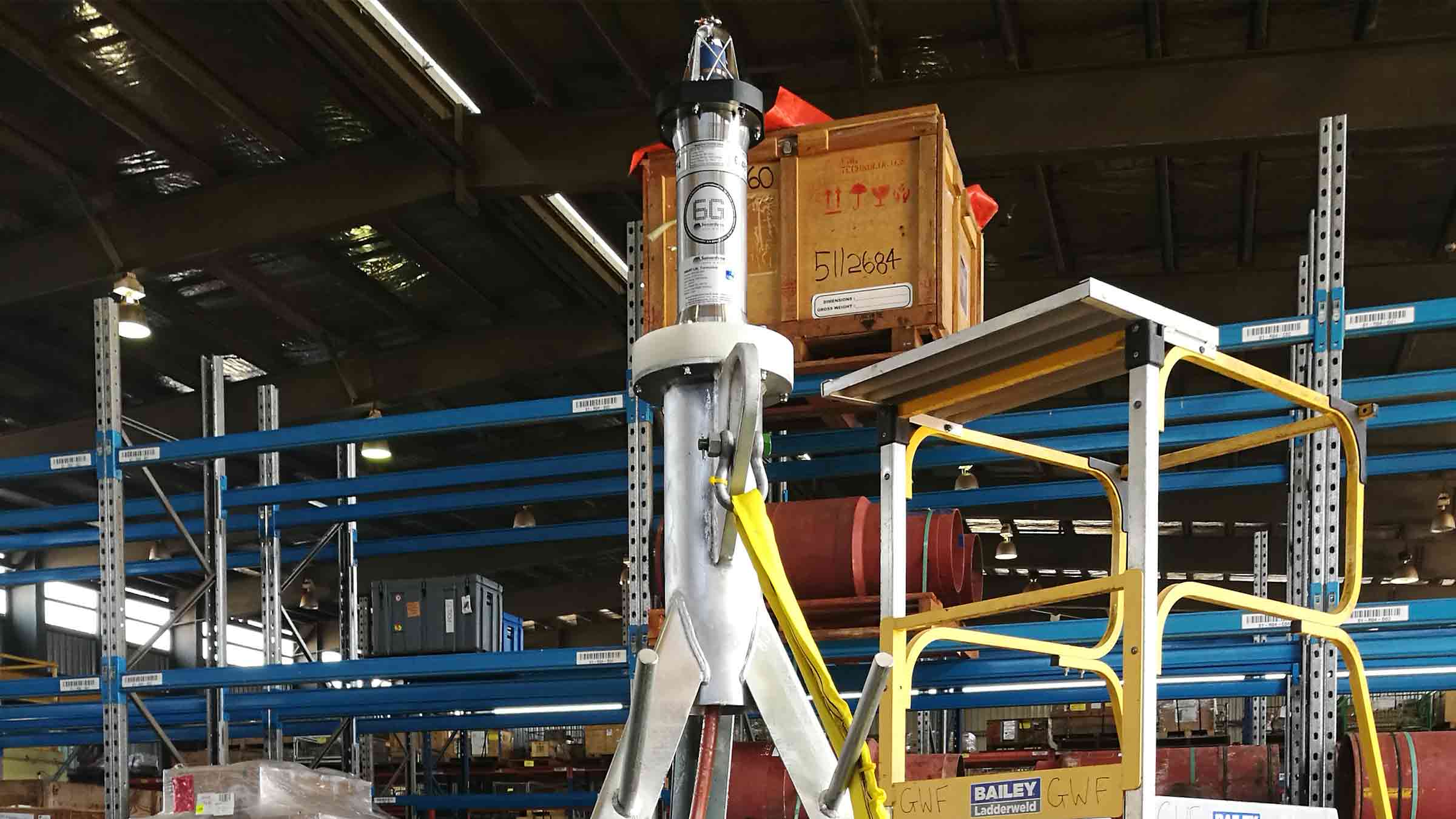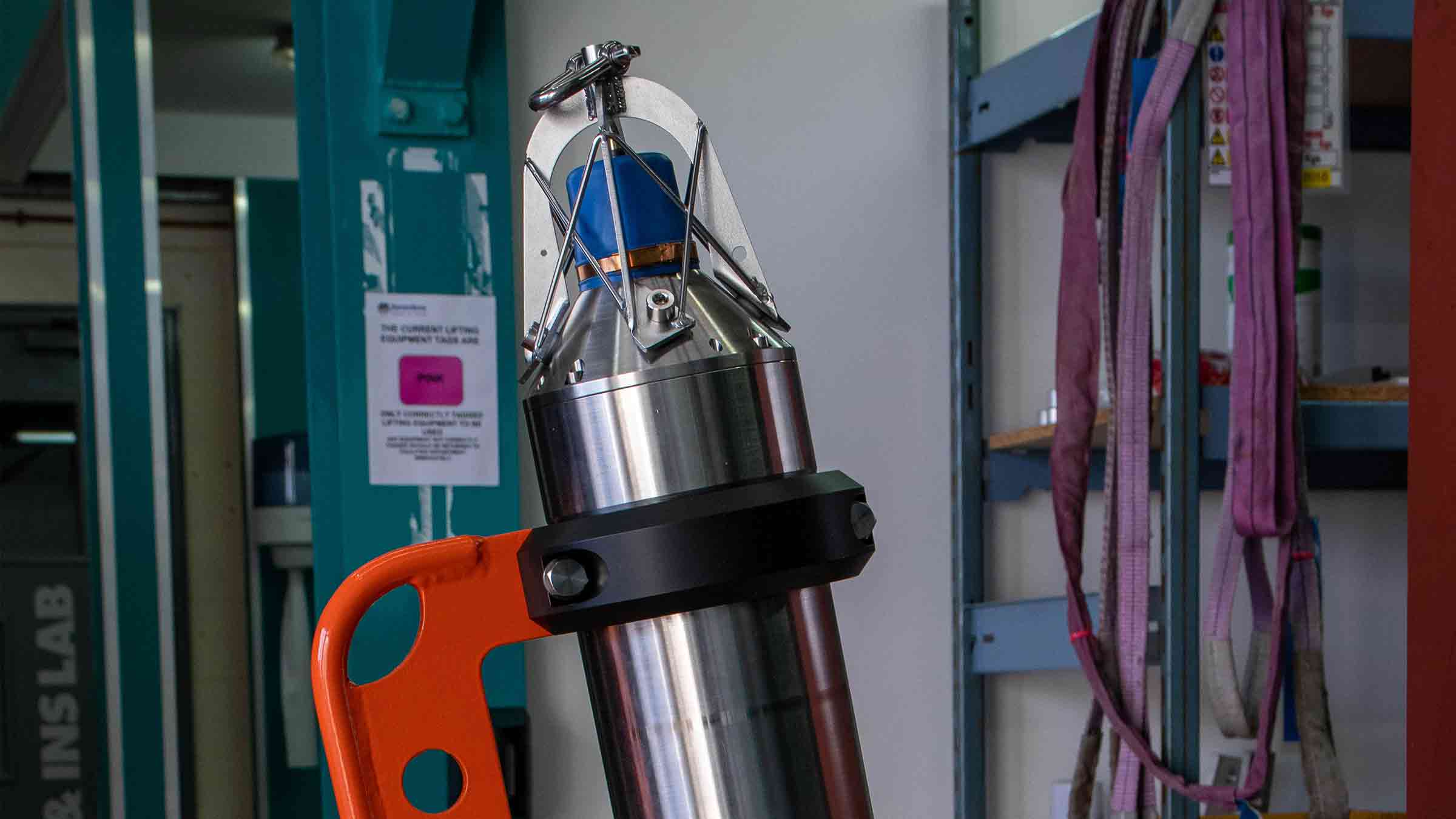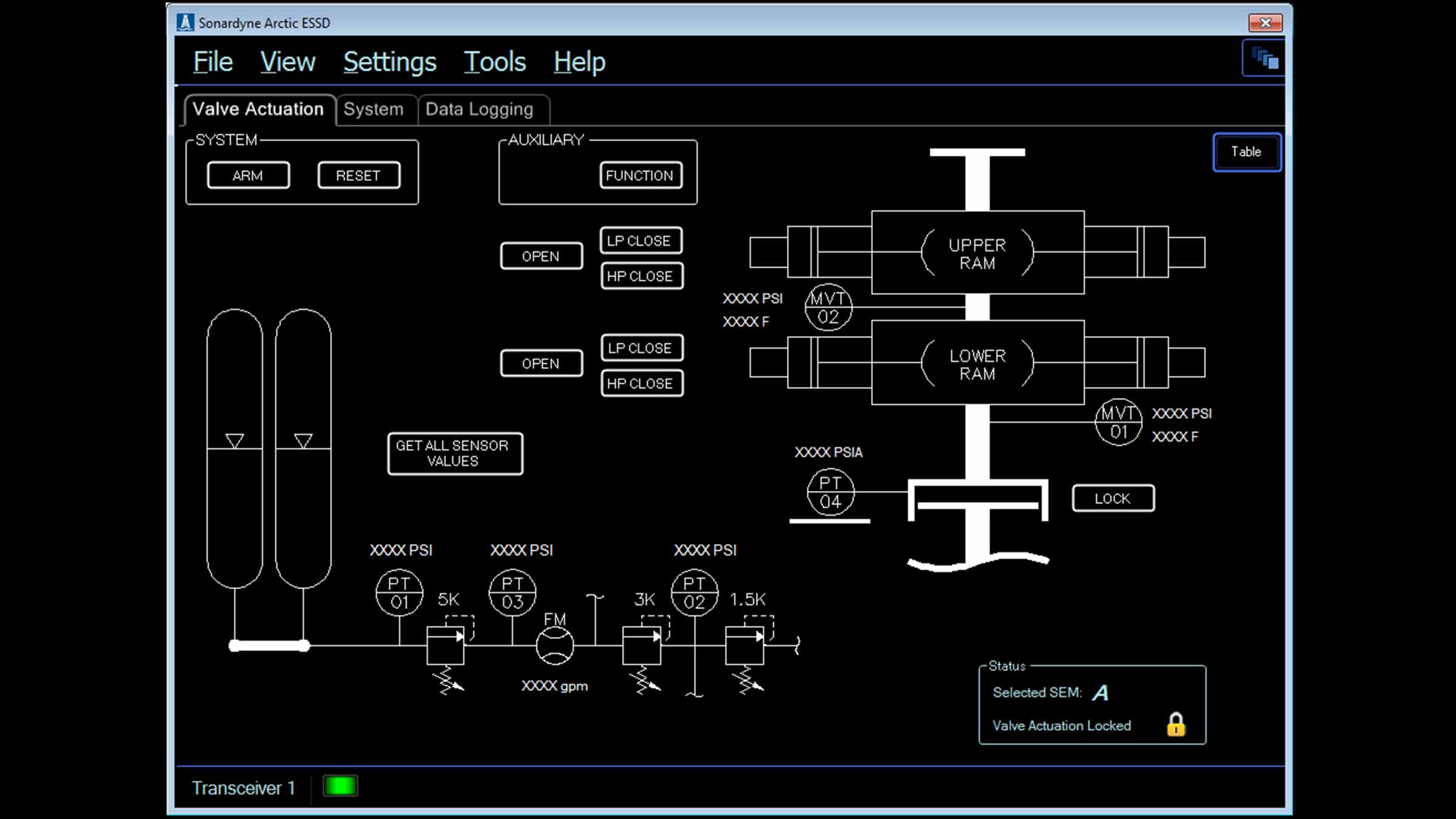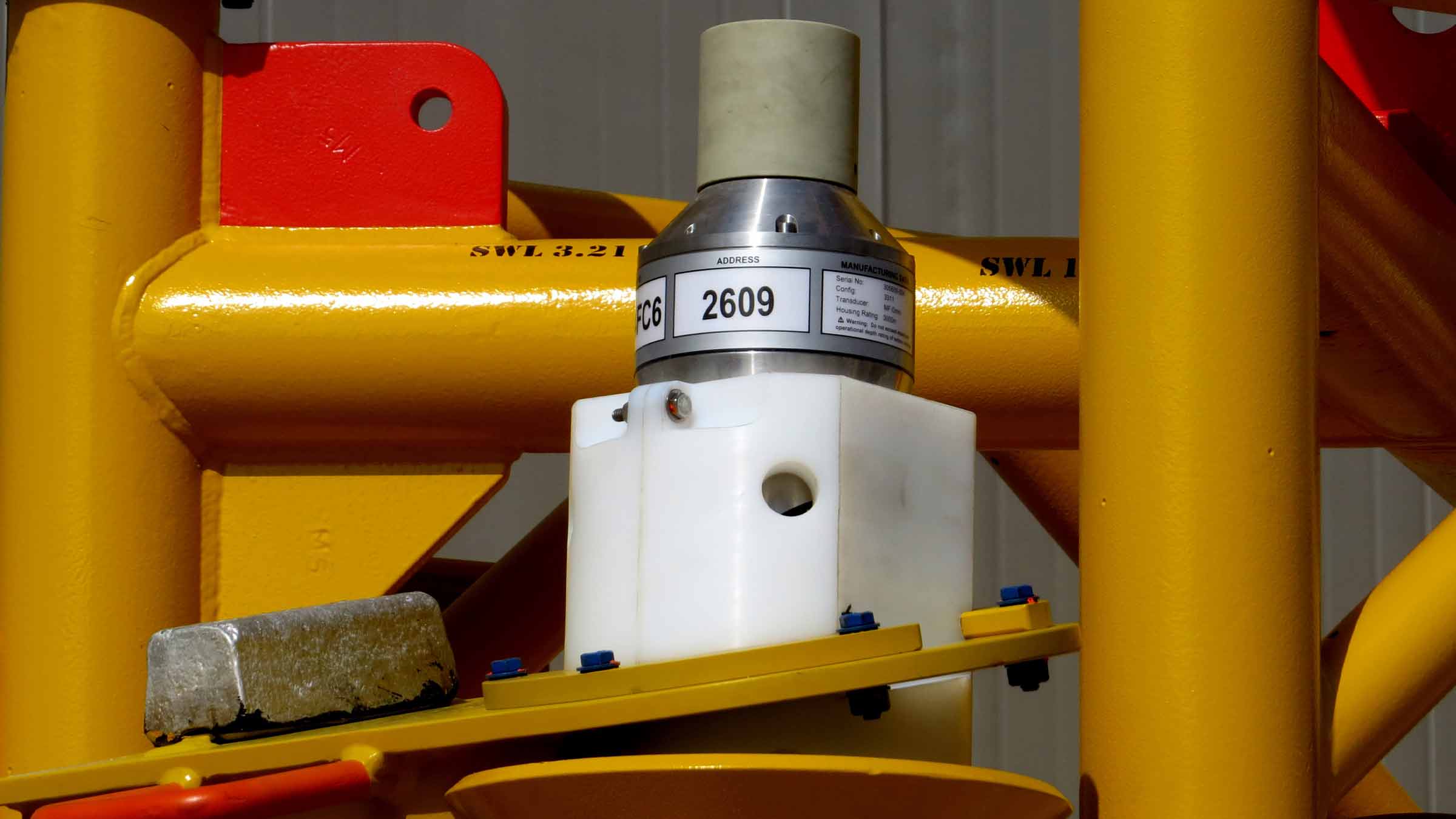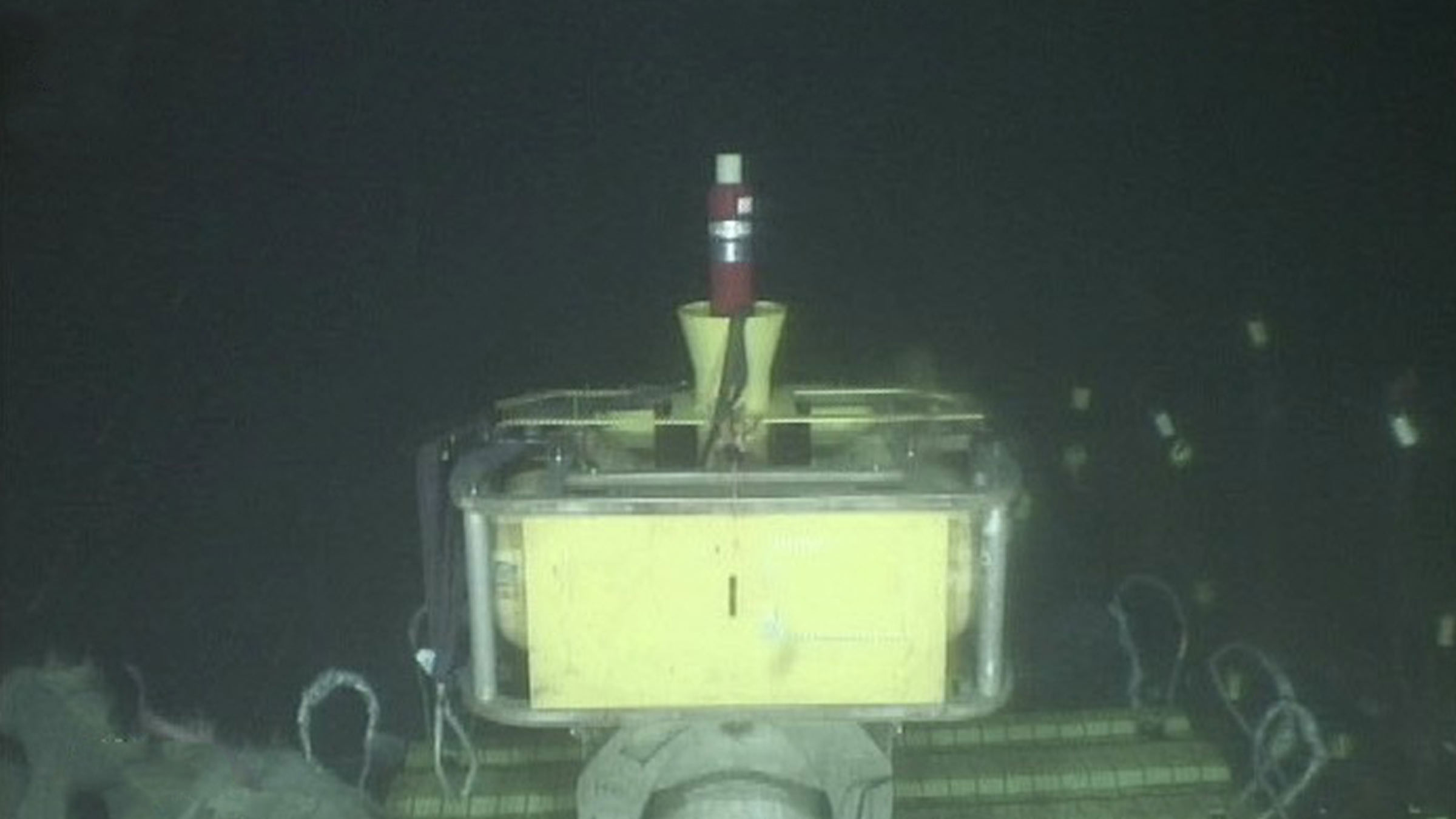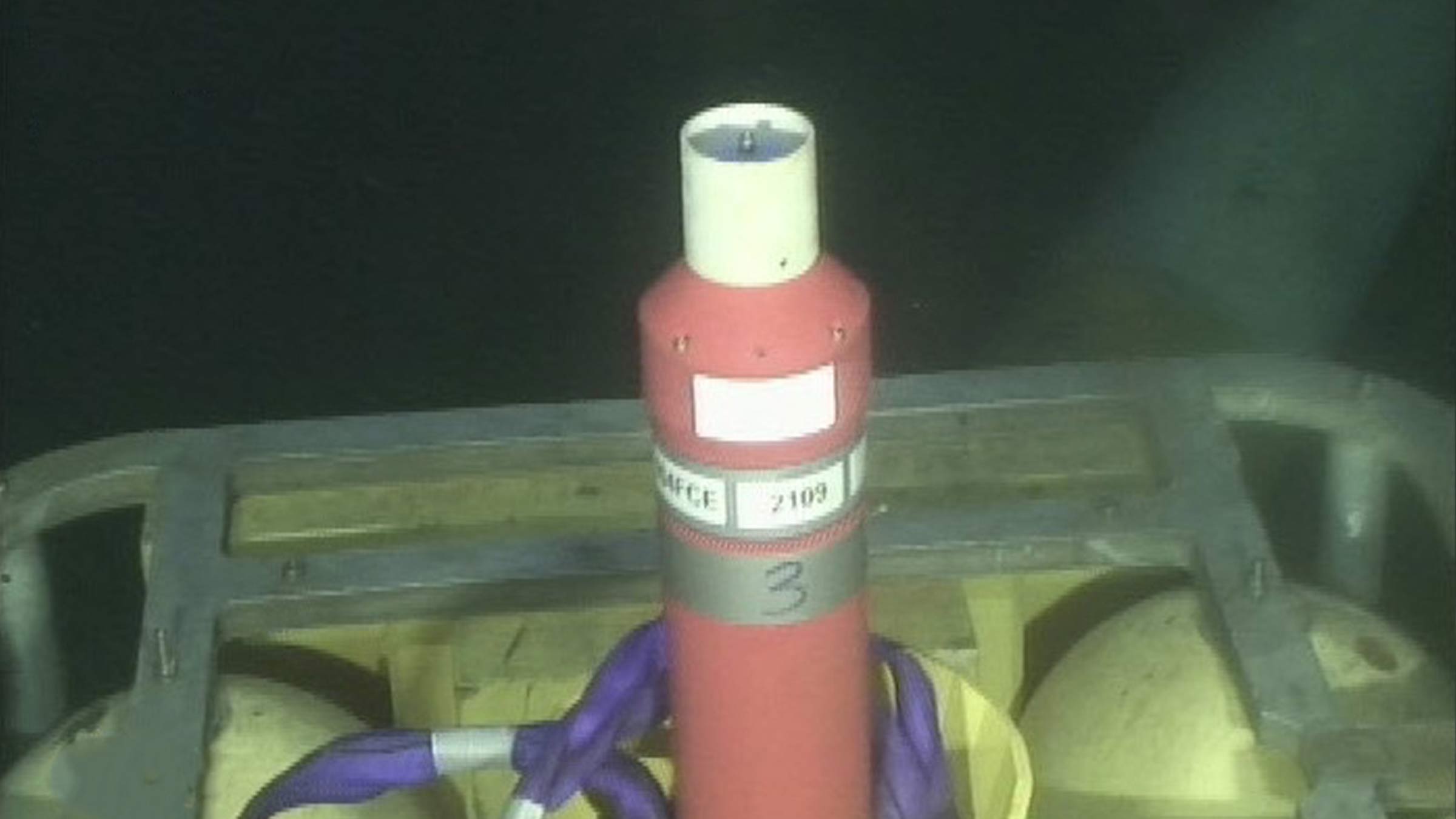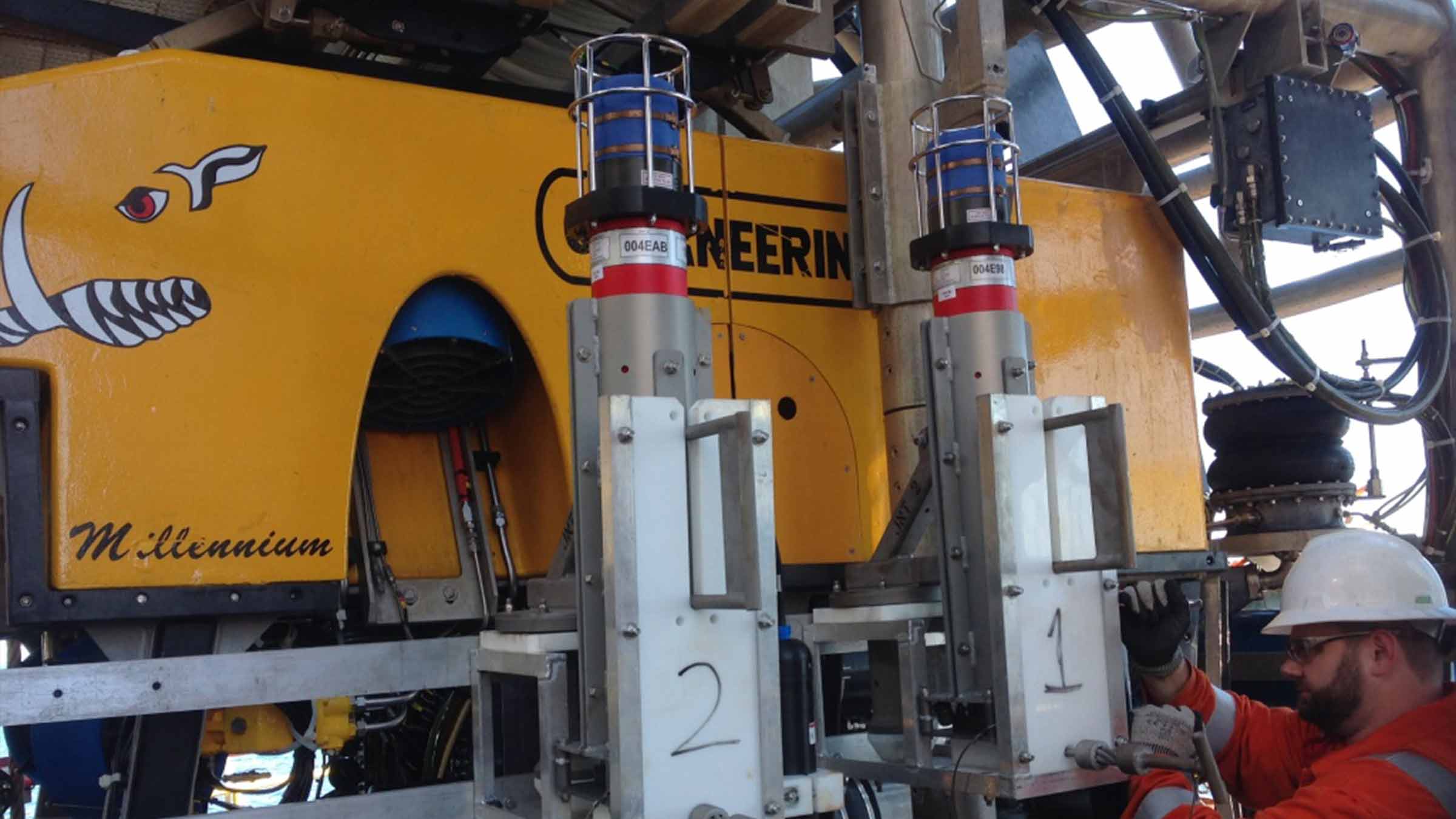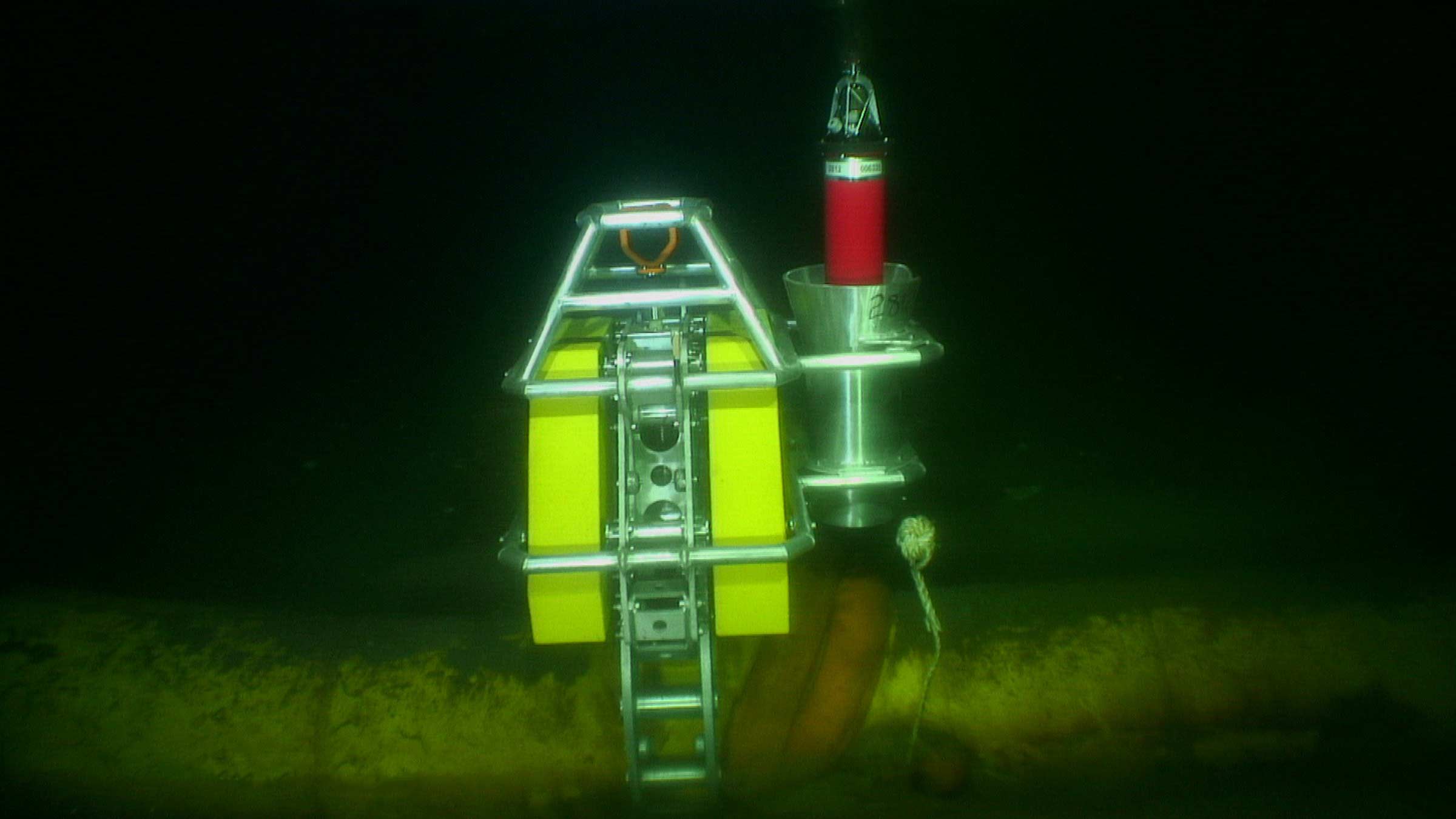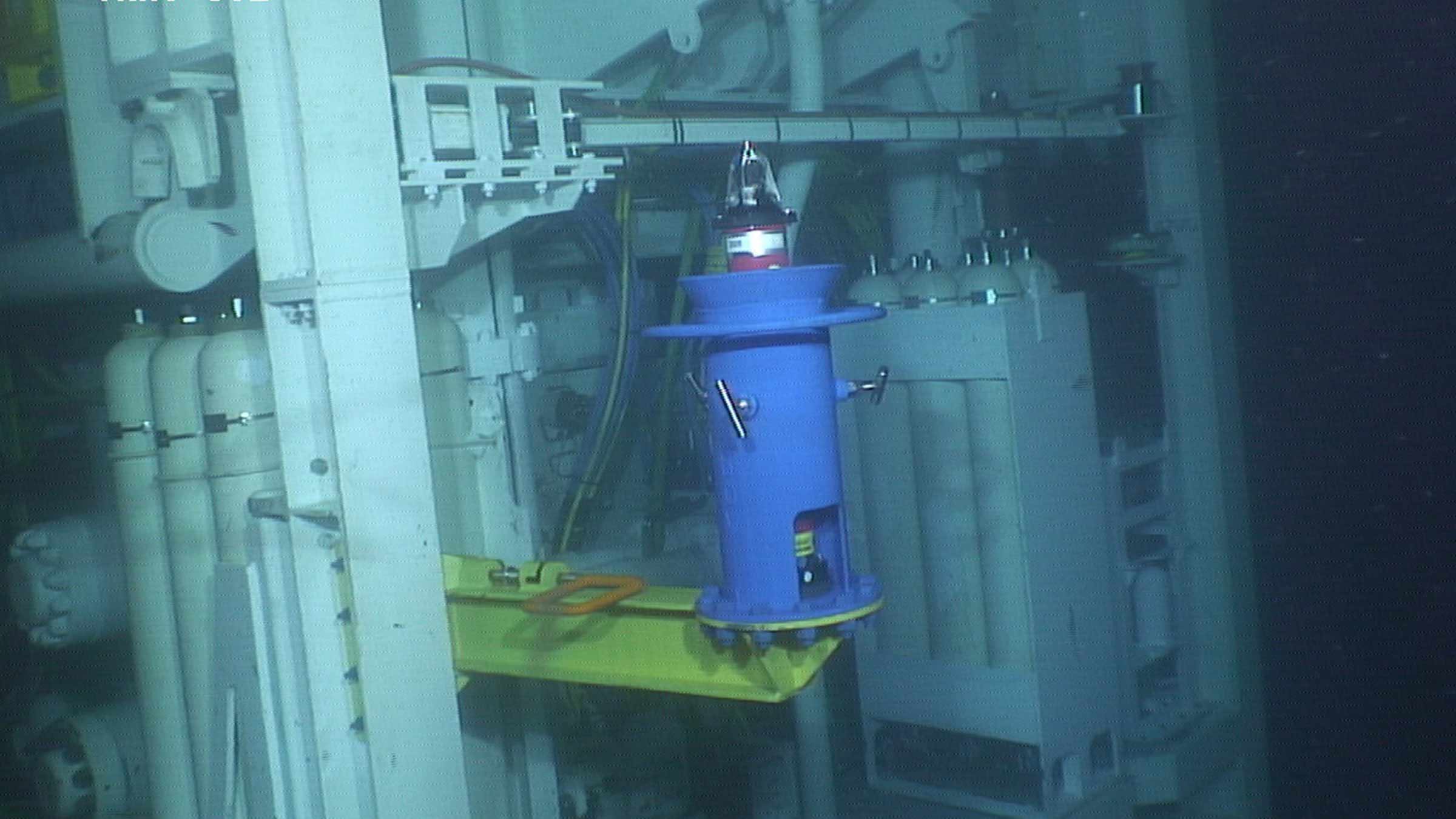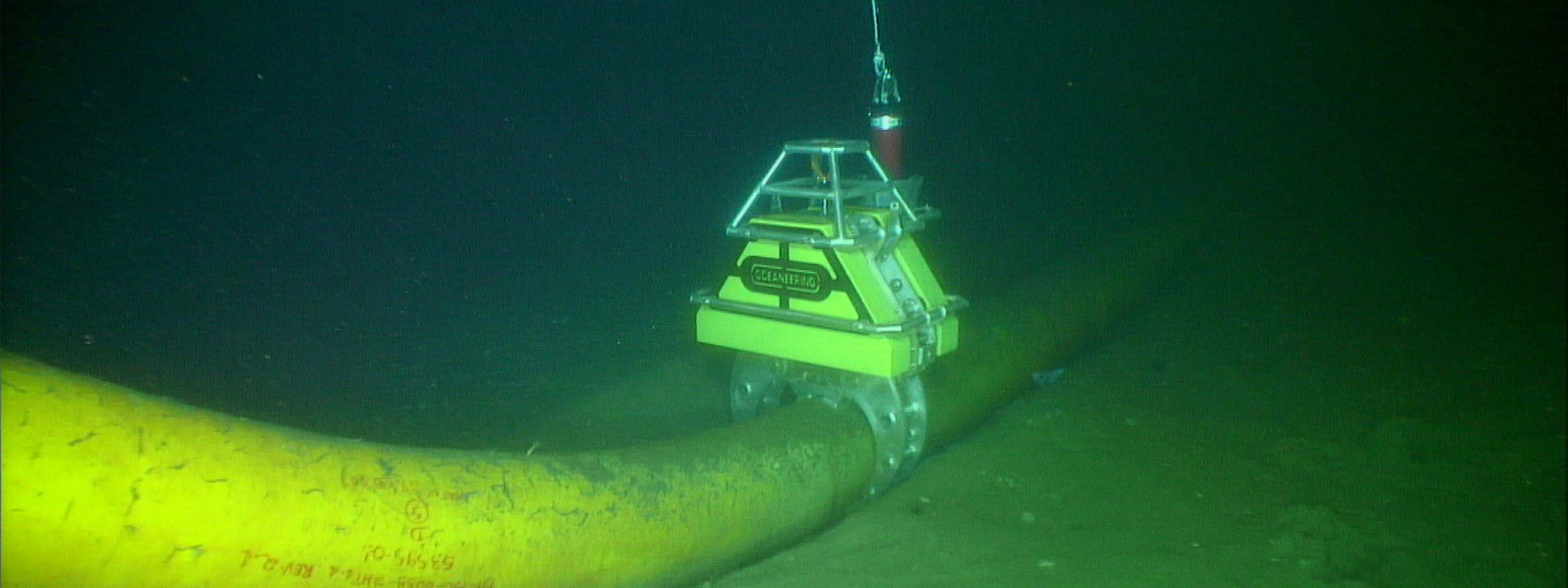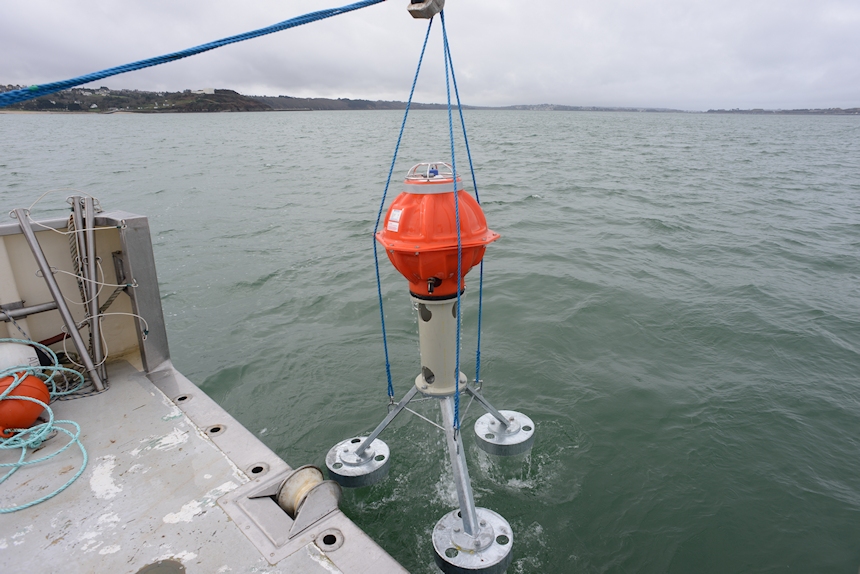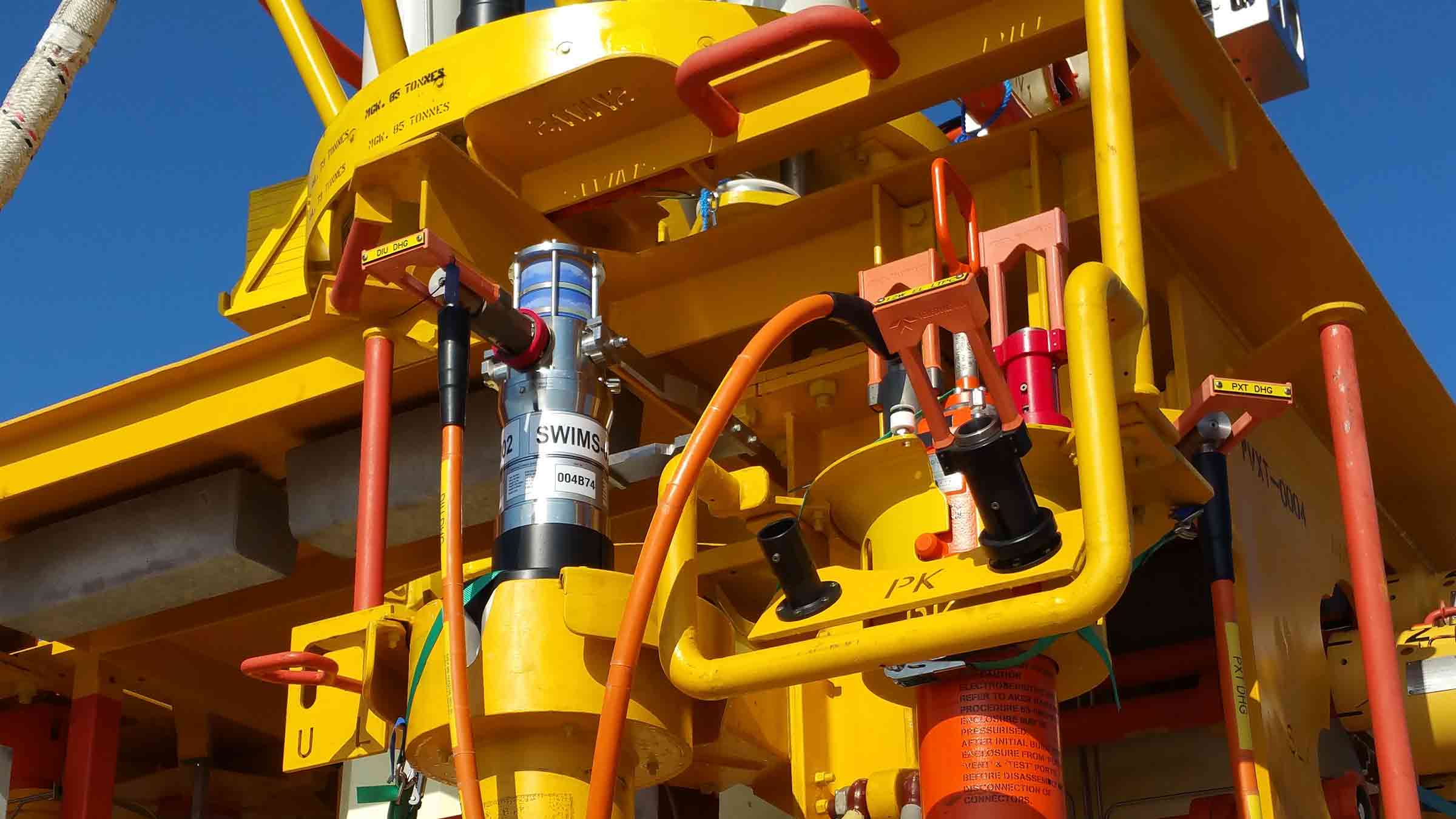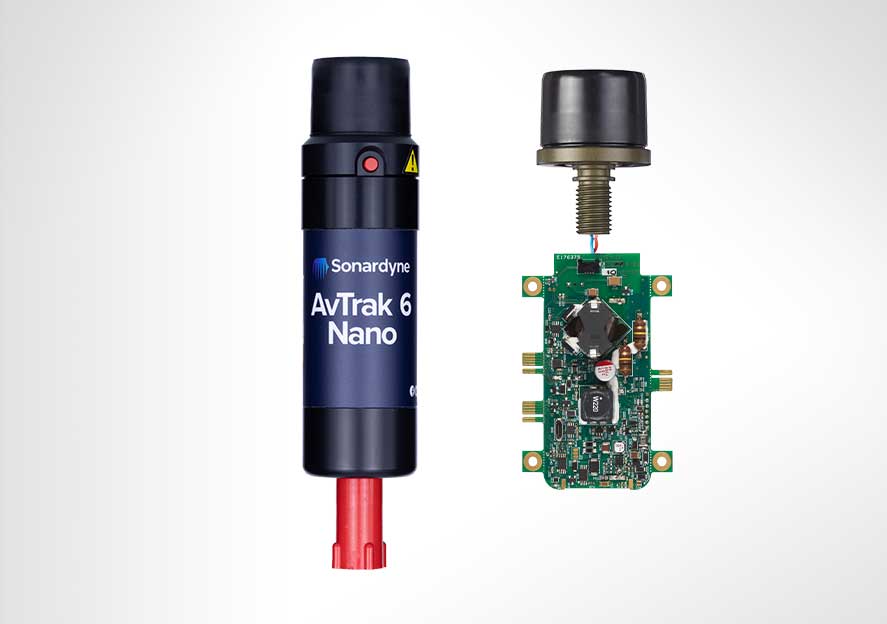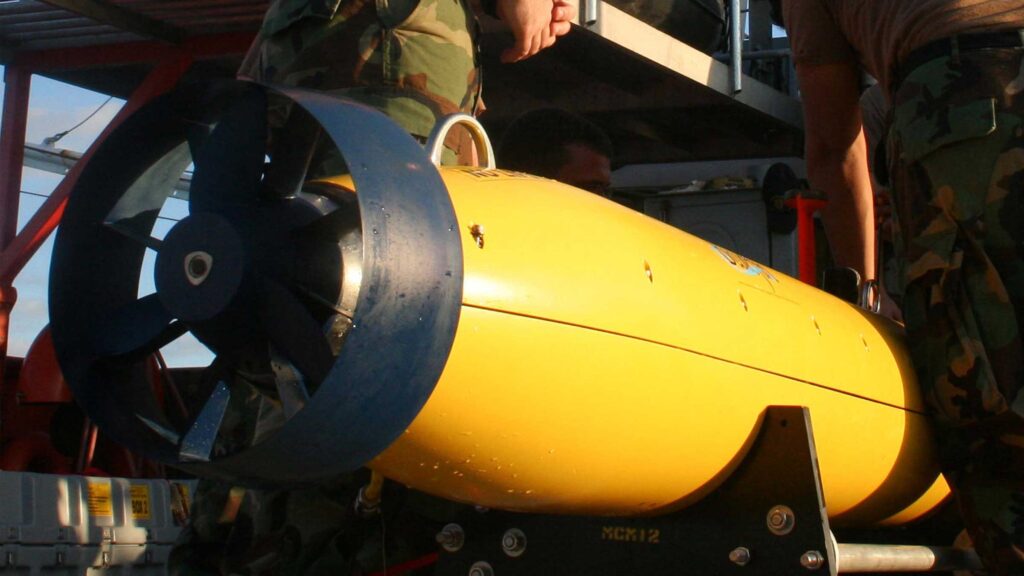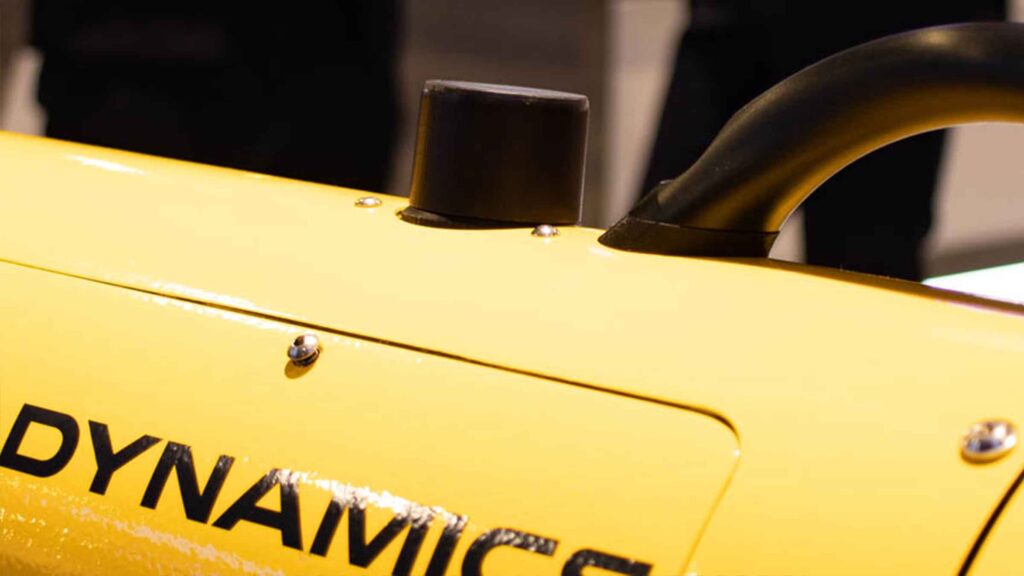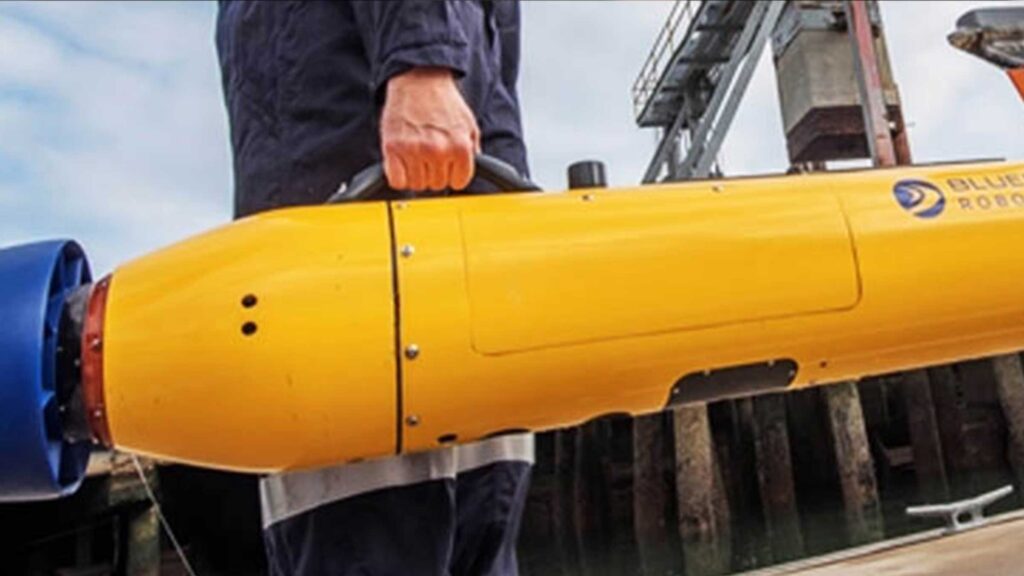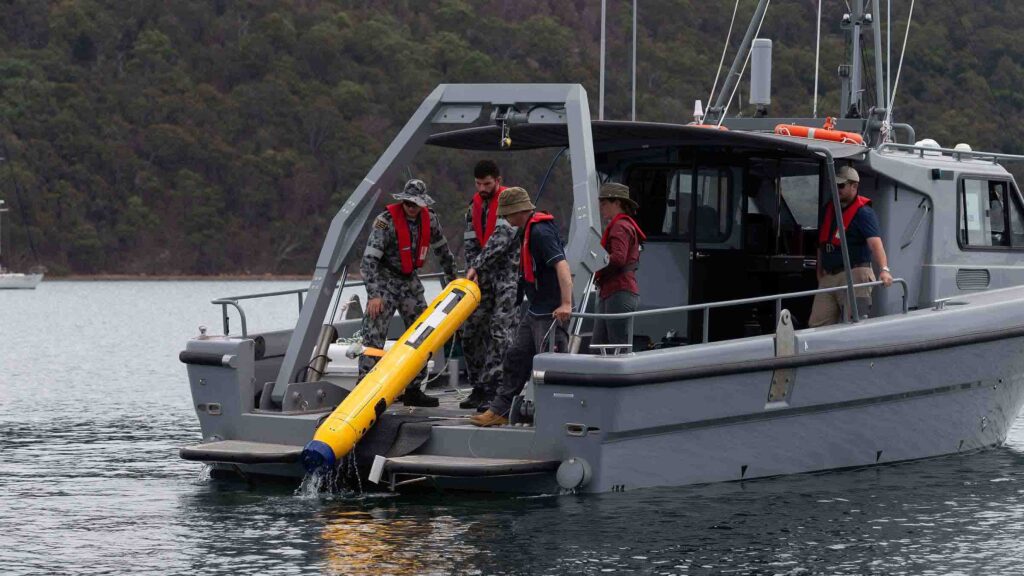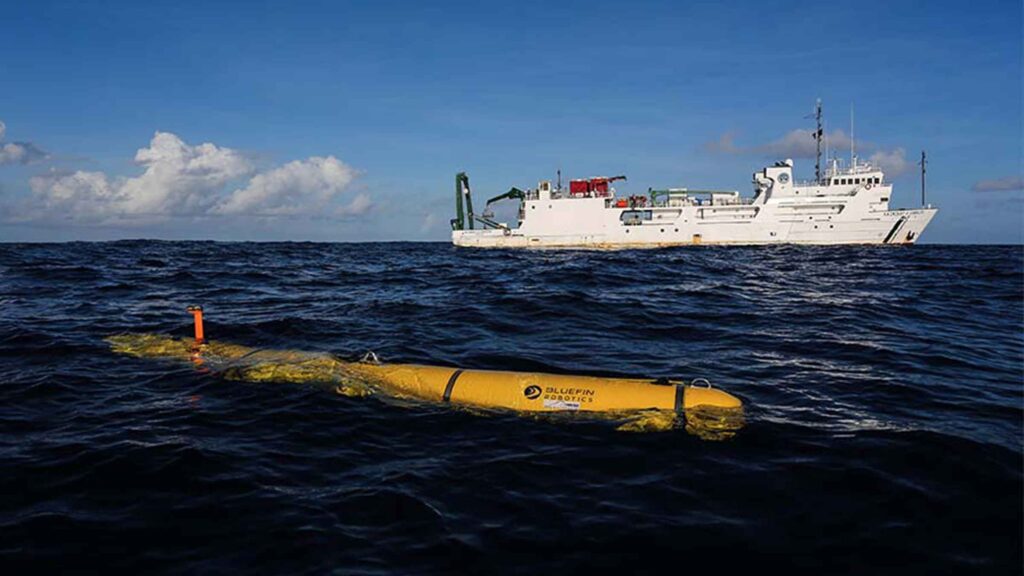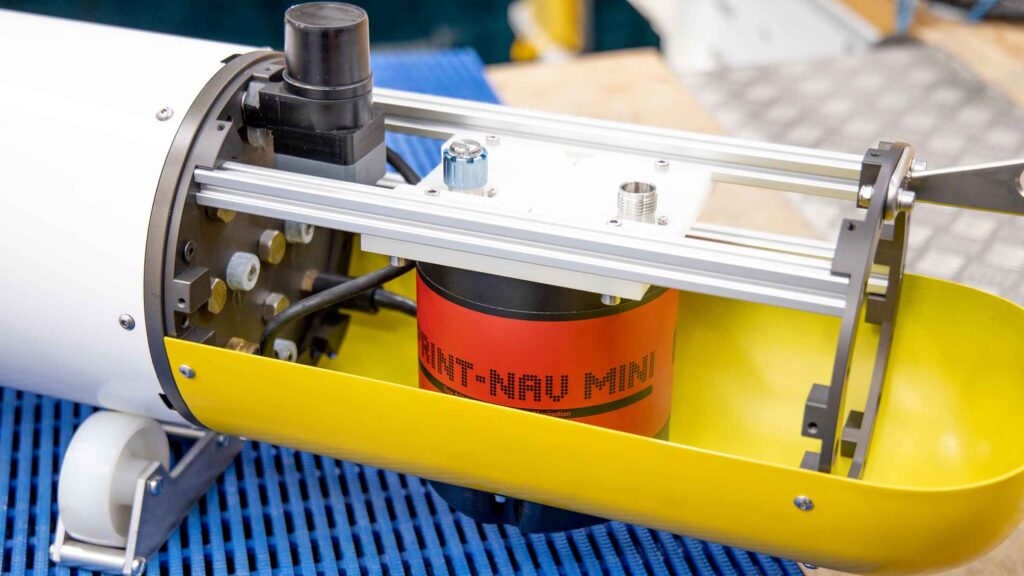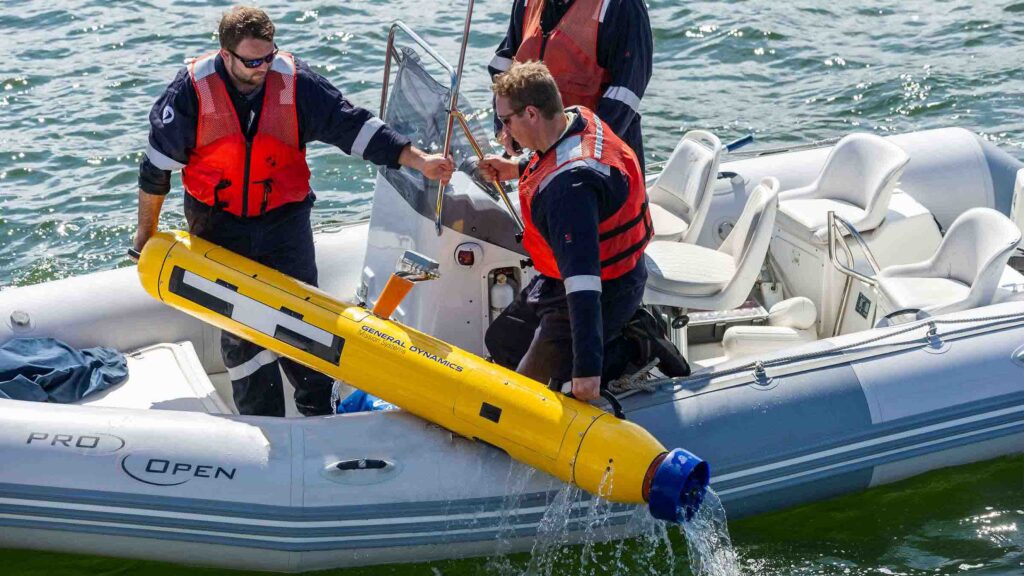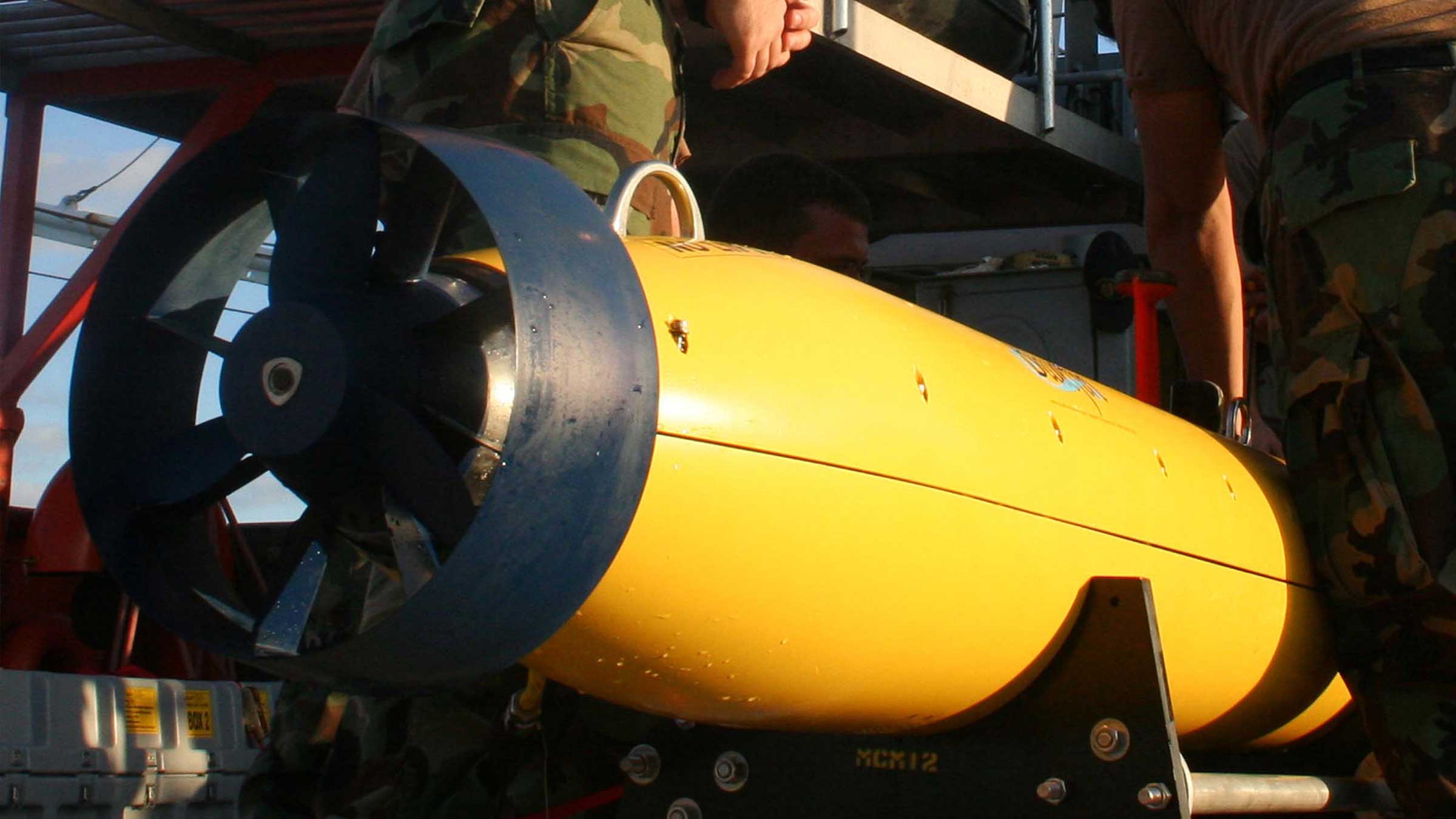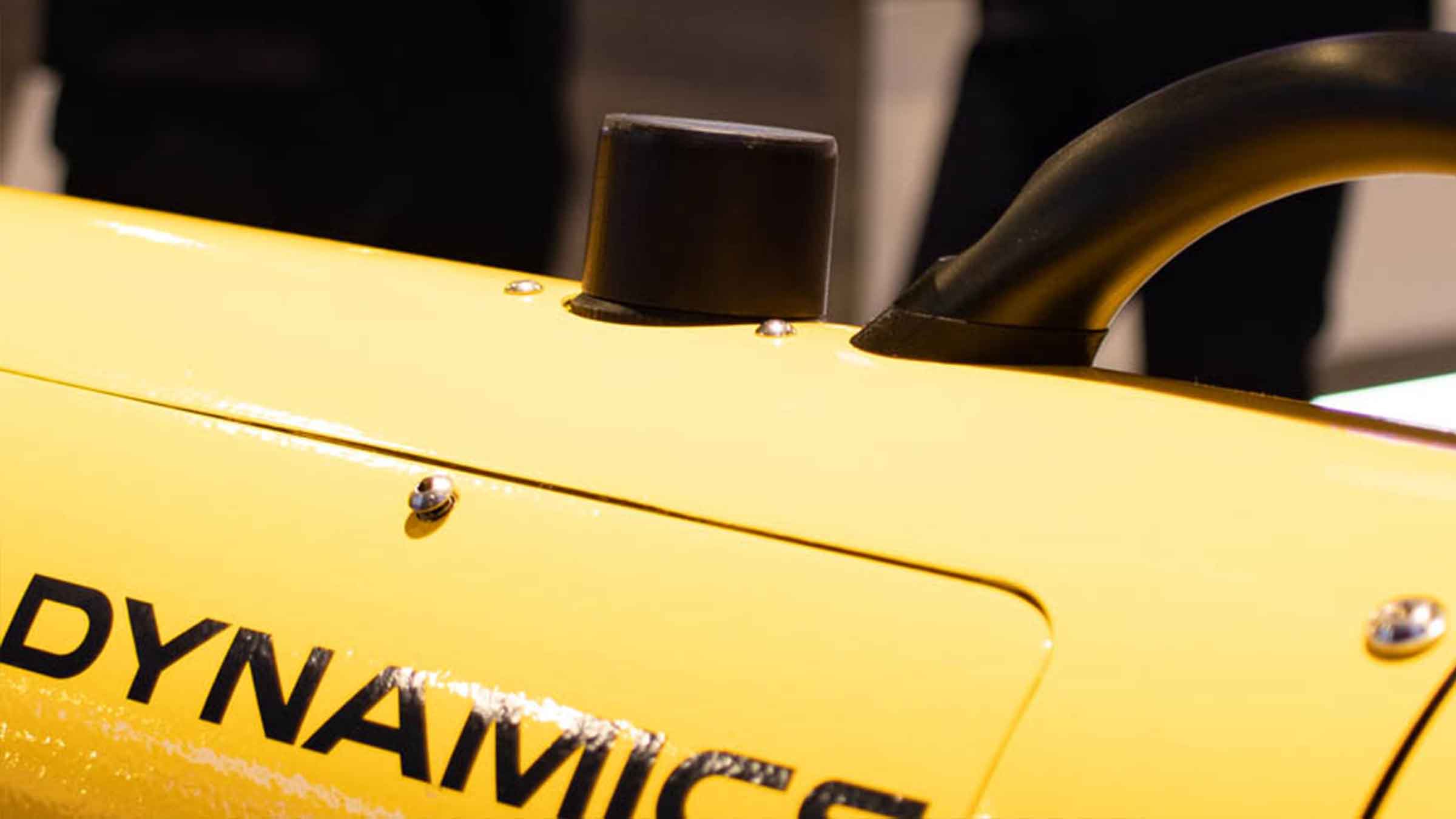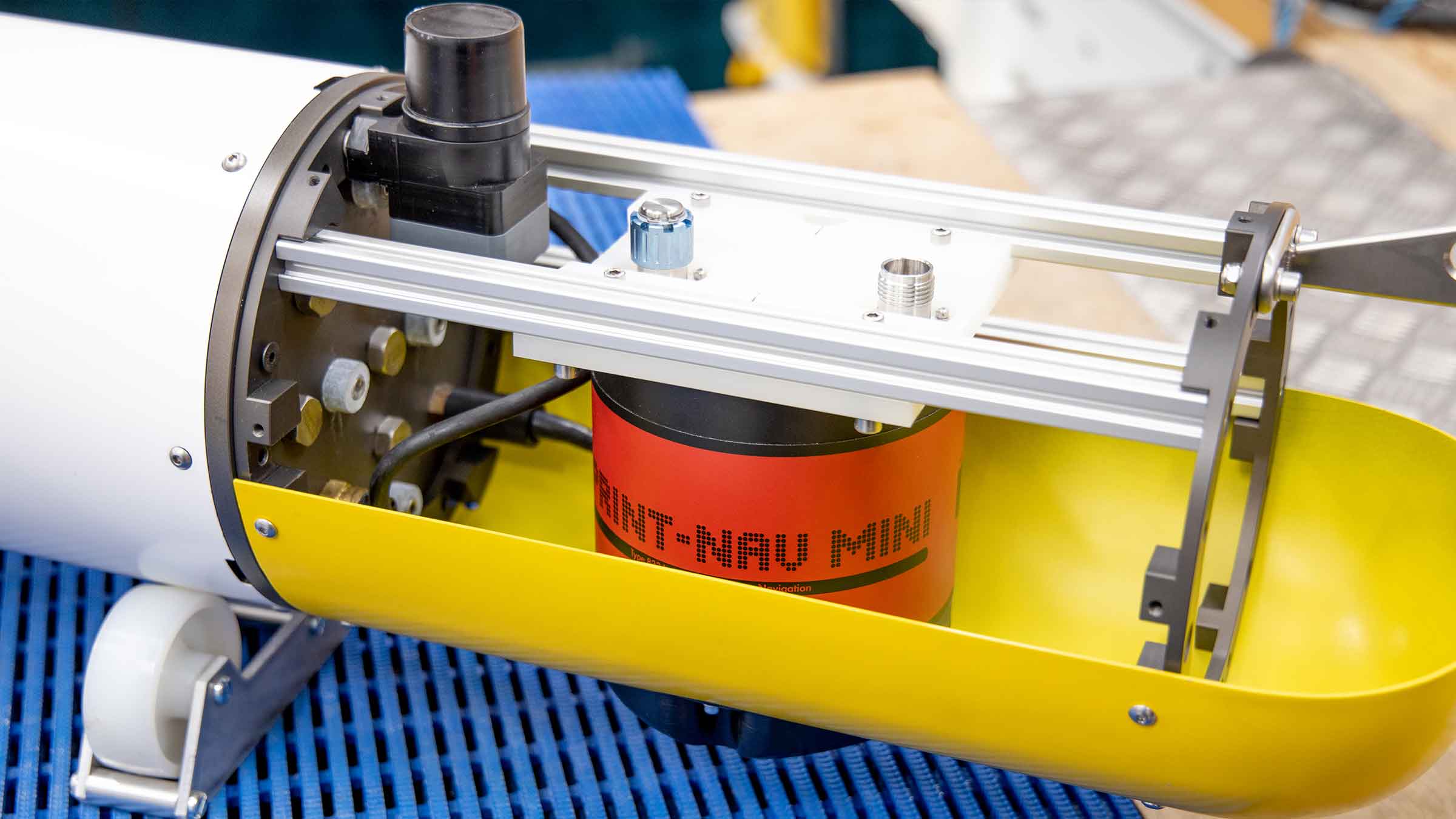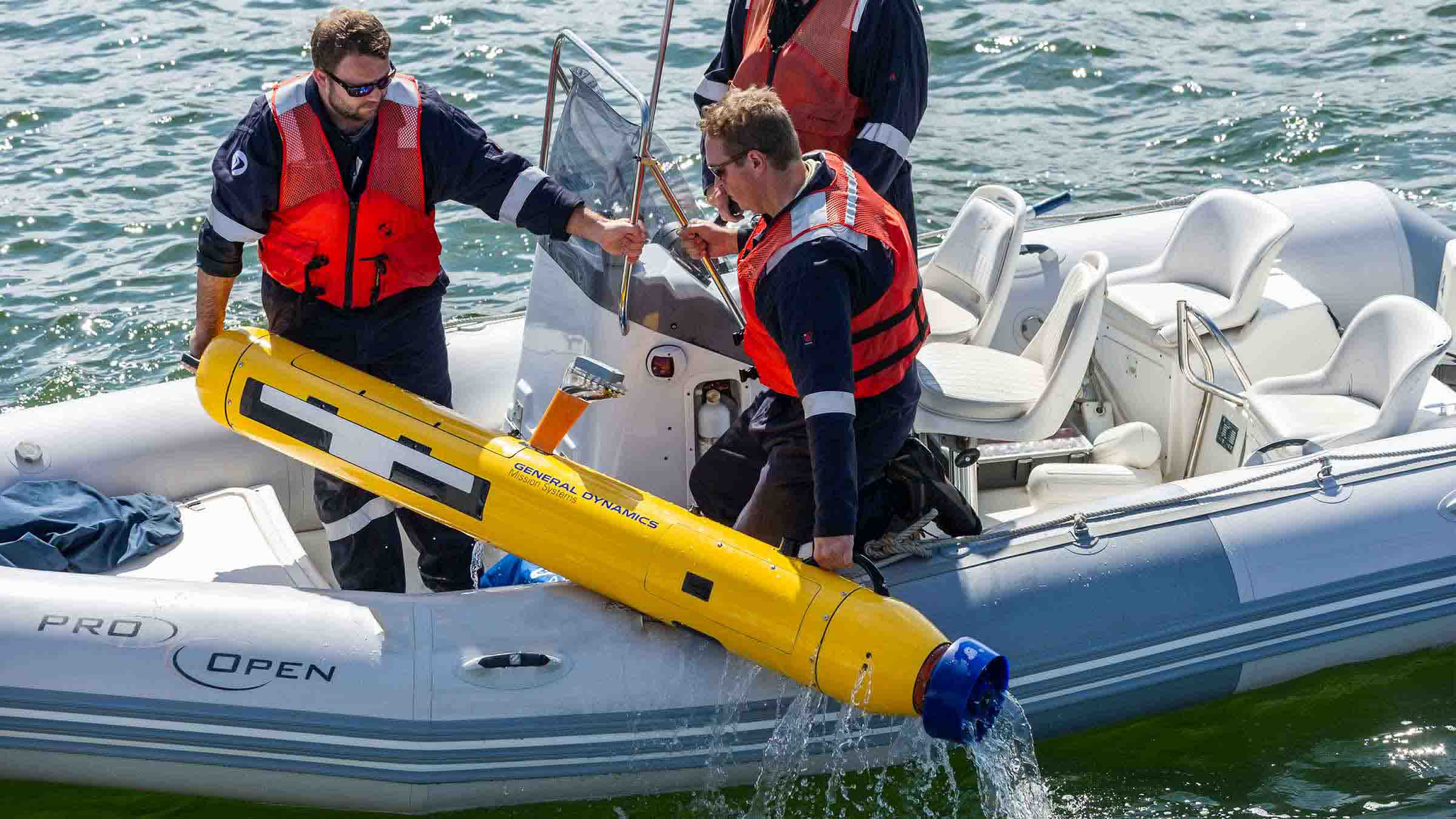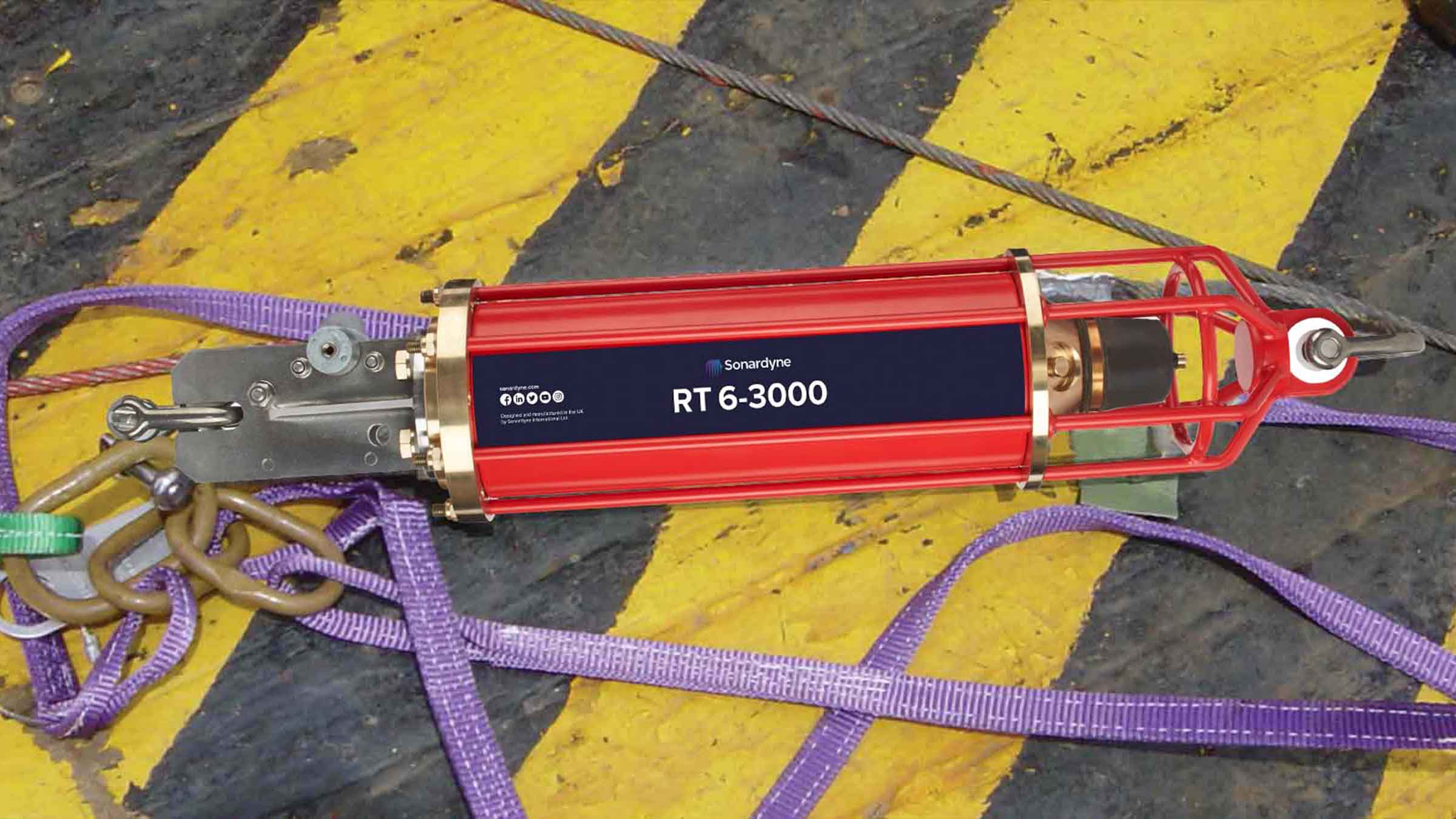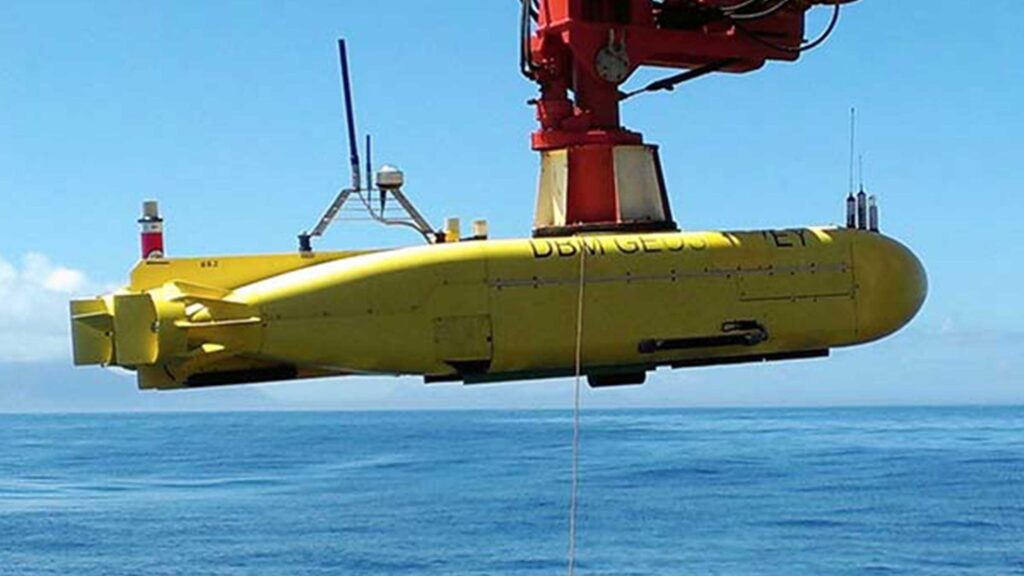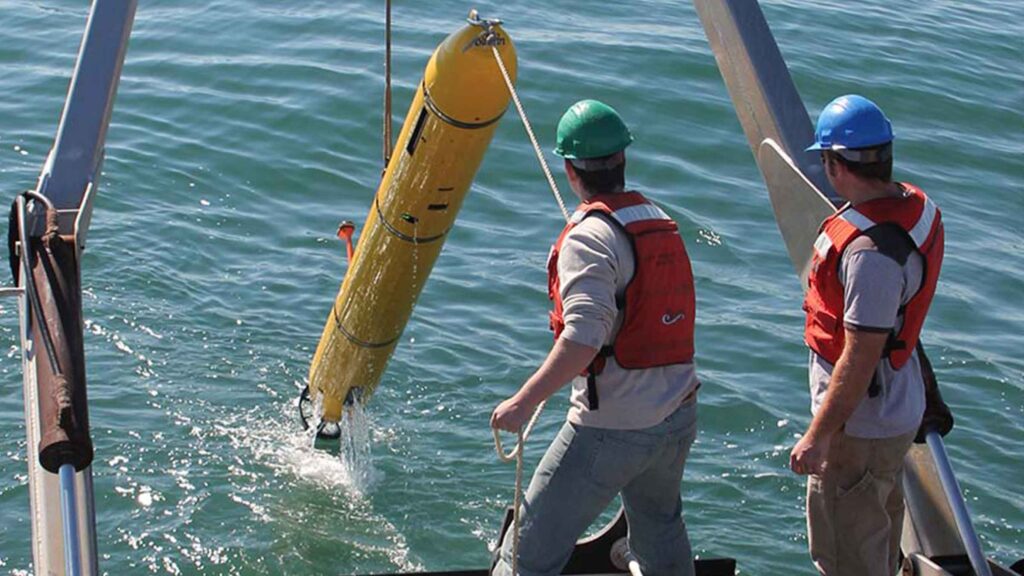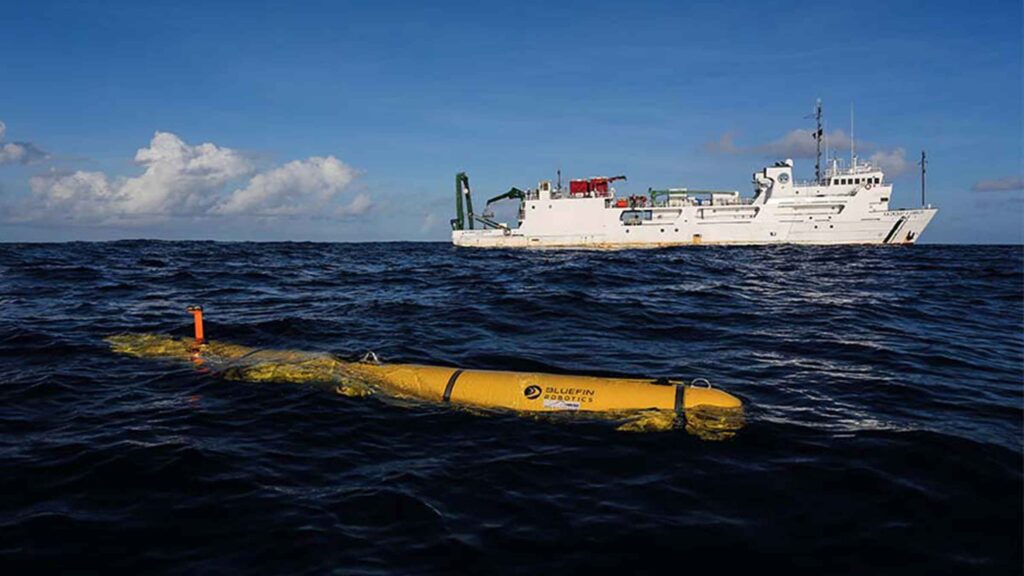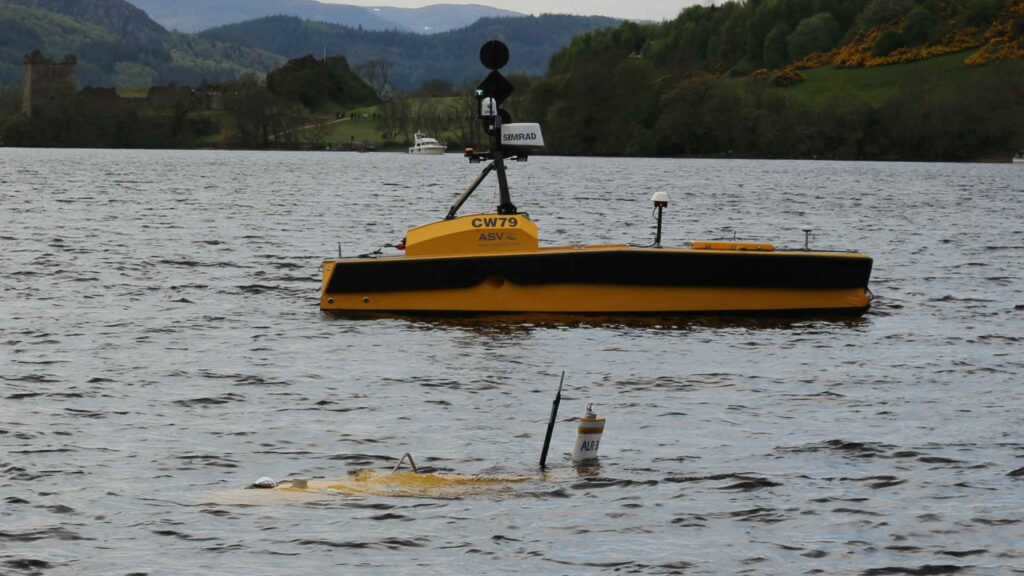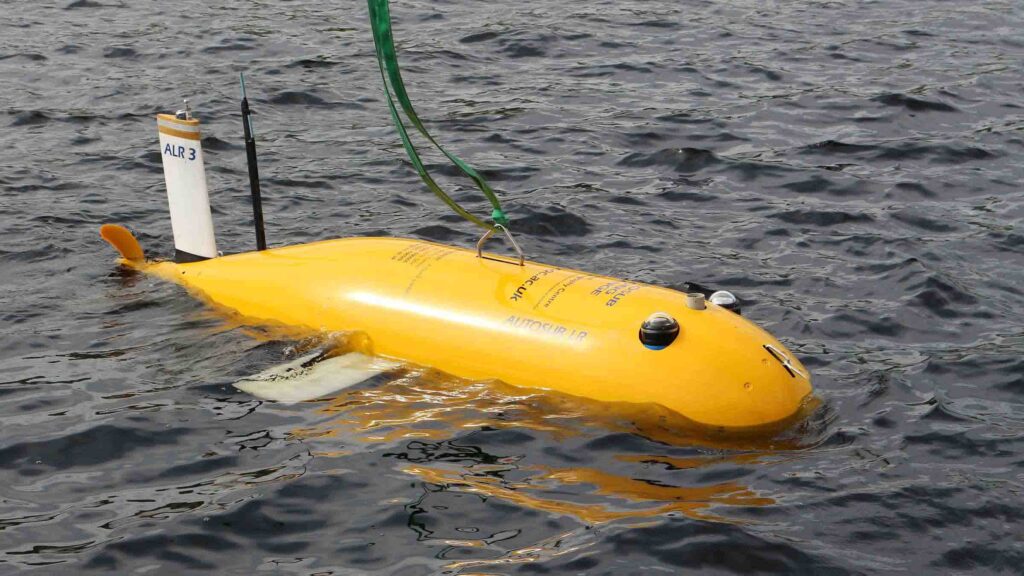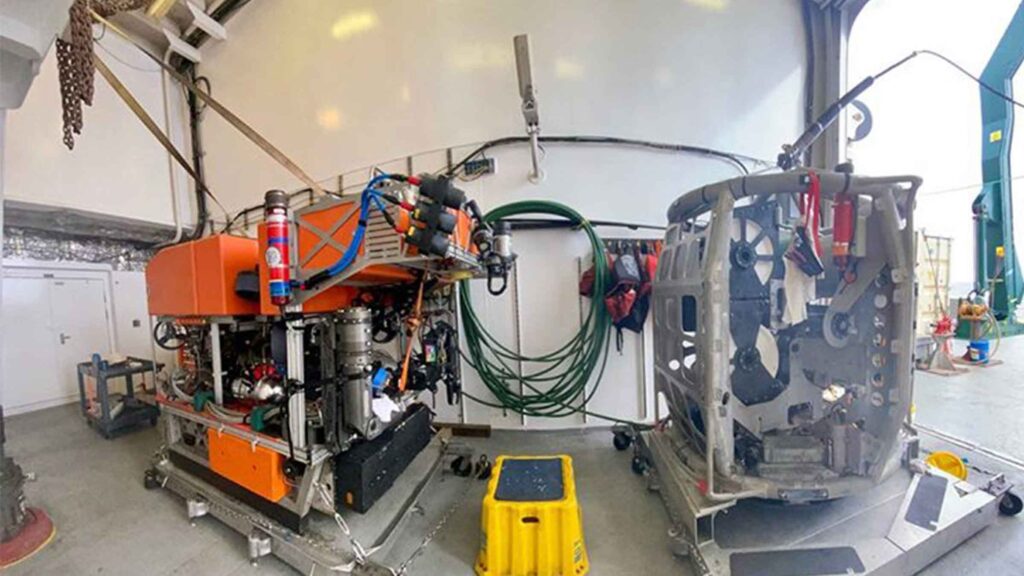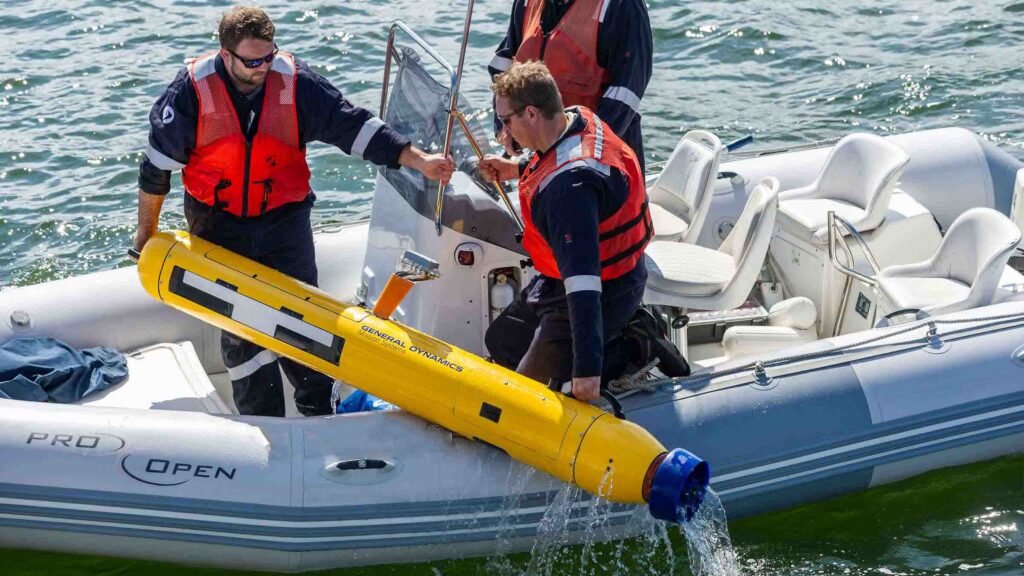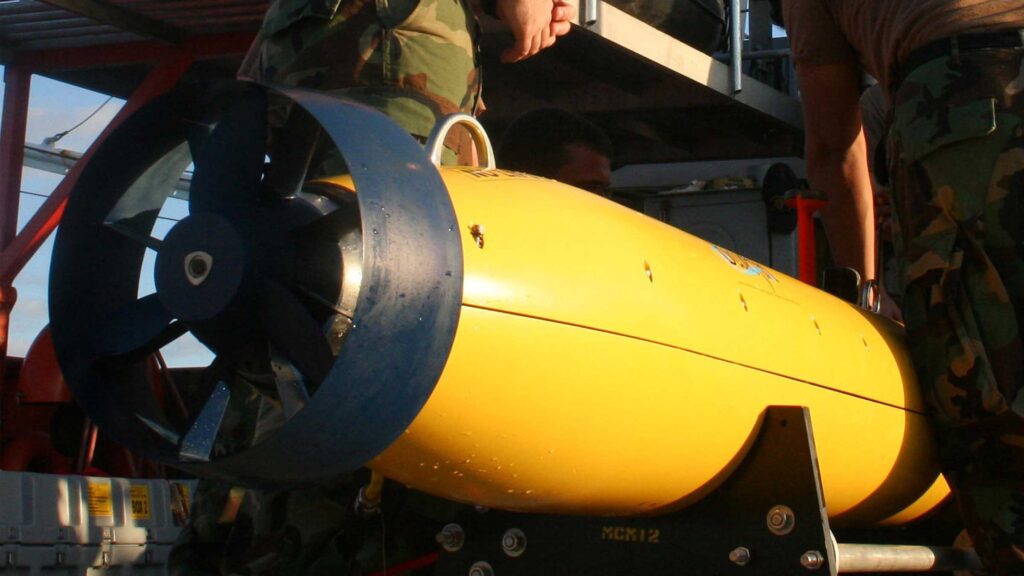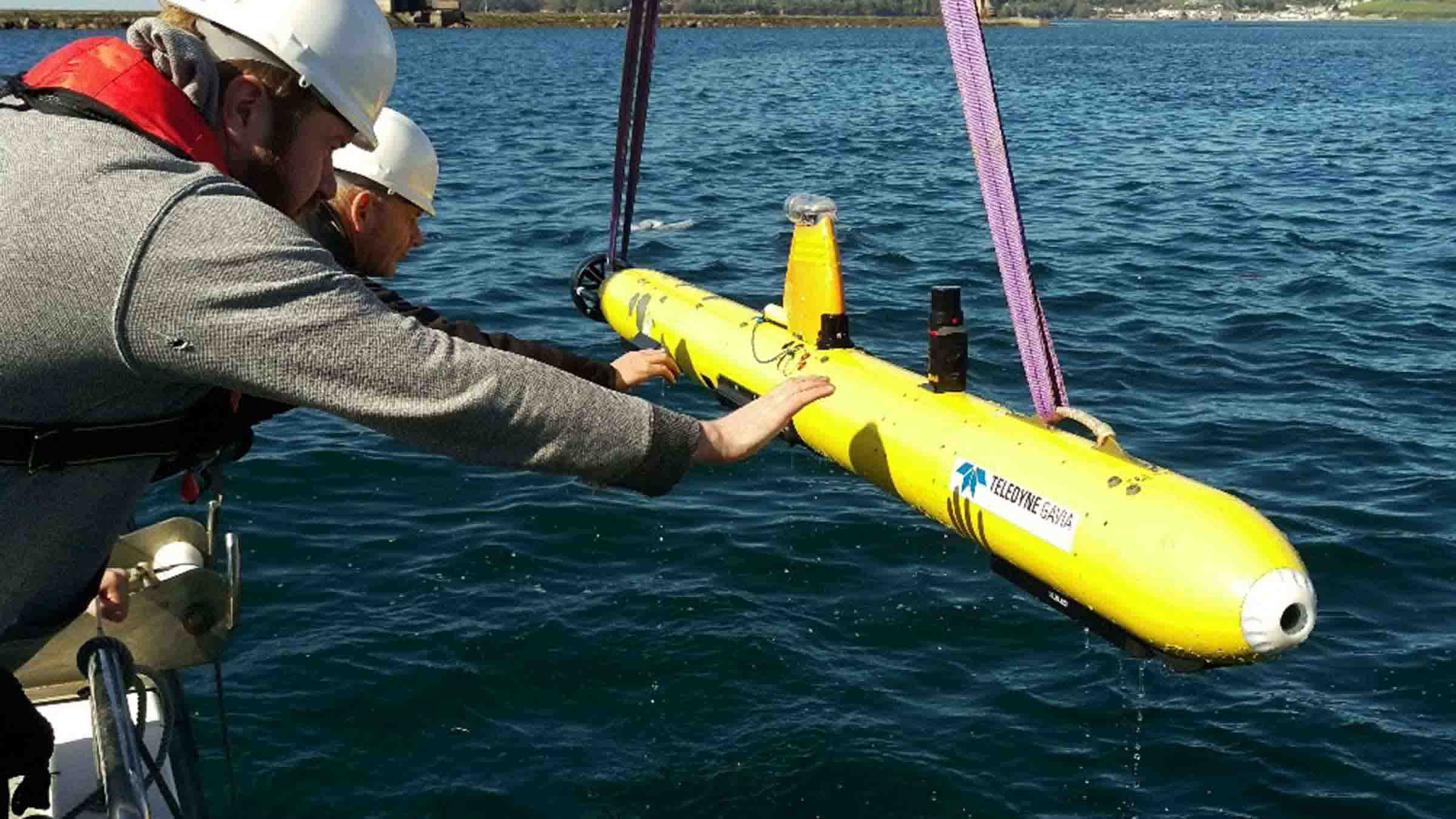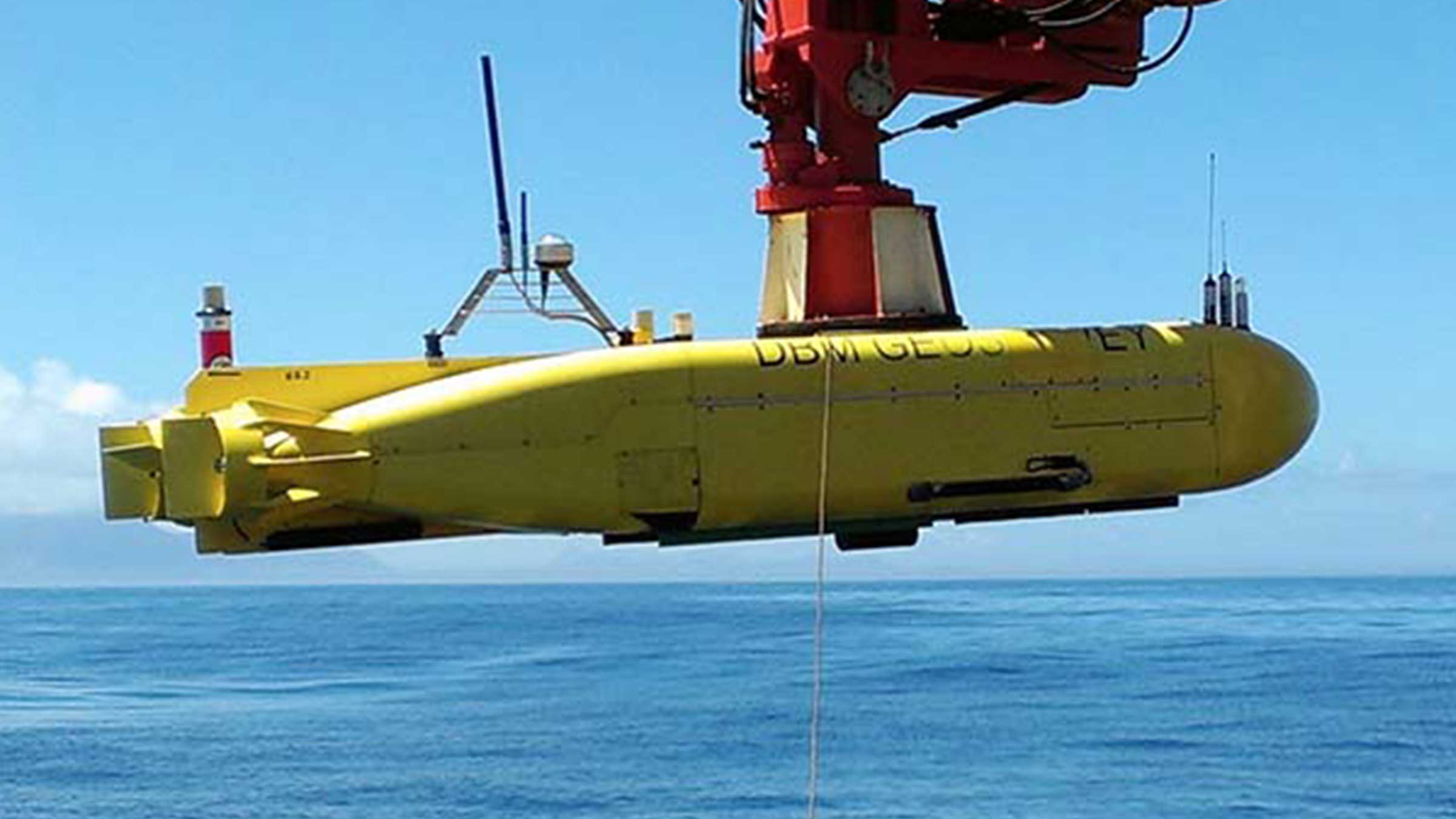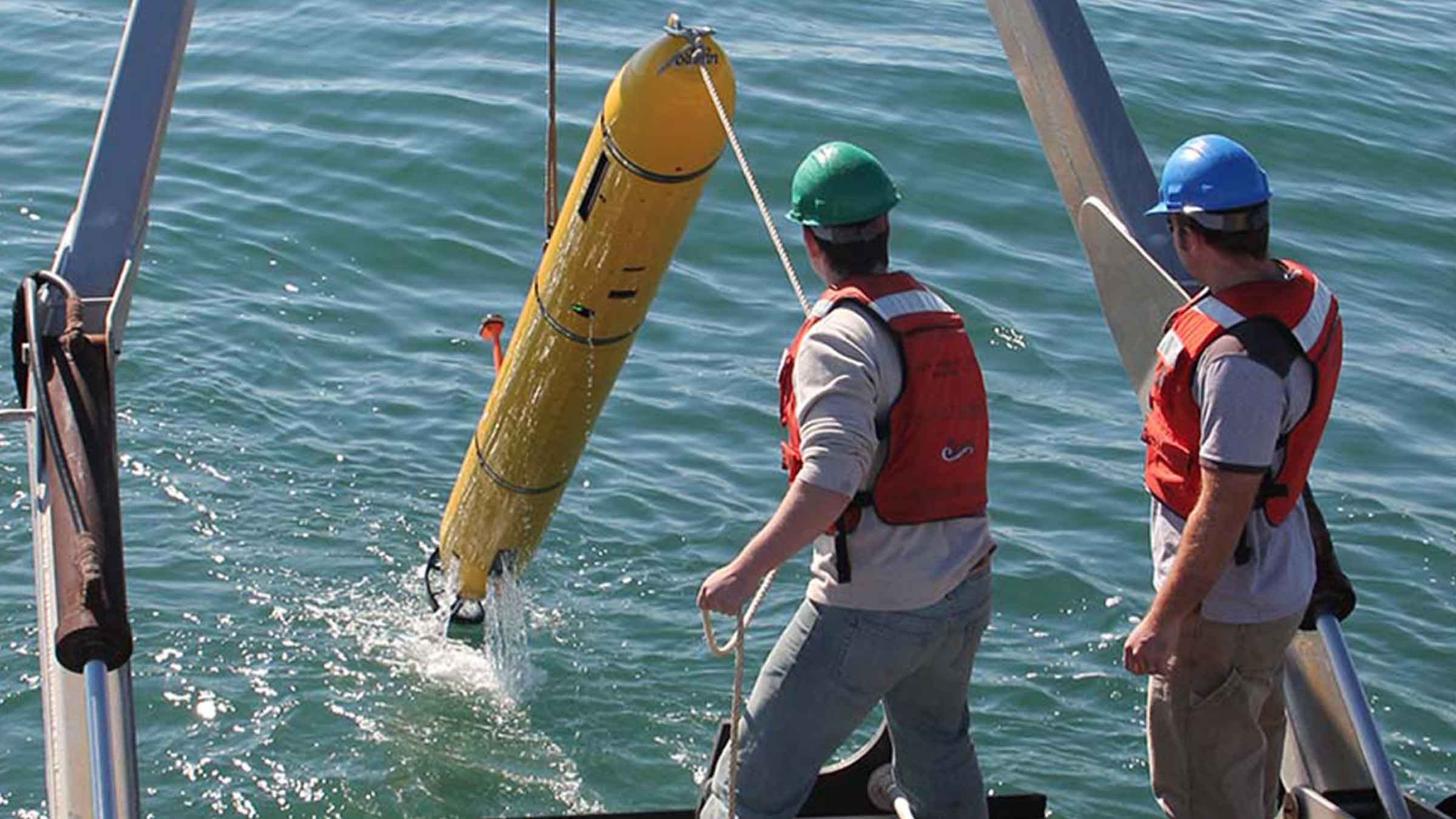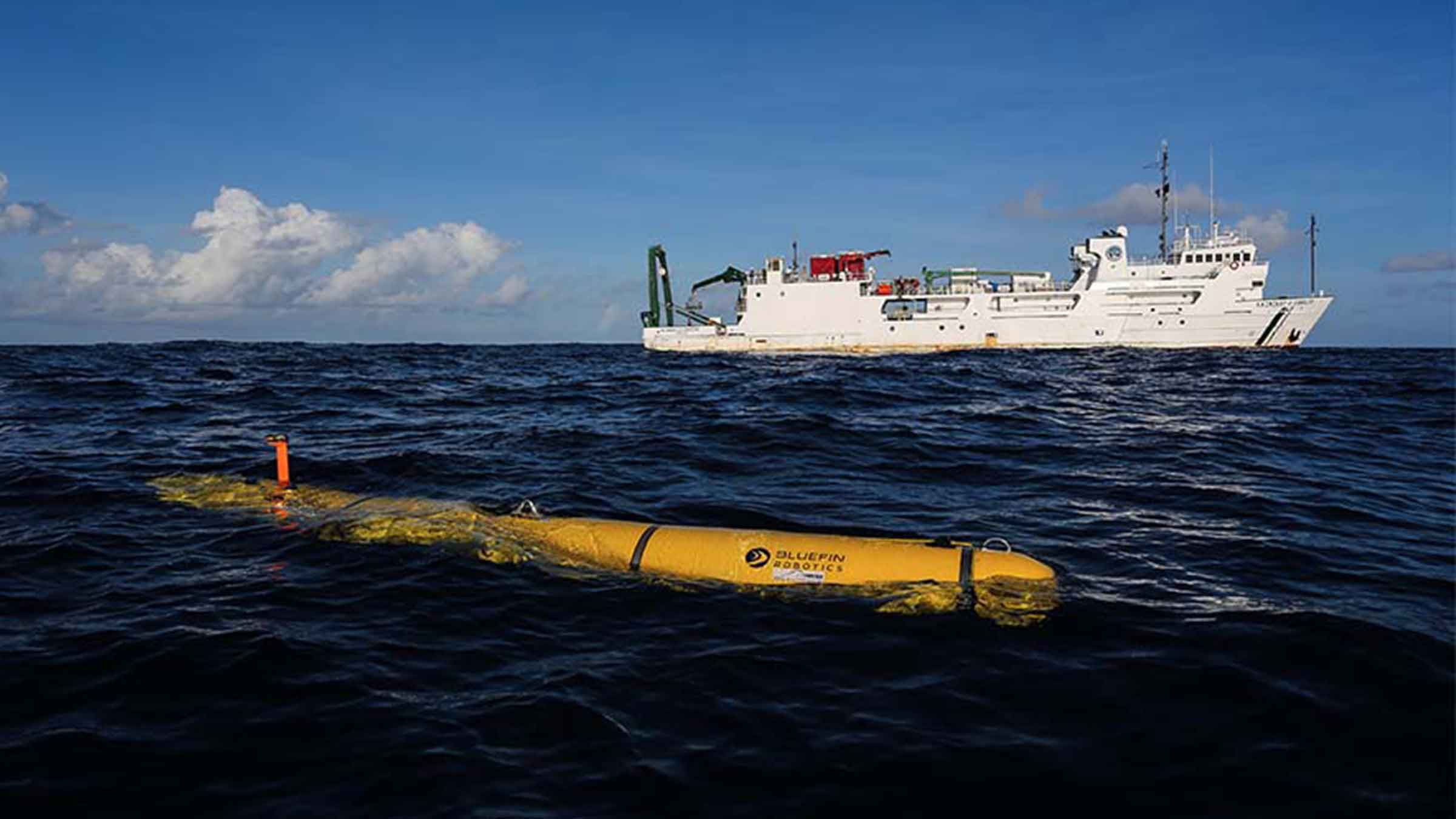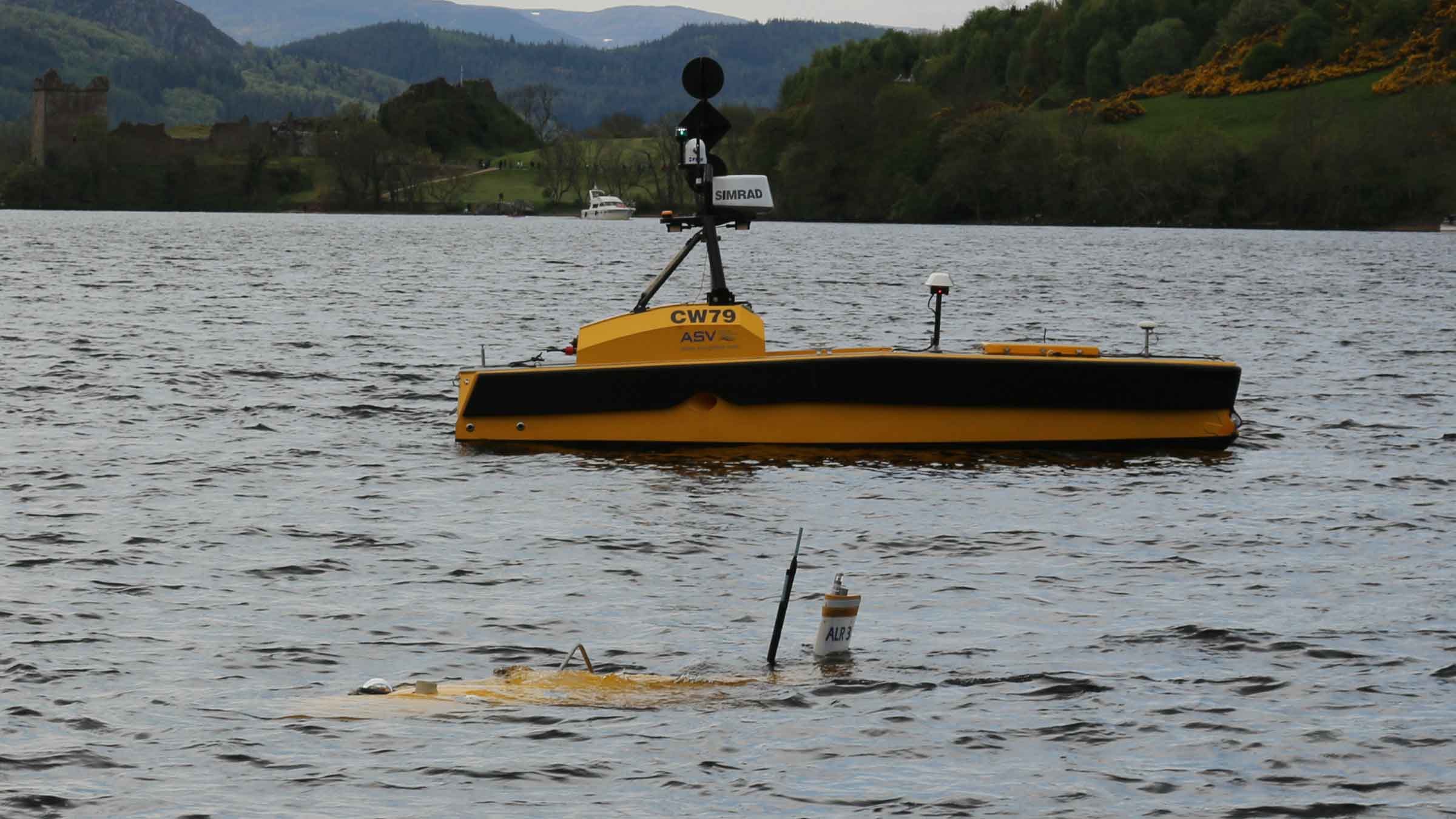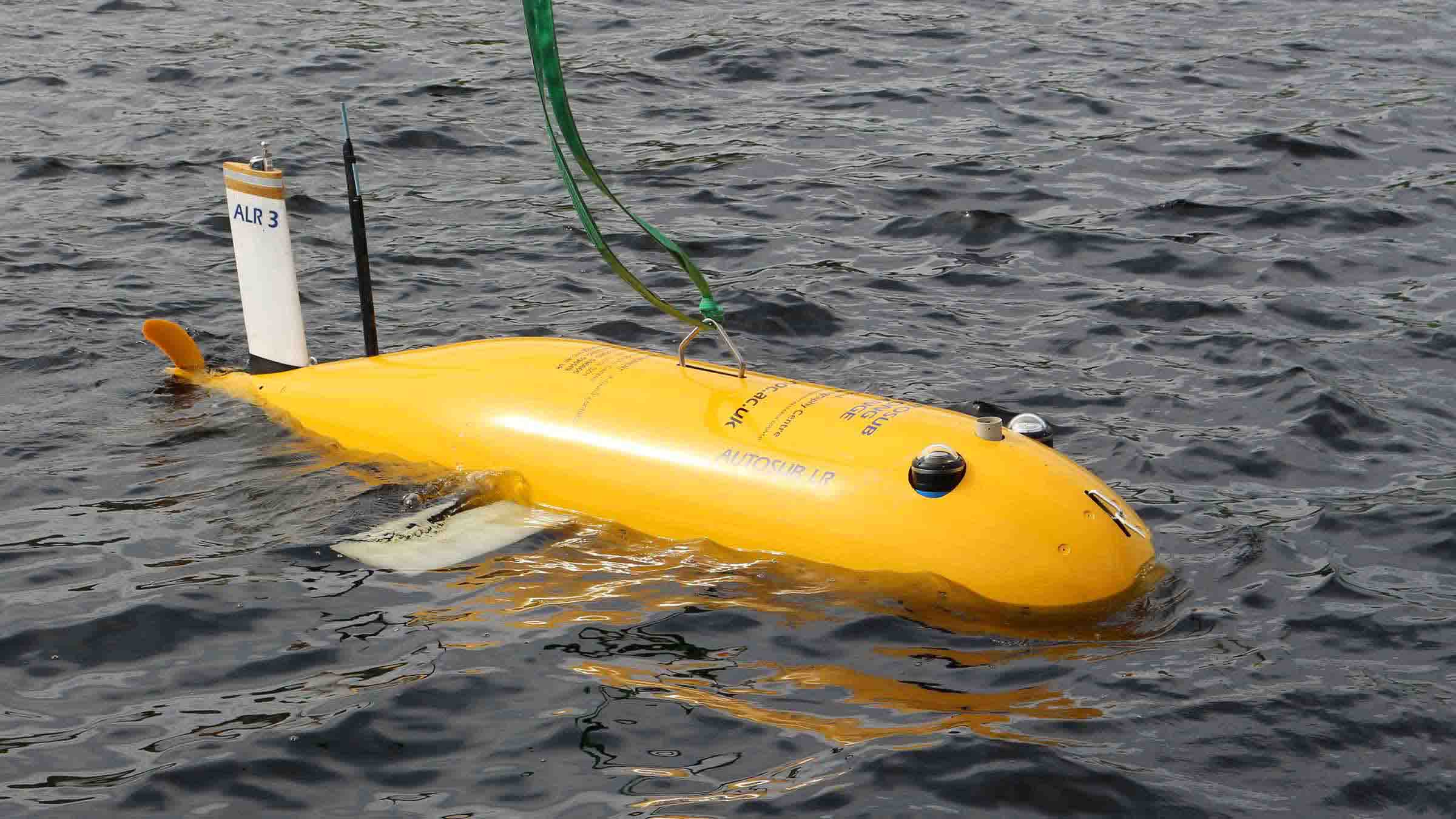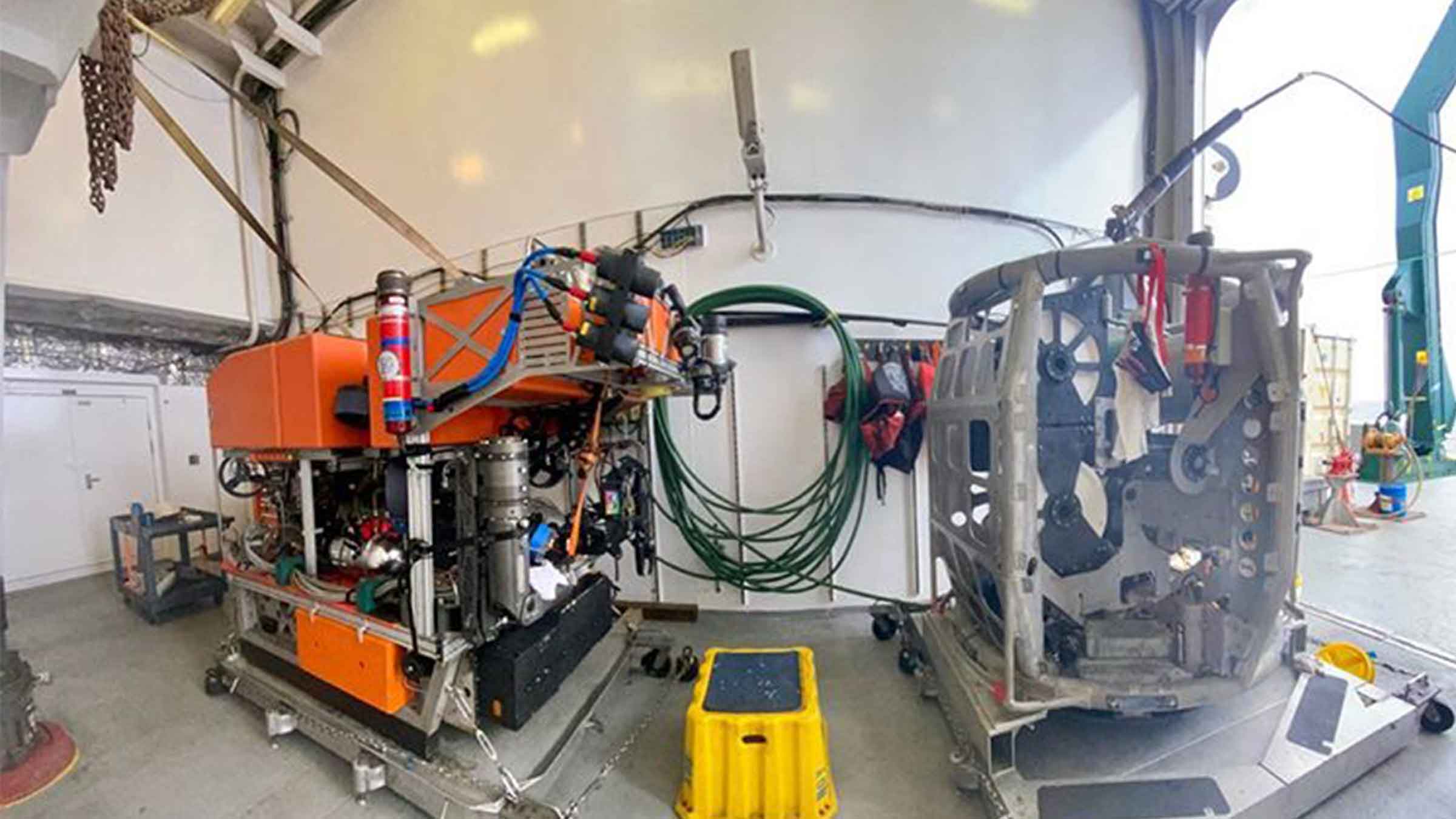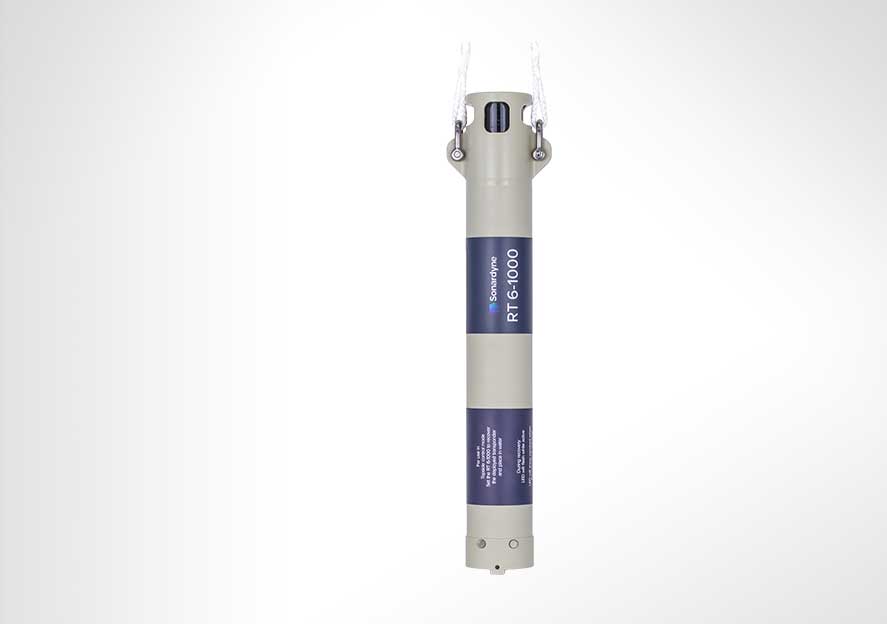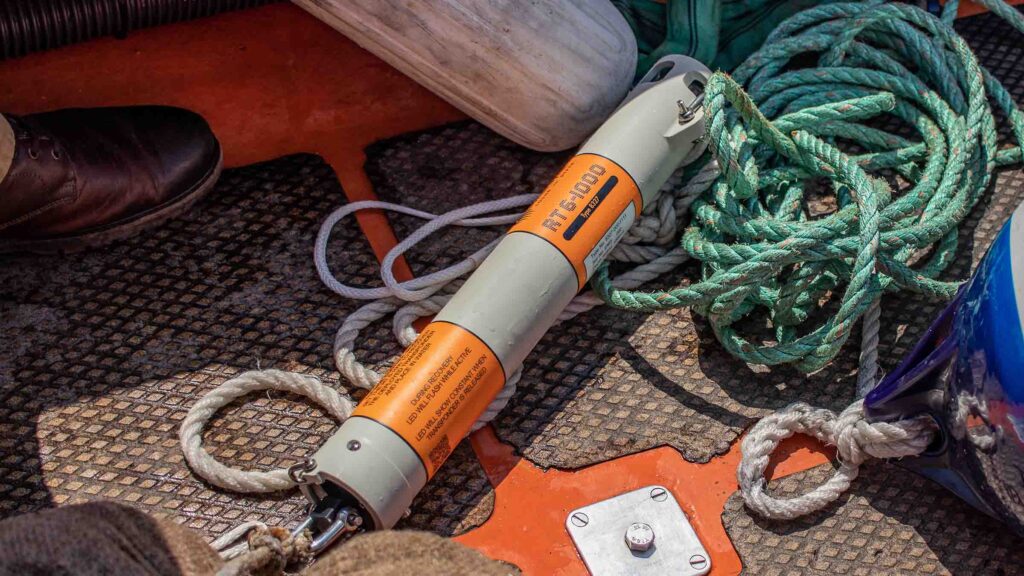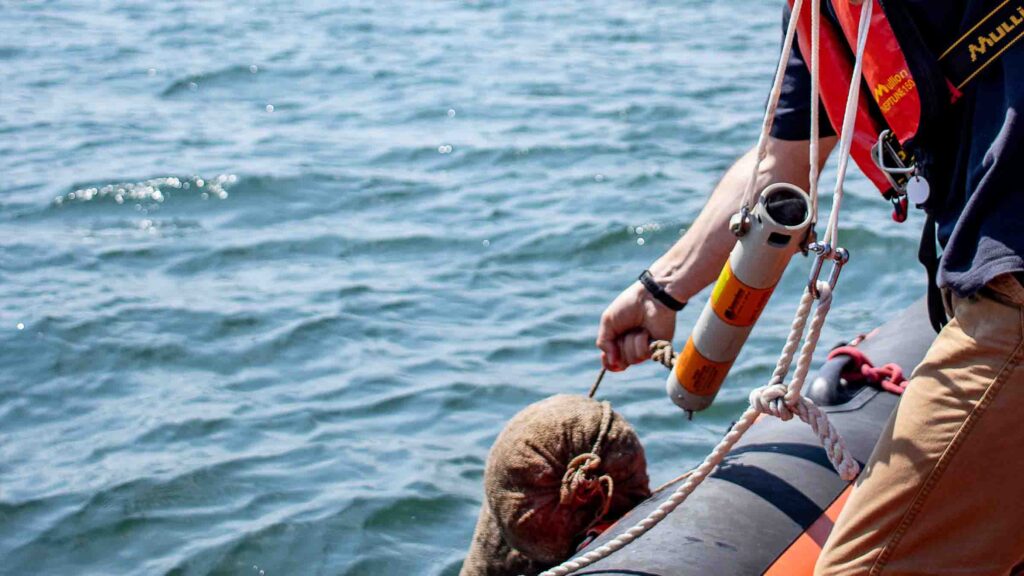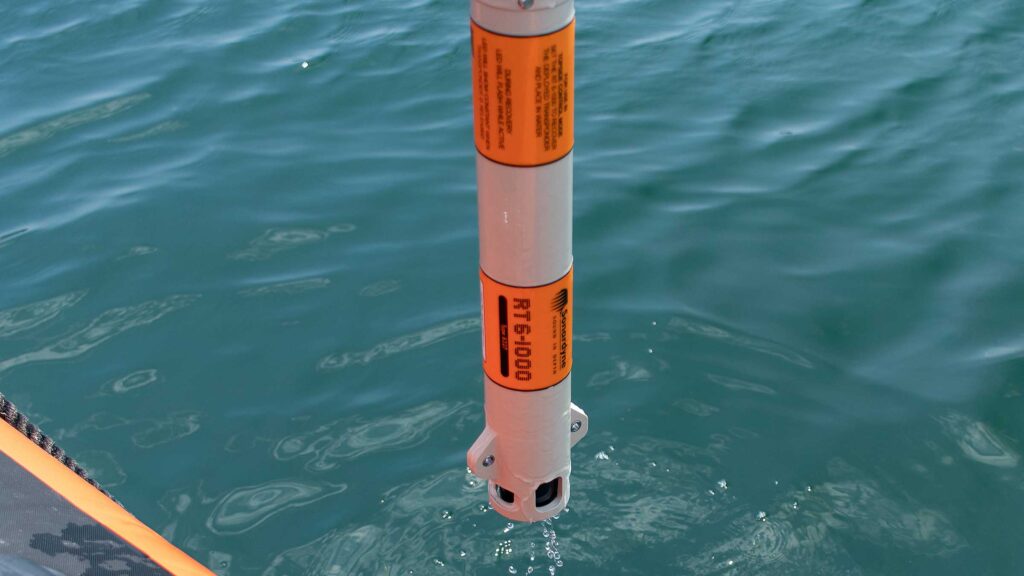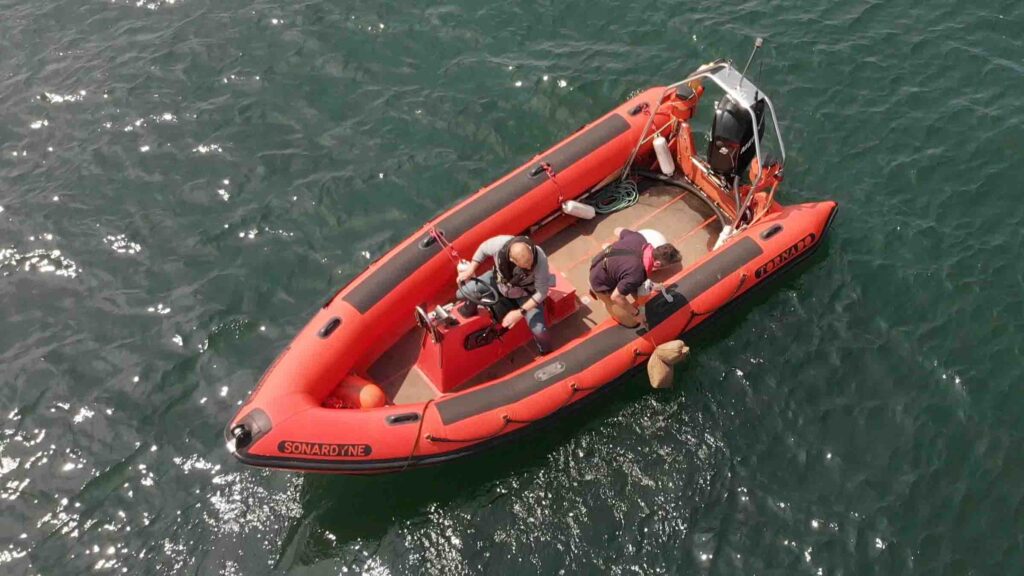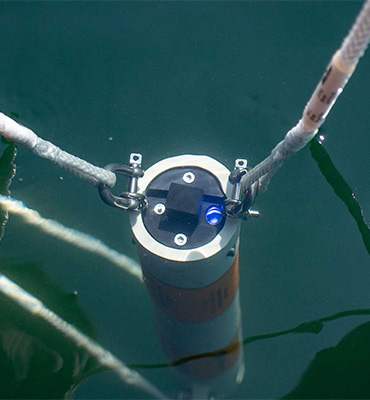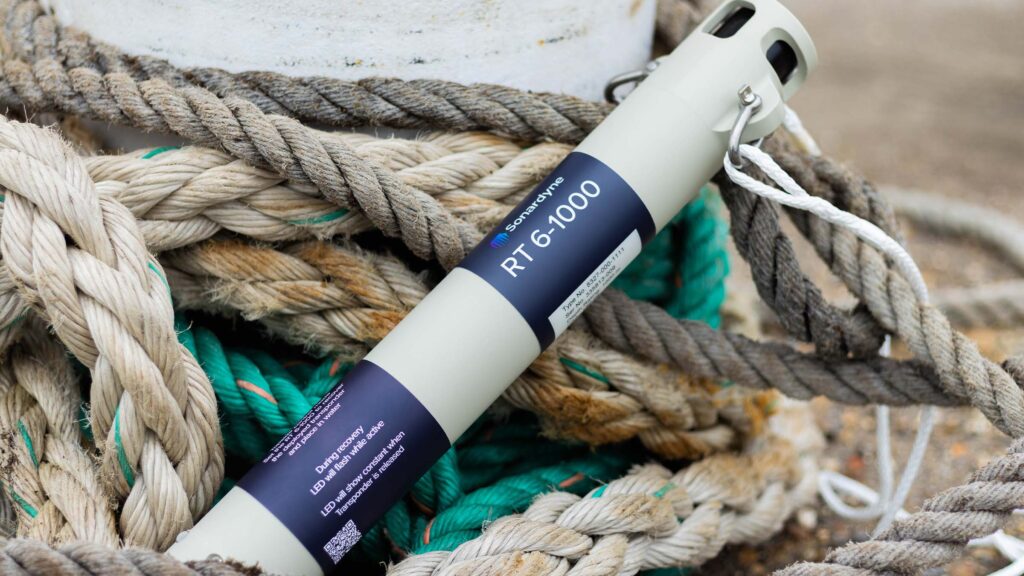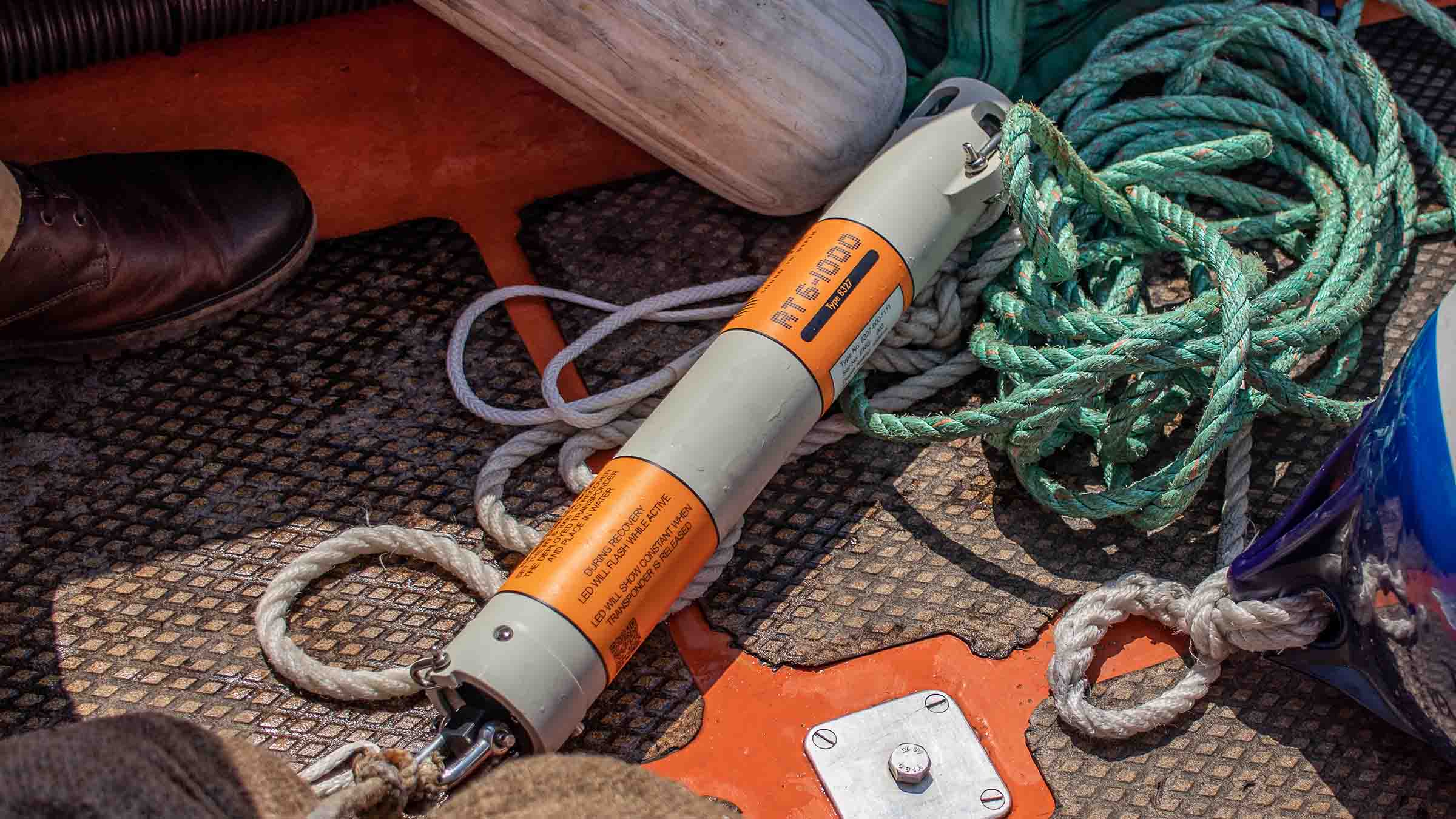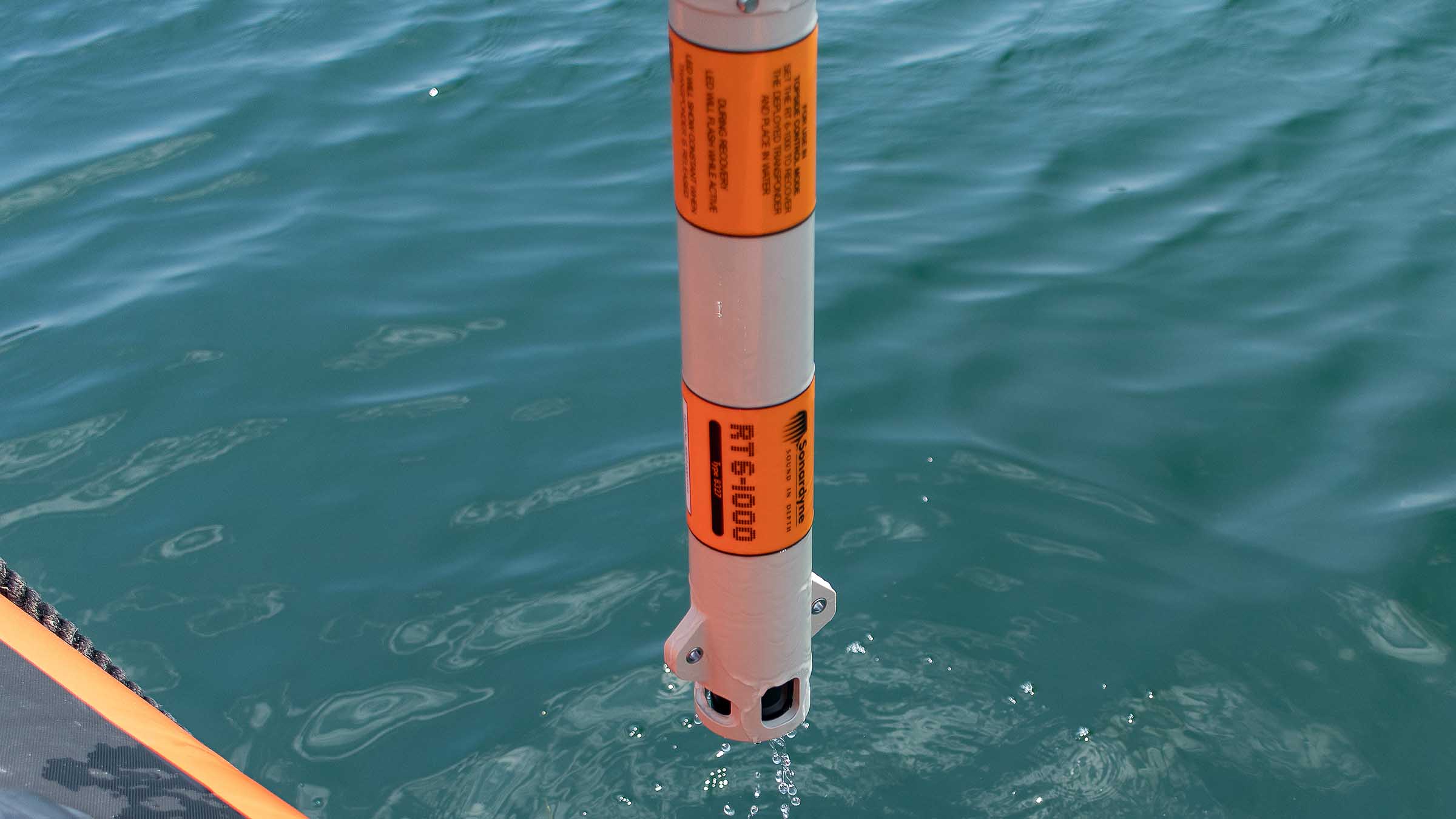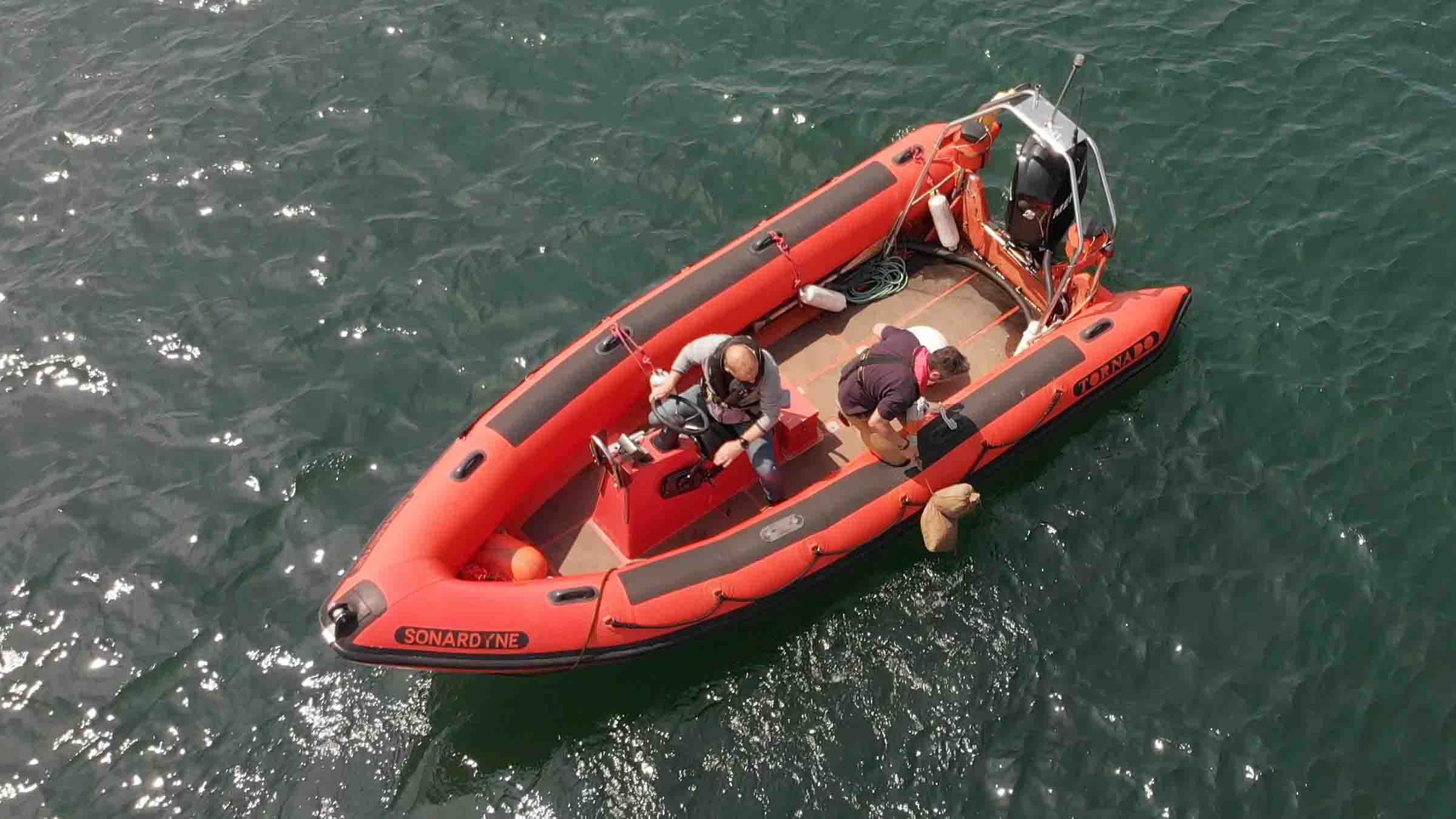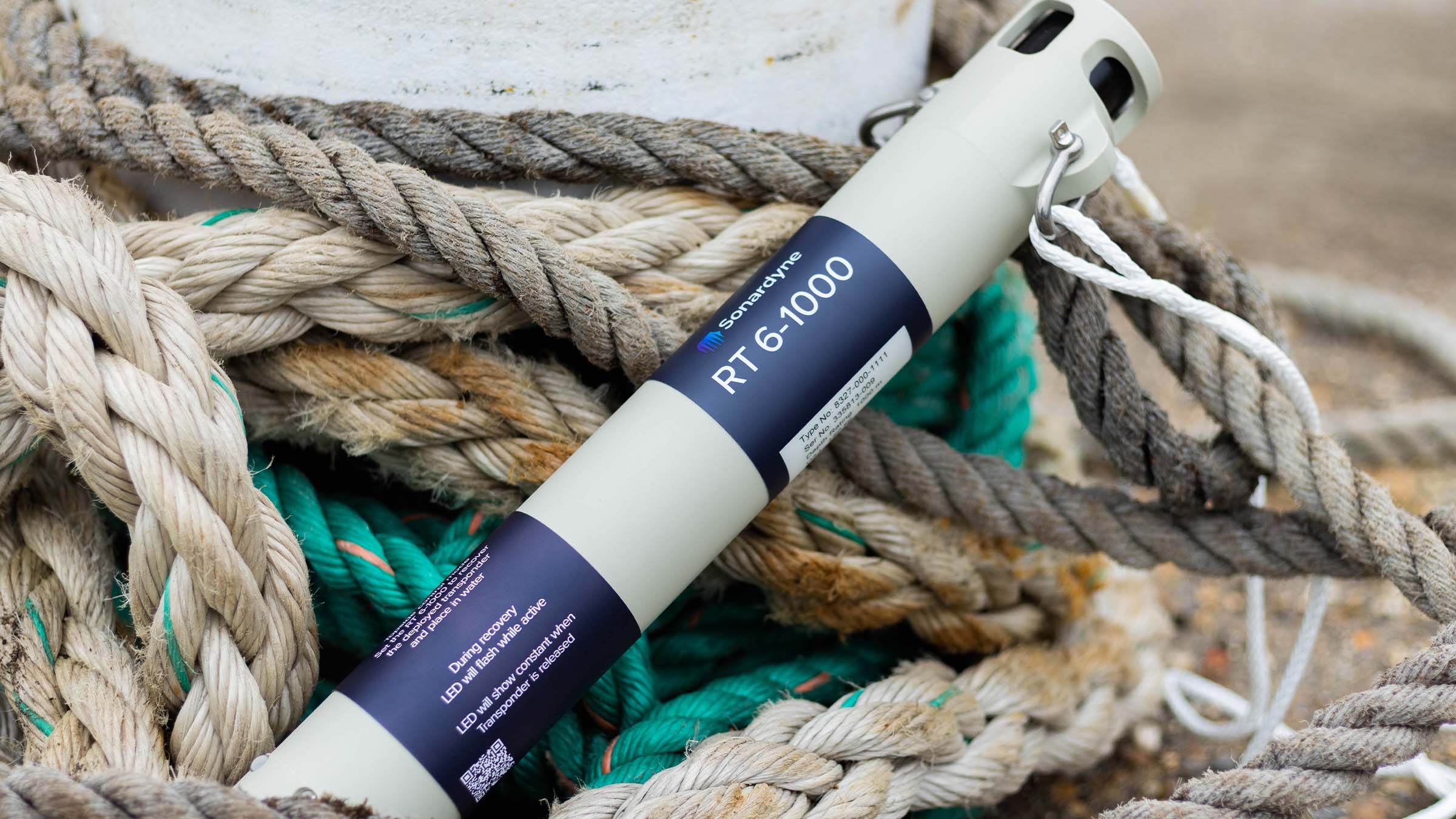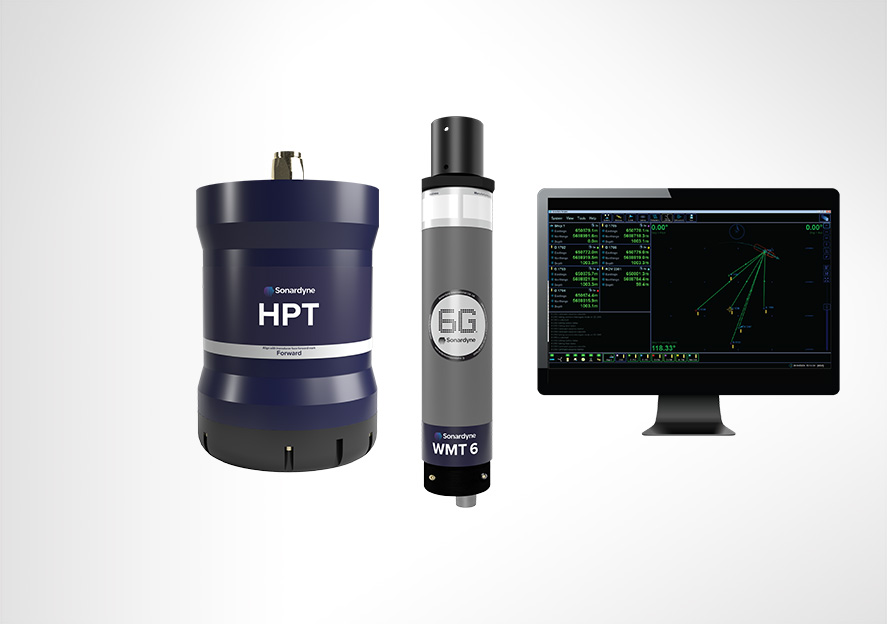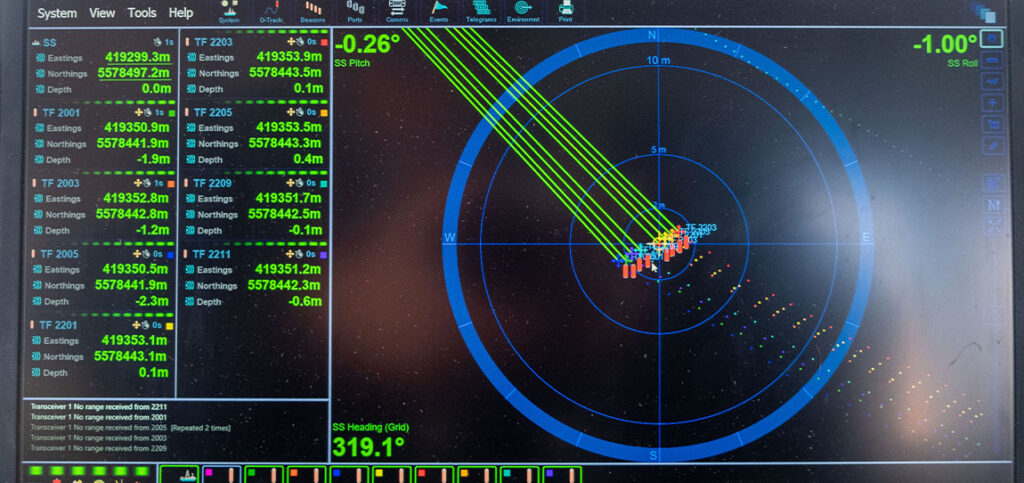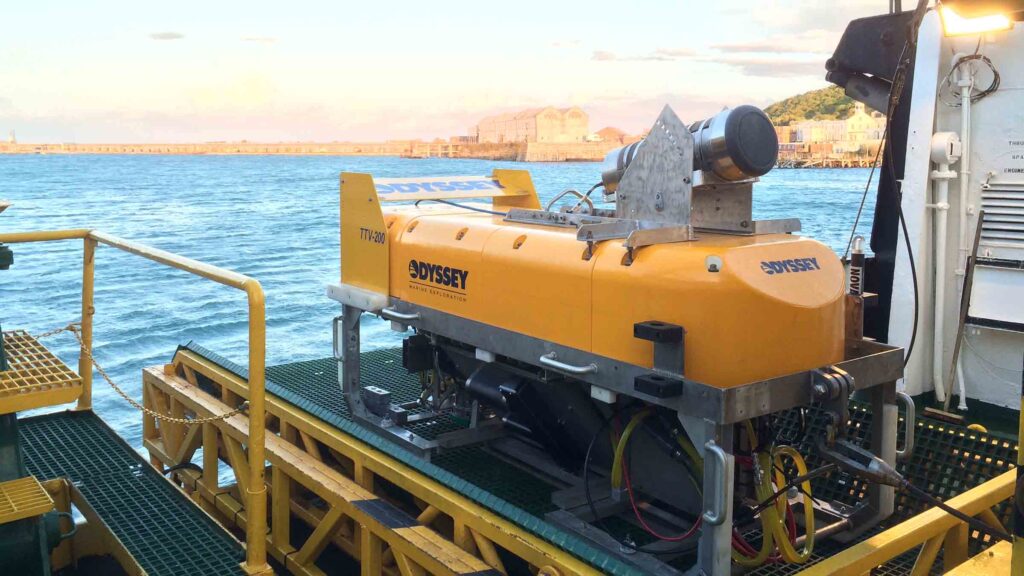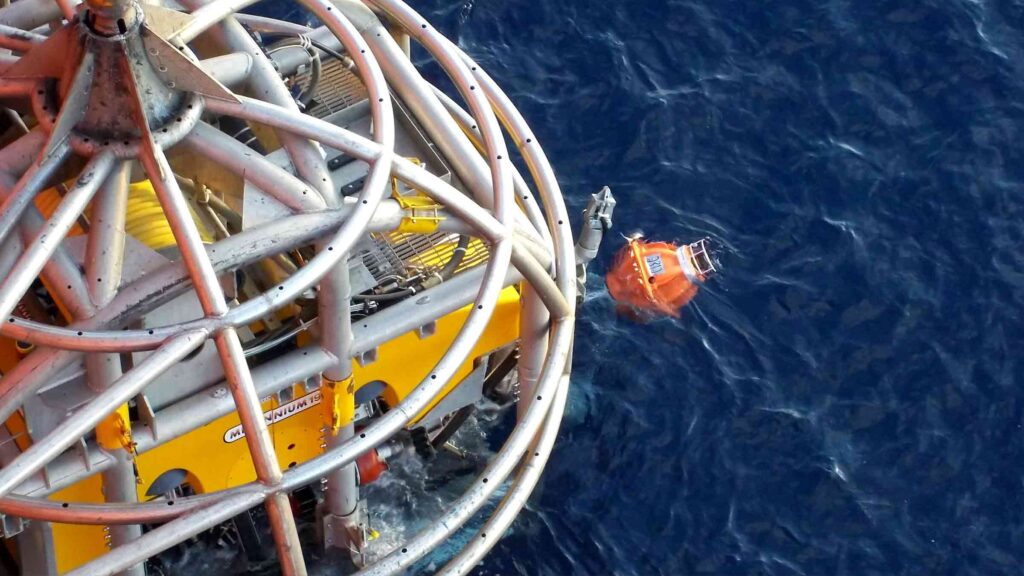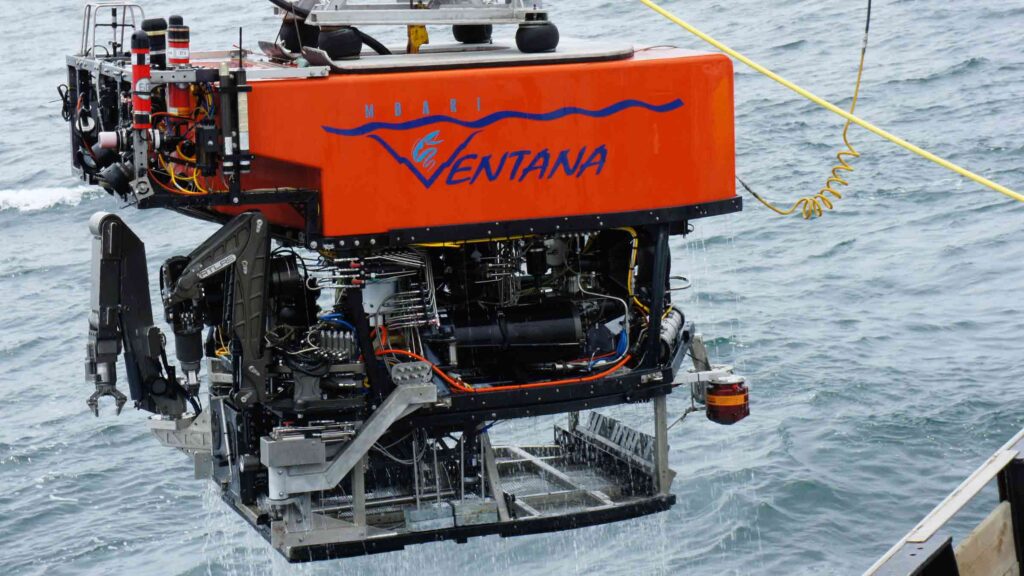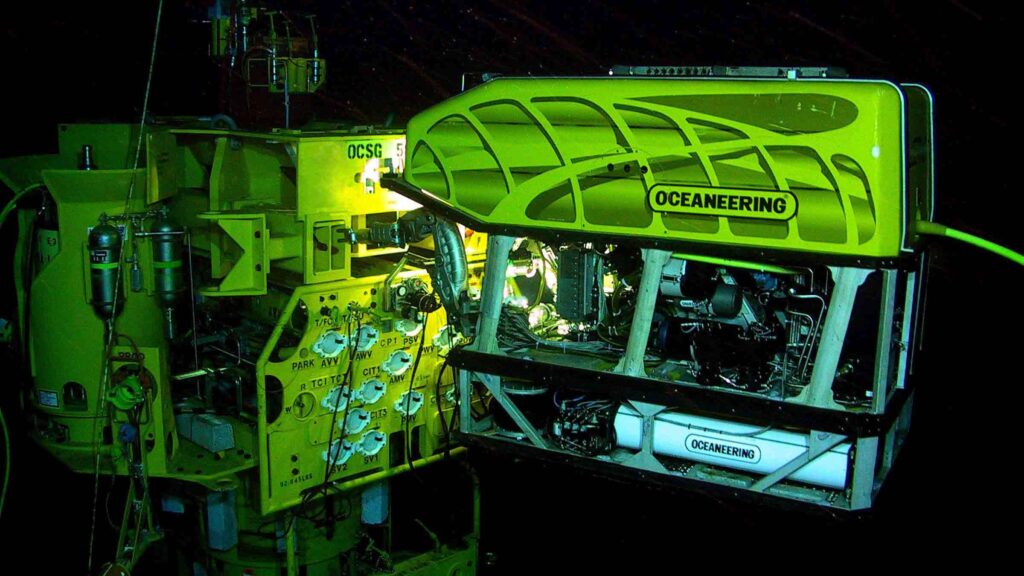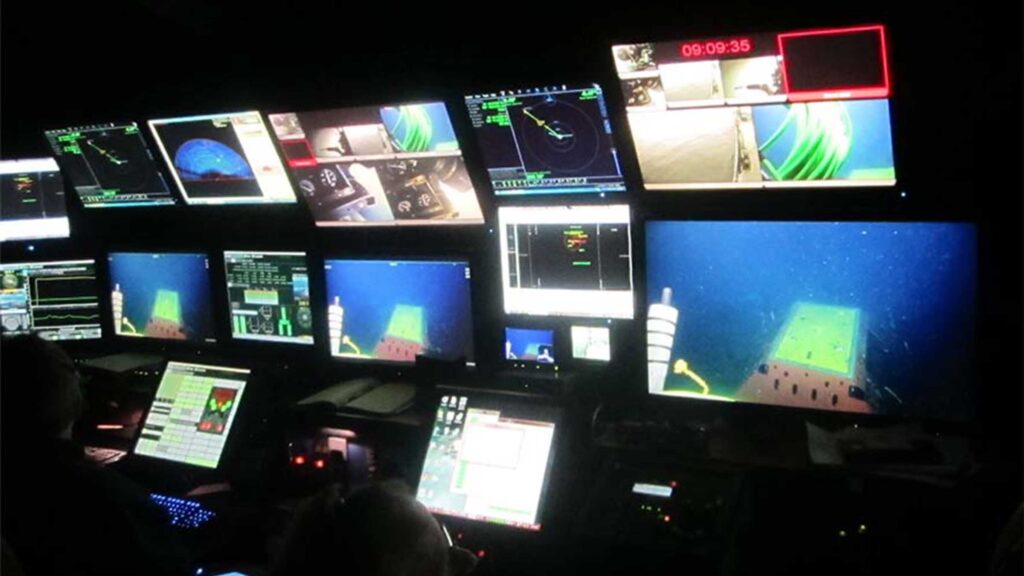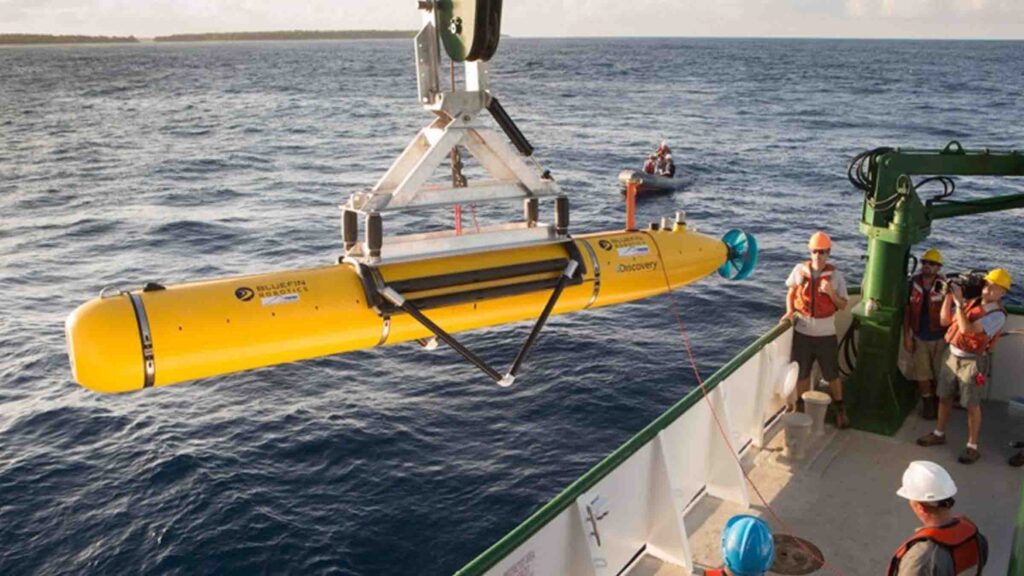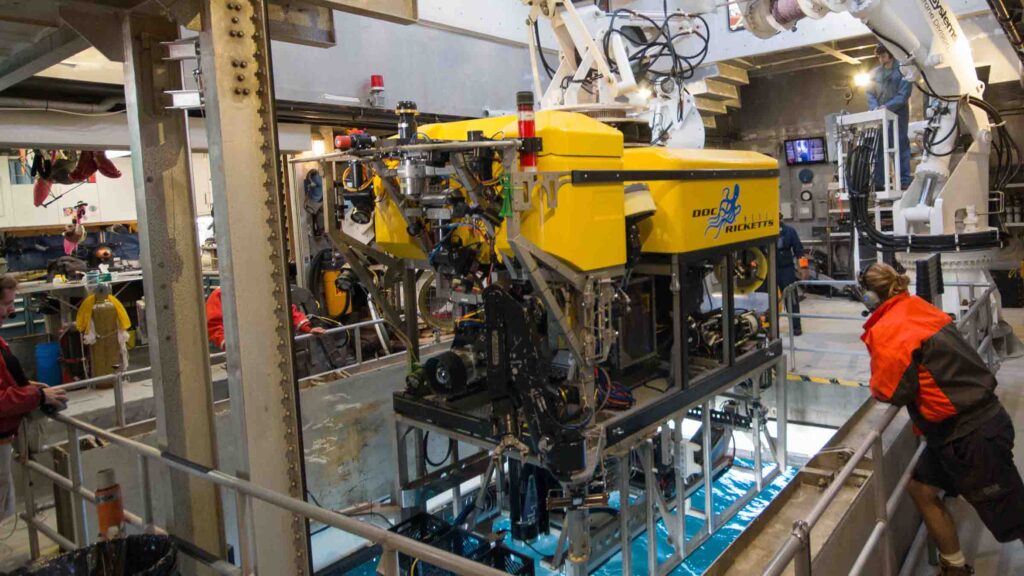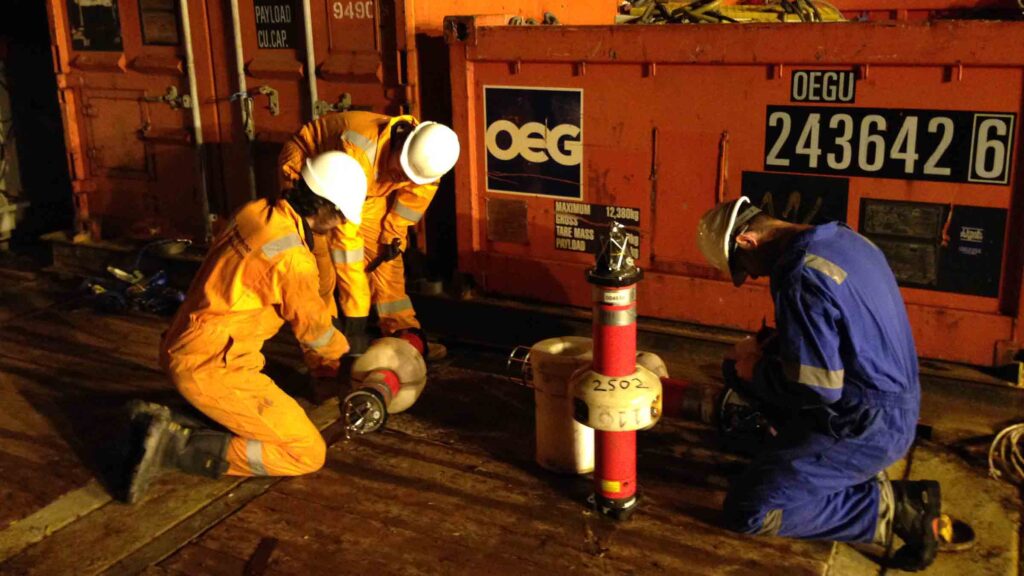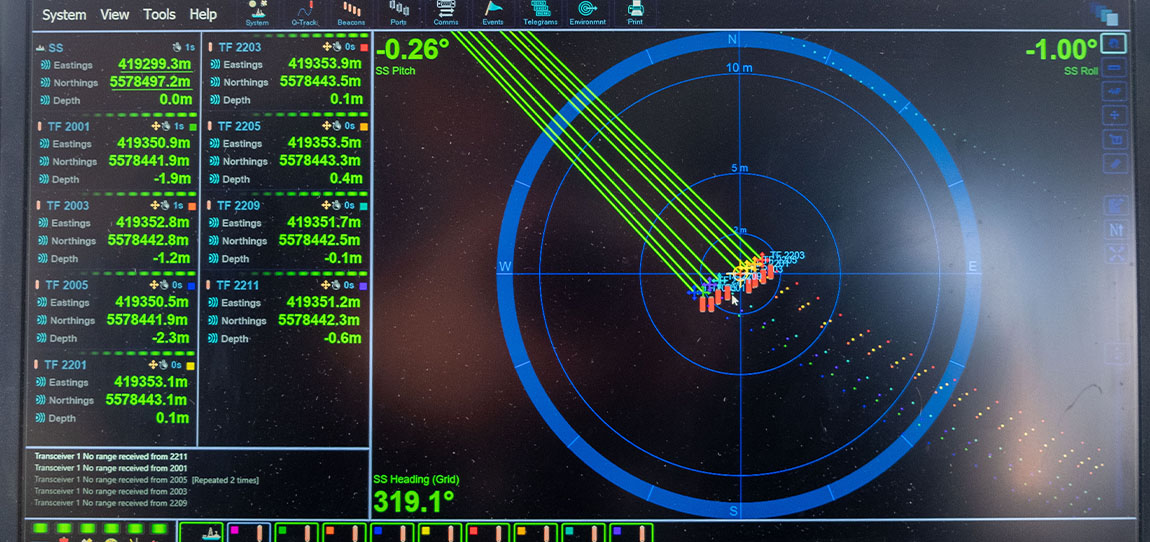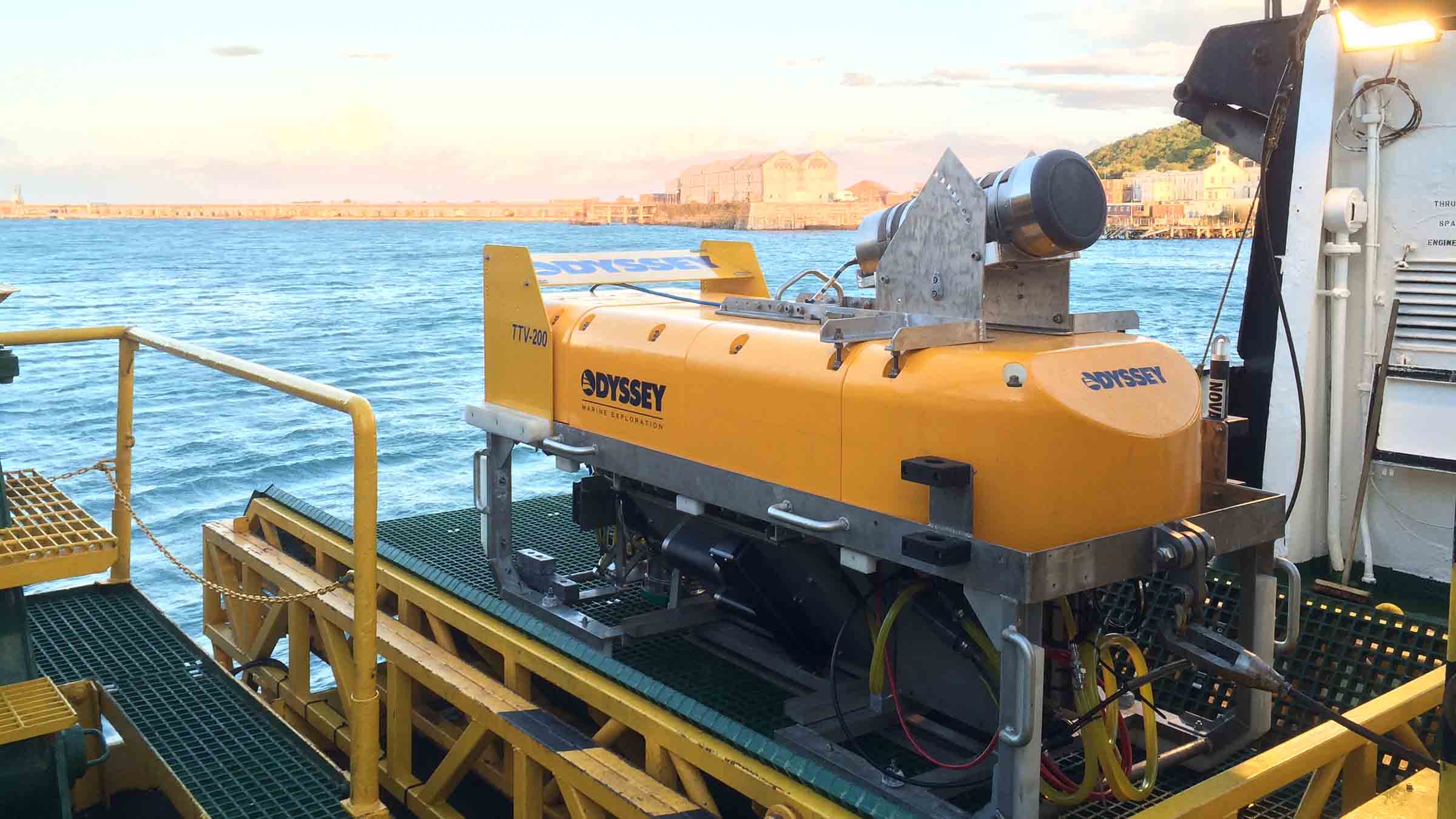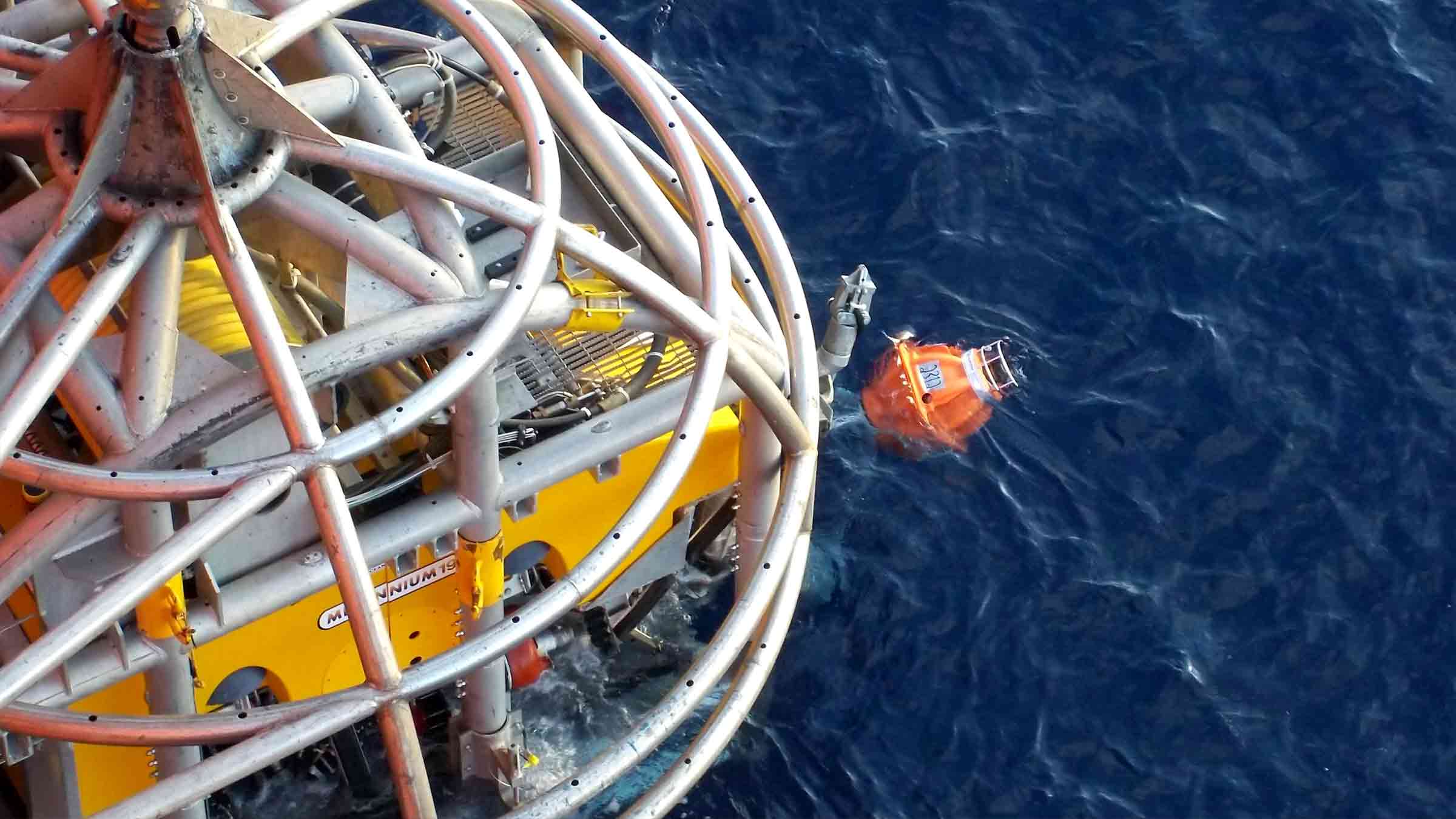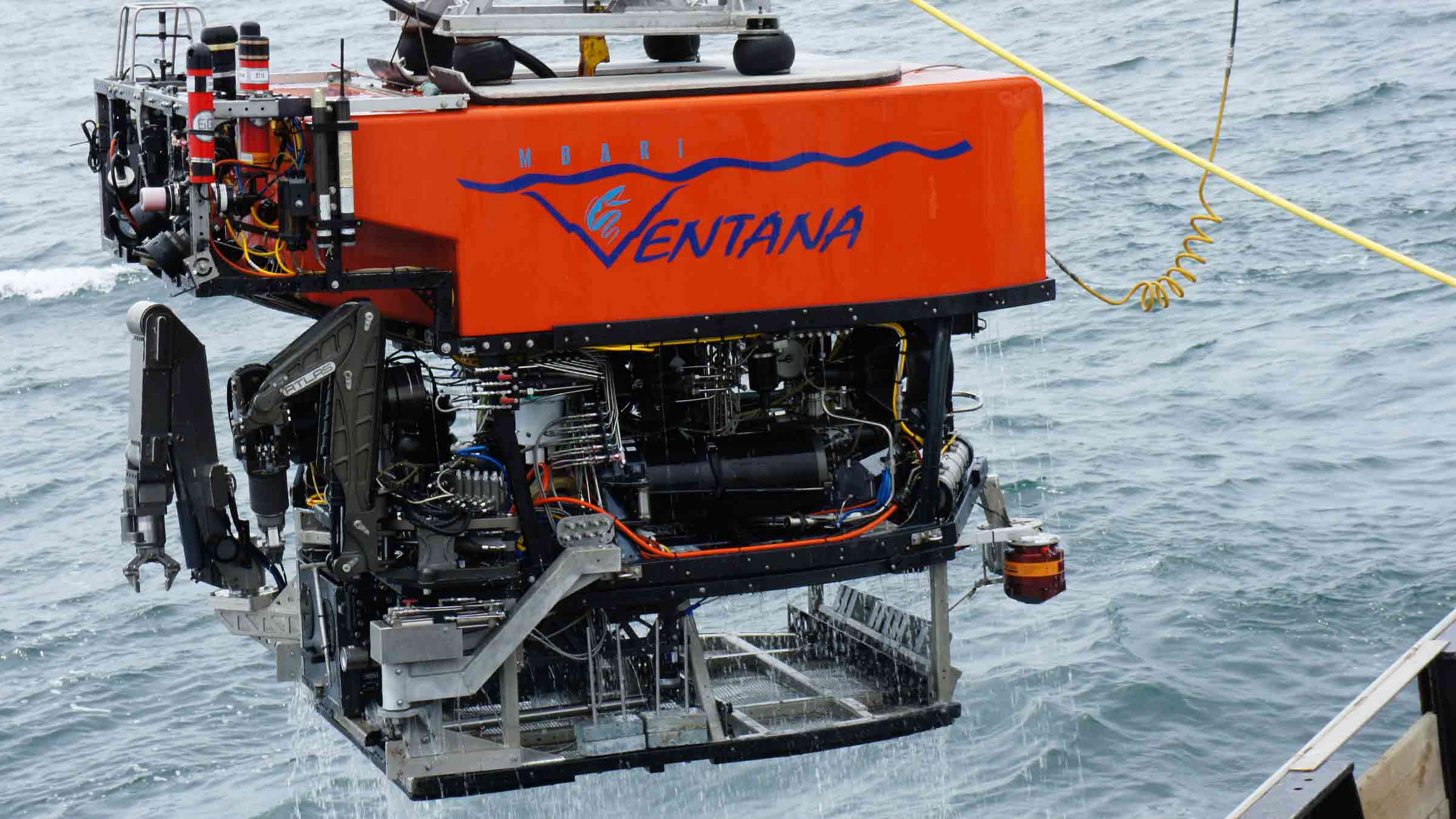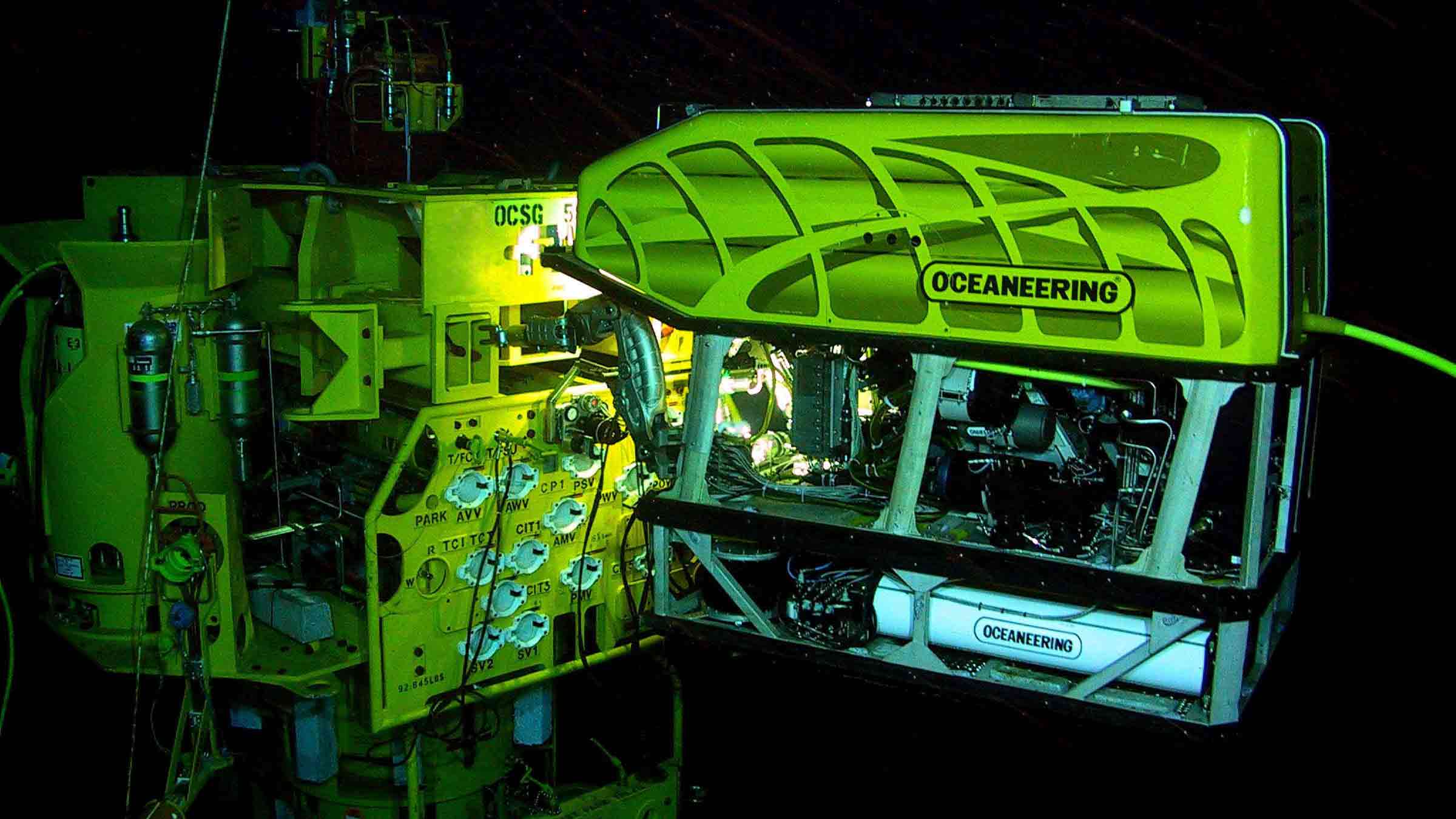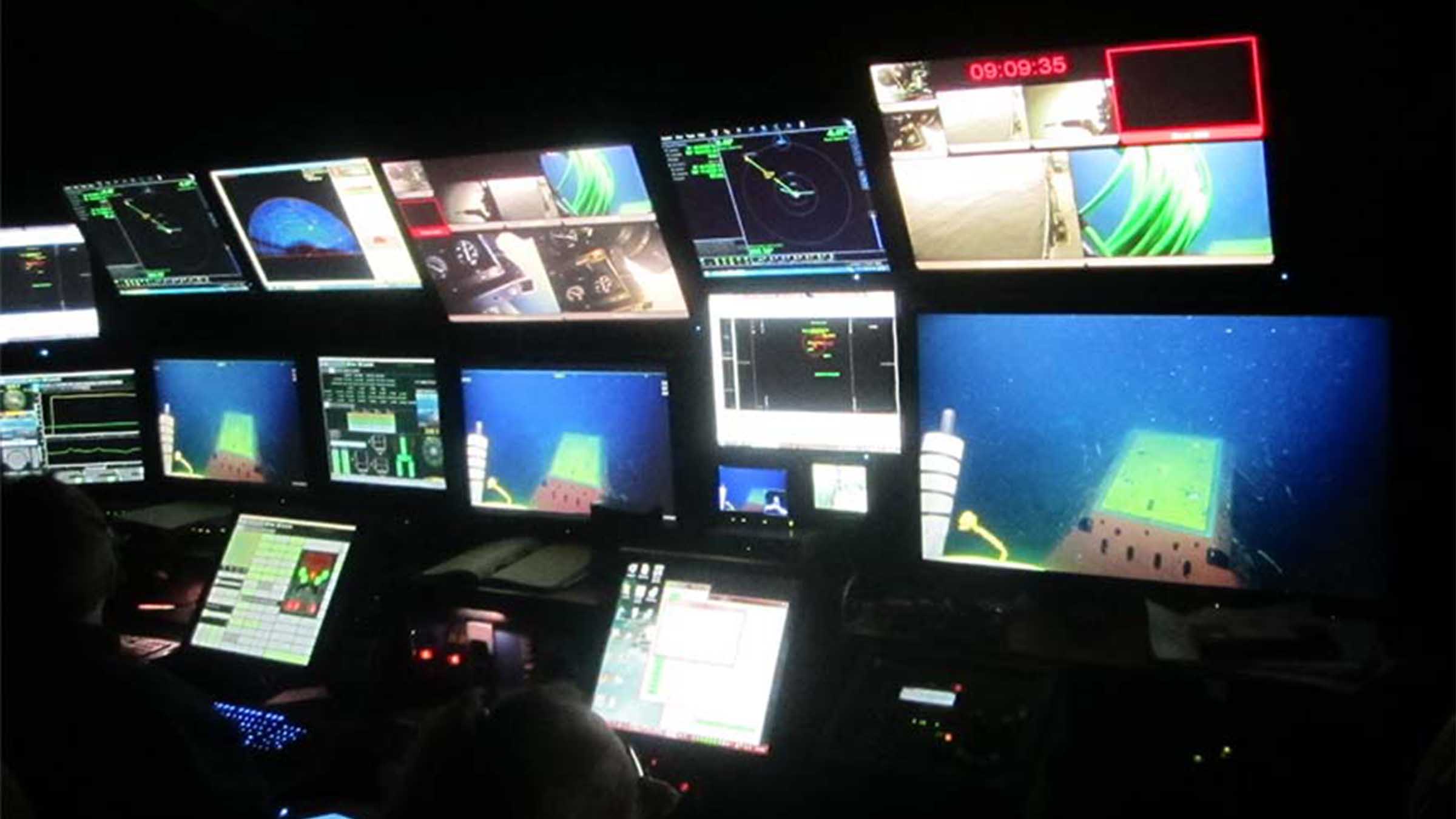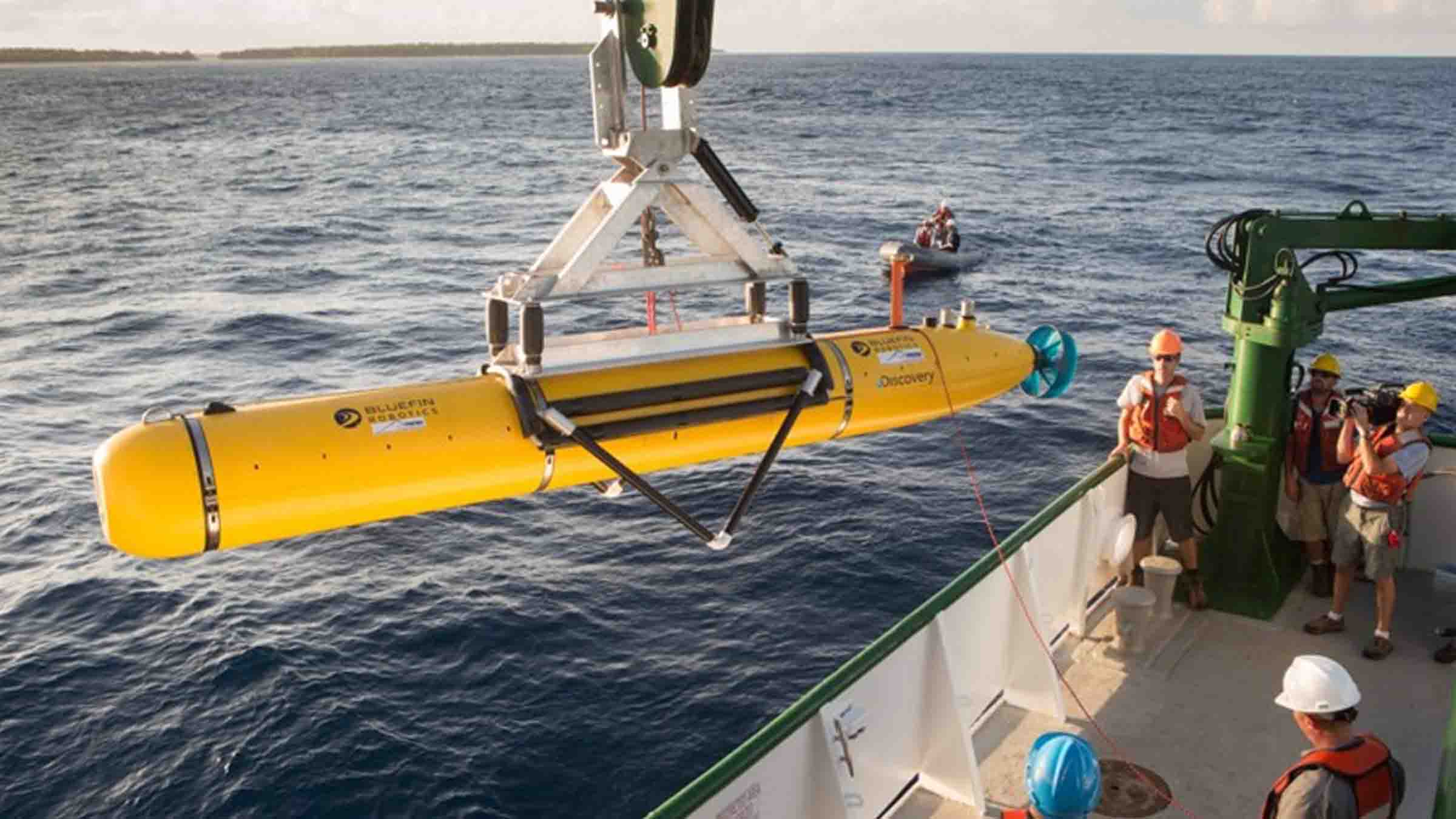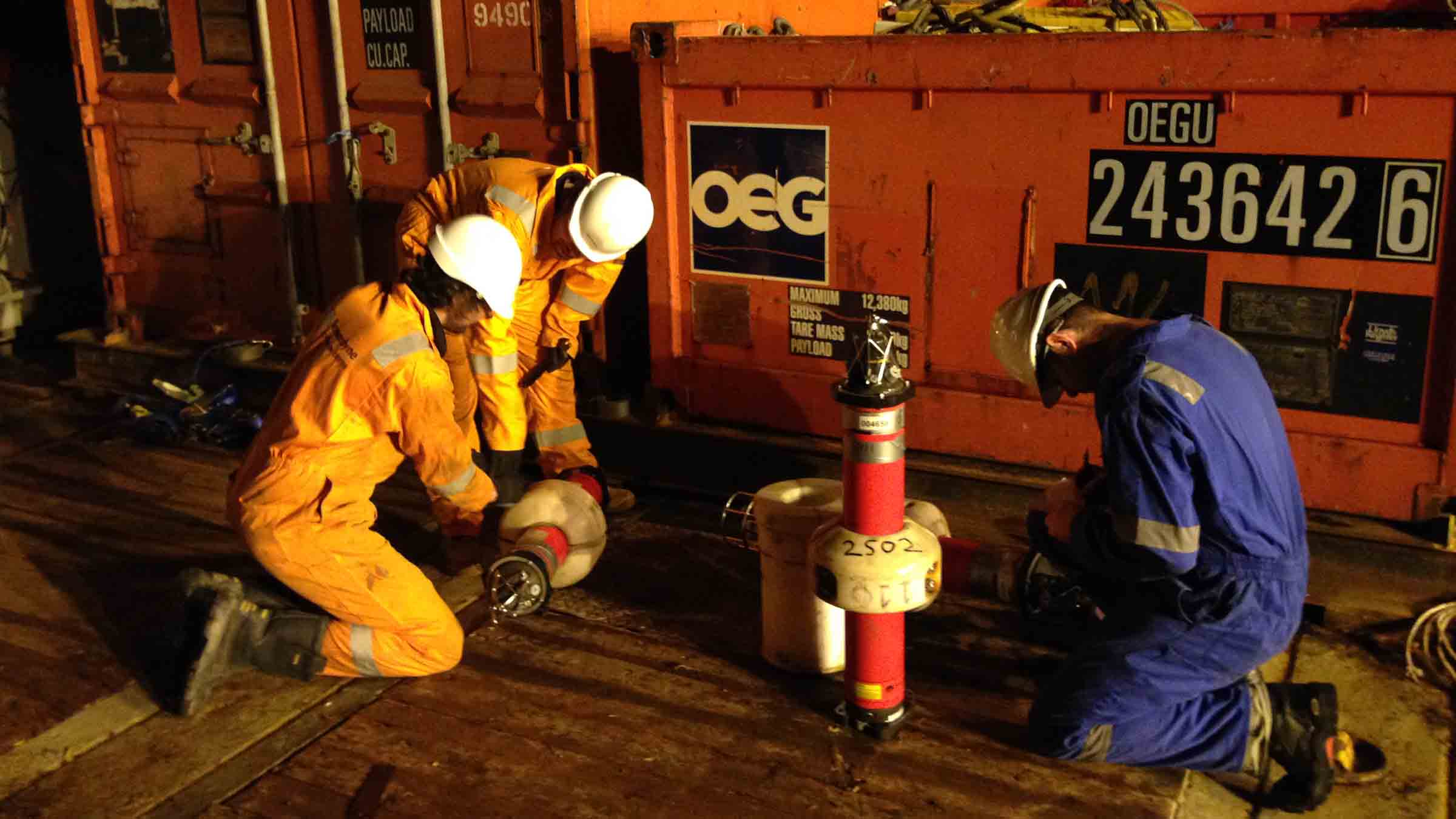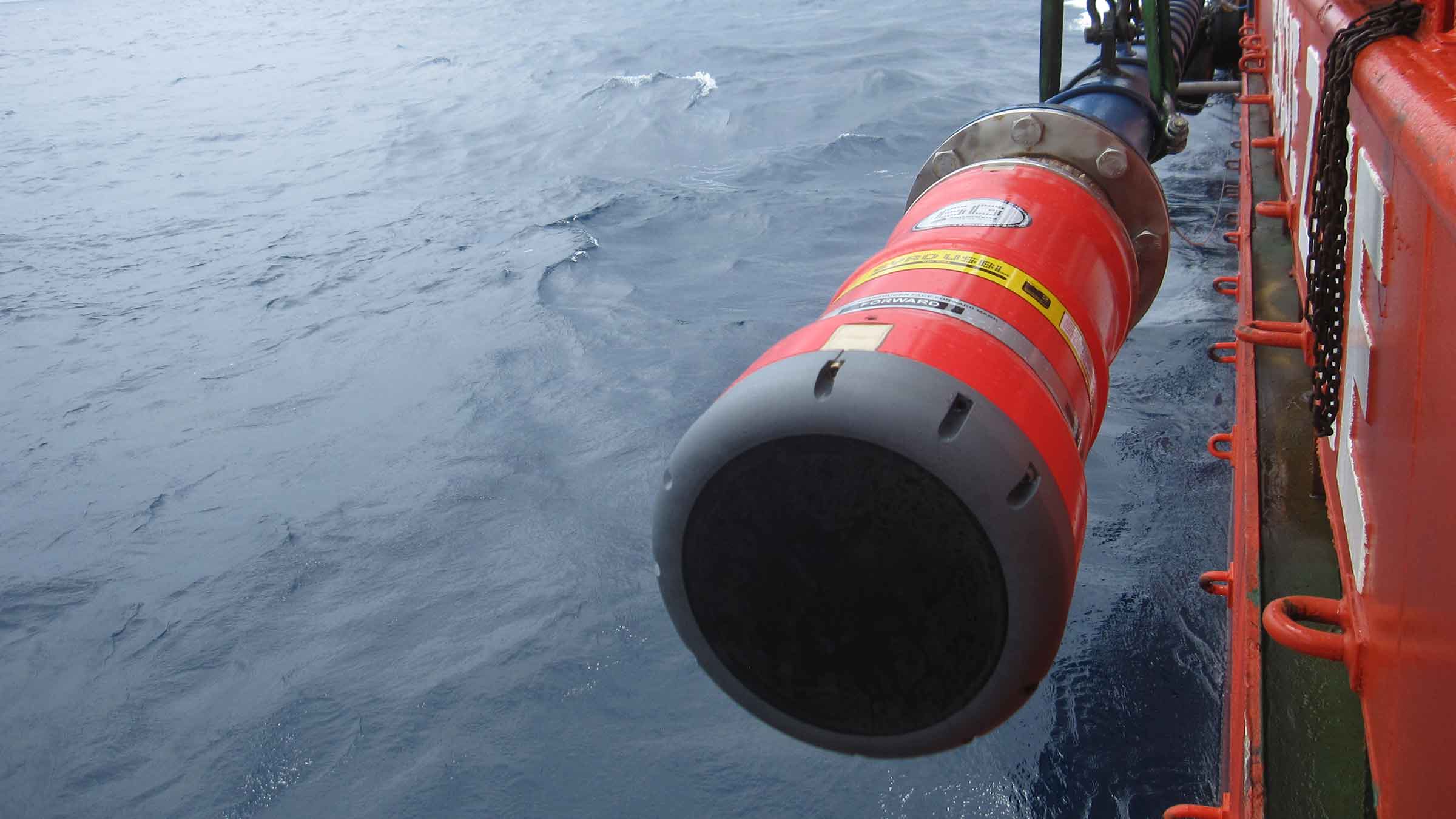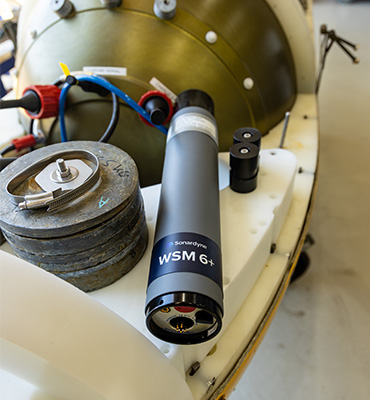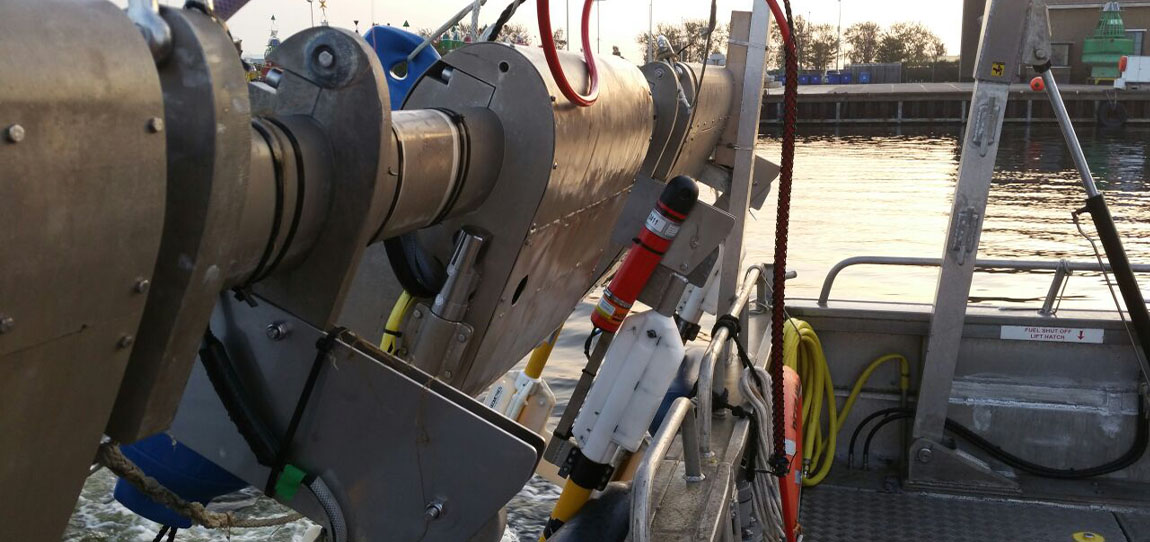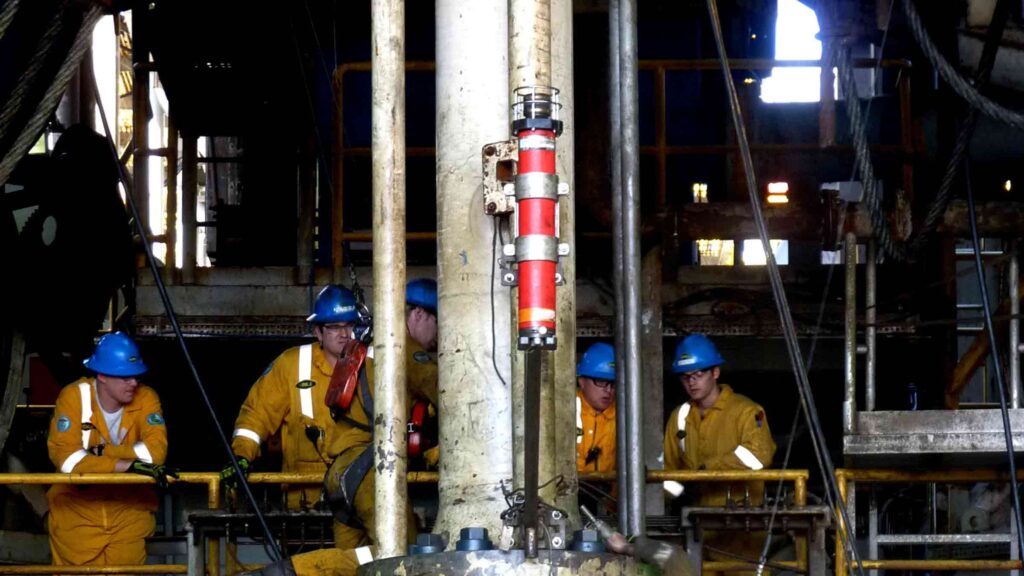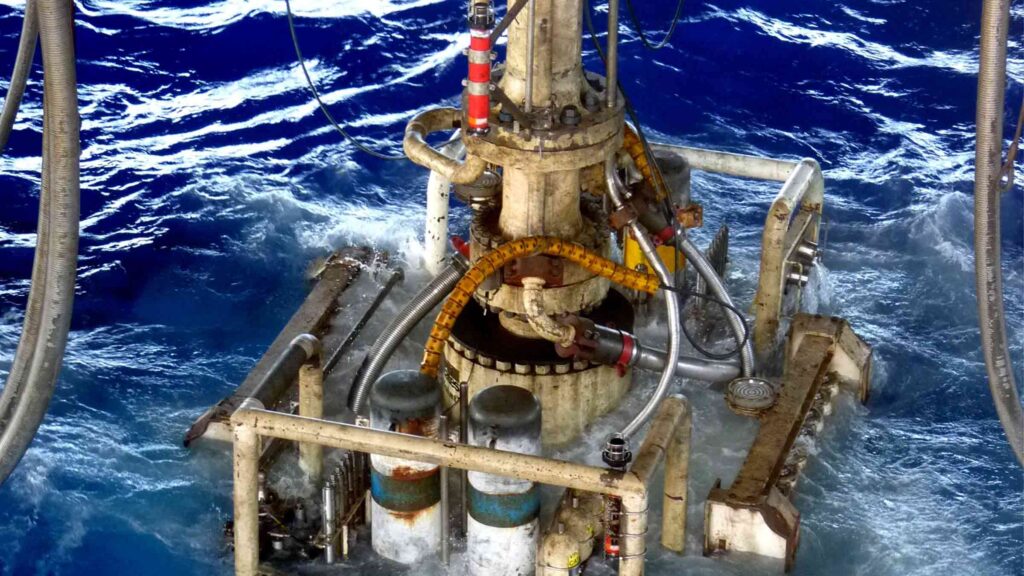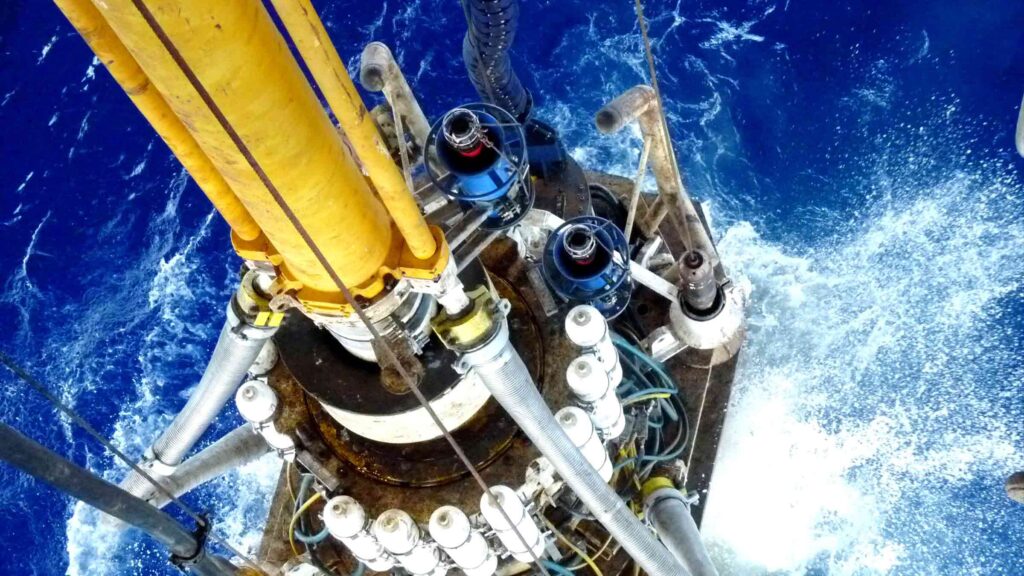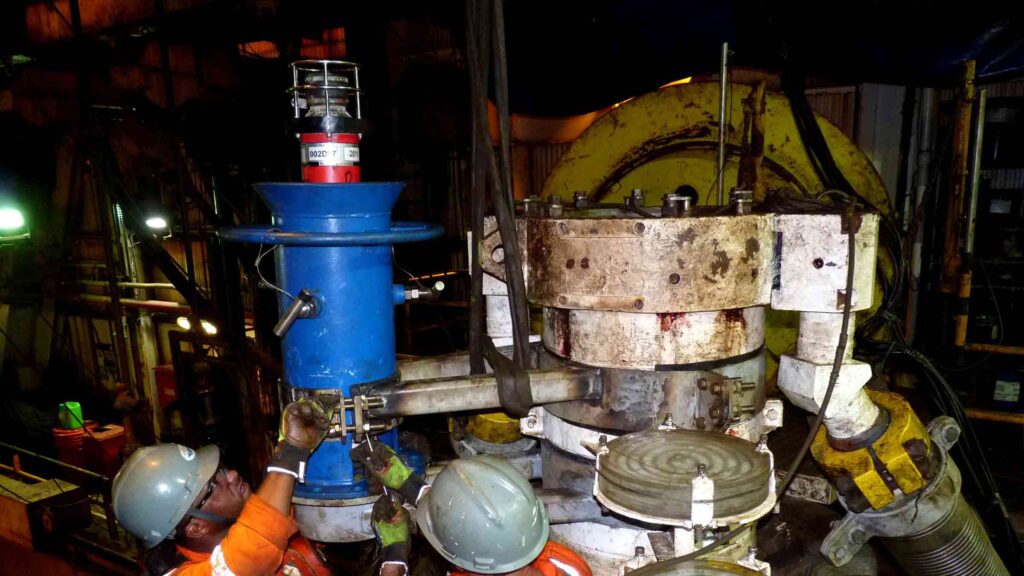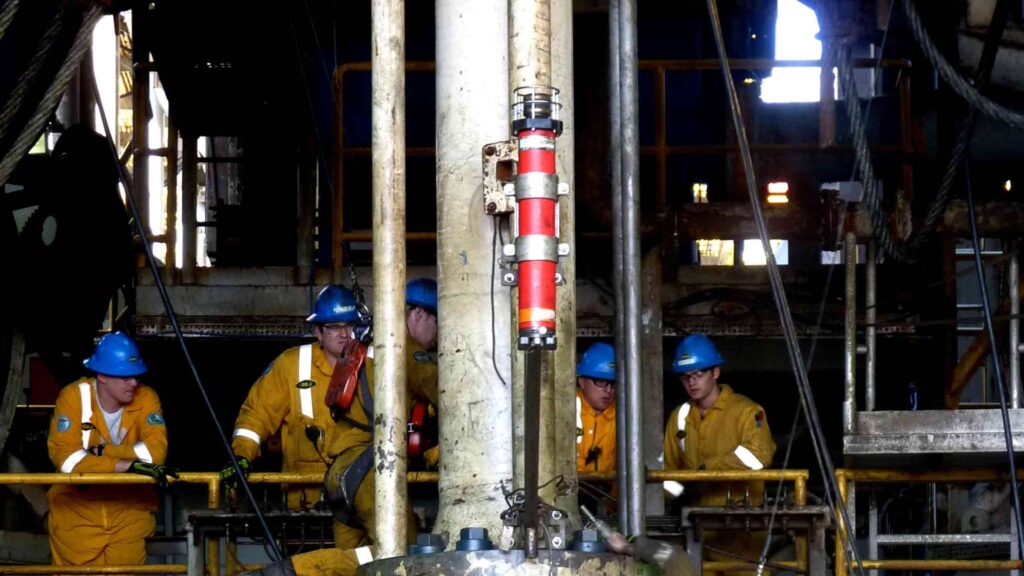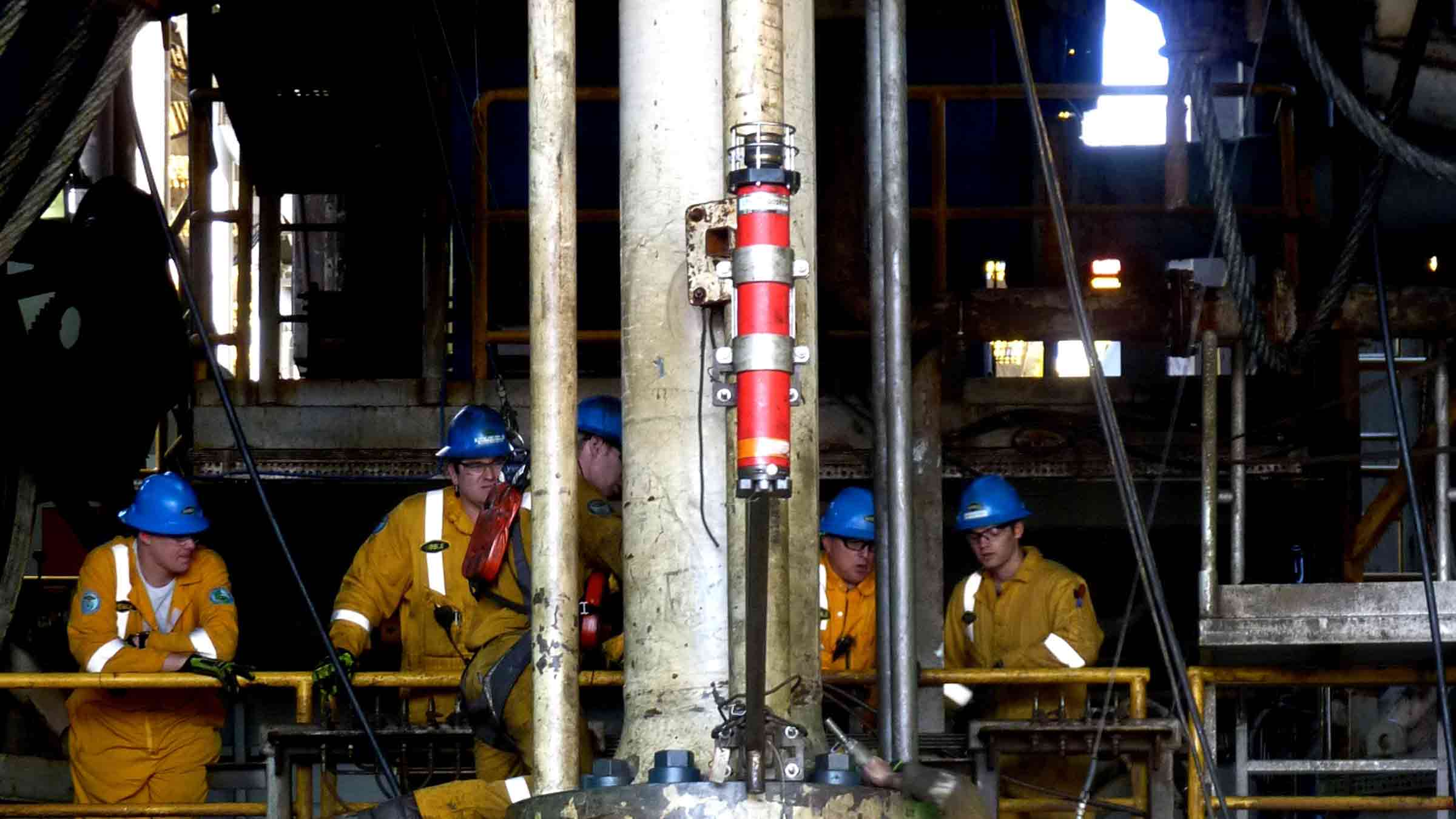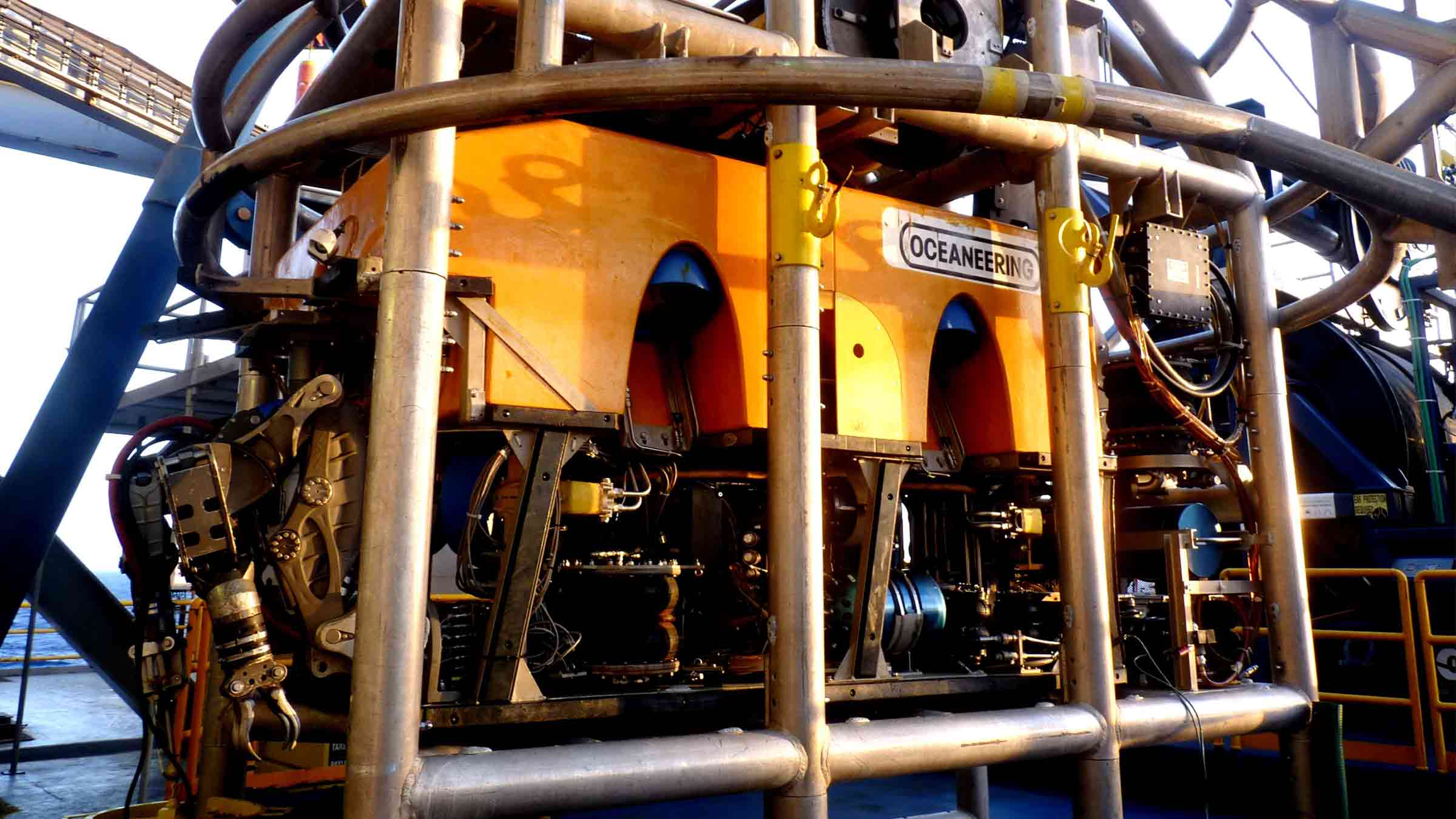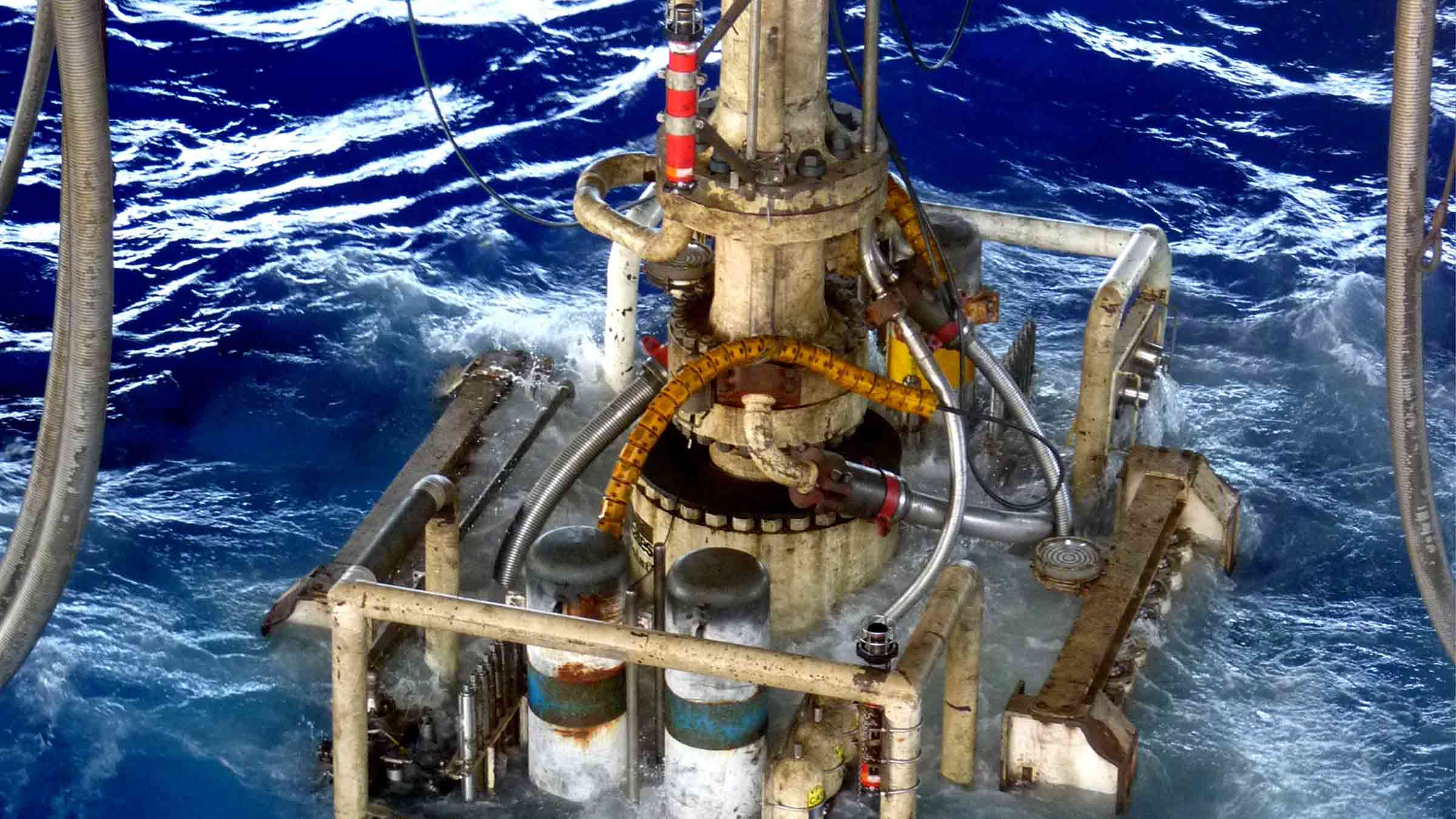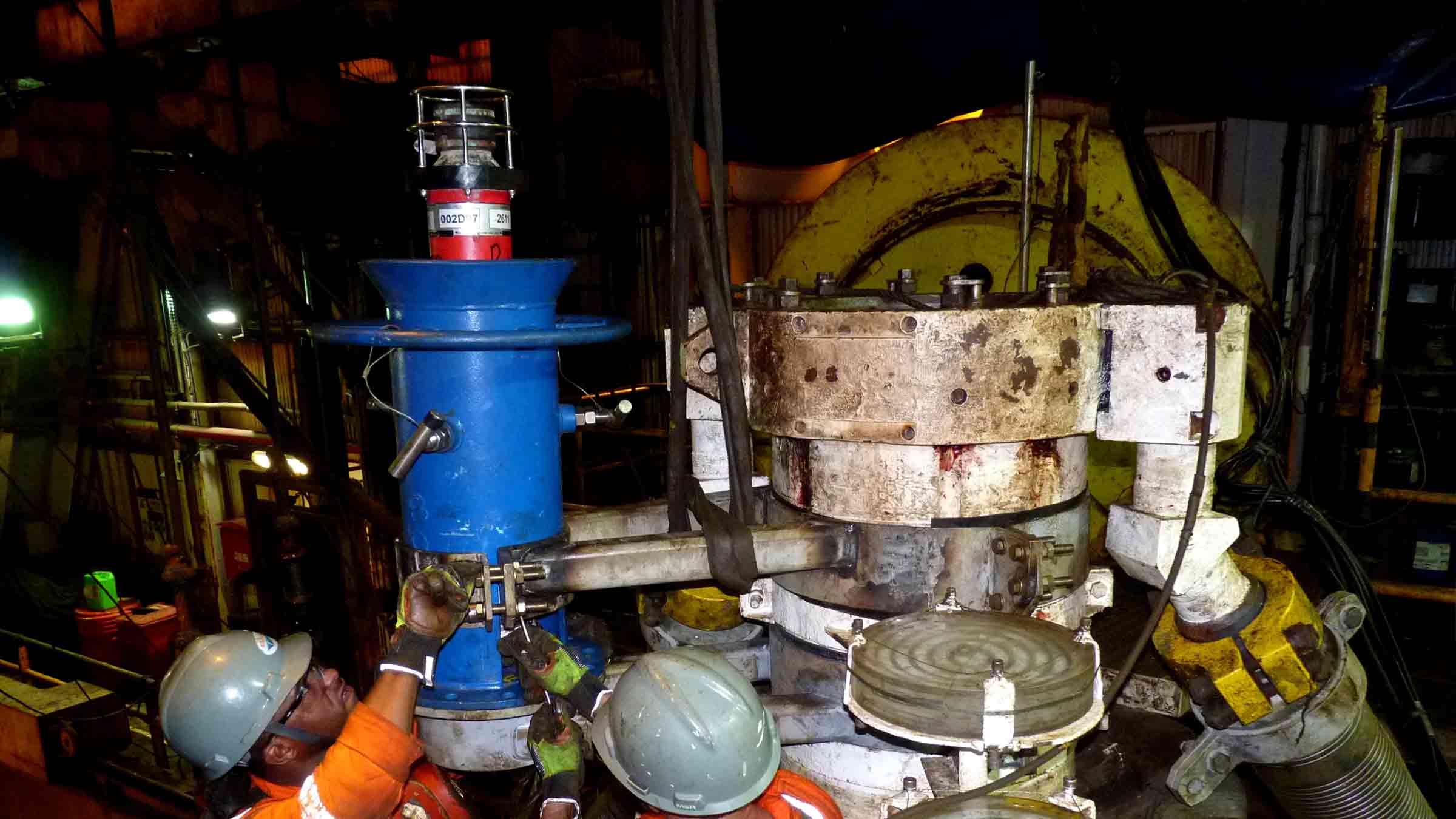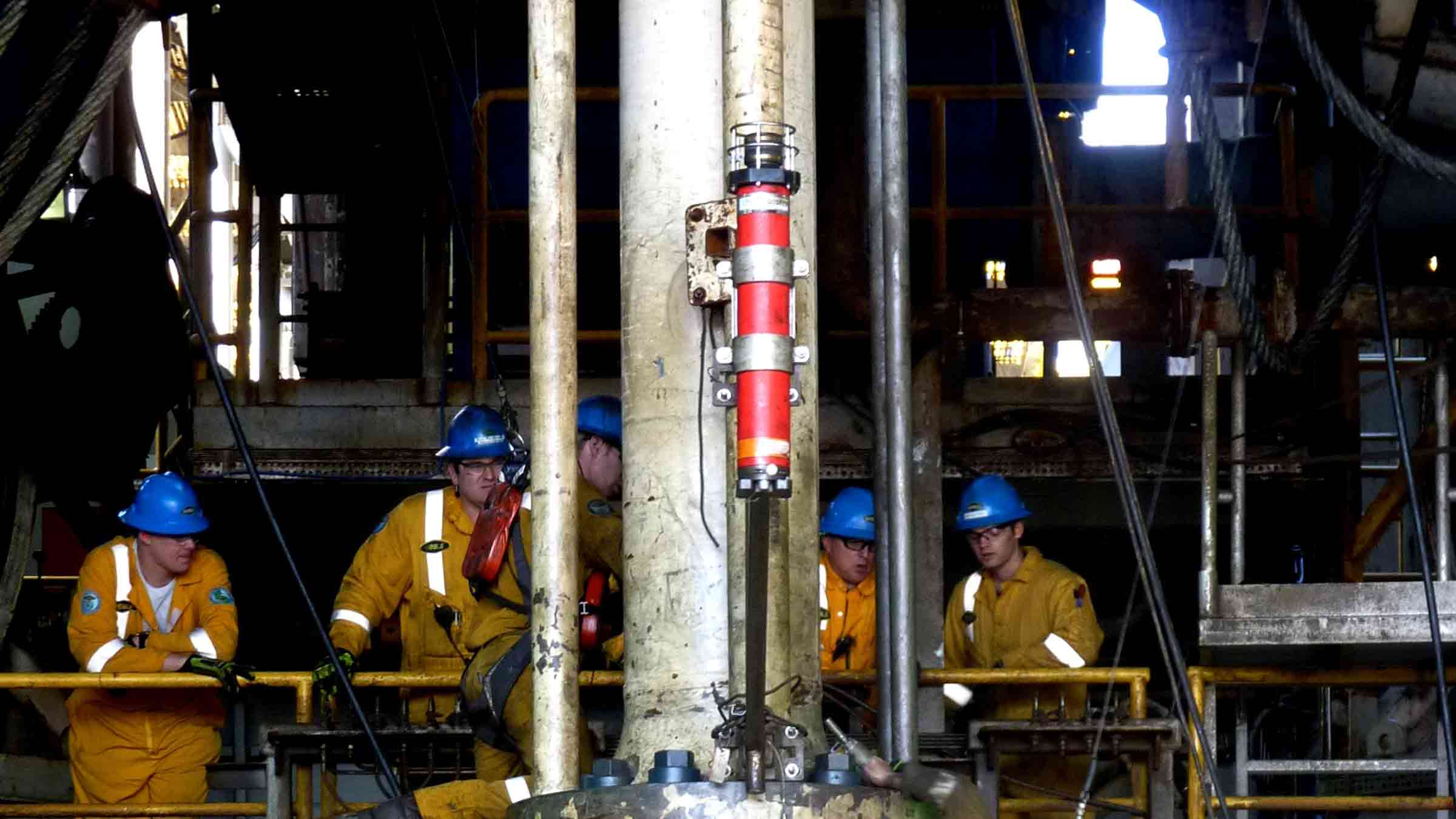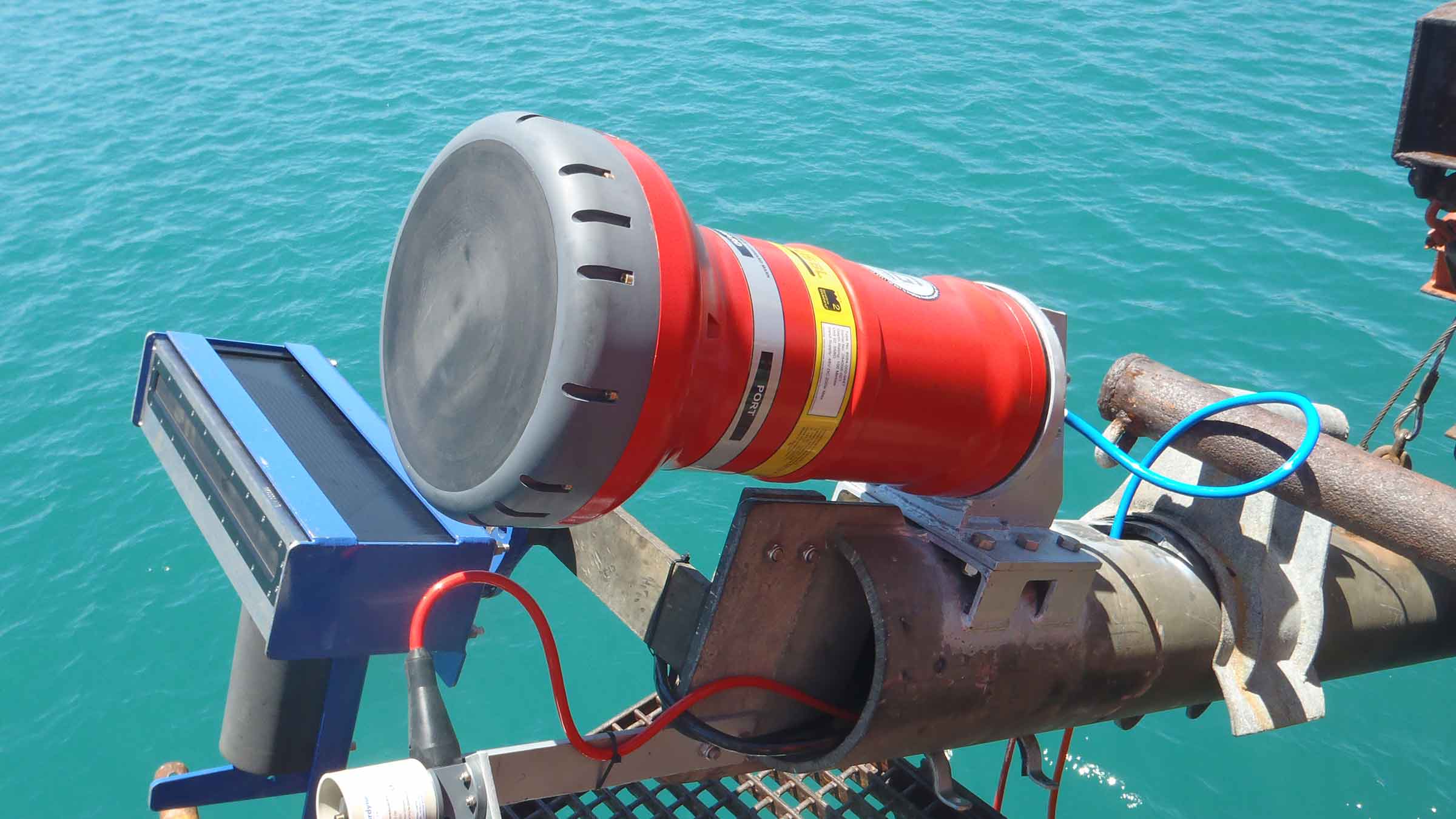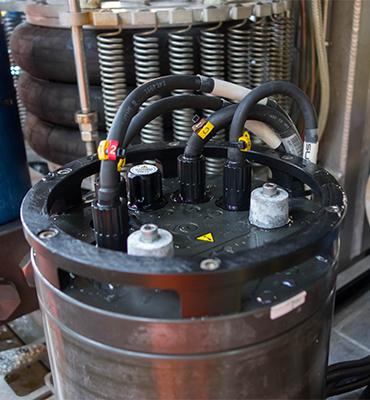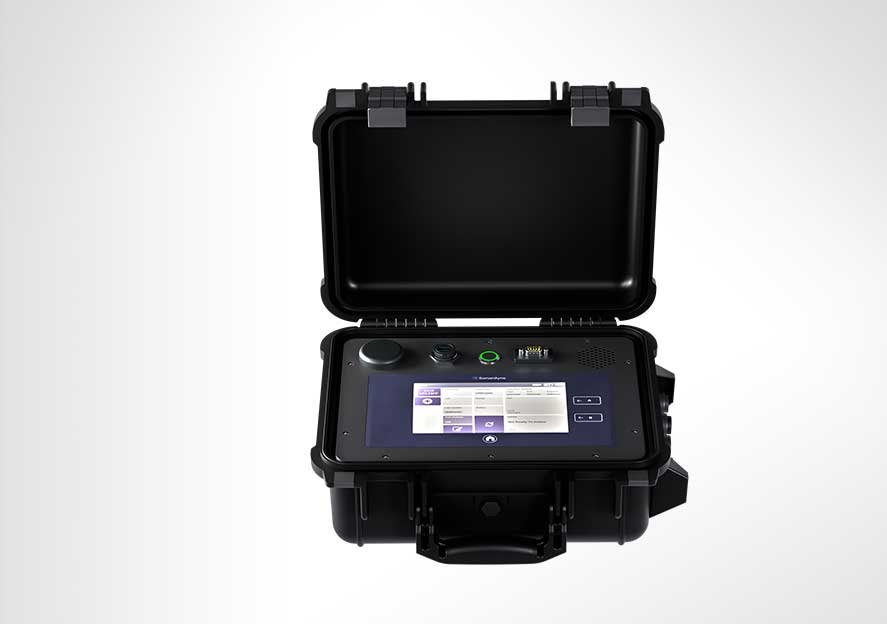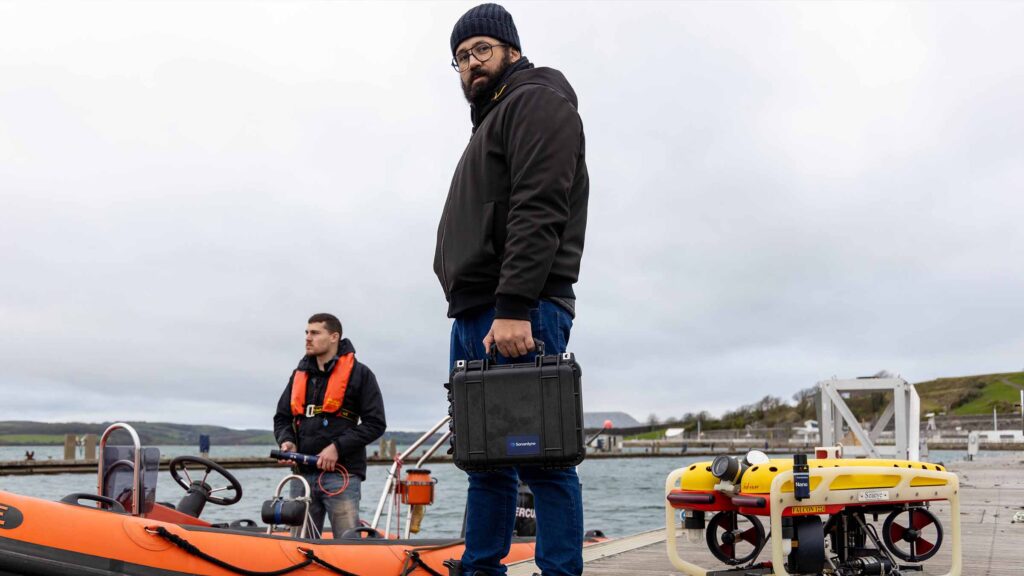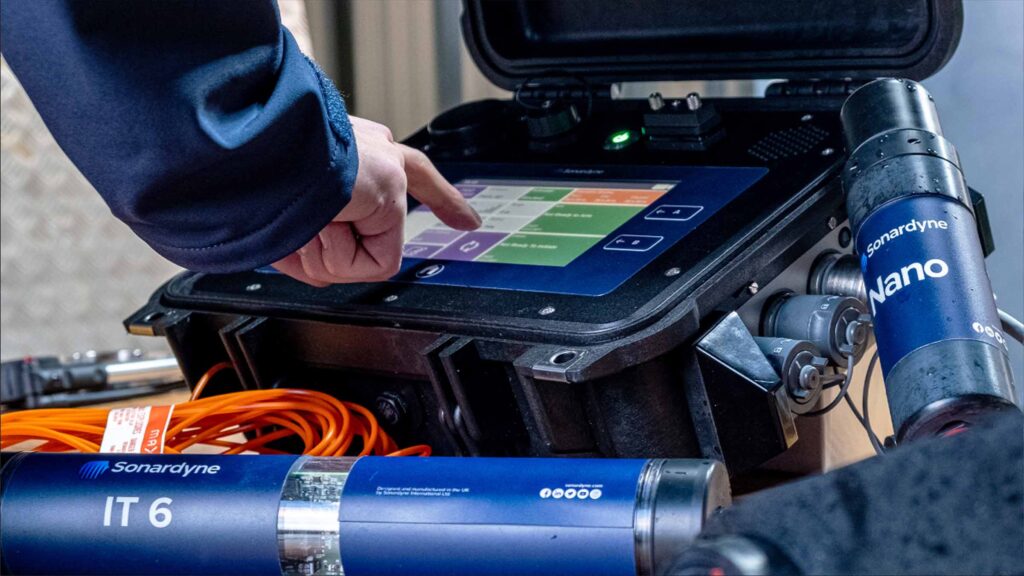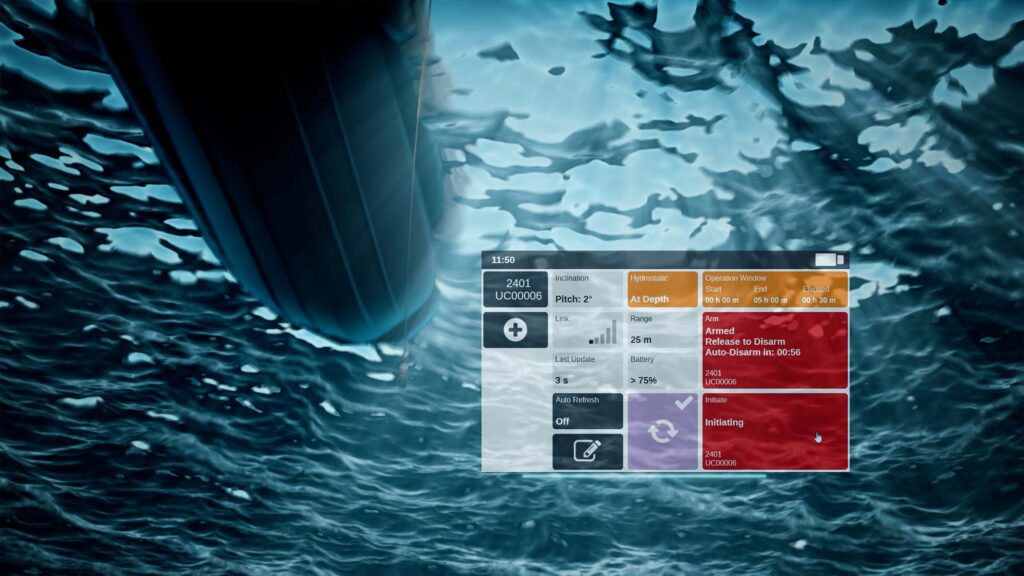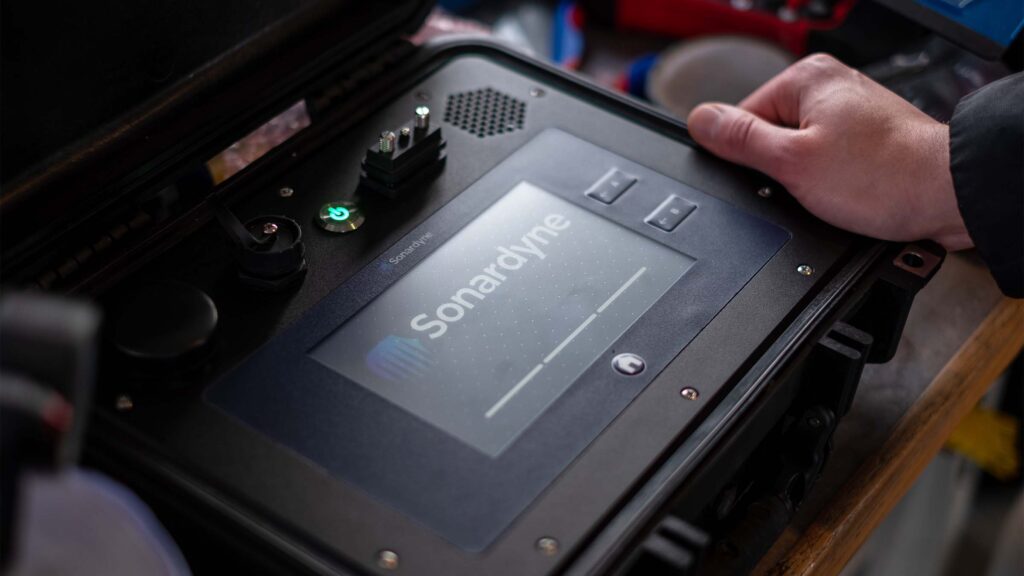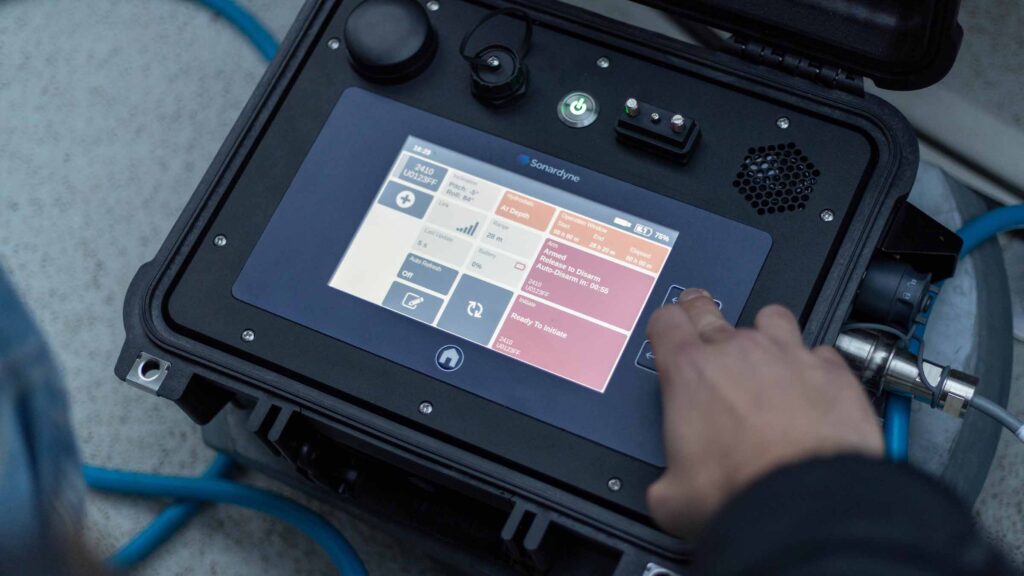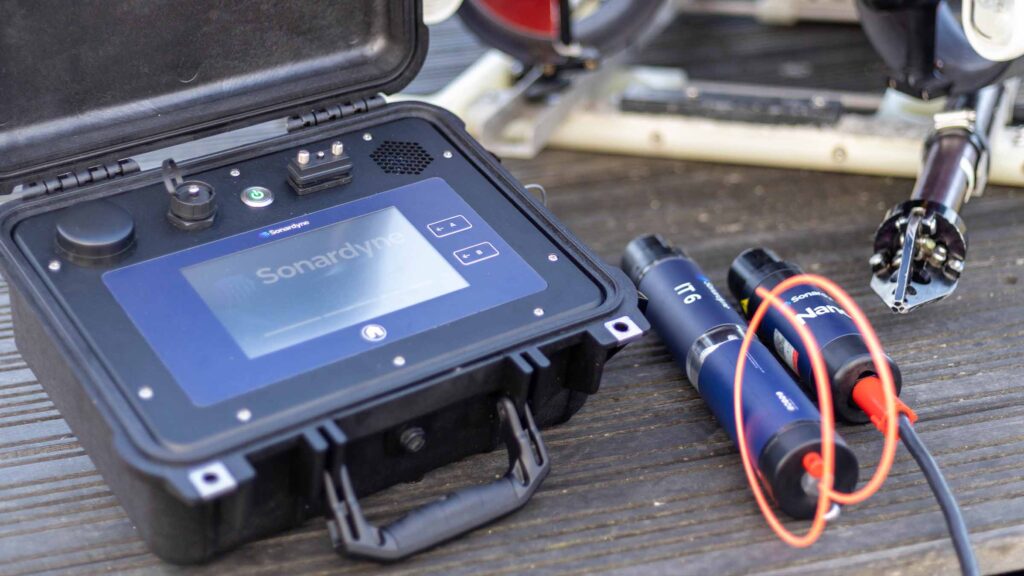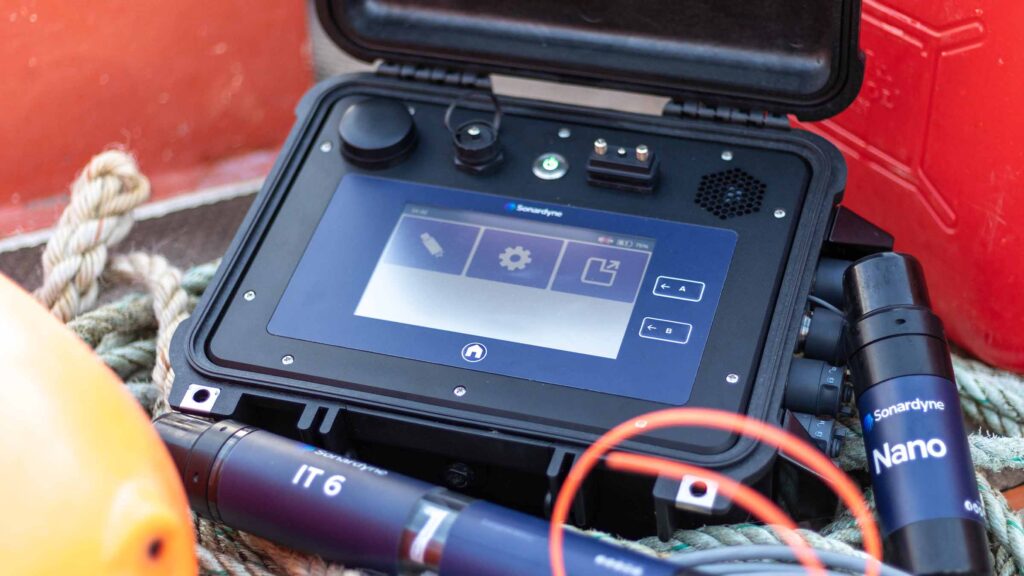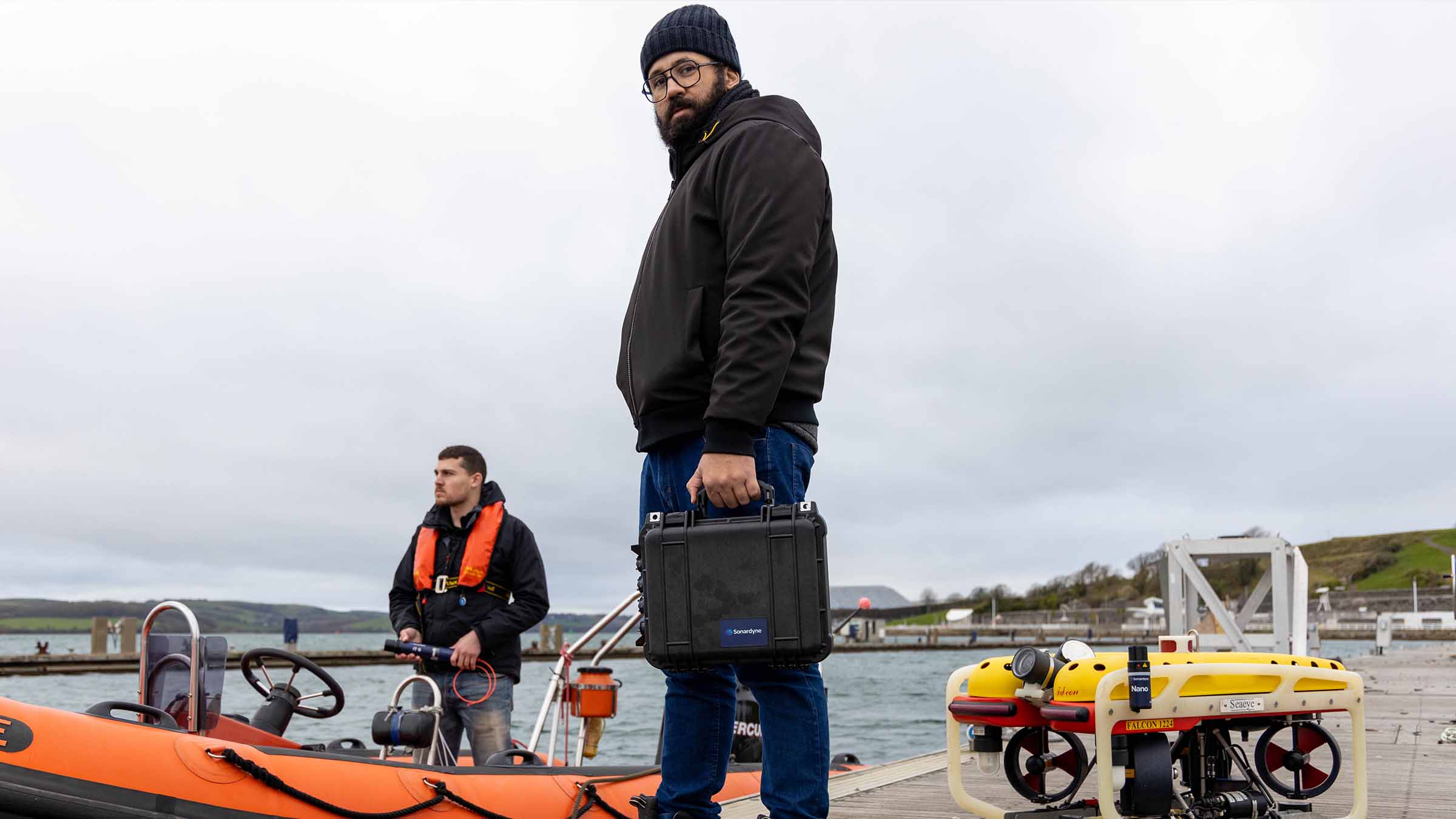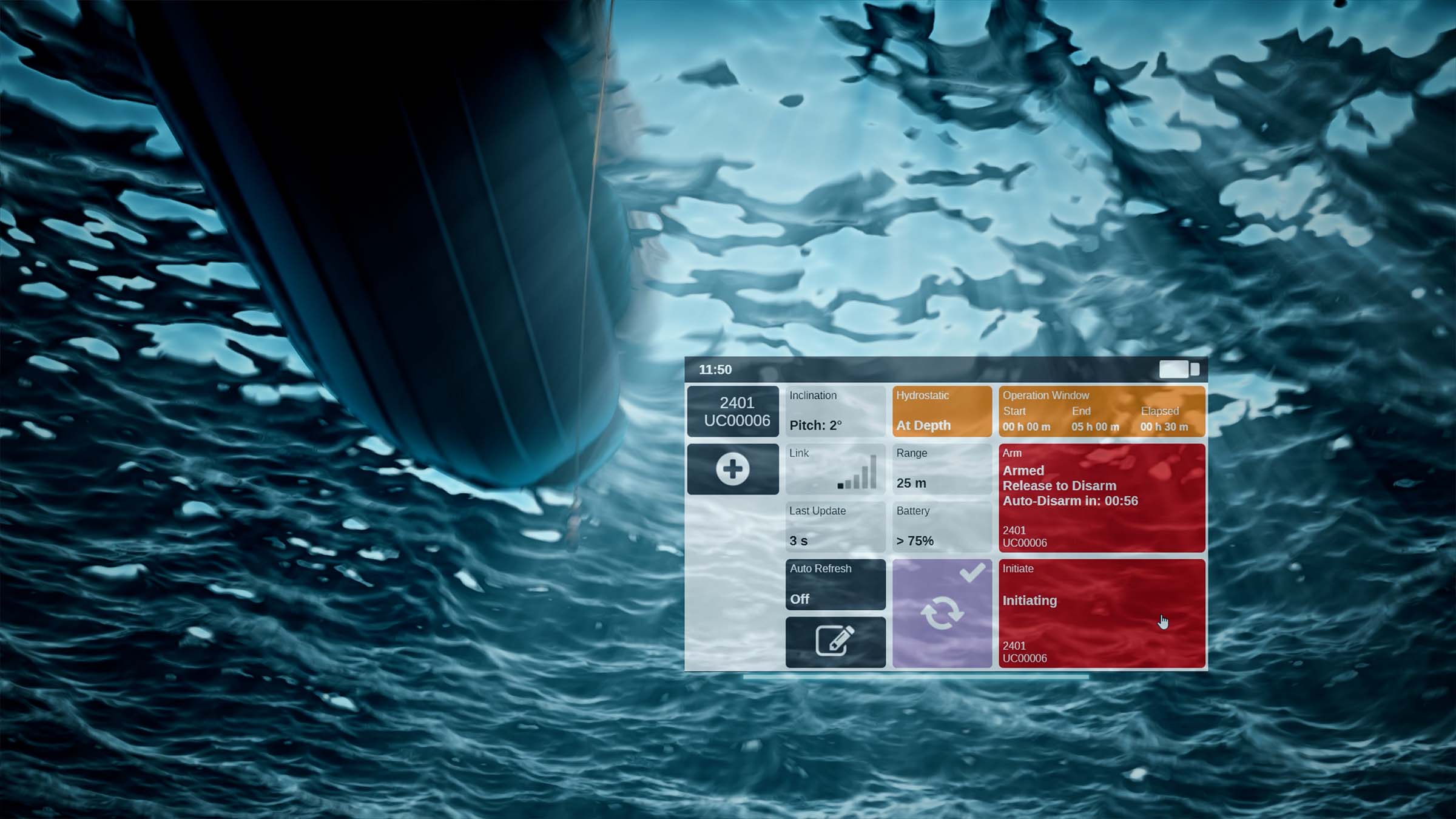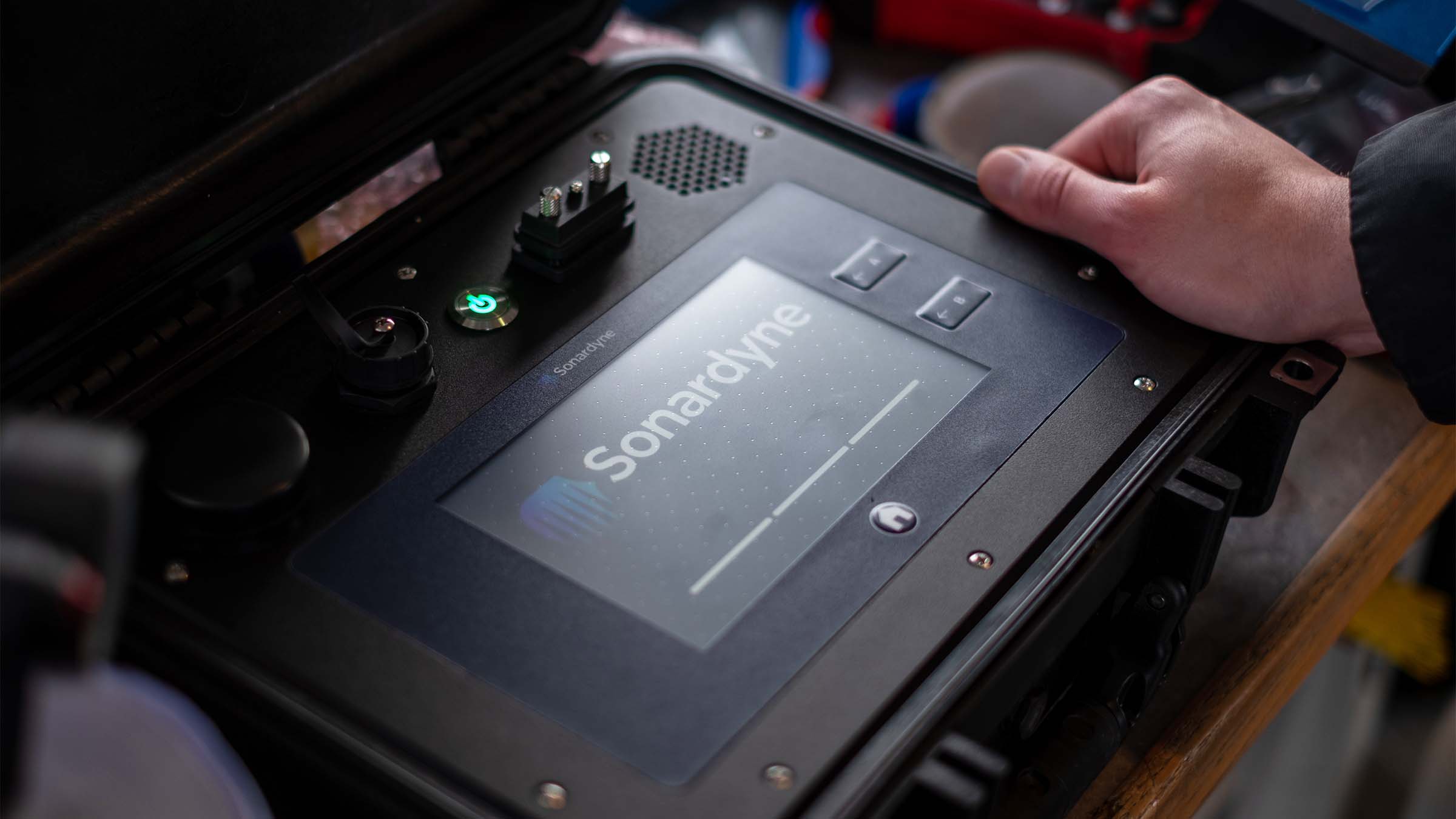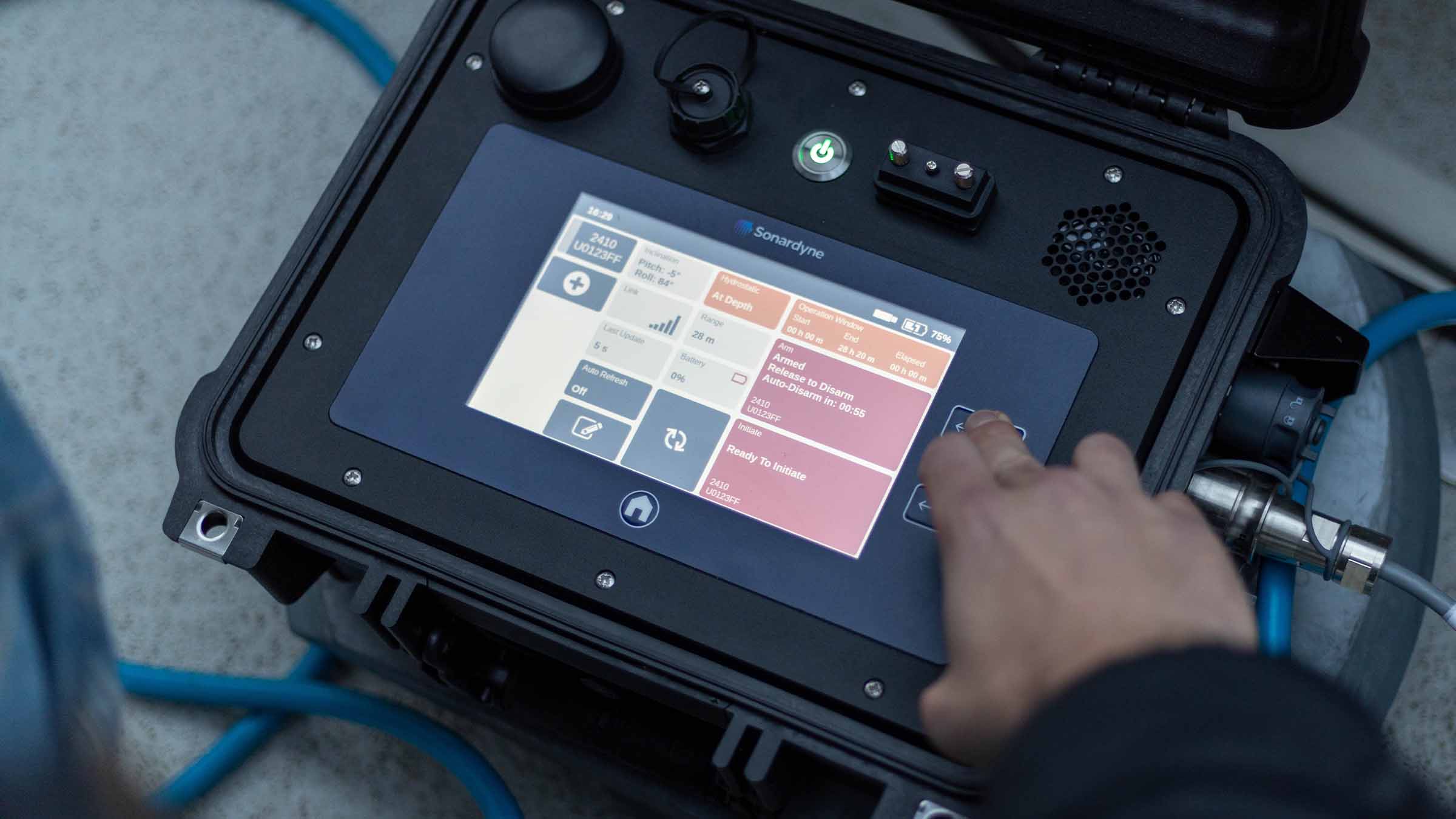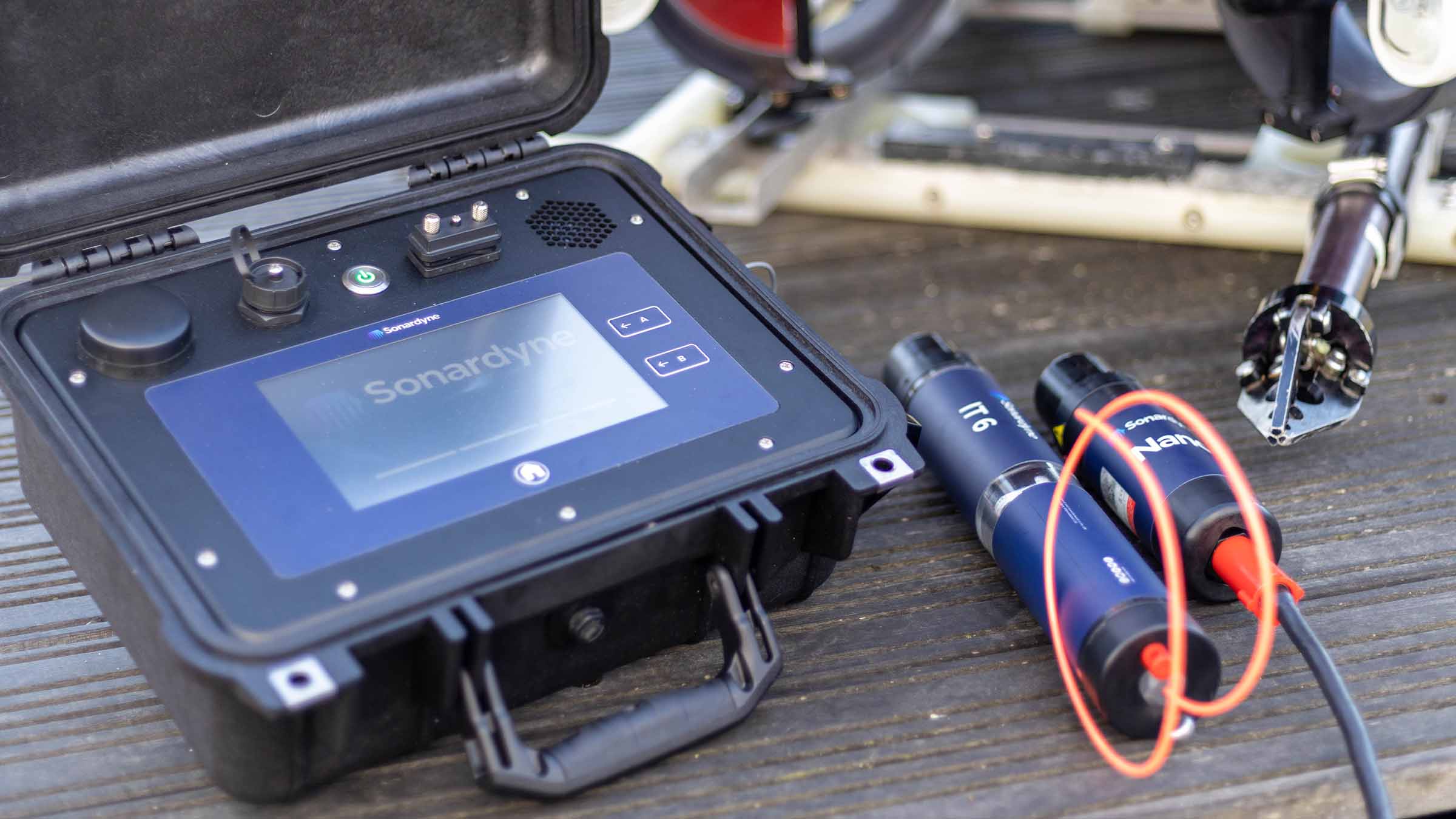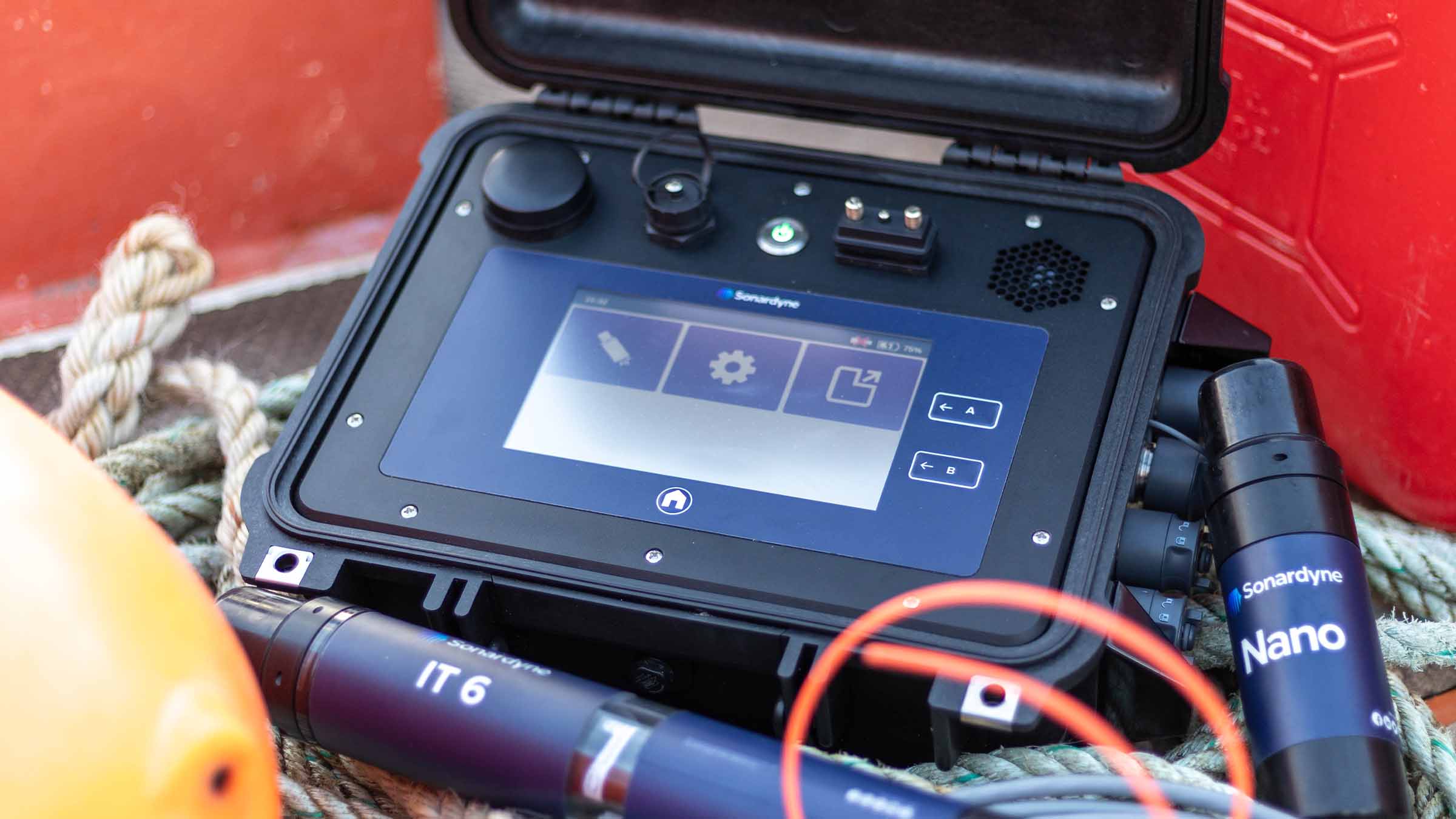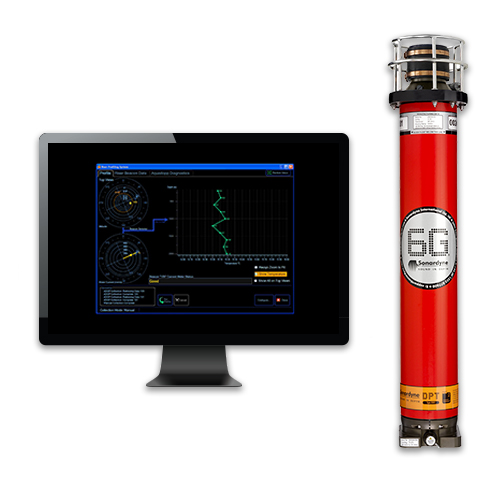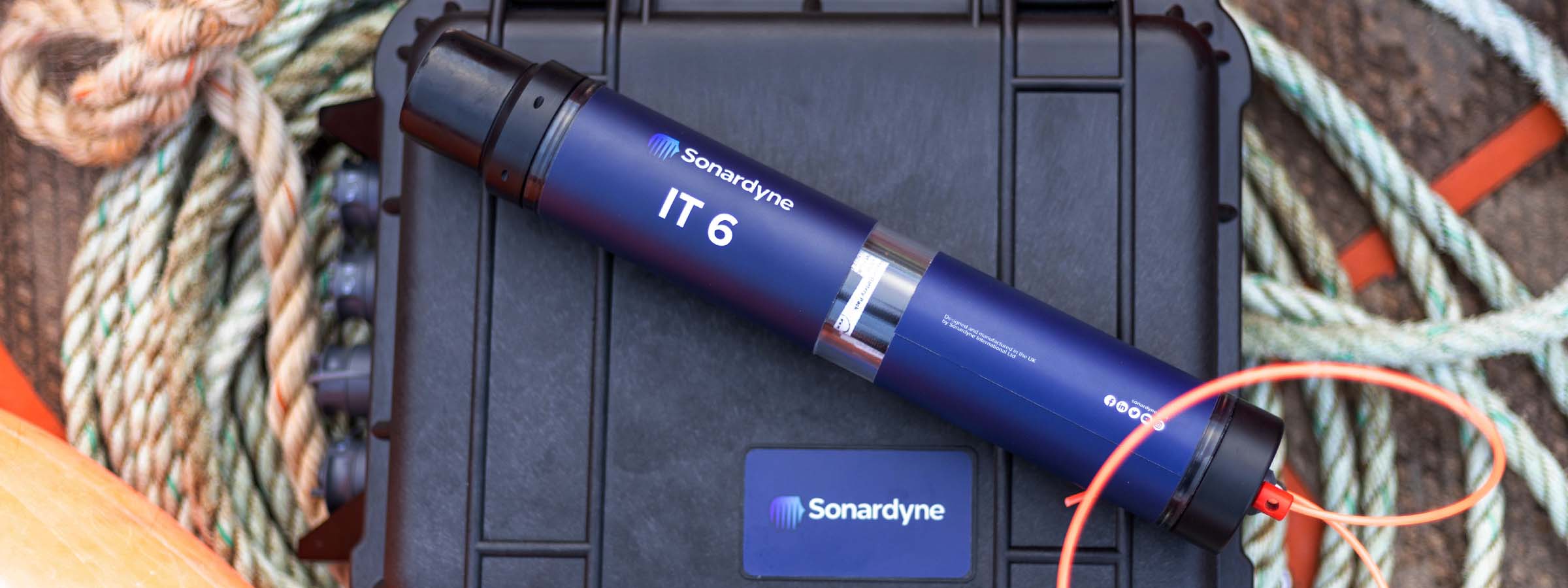Repeatable, configurable, long-term surveillance
The Autonomous Monitoring Transponder (AMT) is a long-endurance transponder engineered for your long term subsea survey tasks and is capable of autonomously acquiring acoustic ranges and sensor data without surface control.
AMTs can detect subtle movement often not picked up by traditional ROV surveys so it’s ideal for monitoring slow movements, like creeping or buckling pipelines. Using structure and seafloor transponder buckets, they can be ROV-deployed, removed and re-installed to provide insight over time. Your AMTs can be configured to take measurements at specific intervals and be adjusted on-demand by you as your campaign progresses. Data can even be collected in real time using a USV should your operation need it.
As it’s collected, data is time-stamped and logged internally for recovery via the integrated high-speed acoustic telemetry modem. This autonomy allows measurements to be made over a long period of time without requiring a surface vessel or ROV to command the process. This enables new applications that save vessel and survey time so reducing cost and risk.
At a glance
- Recommended for long endurance site surveys
- Leave it deployed for six years or more
- Extensive choice of monitoring sensors
- Depth rated to 3,000 m
- Harvest data using a ship, buoy, AUV or USV
AMT has many of the same acoustic functions as Compatt 6, our most popular navigation transponder. It operates in the Medium Frequency (MF) band and is fully Sonardyne Wideband 2 compatible.
Precision pressure, temperature, sound velocity and dual-axis inclinometer sensors are integrated and are intelligently powered up at the requested time and sampling period, providing an ultra-low power platform for up to three years deployment. Sampling regimes can be re-programmed, and recovery of all data can be achieved via the acoustic modem.
The instrument is available with a range of omni and directional transducers, depth ratings and pressure housings dependent on deployment duration and application. Additional external sensors can be easily integrated via the power and communications port.
Acoustics
• Sonardyne Wideband 2 MF band (18 – 36 kHz)
• Over 500 unique addresses, ideal for large array deployments
• Data transfer rates of 100 to 9,000 bps – user selectable
• Omni-directional and directional transducers to suit environmental conditions
• Ranging precision: Better than 15mm
Sensing
• Standard onboard: Temperature, tilt, strain gauge
• Optional onboard: high precision stain gauge, DigiQuartz pressure sensor, high accuracy inclinometer, sound velocity
• Sampling rate: user configurable
• Vessel, USV or AUV data harvesting options
• Optional external: current meters, turbidity sensors
Design
• 3,000 m depth rating
• Aluminium or aluminium-bronze housing depending on environmental conditions and duration of deployment
• Can be deployed for over 5 years without recovery (maxi housing)
• ROV-friendly design: integrated acoustic release mechanism as standard
Ownership
• Warranty: 1 year return to Sonardyne service centre
• ITAR Controlled: No
• UK Export Licence: Not required
• A typical system: multiple seafloor and structure mounted AMTs (typically 6), vessel-based Modem 6 or Dunker 6 or HPT 5000 / 7000, SIU, Monitor software
Specifications
| Feature | Type 8305-3411 | Type 8305-3111 | Type 8305-3113 | |
|---|---|---|---|---|
| Depth rating | 3,000 m | 3,000 m | 3,000 m | |
| Operating frequency | MF (20–34 kHz) | MF (20–34 kHz) | MF (20–34 kHz) | |
| Transducer beam shape | Omni-directional | Omni-directional | Directional | |
| Transmit source level (dB re 1 µPa @ 1 m) | 187–196 dB (4 levels) |
187–196 dB (4 levels) |
190–202 dB (4 levels) |
|
| Tone Equivalent Energy (TEE) | 193–202 dB | 193–202 dB | 196–208 dB | |
| Receive sensitivity (dB re 1 µPa) | 90–120 dB (7 levels) |
90–120 dB (7 levels) |
80–120 dB (7 levels) |
|
| Ranging precision | Better than 15 mm | Better than 15 mm | Better than 15 mm | |
| Number of unique addresses Wideband 1 & 2 | >500 | >500 | >500 | |
| Battery life (listening, disabled) | Alkaline | 833 days | 833 days | 833 days |
| Safe working load (4:1) | n/a | 250 kg | 250 kg | |
| Mechanical construction | Aluminium-bronze | Aluminium | Aluminium | |
| Dimensions (length x diameter) | 1007 x 130 mm | 1034 x 134 mm | 1018 x 134 mm | |
| Weight in air/water | 35/24 kg | 24/12 kg | 24/12 kg | |
| Endcap sensors and options | ||||
| Temperature (±0.1°C) | Standard | Standard | Standard | |
| Tilt switch (±30-45°) | Standard | Standard | Standard | |
| Strain gauge pressure sensor (±0.1%) | Standard | Standard | Standard | |
| High precision strain gauge (±0.01%) Presens or Keller | Optional | Optional | Optional | |
| Paroscientific digiQuartz pressure sensor 1350 m, 2000 m, 4130 m, 6800 m (±0.01%) |
Optional | Optional | Optional | |
| High accuracy inclinometer range: ±90°, Accuracy: ±0.05° over 0 – ±15°; ±0.2° over 0 – ±45° | Optional | Optional | Optional | |
| Sound velocity sensor ±0.02 m/s accuracy under calibration conditions | Optional | Optional | Optional | |
| Release mechanism | n/a | Standard | Standard |
Frequently asked questions
Software and firmware
Software and control hardware
Datasheets
Manuals and quick start guides
Secure and reliable
When safety is paramount in your survey and clearance operations, IT 6 offers a solution to ensure your success.
For energy: With any offshore energy development, there’s the potential to encounter unexploded ordnance (UXO). IT 6 improves the safety and efficiency of clearance operations, keeping your personnel away from risk and your project on track.
For defence: An important new addition to the MCM and underwater ordnance playbook, IT 6 helps your clearance divers and robotic platforms dispose of modern day and historical ordnance, quickly and effectively.
IT 6 is based on our field-proven Wideband 2 digital signal technology, which offers a reliable and long-range underwater wireless communications link. With IT 6, your personnel no longer need to hard wire mine neutralisers up to signal relay buoys on the surface and can set up an initiation operation in bad weather and outside of daylight hours.
Initiation Transponder 6 (IT 6) is designed to be connected directly to a remotely deployed, non-electric (NONEL) mine neutralisation device, such as a Viper from ECS Special Projects. This allows commercial and naval EOD teams to send a wireless, acoustic command from their vessel to initiate a shock tube.
It can be placed directly by a clearance diver or remotely operated vehicles (ROV). Divers and ROVs are constrained by the equipment and payload they can carry so we’ve designed IT 6 to be small and lightweight yet tough enough to withstand everyday operational situations.
With use cases from offshore renewable energy to government and defence, IT 6 transponders are suitable for high order detonation and low order deflagration scenarios.
At a glance:
- Efficient, secure, safe
- 357 mm tall by 55 mm in diameter; 0.10 kg weight in water; designed to be carried by clearance divers or small ROVs
- Controlled using IP67-rated Deck Topside and cabled acoustic dunker
- Safe: automatic time-outs, hydrostatic switch, independent circuits for acoustics and firing
- Built using 6G hardware and Wideband 2 digital signal architecture: track with our Ranger 2 family of USBL tracking systems
The complete solution
Built for your UXO, MCM and EOD missions
Wireless
Underwater acoustic command and control is in our DNA, so IT 6 can be considered as reliable and as secure as traditional methods involving shock tubes and a lot safer than electrical detonation lines.
Safe
Safety and simplicity are key with the IT 6 and it features several fixed and user-configurable safety features.
Firstly, the IT 6 comes complete with a hydrostatic switch, which means the unit cannot be put into an armed state when shallower than the fixed hydrostatic switch depth. If recovered back to deck, the IT 6 will also render itself impossible to arm when it goes below the minimum allowed depth.
Configurable off-deck delays and seabed timeouts mean fixed arming and firing windows can be set. The internal circuitry of the IT 6 also means that no power is applied to the independent detonation circuitry until the operator chooses to fire/initiate the NONEL output from the IT 6.
The clear housing on the IT 6 contains three status LEDs which allow the operator to quickly assess the state of the transponder and its safety. A magnetic ‘remove before use’ pin also means the IT 6 has a long operational battery life and can be powered down completely when not in use.
IT 6 is controlled using our field-proven Deck Topside system. Environmentally rated to IP67, the topside features a daylight readable 7-inch resistive touch screen, physical initiate/arm buttons and rechargeable battery – perfect for operating from small craft with no external power.
A further operational benefit of IT 6 is that its location can be tracked using any our Ranger 2 USBL systems which are installed on hundreds of energy, defence and science vessels globally.
General
• Wireless; replaces need for a hard-wired surface-to-seafloor connection
• Size and weight optimised, perfect for divers and small vehicles
• Low risk; engineered using COTS acoustic technologies in use globally
• Improves the efficiency and safety of improve the safety and efficiency of UXO, MCM and EOD operations
Ownership
• What’s in the box: IT 6
• Accessories: Float, pressure test kit
• Warranty: 1 year return to Sonardyne service centre
• ITAR Controlled: No
• UK Export Licence: Yes PL8001.a.3.
Performance
• MF operating frequency (20-34 kHz)
• Depth rated to 300 m
• Operating range > 1,000 m
• 11-pin Size-A CRE connectors x 2. Custom connectors on request
• Accepts 3 mm shock tube
• Alkaline battery
• 0 m, 2 m and 8 m hydrostatic switch options
Design
• 357 x 55 mm, 0.1 kg weight in water
• Acetal housing construction, clear
• Magnetic on/off switch
• External mounting point
• Integrated inclinometer for monitoring orientation
• High brightness internal status LEDs
• 262,144 unique addresses available
Specifications table
| Feature | Type 8373 | |
|---|---|---|
| Depth Rating | 300 m | |
| Operating Frequency | MF (23–31 kHz) | |
| Transducer Beam shape | Hemispherical | |
| Transmit Source Level (dB re 1 µPa @1 m) | 184 dB | |
| Operating Range | >1000 m | |
| Hydrostatic switch | 0 m, 2 m and 8 m options available | |
| Subsea status indicators | LEDs and acoustic communication | |
| Shock tube outer diameter accepted | 3 mm | |
| Operational Battery Life (Alkaline) | >45 days in not ready to arm state, >22.5 days in ready to arm state |
|
| Storage battery life | >3 years | |
| Repeat Firings with firing pin | >10 | |
| Mechanical Construction | Acetal | |
| Operating Temperature | -20 to 55ºC | |
| Storage Temperature | -20 to 55ºC | |
| Maximum Dimensions (Length x Diameter) | 357 x 55 mm | |
| Weight in Air/Water | 0.85 kg / 0.10 kg | |
| Export Status | Controlled under PL8001.a.3 | |
| Standards | UKCA |
STP files
Datasheets
Manuals and quick start guides
Did you know?
RT 6-6000 can be used with our Ranger 2 USBL family or Deck Topside
What's possible
You need transponders to be tough, reliable and easy to work with. RT 6-3000 meets these requirements.
Part of our range of acoustic releases, RT 6-3000 combines our extensive mechanical design track record and many years of subsea mooring experience with the flexibility of our 6G platform. The result is an enhanced battery life and, perhaps most significantly, compatibility with our Ranger 2 USBL family.
Deploy. Track. Locate. Recover.
With RT 6-3000, you can use your Ranger 2 USBL to deploy, track, locate and command the instrument – removing the need for a separate topside unit.
If you don’t have access to a Ranger 2 USBL, our rugged and lightweight Deck Topside with an over-the-side dunker is all you need to configure and command your RT 6-3000s.
RT 6-3000s are used to anchor oceanographic moorings to the seabed. However, their compact size and compatibility with Ranger 2 makes them ideal for incorporation into instrument frames or lowered platforms to enable deployment of sub-system packages. Depth rated to 3,000 m, the maximum slant range for operation is dependent on the noise environment and topside used, but ranges to 4,500 m are achievable.
A battery disconnect fob is located on the transducer and uses an internal magnetic switch to electronically disconnect the battery when not in use. This means you don’t have to open the unit to manually disconnect the battery, saving time and reducing the risk of incorrect re-assembly.
Standard features include a Working Load Limit (WLL) of 1,275 kg (at 4:1) and the same trusted spring-assisted release mechanism used on thousands of Sonardyne transponders globally for many years. RT 6-3000 is compatible with our standard tandem and high-load release frames for scenarios requiring a higher WLL.
Speak to us about your requirements as custom frames are also an option.
Acoustics
• Medium Frequency (19-34kHz) band, Wideband 2
• Omni-directional transducer. Track it all the way to the surface
• Sonardyne Wideband 2 signal architecture supporting over 300 unique addresses
• Compatible with any Ranger 2 USBL system and Deck Topside
Design
• 700 x 142 mm, 15 kg weight in water
• Aluminium bronze, duplex stainless steel construction. ROHS compliant
• Configured with iWand hand-held acoustic transponder test and configuration device
• Compatible with our standard tandem and high-load release frame
Performance
• 3,000 m depth rated
• 4,500 m working range
• >32 months battery life; alkaline battery
• 1,275 kg Working Load Limit
• Secure and robust two-way acoustic communications. Only release what you want to release
Ownership
• What’s in the box: RT 6-3000, shackles, manual on USB
• Warranty: 1 year return to Sonardyne service centre
• ITAR Controlled: no
• UK Export Licence: not required
Specifications
| Feature | Type 8320-3411 |
|---|---|
| Depth Rating | 3,000 m* |
| Maximum Slant Range | 4,500 m |
| Operating Frequency | MF (20–34 kHz) |
| Transducer Beam Shape | Hemispherical |
| Transmit Source Level (dB re 1 µPa @ 1 m) | 186 dB |
| Tone Equivalent Energy (TEE) | 192 dB |
| Receive Threshold (dB re 1 µPa) | <90 dB |
| Working Load Limit (4:1) | 1,275 kg |
| Proof Load | 2,550 kg |
| Breaking Load | 5,100 kg |
| Maximum Safe Release Load | 1,700 kg |
| Battery Life (Alkaline) | >32 months active |
| Inclinometer Accuracy | ±5° |
| Surface Unit | Deck Topside, Ranger 2 USBL |
| Mechanical Construction | Aluminium bronze and duplex stainless steel |
| Operating Temperature | -5 to 40°C |
| Storage Temperature | -20 to 55°C |
| Dimensions (Length x Diameter) | 700 x 142 mm (27.5 x 5.6”) |
| Weight in Air/Water | 20/15 kg |
| Standards | CE Marked to EN-60945, EN-61010 |
| Options | Shallow Water Deck Kit (Deck Topside) – 602-0175 |
| Mid Water Deck Kit (Deck Topside) – 602-0179 | |
| Heavy Duty Release Frames (7.5 T, 15 T and 25 T) | |
| *RT 6-3000 is pressure rated to 4,000 m; however, due to operating range constraints of MF, its use at depths greater than 3,000 m is not recommended. |
Frequently asked questions
What is an Acoustic Release and how does it work?
Why isn’t serial communication available using the iWand in RT 6 Dunker Mode?
6G Terminal Lite Range Test
What is the safe working load for different RT 6 products?
What should I use instead of an ORT and DORT?
How to change the battery on an RT 6-3000 or RT 6000
How to load the release on an RT 6-3000 and RT 6-6000
Which RT 6 is correct for my operations?
How to release an RT 6 acoustic release transponder using Ranger 2
How long can an RT 6-3000 and RT-6 6000 be deployed for?
Deployment
STP files
Software and control hardware
Manuals and quick start guides
Did you know?
RT 6-3000 can be used with our Ranger 2 USBL family or Deck Topside
SMART precision monitoring for your offshore assets
Unlock invaluable insights about the health and performance of your critical offshore structures, pipelines, and risers with your SMART monitoring system.
Tailor-made for your needs
We understand that no two offshore missions are the same. With a wide range of configurable sensor options, SMART can be customised to meet the precise monitoring requirements of your offshore mission. Our team will work with you to design and fabricate specialised mounting brackets and clamps to seamlessly integrate SMART into your infrastructure, including ROV-friendly setups for fast, efficient installation and retrieval.
Powerful onboard analytics
SMART’s advanced onboard processor enables sophisticated data analysis and processing right at the source. Advanced algorithms extract meaningful insights from raw sensor data, transforming high-bandwidth inputs into compact, critical updates that keep you informed on the status of your assets. Smart power management ensures long deployment times between maintenance. A low power data logger enables data received from external and internal sources to be securely archived using dual redundant storage.
Flexible data harvesting
Transmit stored data to the surface via industry-leading acoustic telemetry or high-bandwidth optical communication links. SMART integrates with your existing systems and workflows, with configurable software options to suit your needs – from standard diagnostics to custom analysis and visualisation tools.
SMART uses our trusted Wideband 2 acoustic telemetry module for your seafloor to surface communications. Operating in the Medium Frequency (MF) or Low Medium Frequency (LMF) band, there are options for omni-directional and directional transducers with high output powers for use in deep water and in challenging acoustic environments.
By utilising our Wideband 2 advanced spread spectrum coding, SMART can transmit your stored data at rates of up to 9,000 bps to topside transceivers and modems including our HPT 5000, Modem 6 and Dunker 6. An Ethernet connection to a BlueComm high bandwidth optical communication link enables larger quantities of data to be harvested from ROV, AUV or USV.
Dependable performance
SMART is engineered for precision, reliability, and flexibility. Trusted by leading offshore operators, this advanced monitoring system delivers the actionable intelligence you need to make informed decisions and protect your critical investments.
At a glance
- Battery options to support campaigns in excess of 10 years
- Can be deployed and recovered using ROV
- 3,000 m standard depth rating; options for 7,000 m
- Onboard logging and processing of data; offloaded acoustically on demand
- Built on our low power 6G hardware platform and Wideband 2 digital signal architecture for reliable acoustic performance in noisy conditions
SMART in action
A SMART deep water invention
Read moreTrendsetter Vulcan Offshore uses a SMART solution to monitoring wellhead fatigue
Read moreDeepwater data analytics – asset monitoring at the edge
Read moreOwnership
• Warranty: 1 year return to Sonardyne service centre
• ITAR Controlled: No
• UK Export Licence: Not required
• A typical system; multiple structure-mounted SMARTs, vessel-based Modem 6 or Dunker 6 or HPT 5000 / 7000, SIU, SMART software
Sensing
• 6 DOF high performance sensor fitted as standard
• Sampling rate: 5 Hz, 10 Hz, 25 Hz
• Data storage: 32 GB, dual redundant, FAT 32
• Processing capability: Fully programmable including FTT spectral analysis, statistical functions and bespoke options
Design
• 3,000 m depth rating; up to 7,000 m on request
• Lithium battery providing over 500 logging days at typical regimes
• ROV-friendly design; option for integrated acoustic release mechanism
• Super Duplex Stainless Steel standard housing material; options for different materials depending on environmental conditions
Acoustics
• Over 500 unique addresses, ideal for large array deployments
• Data transfer rates of 100 to 9,000 bps – user selectable
• Omni-directional transducer for wide area acoustic coverage
• Sonardyne Wideband 2 MF band (19 – 34 kHz); field proven in high noise subsea environments
Specifications
| Instrument Feature | Type 8316 | |
|---|---|---|
| Depth Rating | 3,000 m (up to 7,000 m on request) |
|
| Acoustic Operating Frequency | MF (20–34 kHz) | |
| Acoustic Data Rate | 100–9,000 bps | |
| Standard Battery Specifications | 100 Ah @ 15 V (high capacity options available) | |
| Power Consumption | Listening | 50 mW |
| Logging | 200 mW | |
| Battery Life (Typical) (Lithium) | >500 days @ 25% logging duty, hourly reporting | |
| Mechanical Construction | Super duplex stainless steel | |
| Weight in Air/Water | 32/22 kg | |
| Operating Temperature | -5 to 30°C | |
| Storage Temperature | -25 to 70°C | |
| SMART Feature | ||
| 6 Degrees of Freedom High Performance Motion Sensor | Standard | |
| Triaxial Acceleration Measurement | Range | ±30 ms-2 |
| RMS Noise | 6×10-4 ms-2/√Hz | |
| Instability | 5×10-4 ms-2 | |
| Triaxial Angular Rate Measurement | Range | ±150 deg s-1 |
| RMS Noise | 0.002 deg s-1/√Hz | |
| Instability | 2.2 deg/hr | |
| Sensor Axial Misalignment | 0.02° | |
| Sampling Rate | 5 Hz, 10 Hz and 25 Hz | |
| Anti-aliasing Filter (Standard) | -3 dB cut-off @ 4 Hz | |
| Data Storage | 32 GB dual redundant, FAT32 | |
| Processing Capability | Fully programmable including FFT spectral analysis, statistical functions and bespoke options | |
| Logging and Reporting Scheme | Fully configurable | |
| Connectivity | Acoustic Link (for real-time reporting), Ethernet Port (high speed data upload), serial port | |
| Additional Sensors | Optional internal and external sensors | |
| Note: The table above shows typical values for a SMART transponder configured for drilling riser fatigue monitoring. As a flexible instrumentation platform, alternative configurations are available including alternative motion sensors if higher sensitivity is required. SMART can be offered with a standard data processing algorithm for fatigue monitoring or can incorporate customer specific requirements on request |
Software and firmware
Datasheets
Small in size, big in performance
AvTrak 6 Nano may be our smallest acoustic transceiver, but its features and performance are anything but.
It’s built on the same 6G hardware and Wideband 2 digital signal architecture found in its larger cousin, AvTrak 6, all packed into the smallest possible form factor.
Use it with our popular MF USBL Ranger 2 family to track your AUVs or seafloor nodes. Then use the Sonardyne Messaging Service (SMS) to exchange status messages with the USBL or other AvTrak 6 Nanos in your vicinity. With hundreds of units in the field, AvTrak 6 Nano is ideal for AUV swarms.
Like its larger cousin, AvTrak 6 Nano has been developed to meet the requirements of a wide variety of AUV mission scenarios, vehicle types and the operational demands for different industries.
For energy – it’s not just for AUVs. Integrate AvTrak 6 Nano with your seabed nodes and you have a network of sensors that can position and communicate with each other.
For defence – its small form factor and ability to enable surface to AUV or AUV-to-AUV communications, makes it a prime option for swarm or squad robotics operations.
For science – AvTrak 6 Nano enables an AUV to undertake simultaneous USBL tracking and telemetry with a research vessel, as well as AUV-to-AUV communications making your projects more cost and time efficient.
At a glance
- Tracking, communications, and emergency relocation in one instrument
- Use with Ranger 2 to track every move your AUV makes
- Bi-directional acoustic modem with user selectable data rates; 200-9,000 bps
- Wide voltage input range and multiple communication methods for robotics integration
- Optimised for Ranger 2 Robotics pack for aiding navigation systems with remote position outputs
- Housed variant or OEM for integration into vehicles
Mini but mighty
AvTrak 6 Nano measures just 192 x 55 mm, you won’t find a smaller AUV transceiver with this much capability. It has an operating range of 3,000 m, a depth rating of 500 m and full SMS and Modem functionality.
Going smaller still, AvTrak 6 OEM Nano redefines nano, measuring at just 95 mm x 43 mm. You won’t find a smaller OEM AUV transceiver with this much capability. Its omni-directional transducer is small too, at 49 mm diameter and 72 mm long.
Equipped with AvTrak 6 Nano, your AUV will receive unlimited data and share messages every navigation cycle when used with Ranger 2. By supporting the integration of a data payload inside every navigation signal, this allows more data to be transferred to and from AUVs with fewer transmissions which ultimately reduces power consumption and increases mission endurance.
A common configuration enables the USBL system to communicate with a squad of AUVs equipped with AvTrak 6 Nanos, broadcasting to all the position of each member of the squad to aid the navigation solution and improve their situational awareness. Each AUV then replies in sequence with status information.
AvTrak 6 Nano can also be used to enable AUV-to-AUV communications and choose from seven telemetry schemes ranging from 200 bps to 9,000 bps of effective user bandwidth. Either for short burst communications or full large quantity data upload from seabed monuments.
AvTrak 6 Nano in action
Facing the challenge of speeding up consent in offshore renewable energy
Read moreAutonomous robots prepare to storm the ocean depths
Autonomous robots prepare to storm the ocean depths
Bringing special order accuracy to small diameter AUVs
Read moreGeneral
• Our smallest combined transponder, transceiver, and telemetry link
• Open interfaces and protocol
• Supports AUV swarm operations
Ownership
• AvTrak 6 Nano: Transceiver, 0.5m cable tail, integration guide, manual
• AvTrak 6 OEM Nano: PCB, remote transducer, integration guide, manual
• Warranty: 1 year return to Sonardyne service centre
Performance
• Depth rated to 500 m
• Effective data transfer rates between 200 and 9000 bps
• Emergency battery life >90 days
• Range precision better than 15 mm
• 3000m tracking and communication range
Design
• OEM Board set measures just 95 mm x 43 mm
• Omni-directional transducers
• Integrated depth sensor supports horizontal tracking
• Low power and compact for ease of integration
Specifications table
| Feature | Type 8262 AvTrak 6 Nano | Type 8262 AvTrak Nano OEM | |
|---|---|---|---|
| Operating range | >3,000 m | >3,000 m | |
| Depth rating | 500 m | 500 m (standard), 3,000 m (optional) |
|
| Operating frequency | MF 20–34 kHz | MF 20–34 kHz | |
| Transducer beam shape | Omni-directional ±130º | Omni-directional ±130º | |
| Source level (re 1 µPa @ 1 m) | Modem | 175 dB | 175 dB |
| Tracking & telemetry | 184/175 dB | 184/175 dB | |
| Range precision | Better than 15 mm | Better than 15 mm | |
| Communication interface | RS232, 3V3 TTL | RS232, 3V3 TTL | |
| Depth sensor | 50 bar abs +/-0.7% FS | 50 bar abs +/-0.7% FS | |
| Power supply | 12–28 V dc | 12–28 V dc | |
| Power consumption | Wideband Listening (Battery) | 5 mW | 5 mW |
| Wideband Listening (Ext. Power) | 20 mW (including trickle charge) | 20 mW (including trickle charge) | |
| Battery Charging | 60 mW to 2.5 W (depending on battery charge state) | 60 mW to 2.5 W (depending on battery charge state) | |
| Peak (During Transmission) | <30 W SMS, <20 W Modem | <30 W SMS, <20 W Modem | |
| Battery life | Quiescent Listening | >90 days | >90 days |
| 1 Sec Ping Rate | >12 hours | >12 hours | |
| Battery charge time | 12 hours | 12 hours | |
| External connections | Subconn MCIL8M | Molex Microfit | |
| Mechanical construction | Polymer | n/a | |
| Transducer wire length | n/a | 150 mm (6”) | |
| Operating temperature | -10 to 45°C | -10 to 45°C | |
| Storage temperature | -20 to 55°C | -20 to 55°C | |
| Dimensions | Length x diameter | 192 x 55 mm |
n/a |
| Transducer (length x diameter) | n/a | 72 x 49 mm | |
| PCB board assembly (length x width x height) | n/a | 95 x 43 x 42.5 mm | |
| Hole centres (M2 clearance – length x diameter) | n/a | 71.5 x 35 mm | |
| Weight in air/water | 584/162 g | n/a | |
| Weight (OEM) | PCB in air | n/a | 138 g PCB + 12 g cable |
| Transducer in air/water (estimated) | n/a | 200/150 g |
Frequently asked questions
STP files
Software and firmware
Software and control hardware
Datasheets
Manuals and quick start guides
Add AvTrak, add capability to your AUV
AvTrak 6 has been designed to form part of your integrated AUV tracking and navigation system.
Built on our 6G hardware platform running secure Wideband 2 spread-spectrum signal processing, AvTrak 6 combines the functions of transponder, transceiver and telemetry link in one low power unit that meets the requirements of a wide variety of AUV mission scenarios, vehicle types and the operational demands for different industries.
For energy – whether you’re operating a resident vehicle over-the-horizon or deploying an AUV for a pipeline inspection, AvTrak 6 is a key enabler for your oilfield and renewable energy projects.
For defence – AvTrak 6 technology provides amazing flexibility bringing together tracking, navigation aiding and secure battlespace communications into one low logistics payload that’s perfect for unmanned covert and swarm missions.
For science – AvTrak 6 is an excellent choice for your long-endurance ocean observation platforms, with the added ability to communicate and download data from seafloor sensor arrays.
The unit is fully compatible with our family of survey quality LBL and USBL navigation systems. It supports Sonardyne Messaging Service (SMS) allowing USBL position fixes to be sent to your vehicle or for status messages to be retrieved from the topside system.
At a glance
- Combines tracking, communications, and emergency pinger functionality in one instrument
- Track your AUV in USBL mode, localise it in LBL transponder mode
- Bi-directional acoustic modem with user selectable data rates; 200-9,000 bps
- Integrated outputs enable control of a release, burn-wire or drop-weight functions
- Worried about onboard power interruption? AvTrak’s internal battery provides days of emergency vehicle relocation tracking
- Choice of hardware configurations to simplify vehicle installation
Are you ready to add the AvTrak advantage?
AvTrak 6 is available in a variety of configurations to meet your mission profiles.
A popular option is an omni-directional unit with integral or remote transducer options. For operations at depth, an integral directional transducer option is common.
A flexible configuration assists the AUV manufacturer with the mounting of AvTrak 6 within the AUV and ensures the highest levels of acoustic performance. Low-medium frequency (LMF) and high-power (HP) versions of AvTrak 6 are also available.
An AUV equipped with AvTrak 6 can receive navigation updates from any 6G compatible USBL or LBL system, send status updates to multiple 6G instruments including other AUVs and synchronise clocks with other 6G instruments to better than 50 microseconds as standard.
That’s not all, there is an option to include an HPR400 Series tone for compatibility with a variety of other acoustic systems and transponders and another option to enable a RSPSK Modem upgrade for large volume data transfers.
It’s simple to integrate to your AUV using our rich 6G protocols and command language and RS232 serial interface. Choose from over 600 independent acoustic addresses and AvTrak 6 enables your AUV to work as part of a swarm if required.
General
• Emergency burn-wire, drop-weight, or release options
• Open interfaces and protocols
• Supports AUV swarm operations
• Combined transponder, transceiver, and telemetry link in one low power unit
Ownership
• What’s in the box: AvTrak 6 and manual
• Warranty: 1 year return to Sonardyne service centre
Performance
• Depth rated to 3,000 m and 7,000 m
• Effective data transfer rates between 200 and 9000 bps
• Emergency battery life 30 days
• Range precision better than 15 mm
• LMF (14-19 kHz) and MF (19-34 kHz)
Design
• Different configurations including omni-directional and directional transducers
• Integrated depth sensor supports horizontal tracking
• Low power and compact for ease of integration
• OEM option also available
Specifications table
| Featured | Type 8220-3111 | Type 8220-7212 | |
|---|---|---|---|
| Depth Rating | 3,000 m | 7,000 m | |
| Operating Frequency | MF (20–34 kHz) | MF (20–34 kHz) | |
| Transducer Beam Shape | Omni-directional | Directional | |
| Transmit Source Level (re 1 µPa @ 1 m) |
High Power | 187 dB | 193 dB |
| Low Power | 181 dB | 187 dB | |
| Tone Equivalent Energy (TEE) WBv2+ |
High Power | 193 dB | 199 dB |
| Low Power | 187 dB | 193 dB | |
| Range Precision | Better than 15 mm | Better than 15 mm | |
| Depth Sensor | ± 0.5% full scale | ± 0.5% full scale | |
| Communications Interface | RS232 (9,600–115,200 baud) | RS232 (9,600–115,200 baud) | |
| External Supply Voltage | 24 or 48 V dc (± 10%) | 24 or 48 V dc (± 10%) | |
| External Power | Sleep | ~650 mW | ~650 mW |
| Wideband Listening | ~1 W | ~1 W | |
| Battery Charging | 6 W | 6 W | |
| Peak (During Transmission) | <50 W | <50 W | |
| Battery Life (Li-ion 15 V) | Listening | 30 days | 30 days |
| Continuous 5 Sec Interrogation | Approx. 6 days at low power | Approx. 6 days at low power | |
| Operating Temperature | -5 to 40ºC | -5 to 40ºC | |
| Storage Temperature | -20 to 55ºC | -20 to 55ºC | |
| Mechanical Construction | Anodised aluminium alloy and plastic | Anodised aluminium alloy and plastic | |
| Dimensions (Diameter x Length) | 93 x 500 mm | 97 x 513 mm | |
| Weights in Air/Water | 5.1/2.2 kg | 7.0/3.5 kg | |
| Options | Remote, cable connected transducer Right-angle connector |
Right-angle connector |
Frequently asked questions
STP files
Software and firmware
Software and control hardware
Datasheets
Manuals and quick start guides
Entry level – next level
What's possible
The RT 6-1000 is the versatile acoustic release transponder for your subsea operations. It can be commanded from multiple sources, including the Deck Topside, an Android app, or any Ranger 2 USBL system. This flexibility allows you to easily deploy, track, locate and retrieve your seabed equipment and ocean sensors.
One of the key advantages of the RT 6-1000 is its depth rating of 1,000 metres and weight load limit of 150 kg. This depth and payload capacity make it an ideal choice for scientists, surveyors, and military personnel who require a reliable and enduring solution for their underwater applications.
The RT 6-1000 is compatible with Sonardyne’s Ranger 2 USBL tracking systems, which are widely used on survey vessels around the world. This integration allows for seamless deployment, tracking, and retrieval of your equipment. No access to Ranger 2? No problem, the RT 6-1000’s NFC capability enables setup and control via its Android app or a dedicated Deck Topside unit.
Deploy. Track. Locate. Recover
At a glance
- The reliable choice to deploy, leave and recover seafloor equipment and sensors
- 1,000 metre depth rating; twice that of similar low-cost acoustic release transponders
- Tested, loaded, commanded and released using Deck Topside
- Also works with any Ranger 2 USBL to track it and activate it
- >13-month battery life means less time servicing it and more time using it
- 150 kg Working Load Limit to support your sensors and instruments
- Optional rope canister for heavy lifting
The RT 6-1000 offers impressive endurance, with a battery life of up to 13 months, making it well-suited for long-term deployments and year-long surveys. Its screw-off release mechanism ensures reliable recovery of the transponder and your equipment.
An optional rope canister attachment allows you to quickly and easily raise items left on the seabed, such as tools, cables and salvage. The canister deploys a high-strength rope as the transponder ascends, providing a convenient means of retrieval.
Acoustic
• Medium Frequency (20-34 kHz) band.
• Omni-directional transducer. Track it all the way to the surface
• Sonardyne Wideband 2 signal architecture supporting over 300 unique addresses. Perfect for very large surveys involving multiple moorings close to each other
Performance
• 1,000 m depth rated
• >13 months battery life; alkaline battery
• 150 kg Working Load Limit
• Compatible with Ranger 2 USBL systems
• Secure and robust two-way acoustic Communications. Only release what you want to release
Design
• 450 mm x 65 mm (max dia. 100 mm), 500 grams weight in water
• Field proven screw-off release mechanism
• NFC for setup using Android app
• Optional rope canister for lifting heavy items
• Plastic, super duplex stainless steel and anodised aluminium construction. ROHS compliant
Ownership
• Warranty: one year return to Sonardyne service centre
• ITAR Controlled: No
• UK Export Licence: Not required
• What’s in the box: RT 6-1000, shackles, release nuts (x10), manual on USB
Specifications table
| Feature | Type 8327 | |
|---|---|---|
| Depth rating | 1,000 m | |
| Operating frequency | MF (20–34 kHz) | |
| Transducer beam shape | Hemispherical | |
| Transmit source level (dB re 1 µPa @ 1 m) | 187 dB | |
| Tone Equivalent Energy (TEE) | 193 dB | |
| Receive threshold (dB re 1 µPa) | <100 dB | |
| Working load limit (4:1) | 150 kg | |
| Proof load | 300 kg | |
| Breaking load | 600 kg | |
| Maximum safe release load | 150 kg | |
| Battery life (alkaline) | >13 months | |
| Inclinometer accuracy | ±5° | |
| Mechanical construction | Anodised aluminium alloy, plastic and super duplex stainless steel | |
| Operating temperature | -5 to 40ºC | |
| Storage temperature | -20 to 55ºC | |
| Maximum dimensions (length x diameter) | 450 x 65 mm | |
| Weight in air/water | 2.0/0.5 kg | |
| Standards | CE Marked to EN-60945, EN-61010 | |
| Options | Part number | |
| Shallow Water Deck Kit (Deck Topside) | 602-0175 | |
| Rope Canister | 70 m (250 kg WLL) | 641-0673 |
| 120 m (250 kg WLL) | 641-3265 | |
| 160 m (150 kg WLL) | 641-0080 | |
| Release Nut | 830-0073 (note: 10 nuts supplied with each new RT 6-1000) |
|
| Shackle (bridle) | 231-0140 | |
| Deployment rope (bridle) | 231-0351 |
Frequently asked questions
What is an Acoustic Release and how does it work?
Why isn’t serial communication available using the iWand in RT 6 Dunker Mode?
RT 6-1000 NFC connection and operating information
6G Terminal Lite Range Test
How long can an RT 6-1000 be deployed for?
What is the safe working load for different RT 6 products?
What should i use instead of an LRT
How do I mark where my RT 6-1000 is deployed?
No NFC device is available to connect the battery
Why can’t my NFC device contact the transponder?
How to change the battery in an RT 6-1000
Which RT 6 is correct for my operations?
Why should I use a rope canister and what is it?
Where can I find the RT6 release app
How to release an RT 6 acoustic release transponder using Ranger 2
How to use a rope canister
How to recover an RT 6-1000
Deployment
STP files
Software and firmware
Software and control hardware
Datasheets
Manuals and quick start guides
Did you know?
RT 6-1000 can be used with our Ranger 2 USBL family or Deck Topside
What is possible
Ranger 2 comes with an impressive list of features including our award-winning 6G (sixth generation) acoustic hardware platform and Sonardyne Wideband 2 digital signal architecture. It provides stable and repeatable acoustic position referencing for your ship’s DP system, including those from GE, Kongsberg, MT, Navis, Thrustmaster and Wärtsilä.
As your needs grow and become more complex, bolt-on software packs unlock additional capability and protect your investment. Take the DP pack and enable your acoustic ranging to be aided by our inertial navigation technology (DP-INS). Add the robotics pack and commanding a swarm of up to 99 AUV’s is at your fingertips.
Ranger 2 can do even more, it also supports robust two-way data telemetry, allowing you to control our range of seafloor deployed, long-endurance sensors and recover your all-important data.
Track everything, in any depth, from any vessel
Why choose it?
- Tracks multiple targets to 11 km;
- Compatible with all makes of DP system – GE, Kongsberg, MT
- System accuracy: when fully optimised it will deliver 0.04% of slant range
- Works with a global inventory of pre-deployed Sonardyne 6G hardware
- Configurations available for USV and temporary vessel installations
- Valuable features included as standard
- Bolt-on packs available for growth with your operations and ambitions
- Developed and supported by a company with over 50 years of experience in innovative underwater technology
Learn more about Ranger 2 USBL
The kit
Transceivers
Our High Performance Transceiver (HPT), is available in a range of different designs to suit your operations whether they are in deep or shallow water or over a long layback.
HPT 5000 / 7000 are acoustic and telemetry transceivers designed for use with Ranger 2 USBL system. HPT 5000 enables targets offer wide range of water depths to be tracked; HPT 7000 is optimised for noisy DP drilling and construction vessels and in deep water.
HPT 5000 offers full hemispherical acoustic coverage so is a popular choice for tracking multiple targets (ROVs, AUVs, towfish, seafloor sensors) over a wide range of depths and elevations. The unit is also suitable for dynamic positioning reference on survey, research and offshore support vessels.
HPT 7000 is engineered for ultra-deepwater operations, tracking targets far below (rather than to the side of) a vessel, and for high vessel noise operating environments such as those typical of DP, drilling and construction where activity from thrusters is liable to cause signal interference.
If you need a solution for a vessel of opportunity, our pre-calibrated, all-in-one Gyro USBL transceiver is perfect. Lighter, smaller and just as capable, our second-generation Gyro USBL transceiver works seamlessly with Ranger 2 to track the position of your subsea targets from a USV, vessel of opportunity or from a pipelay vessel’s stinger over extreme ranges.
- All-in-one instrument; combined 6G acoustic transceiver and AHRS
- Choose between standard or ‘plus’ variants to suit your project’s specifications
- Optimises the performance of Ranger 2; eliminates lever arm offsets, pole bending and ship flexing errors
- Calibrated in-water before delivery – saving you time; install it and go to work
Transponders
The flexibility of the Ranger 2 family is further extended by our range of transponders to support a wide variety of your operations. WMT is a high-power transponder capable of operations to 7,000 m, while AvTrak 6 is our most capable acoustic vehicle instrument, combining the functions of a USBL transponder, LBL transceiver and modem for demanding applications such as AUV command and control.
Discover Ranger 2 in action
A new world of multi-robot ocean exploration
Read moreOptimising shallow water positioning for combined magnetometer and hydrographic surveys
Read moreLong-endurance AUV development with shallow water simplicity
Read morePerformance
• Up to 0.04% of slant range system accuracy
• Up 99 targets tracked, sequentially
• Up to 11,000 m tracking range (LMF)
• 1 Hz position update rate
• Supports all industry standard DP telegrams
• Supports acoustically aided INS
Acoustics
• MF frequency (20–34 kHz) or LMF (14-19.5 kHz)
• Compatible with a wide range of 6G transponders
• Supports Sonardyne Messaging Service for data exchange up to 9,000 bps
• Sonardyne Wideband 2 acoustics for reliable performance in both shallow and deep-water environments
Ownership
• ITAR Controlled: No
• Warranty: 1 year return to Sonardyne service centre
• UK Export Licence: Required
• What’s in the box: HPT 5000 / 7000 / Gyro USBL, deck cables, software, manual
Overview
• Can be used for both survey and construction phases
• Configurable to work in the LMF band enabling you to track targets to beyond 11 km
• Supports complex tracking scenarios such as structures and vehicles with multiple transponders and multiple remote offsets
Specifications table
| Feature | Specification |
|---|---|
| Design | The most powerful USBL system on the market |
| Incorporates 30 years of USBL innovation and know-how | |
| Recommended for installation on large vessels and USVs | |
| Global vessel track record; offshore, research, cable-lay, salvage and naval | |
| Shares common platform with other Sonardyne USBLs | |
| Performance | Up to 0.04% of slant range system accuracy |
| Up to 99 targets tracked, simultaneously | |
| Up to 11,000 m tracking range (LMF) | |
| 1 Hz position update rate | |
| Support all industry standard DP telegrams | |
| Supports acoustically-aided INS | |
| Acoustics | MF frequency (20-34 kHz) or LMF (14-19.5 kHz) |
| Sonardyne Wideband 2 digital acoustics for reliable performance in both shallow and deep environments | |
| Supports Sonardyne Messaging Service for data exchange up to 9,000 bps | |
| Compatible with a wide range of 6G transponders |
Frequently asked questions
Planning 6G beacon deployments
CASIUS calibration recommendations
What is a USBL and how does it work?
How to use Auto Discover to scan the water for unknown transponder addresses
How to format the sound speed profile for Marksman and Ranger 2
How to use HPR418BCD telegrams for DP
How to mount and extract an ISO image
How to track an underwater locator beacon
How to Compensate for Responder Latency
How to set up an SSB_LBP Telegram
Marksman/Ranger 2 DP INS indicator sequence explained
How to create an alarm to warn that the transceiver deployment pole has been left deployed
How to import waypoints into Ranger 2
How to enter Transceiver & Lodestar Offsets for Optimised USBL
Frequency management is obsolete. Here’s why.
How to set up Responder Mode
Opening a .DJF file on Sonardyne De Novo Job Viewer
How to Skip Telemetry Options in Rangers 2 and Marksman LUSBL
What should I do if my Sonardyne security dongle expires or reports a problem?
How to Capture a cef in Marksman and Ranger 2
How to download or upload files using Filezilla
Why am I getting old / incorrect data from my GyroCompatt 6+?
How to turn on a Lodestar Gyro Compatt using Ranger 2 or Fusion 2
I’m outputting a GGA from Fusion 2 / Ranger 2 to NaviPac but the position isn’t appearing in the correct location?
Health check for your acoustic system
How do I mark where my RT 6-1000 is deployed?
Will Compatt 6+ work with Ranger 2 and Marksman?
The transponder isn’t replying to interrogation or commands
Can I get USBL position updates from my AUV with Ranger 2/ Mini-Ranger 2?
How quickly can I start tracking beacons with Ranger 2?
Has anyone ever installed an echosounder and Ranger 2 USBL transceiver directly beside each other? Would this work?
Can I perform a USBL verification in shallow water without an ROV to deploy or recover the beacon?
How do USBLs work?
Which USBL Deployment Machine is most suitable for my vessel?
Advantages of using Ranger 2 for ROV tracking
When to use Depth Aiding
What’s new in Micro Ranger 2?
What to consider when mounting acoustic transducers
What acoustic address should I use for my USBL transponder
What do my CASIUS results tell me about my USBL calibration
Calibration tips for Ranger 2 USBL systems
How to align Gyro USBL to the vessel frame of reference
How to interface Ranger 2 into a 3rd party survey system
How can an uncrewed system interact with Ranger 2 software?
How can I synchronise a clock on my AUV to a GNSS reference using Ranger 2?
What is Telemetry Tracking, and why would I need it?
How to release an RT 6 acoustic release transponder using Ranger 2
How to set up an update rate in Ranger 2
How to set the operating range in Ranger 2
How to configure sound speed in Ranger 2
Ranger 2 – How to release an RT6 acoustic release transponder
Software and firmware
Software and control hardware
How to enter Transceiver & Lodestar Offsets for Optimised USBL
How to set up Responder Mode
Opening a .DJF file on Sonardyne De Novo Job Viewer
What’s new in Micro Ranger 2?
What do my CASIUS results tell me about my USBL calibration
How to release an RT 6 acoustic release transponder using Ranger 2
How to set up an update rate in Ranger 2
Top tips
How to Skip Telemetry Options in Rangers 2 and Marksman LUSBL
What should I do if my Sonardyne security dongle expires or reports a problem?
How to Capture a cef in Marksman and Ranger 2
How to download or upload files using Filezilla
Which USBL Deployment Machine is most suitable for my vessel?
Advantages of using Ranger 2 for ROV tracking
When to use Depth Aiding
What to consider when mounting acoustic transducers
What acoustic address should I use for my USBL transponder
Calibration tips for Ranger 2 USBL systems
How to align Gyro USBL to the vessel frame of reference
Datasheets
Manuals and quick start guides
Technical bulletin
Precise, seamless, robust
Precision engineered, Marksman leverages the strengths of both USBL and LBL acoustics, providing enhanced precision and range redundancy through seabed transponder networks.
Marksman seamlessly integrates with your existing DP system, whether you’re running GE, Kongsberg, MT, Navis, Rolls-Royce or Wärtsilä.
Robust and reliable dual independent hardware configurations provide redundancy to ensure your critical operations can continue even if part of the system becomes unavailable. There is also option of operating in triple redundancy configuration through the augmentation of our inertial navigation technology – known as DP-INS.
DP-INS has been developed to meet regulatory requirements which state that deep water drilling units must be equipped with three independent positioning reference inputs to their DP system. Traditionally, an acoustic positioning system and two separate GNSS systems are used.
However, vulnerability remains should the acoustics be affected by aeration and noise and both GNSS systems simultaneously affected by signal disruption. The latter is particularly common around equatorial regions and during periods of high solar radiation. Marksman removes this vulnerability by reducing the reliance on GNSS.
How Marksman elevates your operations
The Marksman system, built on ground-breaking 6G and Wideband 2 technology platforms, offers a comprehensive solution that combines faster, more robust data transmission with precision acoustic ranging that remains immune to vessel and ROV noise.
This trusted system, widely adopted by leading offshore energy operators in the Gulf of Mexico, Brazil, and West Africa, delivers uncompromising precision and global tracking capabilities at any depth, while seamlessly integrating with DP systems. Its dual and triple redundant configurations, immunity to GNSS disruptions, and extended battery life make it ideal for semi-permanent seabed deployments.
The system excels in mission-critical applications including riser monitoring and dynamic positioning reference, while offering valuable additional capabilities such as acoustic riser angle monitoring, backup BOP acoustic control, and data recovery from seafloor sensors. With its future-proof platform, simple user interface, and proven reliability, Marksman is the premier choice for operators requiring robust performance in demanding offshore environments.
Marksman at a glance
- Optimised for precise, repeatable positioning to save on fuel costs
- Compatible with all leading DP systems – Class 2 and 3 certified
- Dual and triple redundant configurations for ultimate reliability
- Global tracking capabilities in any water depth
- Precision operations in the harshest environments
Design
• Can be configured for DP2 and DP3 class vessels
• Dual and triple (INS) independent equipment configurations available
• Works with all makes of DP system; GE, Kongsberg, MT, Navis and Wärtsilä
• Suitable for new build and retrofit installations; drill ships, semi-subs, heavy lift, well intervention
Performance
• 7,000 m operating range
• DP telegrams; all industry standard supported
• Supports tracking of one surface and multiple subsea targets
• 1 second position update rate (dependent upon water depth)
Technology
• Compatible with all 6G vessel and subsea transceivers and transponder
• Long battery life; 6G transponders use low power electronics to extend battery life
• Wideband 2 signal processing ensures robust acoustic performance in noisy environments
• Hundreds of unique operating channels enable simultaneous operations in busy offshore areas
Additional capabilities
• Riser profiling (requires additional hardware and software)
• Recovery of data from Sonardyne seafloor sensors
• Riser angle monitoring (requires additional hardware and software)
Specifications
| Marksman System Performance | LUSBL Tracking | USBL Tracking | |
|---|---|---|---|
| Water Depth | LBL Array Radius | Expected Repeatability | Expected Repeatability |
| 1000 m | 175 m | 0.16 m | 1.5 m |
| 2000 m | 350 m | 0.17 m | 2.9 m |
| 3000 m | 525 m | 0.39 m | 5.1 m |
| Expected repeatability values are 1 drms assuming quiet vessel (84 dB//μPa.m) with standard size USBL transceiver at centre of an array of 5 directional beacons, correct sound speed, rigid deployment and Lodestar AHRS. | |||
| Number of Targets Tracked | 1 surface, unlimited subsea | ||
| Position Update Rate | 1 second, dependent upon water depth | ||
| Gyro Data Formats | NMEA HDT, SG Brown (ASCII, BIN), Robertson SKR82 | ||
| VRU Data Formats | SON2, TSS1, TSS2, EM1000, EM3000, PRDID | ||
| GPS Data Formats | GPGGA, GPGLL |
Frequently asked questions
CASIUS calibration recommendations
How to use Auto Discover to scan the water for unknown transponder addresses
How to format the sound speed profile for Marksman and Ranger 2
How to use HPR418BCD telegrams for DP
How to mount and extract an ISO image
How to track an underwater locator beacon
How to Compensate for Responder Latency
Marksman/Ranger 2 DP INS indicator sequence explained
How to create an alarm to warn that the transceiver deployment pole has been left deployed
How to enter Transceiver & Lodestar Offsets for Optimised USBL
Frequency management is obsolete. Here’s why.
Opening a .DJF file on Sonardyne De Novo Job Viewer
How to Skip Telemetry Options in Rangers 2 and Marksman LUSBL
What should I do if my Sonardyne security dongle expires or reports a problem?
How to Capture a cef in Marksman and Ranger 2
How to download or upload files using Filezilla
Health check for your acoustic system
Will Compatt 6+ work with Ranger 2 and Marksman?
What do my CASIUS results tell me about my USBL calibration
How to align Gyro USBL to the vessel frame of reference
How to set up an update rate in Ranger 2
How to set the operating range in Ranger 2
Software and firmware
Software and control hardware
Top tips
Manuals and quick start guides
Technical bulletin
Pick your kit, operate at any depth
Deck Topside is the robust and versatile solution for commanding and controlling your Sonardyne acoustic release or initiation transponders, empowering you to navigate your operations with confidence and efficiency. The ability to support both types of transponder ensures you have the flexibility to meet your specific needs, whether it’s releasing underwater equipment or initiating mine neutralisation operations.
Deck Topside is supplied with cabled Nano dunker transceivers to enable command and control at any water depth and over any range. They simply plug into the transceiver port on the side of Deck Topside and are suspended over the side of your vessel. Ten metres of cable are supplied as standard with a 20-metre extension cable also available.
Depending on which RT6 you have, there are different deck kits available, from shallow to deep. The shallow water deck kit is a workhorse for your operations requiring ranges of less than 1, 000 m, so perfect with RT 6-1000. For operations deeper than this, our mid water and deep water deck kits are perfect. Use the mid water kit with RT 6-3000.The deep water deck kit utilises our long range, LMF-frequency band for use with RT 6 HD.
Tough and simple to use all day long
Deck Topside is completely portable and perfectly at home working in harsh marine environments.
It features a high brightness, full colour 7-inch resistive touch screen display and an easy-to-use user interface (UI) which allow a host of parameters to be set, including environmental. The unit is IP67 rated when closed and IP66 when open and being operated.
Power up and choose which mode you want Deck Topside to work in; RT 6 or IT 6. The UIs are easy to use and require no special knowledge of underwater acoustics. As touch screens are not suitable for every weather or stage of a marine operation, physical buttons are used for critical tasks such as arming, initiating and releasing.
Power comes from an 12/24 V dc external input, and for those situations when you’re operating from a vessel with no external power, a Lithium-Ion rechargeable battery provides up to 8 hours of continuous use.
After a successful operation, you can download system logfiles and operational reports. Deck Topside can export a complete set of activity logs for all activities, and a PDF report for releases.
Futureproof your investment with expandable capabilities
Deck Topside has been engineered to allow the addition of future features and developments via in-field software upgrades, protecting your investment in Sonardyne underwater technology.
At a glance
- Provides full configuration, testing and control of all RT 6s and IT 6
- Use it in the workshop, back-deck or from a small boat
- Engineered using industry standard ruggedised case; IP67 rated
- Rechargeable battery provides 8 hours of use; supports external power input
- 7-inch full colour touchscreen display; daylight readable
- Physical buttons for safety critical operational sequences
- Supplied with 10 m cabled Nano dunker
- Portable, rugged, secure
General
• One-box solution for the command and control of RT 6s and IT 6s deployed for equipment mooring, recovery and UXO operations
• Wireless: built using secure and robust digital acoustics communications suitable for any environment
• Small and rugged case engineered for use on the back deck
• Embedded, bespoke user interface for each mode – no special training needed
Design
• 7” resistive touch screen 1000cd/m2
• 340 x 295 x 152 mm, 4.8 kg weight in air
• IP rating: IP67 closed, IP66 open
• Power: 12/24 V dc input /8-hour lithium-ion battery (66 Wh)
• Built-in GNSS receiver and speaker (functionality currently not enabled)
Interfaces
• 2 x Ethernet connectors
• 1 x RS232/RS485 (to Sonardyne dunker, including power out)
• 1 x 12/24 V dc power input connector
• 1 x USB for data offload
• 1 x RS232 DB9 port
• Physical buttons: Power, Home, Safety Critical (x2)
Ownership
• What’s in the box: Deck Topside box, Nano dunker, 10 m deck cable
• Accessories: 20m deck extension cable, DC charging cable
• Warranty: 1 year return to Sonardyne service centre
• ITAR Controlled: No
• UK Export Licence: No
Specifications
| Feature | |
|---|---|
| Screen | 7” resistive touch screen 1000cd/m2 |
| Interfaces | Wi-Fi 2x Ethernet connectors, 1x RS232/RS485 (to Sonardyne transceivers, including power out), 1x 12/24 V dc power input connector, 1x USB for data export, 1x RS232 DB9 port |
| Buttons | Power, Home, 2x multi-function safety critical keys |
| Positioning | Built in GNSS |
| Sound | Built in speaker |
| Power | 12/24 V dc input 81 W max, 24 W charging, 8 W on external power, >8-hour lithium-ion battery (66 Wh) |
| IP rating | IP67 closed, IP66 open |
| Dunker cable | 10 m |
| Operating temperature | -20°C to +55°C |
| Storage temperature | -20°C to +60°C |
| Additional tests | Salt fog testing |
| Dimensions (length x width x depth) | 340 x 295 x 152 mm |
| Weight | 4.8 kg |

